Plant Descriptions – Brachychiton acerifolius – Byblis gigantea
Brachychiton acerifolius
Brachychiton bidwillii
Brachychiton discolor
Brachychiton populneus subsp. populneus
Brachychiton populneus subsp. triloba
Brachychiton rupestre
Brachychiton turgidulus
Brachychiton vinicolor
Brachyloma daphnoides subsp. daphnoides
Brachyloma daphnoides subsp. glabrum
Brachyloma saxicola
Brachyloma scortechinii
Brachyscome ciliaris subsp. ciliaris
Brachyscome ciliaris subsp. lanuginose
Brachyscome ciliaris subsp. subintegrifolia
Brachyscome iberidifoli
Brachyscome microcarpa
Brachyscome stuartii
Brasenia schreberi
Breynia oblongifolia
Bridelia exaltata
Bruguiera gymnorhiza
Brunoniella australis
Buchnera gracilis
Buckinghamia celsissima
Bulbine bulbosa
Bulbine glauca
Bulbophyllum argyropus
Bulbophyllum bracteatum
Bulbophyllum elisae
Bulbophyllum exiguum
Bulbophyllum minutissimum
Bulbophyllum schillerianum
Bulbophyllum shepherdii
Bulbophyllum weinthalii
Bulbostylis barbata
Bulbostylis densa
Burchardia umbellata
Burmannia disticha
Bursaria spinosa subsp. spinosa
Byblis filifolia
Byblis gigantea
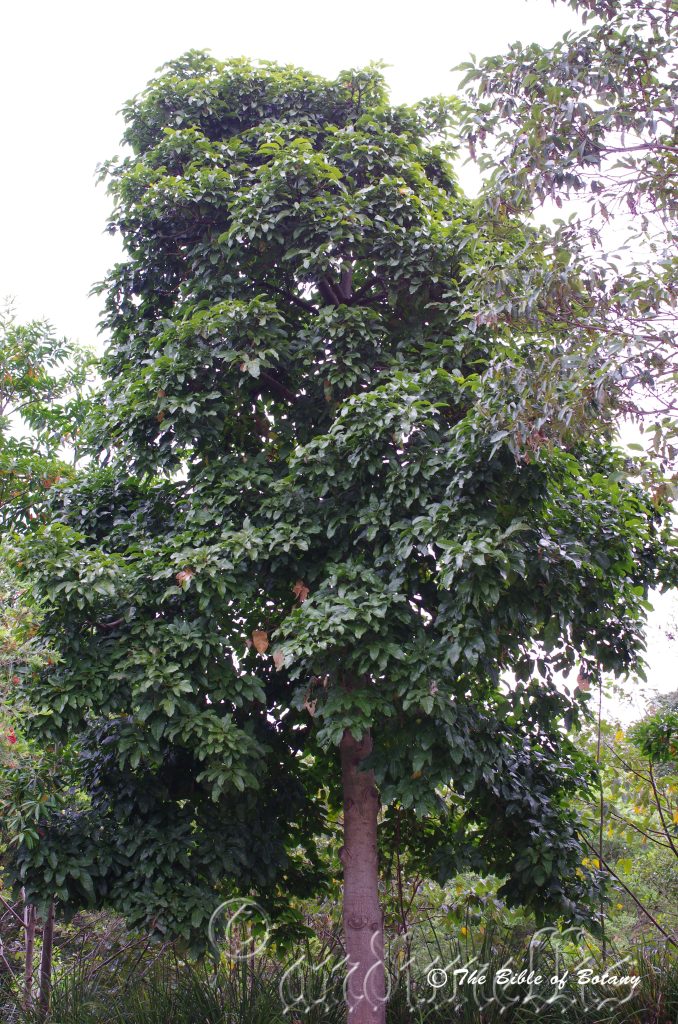
Brookside Qld.
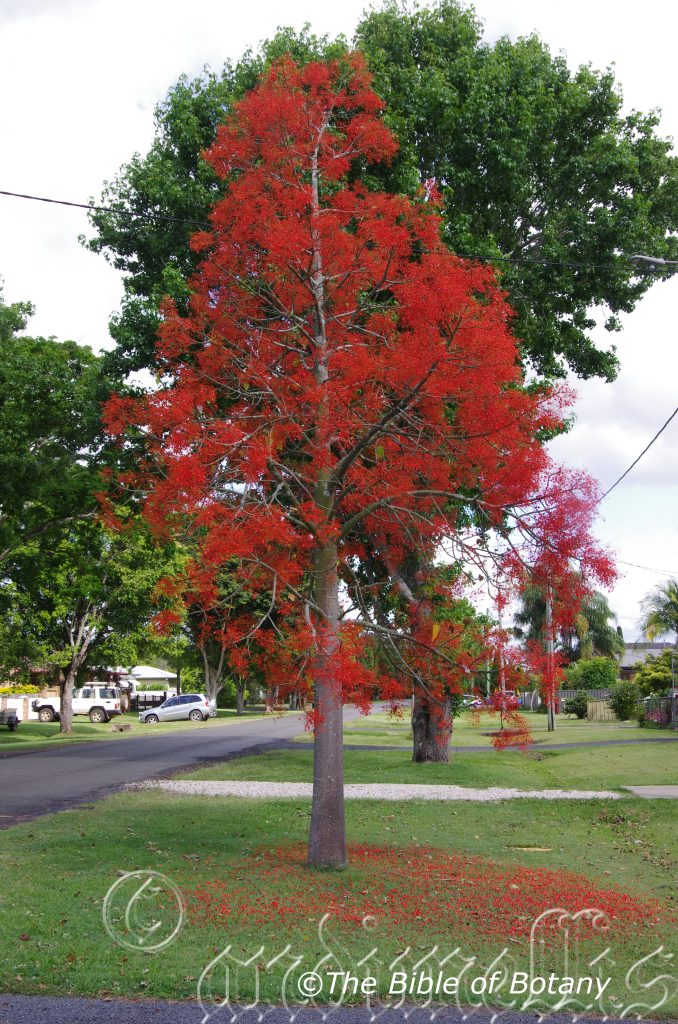
Grafton NSW
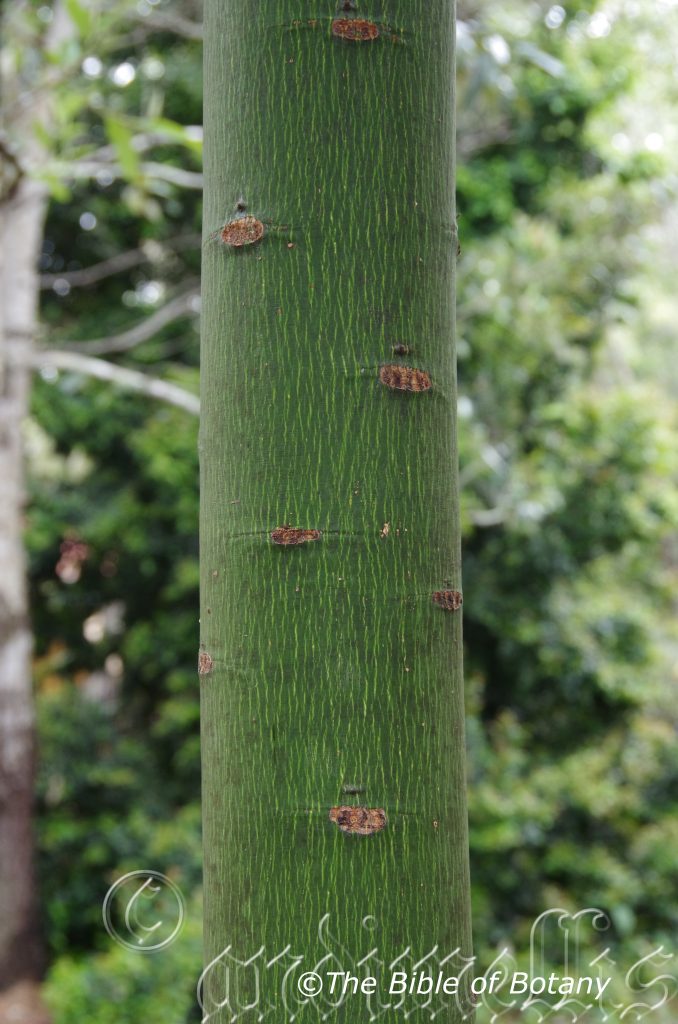
Author’s Garden The Pinnacles NSW
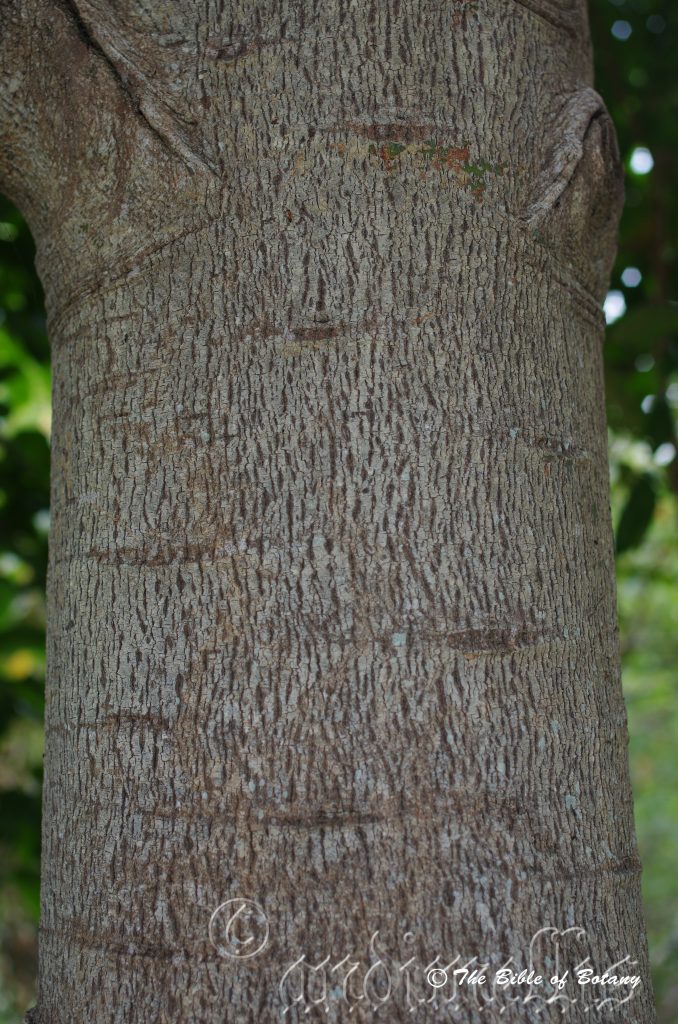
Brookside Qld.

Brookside Qld.
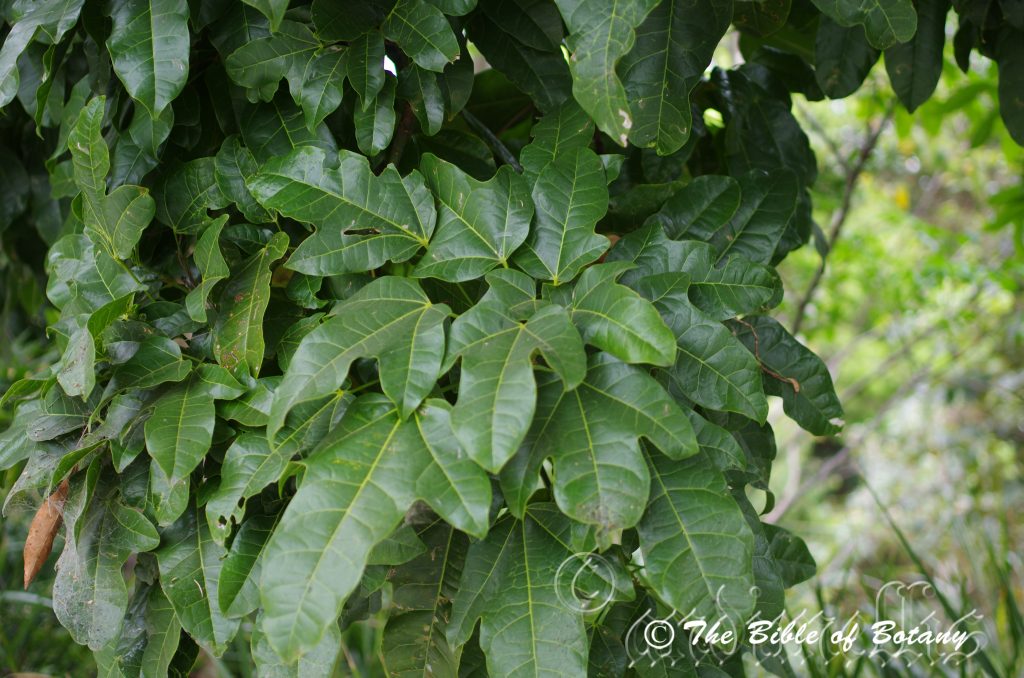
Brookside Qld.

Brookside Qld.

Author’s Garden The Pinnacles NSW
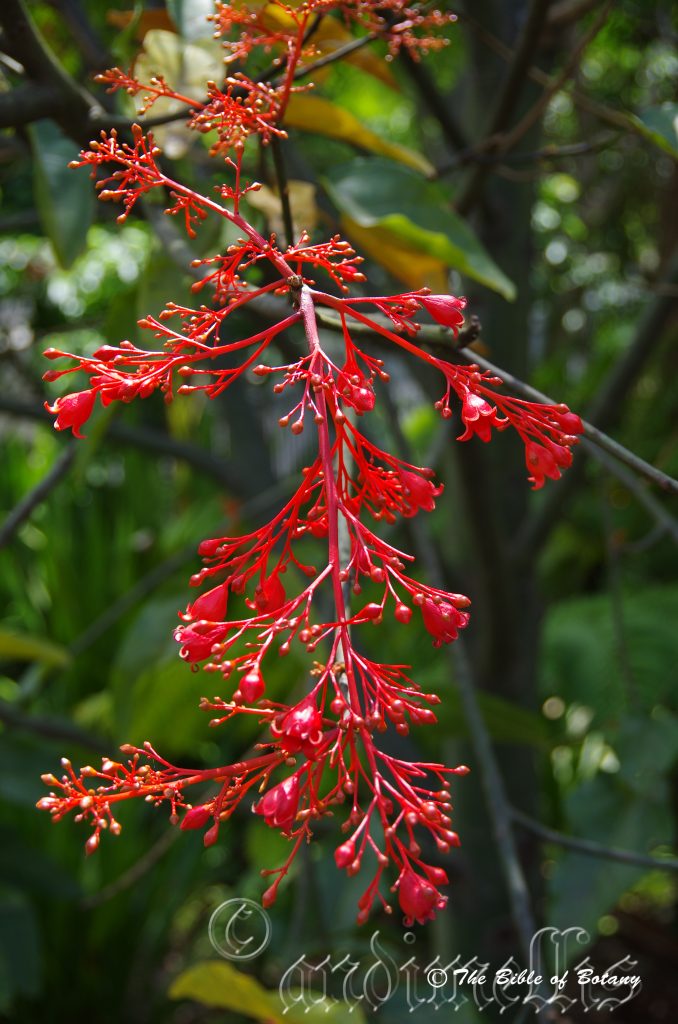
Roma Street Floral Garden Brisbane Qld

Grafton NSW
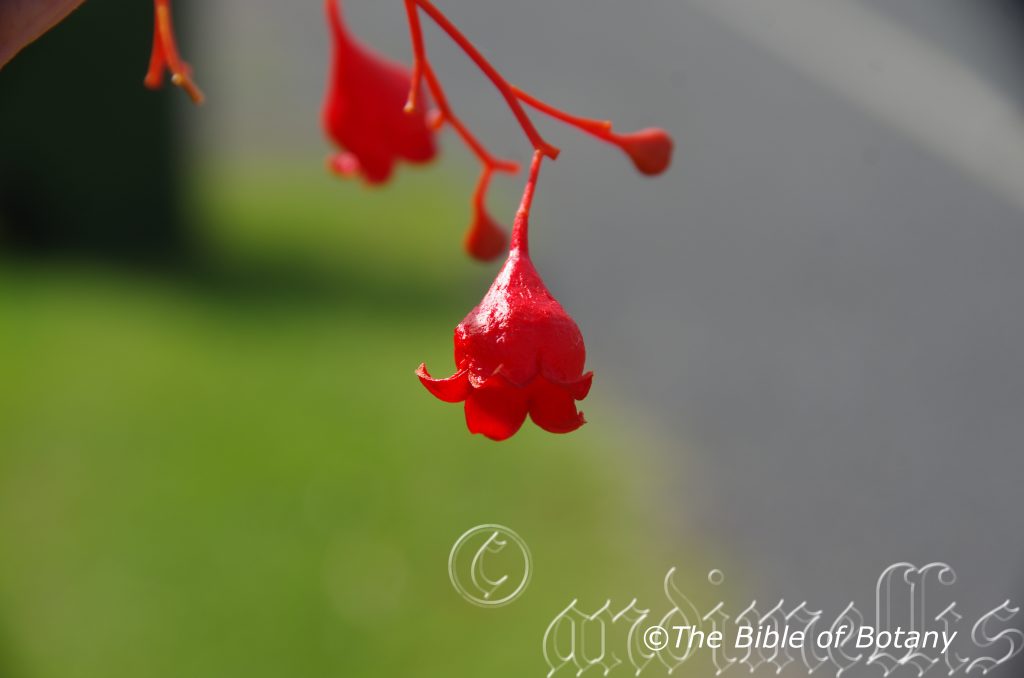
Grafton NSW
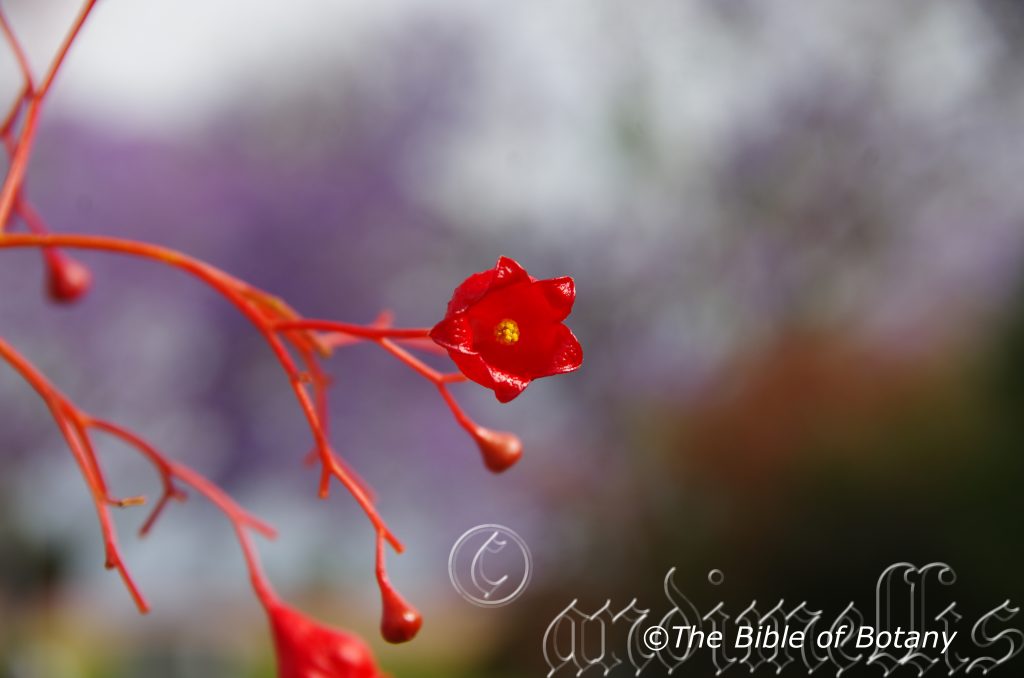
Grafton NSW
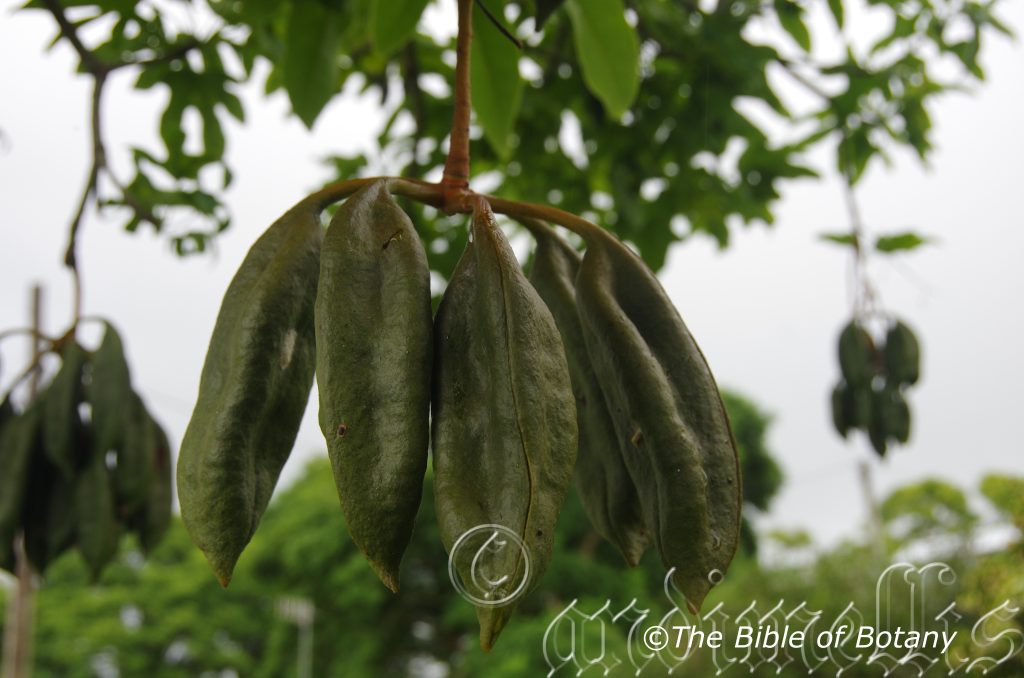
Grafton NSW
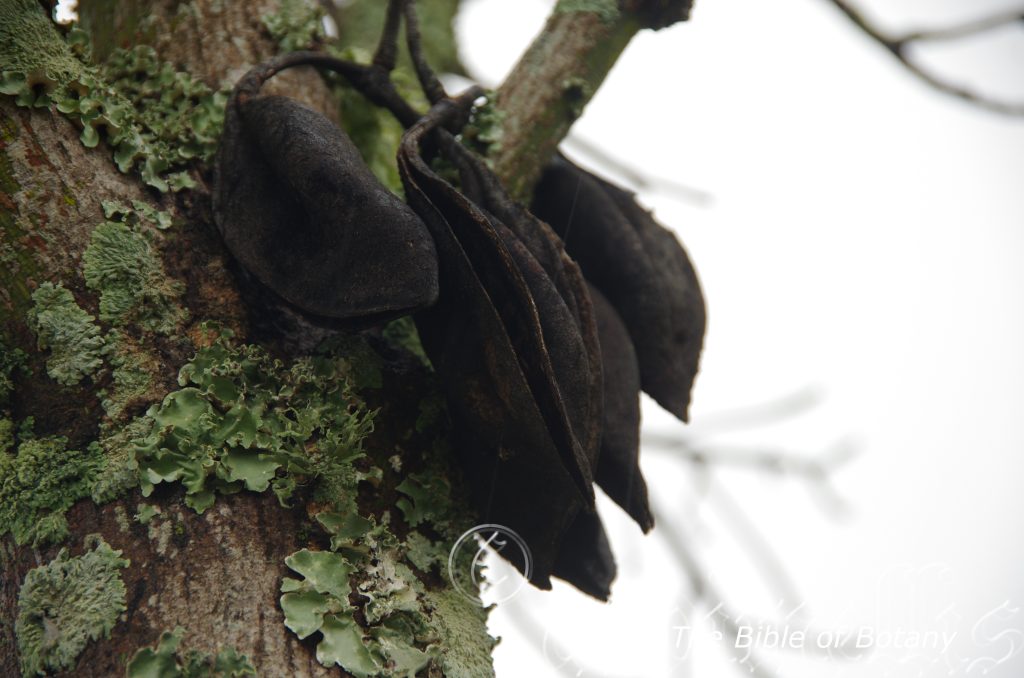
Grafton NSW
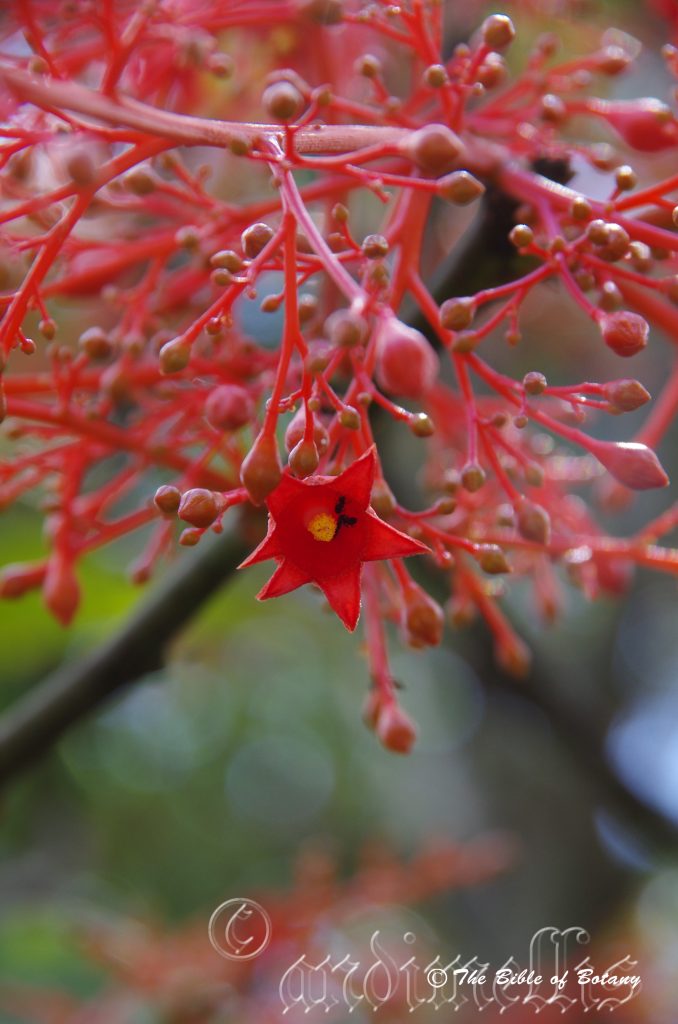
Roma Street Floral Garden Brisbane Qld
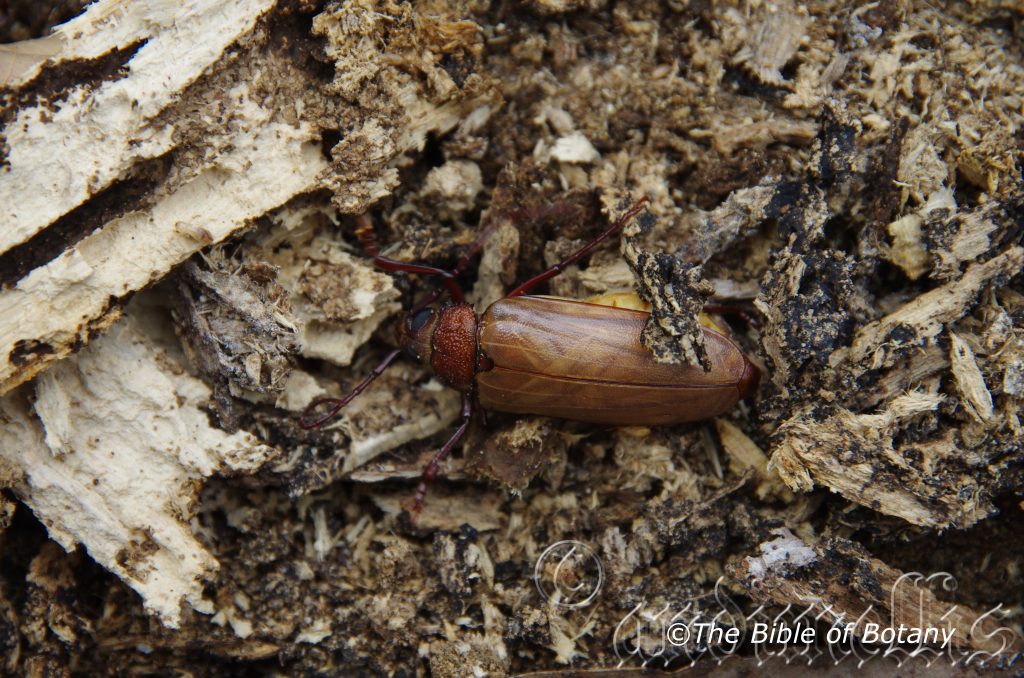
Author’s Garden The Pinnacles NSW
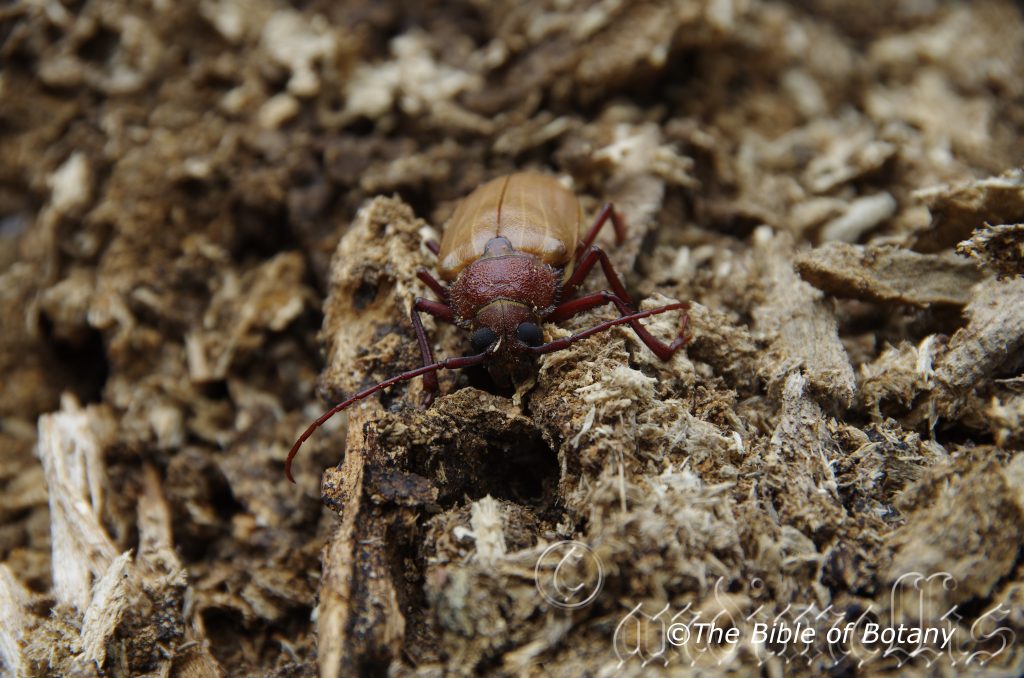
Author’s Garden The Pinnacles NSW
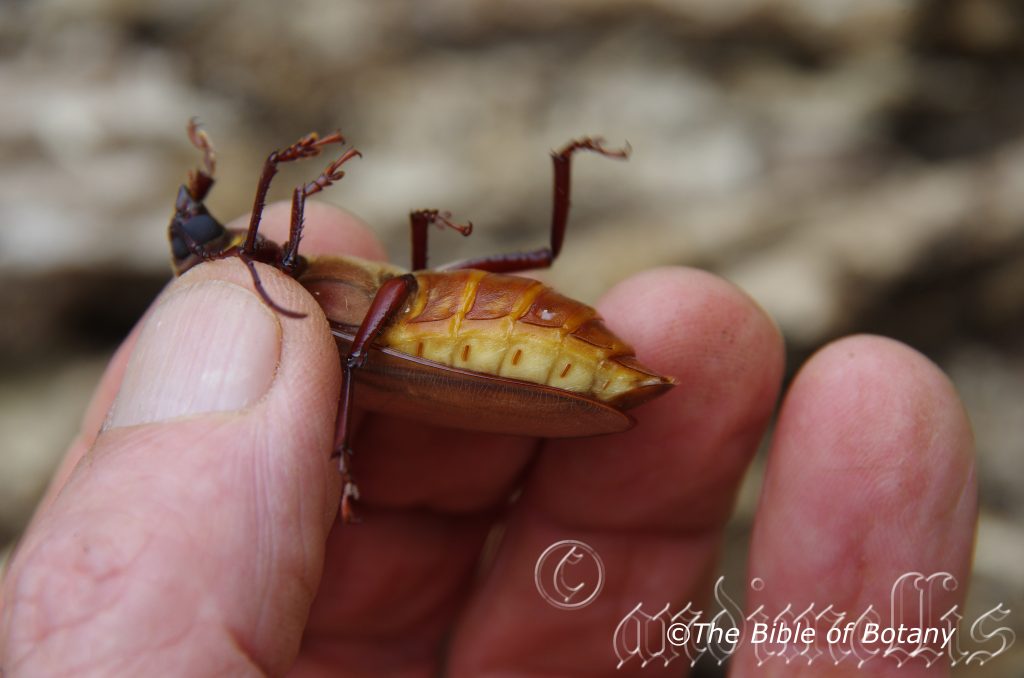
Author’s Garden The Pinnacles NSW
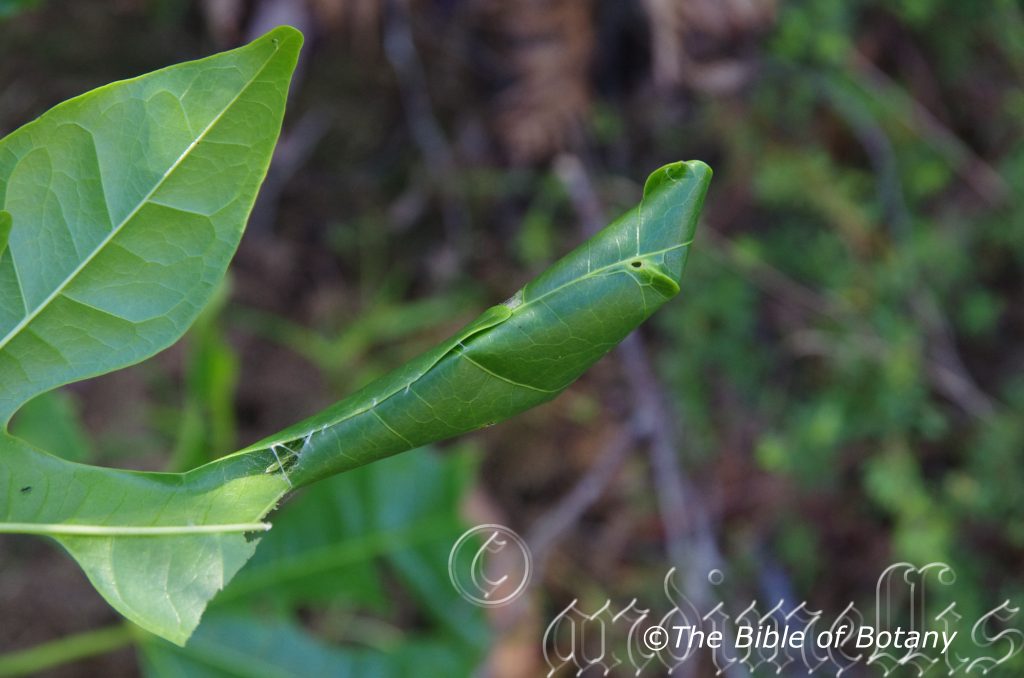
Author’s Garden The Pinnacles NSW

Author’s Garden The Pinnacles NSW
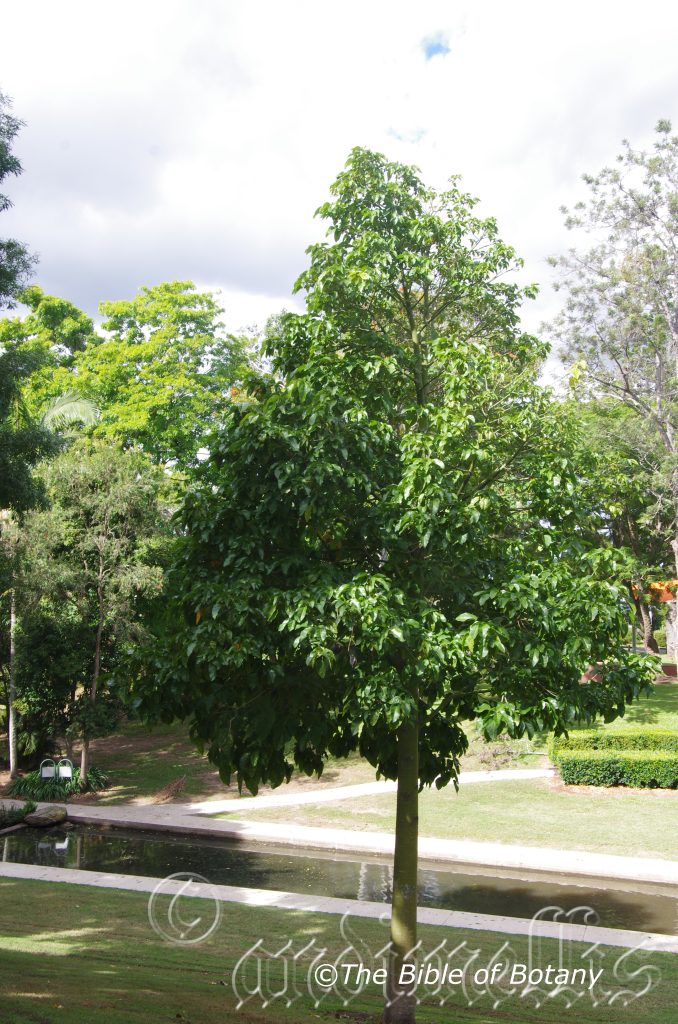
Grafton NSW
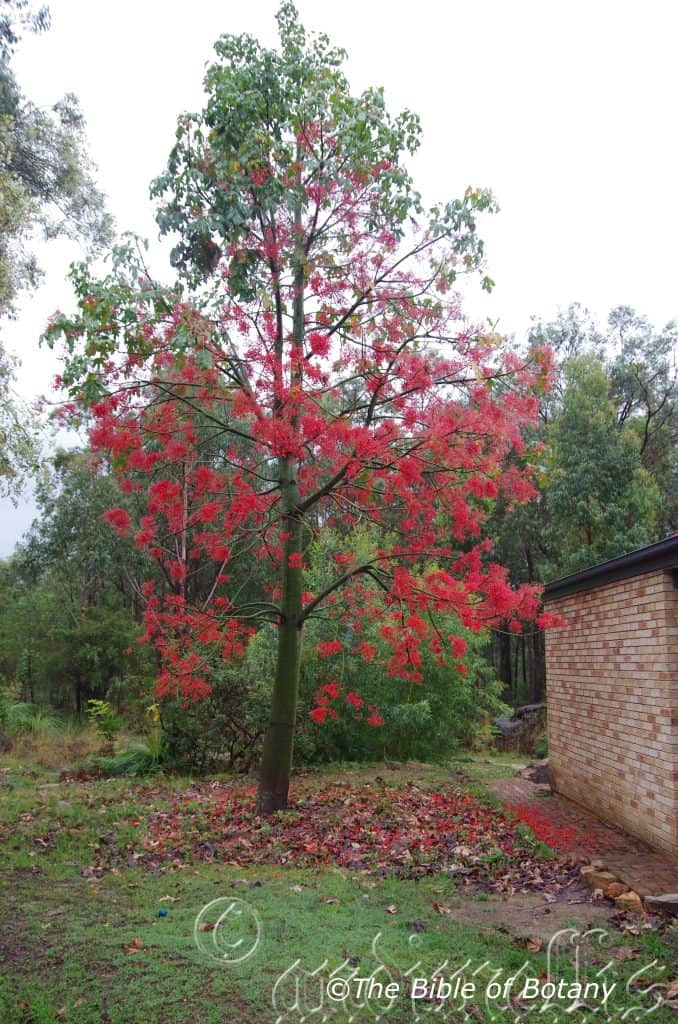
Author’s Garden The Pinnacles NSW
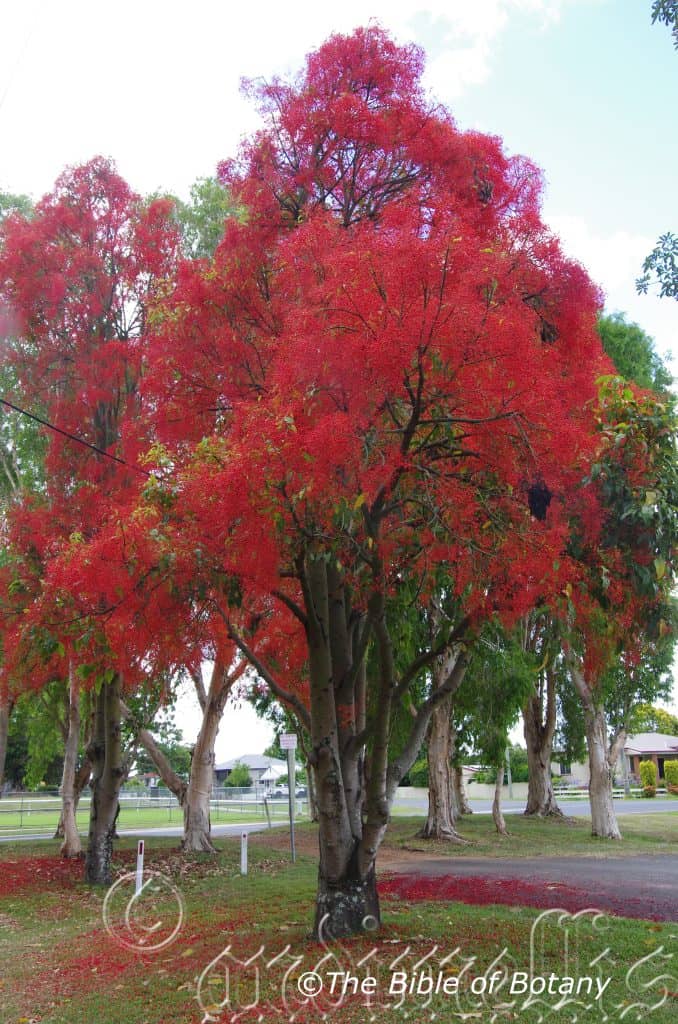
Grafton NSW
Brachychiton acerifolius
Classification:
Class: Rosids
Order: Malvales
Family: Malvacea
Genus: From Brachus, which is Ancient Greek for short and Khiton, which is Ancient Greek for a tunic or long dress worn born women. It refers to the flower’s bracts draping around the flowers similar to a short tunic.
Specie: From Acer, which is Latin for the Maple tree and Folius, which is Latin for foliage. It refers to structures or organs usually the leaves, which resemble the exotic maple tree.
Common Name: Flame Tree or Illawarra Flame Tree.
In the Gumbaynggirr Aboriginal language it is known as Baagambin.
Distribution:
Brachychiton acerifolius is found south from the Iron Range National Park in far north Queensland to the Shoalhaven River in south eastern New South Wales. It usually grows from on the Great Dividing Range to the coast.
https://avh.ala.org.au/occurrences/search?taxa=Brachychiton+acerifolius#tab_mapView
Habitat Aspect Climate:
Brachychiton acerifolius grows in full sun in dry rainforests. It is never a dominant species where it is found. The altitude ranges from 5 meters ASL to 950 meters ASL.
The temperatures range from minus 2 degrees in August to 35 degrees in January.
The rainfall varies from lows of 600mm to an average of 2000mm annually.
Soil Requirements:
Brachychiton acerifolius usually grows on sandy loams to heavy clays or at times stony or gravelly soils. The pH ranges from 5.5pH to 7.5pH. It does not tolerate water logged soils. Non saline soils to moderately saline soils are tolerated.
Height & Spread:
Wild Plants:30m x 8m to 40m x 10m.
Characteristics:
The trunk of Brachychiton acerifolius tree is straight and often not branching until a fifth of its height is attained. The trunks are sparsely fissured longitudinally and are pale grey-brown for the lower third to half of the bole especially where the trees have plenty of sunlight. The upper section of the trunk and young branches and branchlets are grass green to deep green. The trunk is glabrous with resinous bumps.
The leaves of Brachychiton acerifolius are variable being simple elliptical, ovate or semi palmate to palmate with 3 to 7 shallow lobes. Adult leaves are entire on mature trees, whereas juvenile trees have deeper lobes on the leaves. They measure 100mm to 200mm in length by 50mm to 85mm on mature trees and measure 100mm to 200mm in length by 100mm to 180mm in width on juvenile trees. The bases are truncate to round while the apexes are acuminate. The concolourous laminas are pale glossy, grass green and glabrous. The margins are entire. The mid vein is prominent on the lower lamina and clearly visible on the upper lamina. Petioles are 10mm to 20mm long.
Brachychiton acerifolius is partially to wholly deciduous towards the end of the dry season in late winter. In good seasons the trees may retain all the previous season’s foliage.
The inflorescences of Brachychiton acerifolius’s are panicles born from the terminals. The bright red to scarlet-red campulate flowers have 5 lobes. The corolla measure 12mm to 20 mm in length by 10mm to 16mm in diameter. The acute lobes measure 7mm to 10mm in length. The corolla and lobes are glabrous to sparsely covered in short red stellate hairs externally and sparsely covered in short red puberulent hairs internally. The pedicles measure 10mm to 20mm in length and are bent in the middle.
The flowering too is variable but is best when winters are cooler and drier. Flowering even with adjacent trees is variable but usually commences after the first spring storms in late October to late November.
Follicles are deep brown glabrous on the outside and pale tan internally. They are 80mm to 120mm in length by 35mm to 40mm in width and hang onto the tree for many months. The peduncles measure 55mm to 80mm in length.
There are 2 to 20 seeds in each follicle have an endocarp which is densely covered in rusty, yellow or golden brown hispid and tomentose hairs. They measure 10mm to 12mm in diameter by 5mm to 7mm in width.
The seeds are round though somewhat flattened at the poles black to dark brown measuring 10mm to 12mm in diameter by 5mm to 7mm in width. Seeds can be collected from March through to May.
Wildlife:
Because of its fast growth and large somewhat aggressive root structure Brachychiton acerifolius is a very good tree for erosion control in sand and sandy loams. The tree still allows other plants to grow beneath it particularly native grasses and shrubs which prefer drier conditions.
The trees make excellent host plants for all epiphytic plants that can tolerate a lot of sun when the trees are deciduous. Those particularly suited are the elk horn, Platycerium bifurcatum and Pyrrosia rupestre.
Several specie of butterflies use the tree as their host including the common Aeroplane Phaedyma shepherdi, Tailed Emporer Polyura sempronius, common blue penciled blue Candialides absimilis, and the hairy line blue Erysichton lineate.
www. saveourwaterwaysnow. com. Au
The tier leaf curl moth Dichocrocis clytusalis is often seen on the plants during the Autumn months.
The seeds are often attacked by borers, weevils and grubs for several successive years and for no apparent reason with the following year having bumper crops without a seed being touched. Dead wood is consumed by the large borer Agrianome spinicollis.
Cultivation:
It would make an excellent good fire retardant medium deciduous tree.
* Fire retardant plants act as radiant heat screens and absorb more heat from an approaching fire without burning.
* Fire retardant trees are able reduce wind speed near a house or out buildings.
* Fire retardant also trap embers and sparks carried by the wind.
* Fire retardant ground covers are able to catch burning embers without catching fire themselves, and also slow the travel of a fire through debris and litter on the ground.
The Woolongong City Council has an excellent PDF on its Local Native Garden. 02) 4227 7111 or log onto
This is a beautiful tree that is relative fast growing in medium to larger gardens. To witness its full beauty you need to visit Grafton during the jacaranda festival to witness the purple Jacarandas and scarlet Flame trees in flower together. The festival is an awesome sight that leaves a lifetime impression.
It will reach its full potential of 20 meters by 10 meters in cultivation in about 15 years but thickening of the trunk will last for many more years when grown in the open. As it is hardy on most soil types it is easy to grow. Keep clear of sewers drains and weak foundations as the roots have a tendency to be somewhat aggressive.
I have used Brachychiton acerifolius because of its large roots, quick growth and vivid red flowers as the staple plant with Cupaniopsis anachariodes in creating my dry rainforest on pure sand at the Pinnacles and fire retardant qualities. Semi deciduous to fully deciduous in late winter it will let in the late winter warmth and light. The trees are also suitable for epiphytic plants, which can stand a lot of indirect light or even full sun during the late dry season. Larger Stags and elk horns can be attached in 5 years with well grown plants.
It is ideal for along long driveways establishing a dry rainforest or scattered amongst a bush garden to add colour in the tree tops. Planted with smaller yellow flowering Seena species beneath the trees will create a magical display every year.
Propagation:
Seeds: Brachychiton acerifolius seeds require treatment before sowing. Pre-treat by placing the seeds into hot not boiling water. Allow them to soak in the water until it cools. Any seeds that float can be discarded as infertile or already eaten by borers.
Sow into a seed raising mix that is 60mm to 70mm deep and cover the seeds to a depth of 8mm. When the seedlings are 40mm to 60mm tall, prick them out and plant them into 50mm native tubes using a seed raising mix.
Fertilize using Seaweed, fish emulsion or organic chicken pellets soaked in water on an alternate basis. Fertilize every two months until the plants are established then annually in early September or March to maintain health, vitality and better flowering.
Once the seedlings reach 250mm to 300mm in height plant them out into their permanent position. If planting in mass for a brilliant display of colour plant at 8 meters to 10 meter spacing depending on the soil. Use spacing of 8 meters along driveways.
Further Comments from Readers:
“Hi reader, it seems you use The Bible of Botany a lot. That’s great as we have great pleasure in bringing it to you! It’s a little awkward for us to ask, but our first aim is to purchase land approximately 1,600 hectares to link several parcels of N.P. into one at The Pinnacles NSW Australia, but we need your help. We’re not salespeople. We’re amateur botanists who have dedicated over 30 years to saving the environment in a practical way. We depend on donations to reach our goal. If you donate just $5, the price of your coffee this Sunday, We can help to keep the planet alive in a real way and continue to bring you regular updates and features on Australian plants all in one Botanical Bible. Any support is greatly appreciated. Thank you.”
In the spirit of reconciliation we acknowledge the Bundjalung, Gumbaynggirr and Yaegl and all aboriginal nations throughout Australia and their connections to land, sea and community. We pay our respect to their Elders past, present and future for the pleasures we have gained.

Townsville Qld.
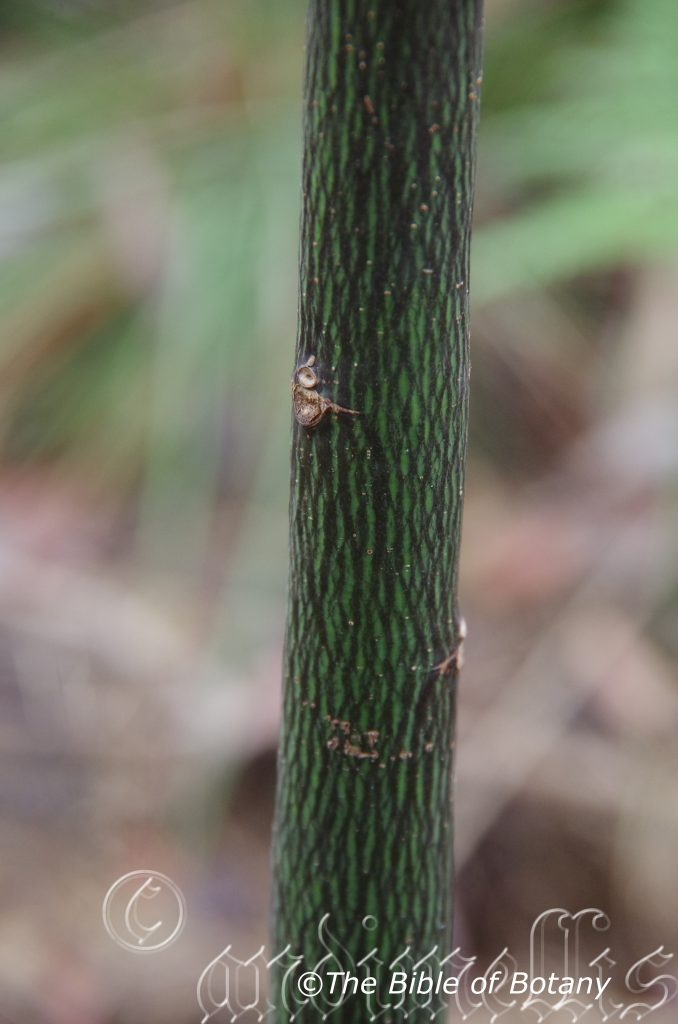
Author’s Garden The Pinnacles NSW
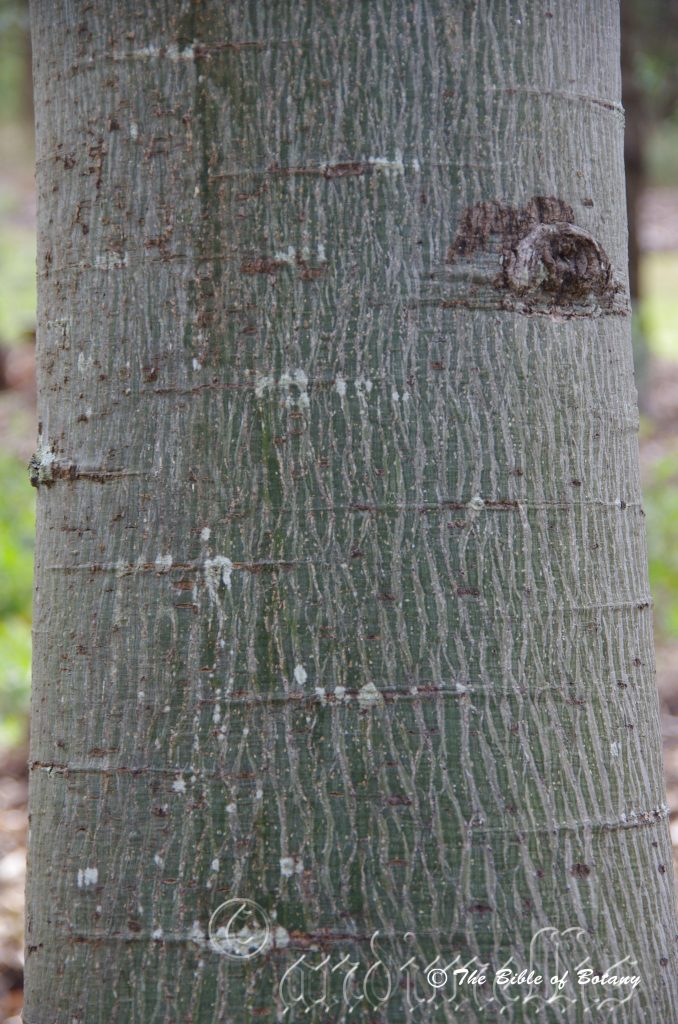
Mount Cootha Botanic Gardens Qld.
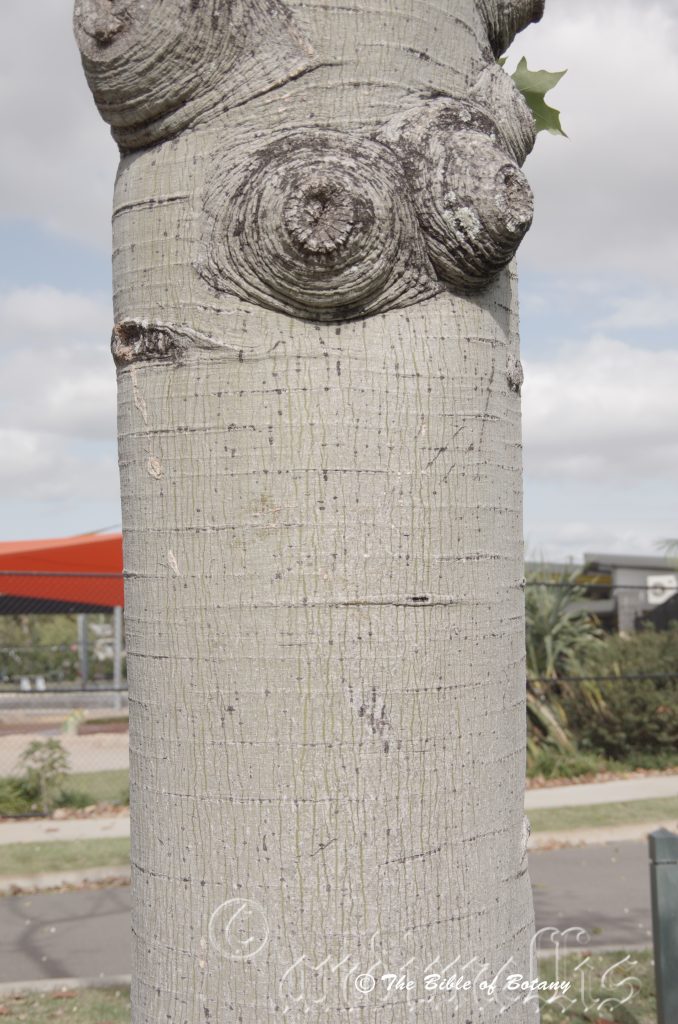
Anderson Gardens Townsville Qld.

Author’s Garden The Pinnacles NSW
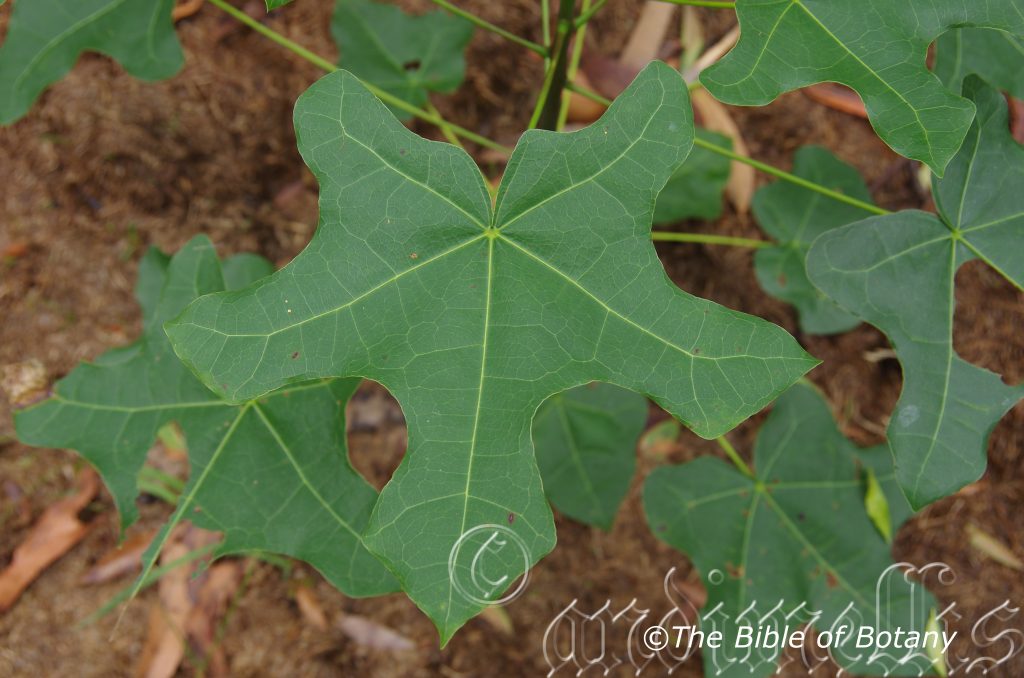
Author’s Garden The Pinnacles NSW
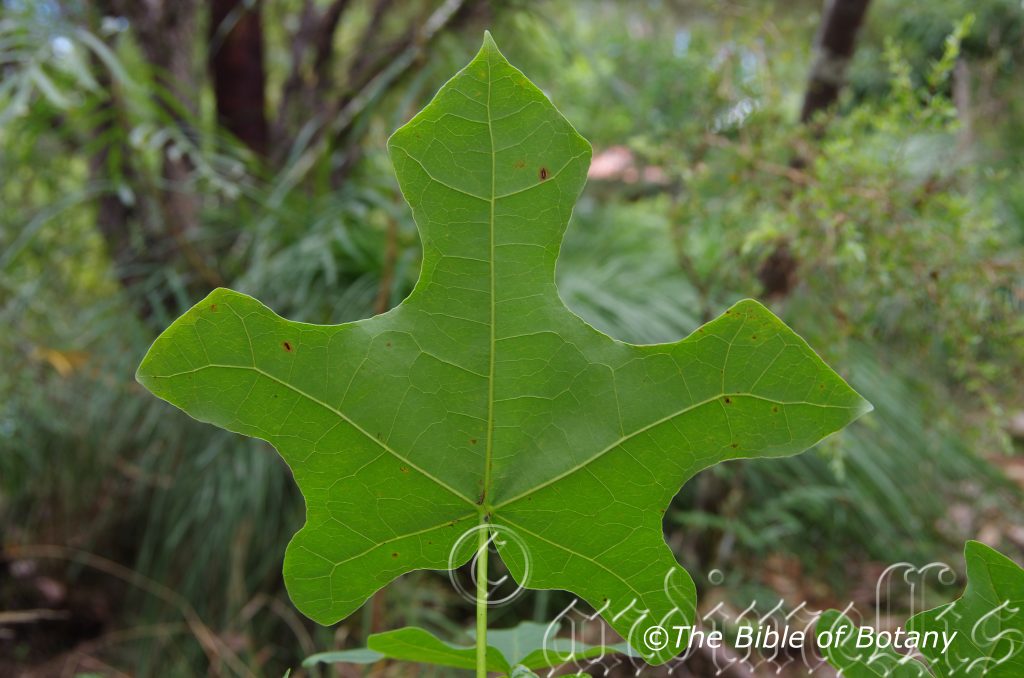
Author’s Garden The Pinnacles NSW

Kangaroo Point Qld.
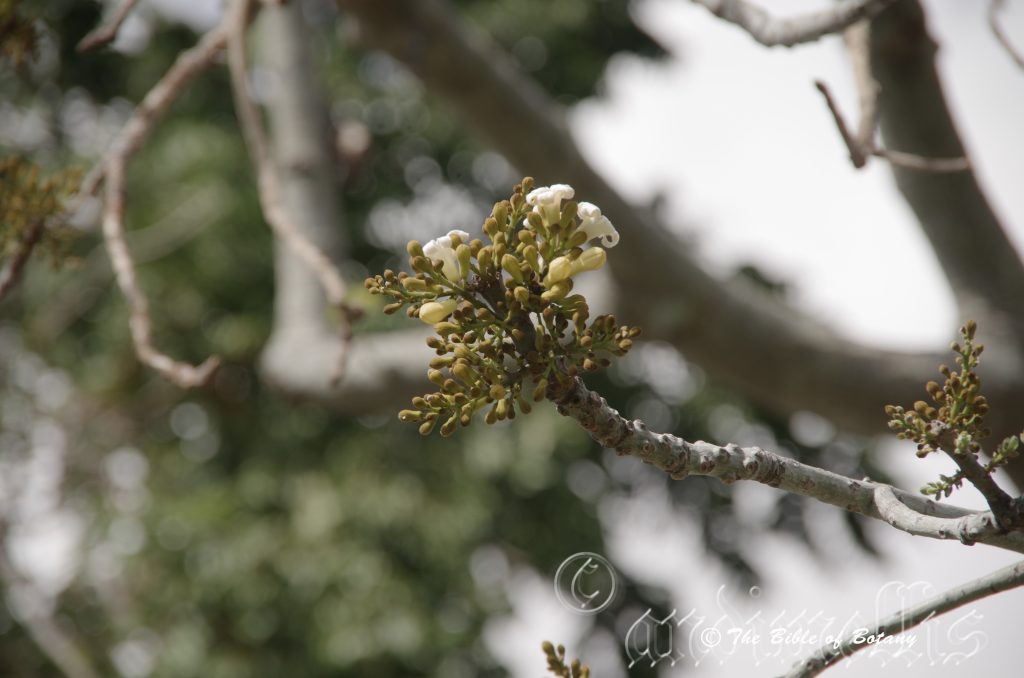
Kangaroo Point Qld.
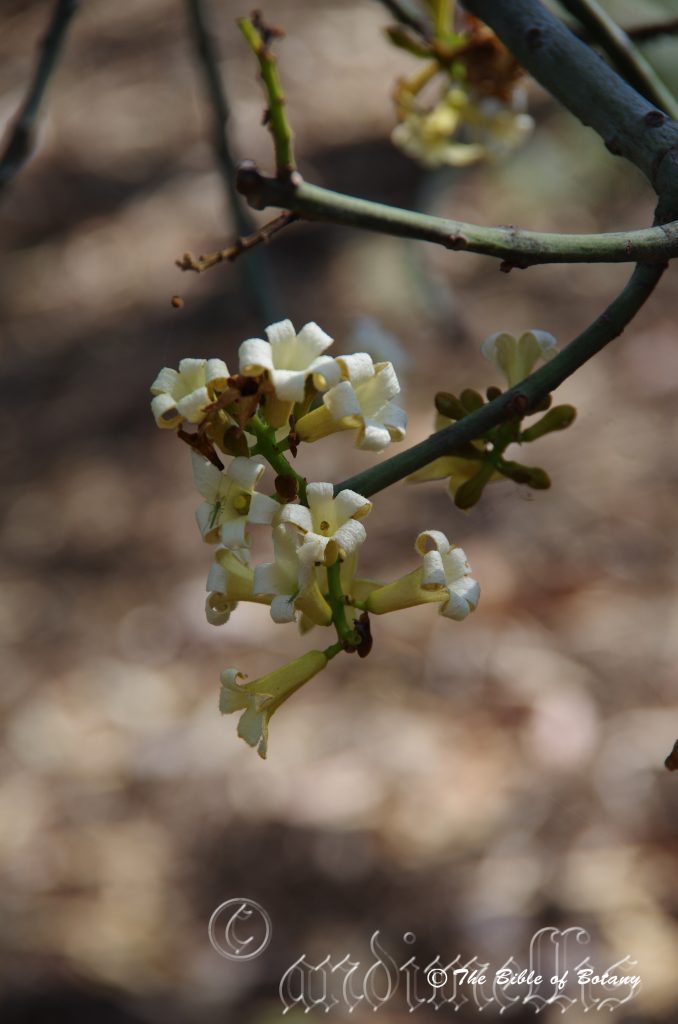
Anderson Gardens Townsville Qld.

Anderson Gardens Townsville Qld.
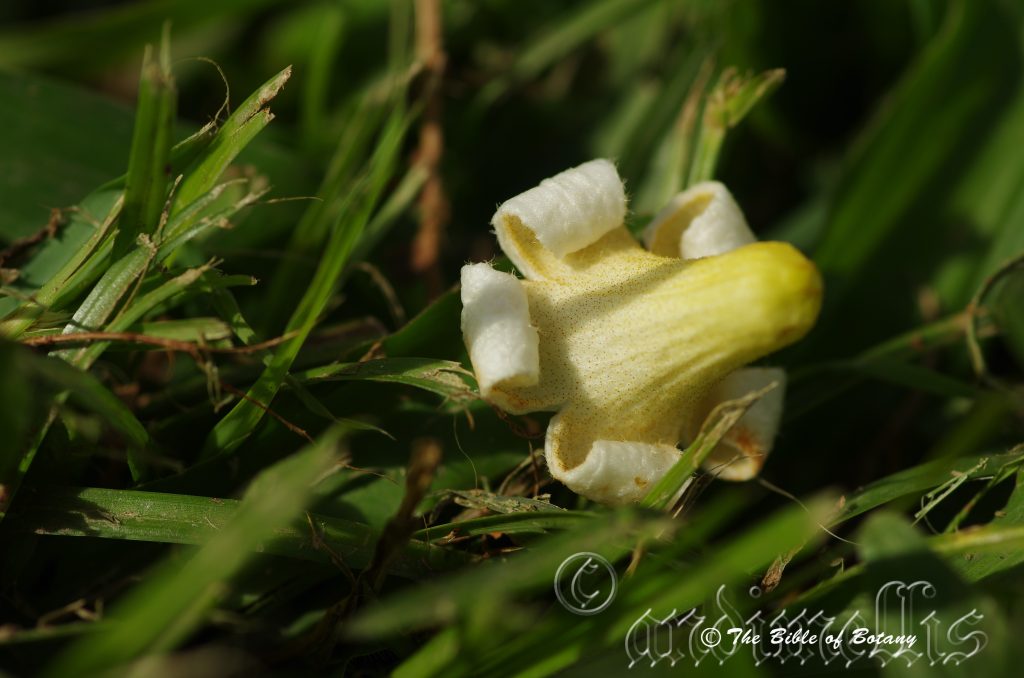
Anderson Gardens Townsville Qld.
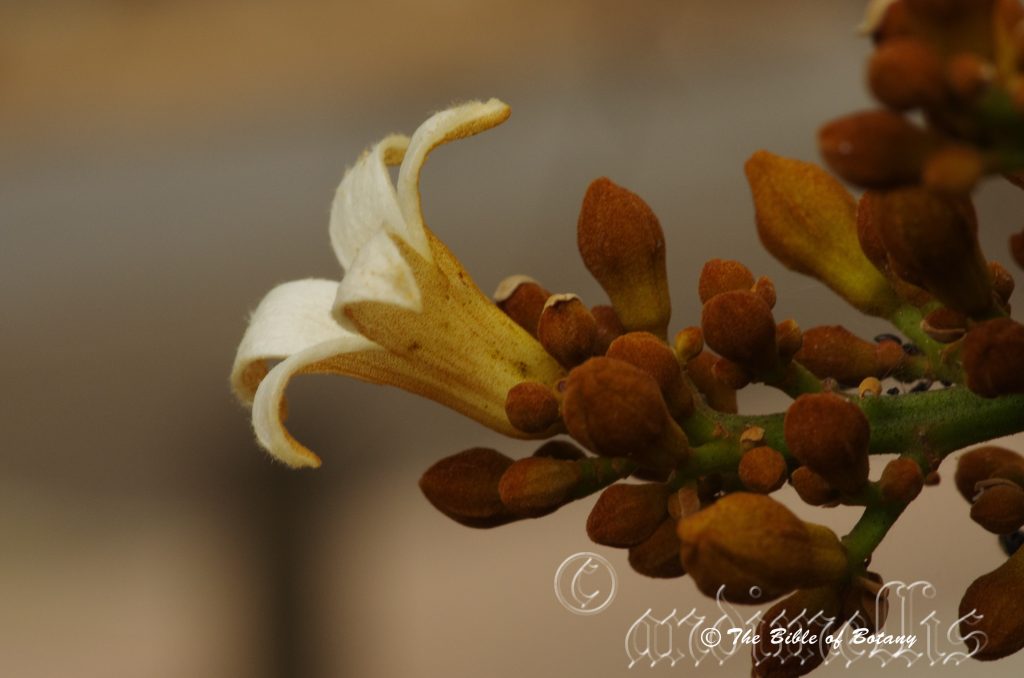
Kangaroo Point Qld.
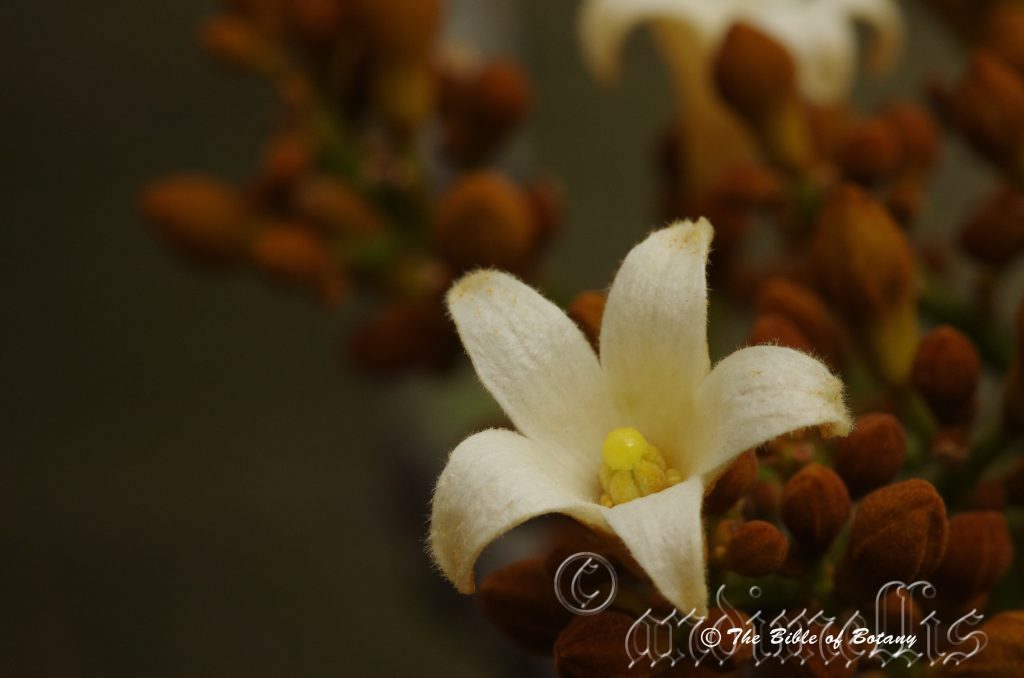
Kangaroo Point Qld.

Kangaroo Point Qld.
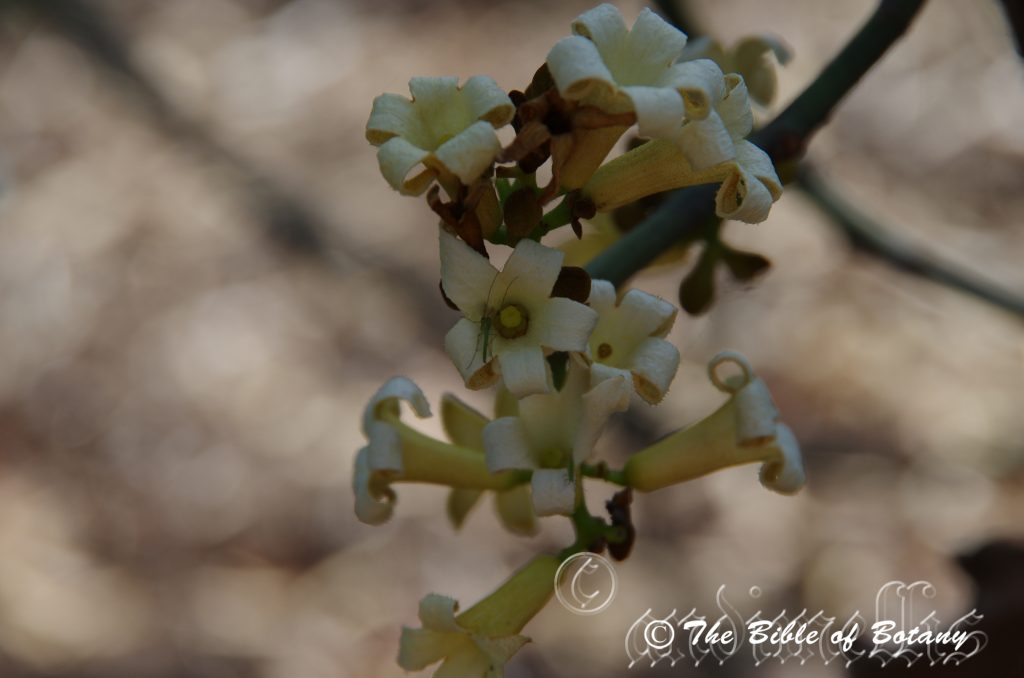
Mount Cootha Botanic Gardens Qld.
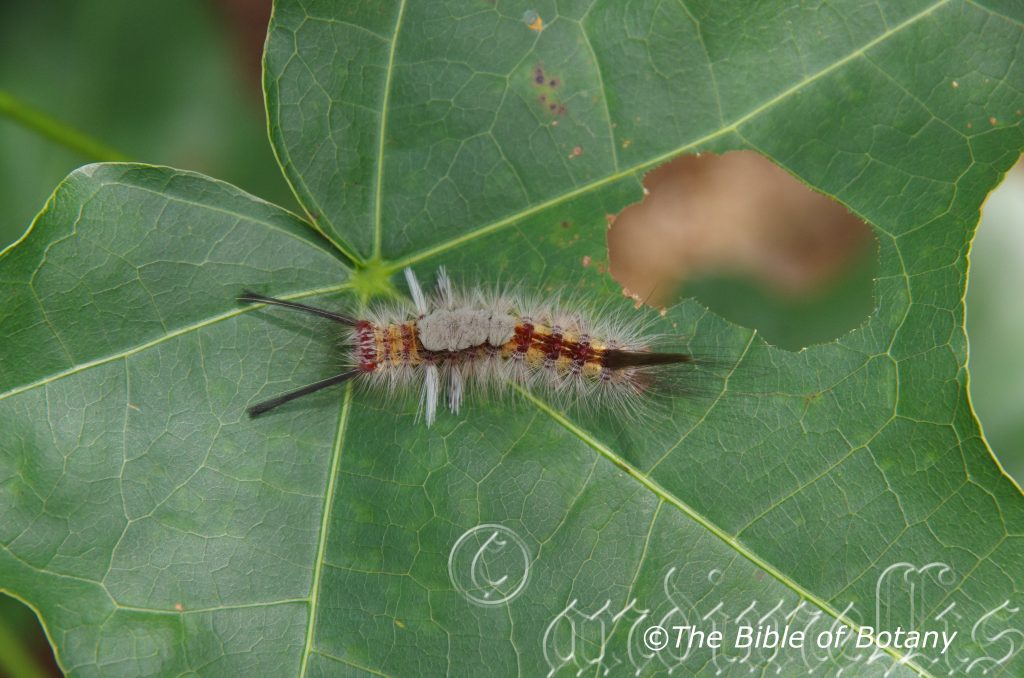
Orgyia sp. Author’s Garden The Pinnacles

Orgyia sp. Author’s Garden The Pinnacles
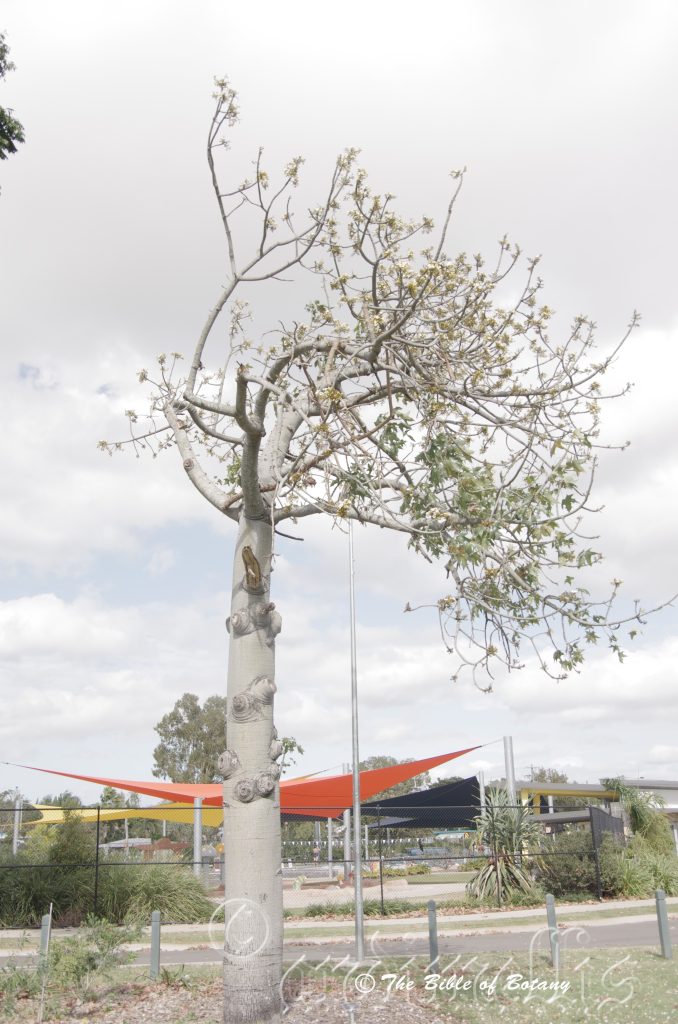
Anderson Garden Townsville Qld.
Bracychiton australis
Classification:
Class: Rosids
Order: Malvales
Family: Malvaceae
Genus: From Brachus, which is Ancient Greek for short and Khiton, which is Ancient Greek for a tunic or long dress worn born women. It refers to the flower’s bracts draping around the flowers similar to a short tunic.
Specie: From Terra Australis, which is Latin for land of the south. It refers to plants, which were first discovered from the land down under.
Common Name: Broad LeafBottle Tree or Large Leaved Bottletree.
Distribution:
Brachychiton australis is found south from the Iron Range National Park on Cape York Peninsular in far north Queensland to Brisbane in far south eastern Queensland. It is mainly found in drier locations either side of the Great Dividing Range.
https://avh.ala.org.au/occurrences/search?taxa=Brachychiton+australis#tab_mapView
Habitat Aspect Climate:
Brachychiton australis grows in full sun in dry rainforests. It is never a dominant species where it is found. The altitude ranges from 280 meters ASL to 780 meters ASL.
The temperatures range from 2 degrees in August to 40 degrees in January.
The rainfall varies from lows of 650mm to an average of 2000mm annually.
Soil Requirements:
Brachychiton australis usually grows on rocky sandy loams to rocky heavy clays. The pH ranges from 5.5pH to 7.5pH. It does not tolerate water logged soils. Non saline soils to moderately saline soils are tolerated.
Height & Spread:
Wild Plants:30m to 40m by 8m x 10m
Characteristics:
The trunk of Brachychiton australis tree is straight and often not branching until a fifth of its eventual height is attained. The trunks are sparsely fissured longitudinally and are pale grey-brown for the lower third to half of the bole especially where the trees have plenty of sunlight. The upper section of the trunk and young branches and branchlets are emerald-green. The trunk is glabrous often with horizontal ridges. The trees are deciduous for a short period between June and August each year.
The leaves of Brachychiton australis are variable being simple elliptical, ovate or semi palmate to palmate with 5 to 7 very shallow lobes. The adult leaves have 5 or 7 deep lobes. They measure 80mm to 180mm in length by 120mm to 210mm in width on mature trees. The petioles are 40mm to 60mm long. The pores in the twig pith are visible to the naked eye. The bases are truncate to shallowly cordate while the apexes of the lobes are very narrow acute. The discolourous laminas are deep glossy, grass green to sea-green and glabrous on the upper laminas while the lower laminas are paler or blueish-green. The margins are usually entire or at times undulating and further shallowly lobed especially near the base of the lobes. The mid veins are prominent on both laminas while the lateral veins are prominent on the upper laminas.
The inflorescence of Brachychiton australis’s is a panicle born from the terminals. The panicles and valvate buds are densely covered in rusty-brown to orange-brown stellate-puberulent hairs. The white corollas and lobes are moderately to densely covered in rusty-brown to orange-brown stellate-puberulent hairs externally and are glabrous internally inside the corolla tube while the lobes are sparsely to densely covered in white hirsute hairs internally. The white to pale creamy yellow campulate flowers have 5 lobes. The corolla measure 15mm to 22mm in length by 10mm to 16mm in diameter. The acute lobes recurve strongly and measure 18mm to 25mm in length. The pedicles measure 2mm to 4mm in length. The floral nectaries are absent from the inside of the perianth tube. The flowers appear when the trees are leafless from July to Early September.
Follicles are deep brown glabrous on the outside while they are covered in reddish tan hirsute hairs internally. They measure 70mm to 110mm in length by 32mm to 42mm in width and hang onto the tree for many months. The peduncles measure 55mm to 80mm in length.
The seeds measure 7.5mm to 10mm in length by 5mm to 6mm in diameter.
There are 2 to 20 seeds in each follicle have an endocarp which is densely covered in rusty, yellow or golden brown hispid and tomentose hairs. They measure 10mm to 12mm in diameter by 5mm to 7mm in width.
Wildlife:
Because of its fast growth and large aggressive root structure Brachychiton australis is a very good tree for erosion control in sand and sandy loams. The tree still allows other plants to grow beneath it particularly grasses and shrubs which prefer drier conditions.
The trees make excellent host plants for all epiphytic plants that can tolerate a lot of sun when the trees are deciduous. Those particularly suited are the elk horn, Platycerium bifurcatum and Pyrrosia rupestre.
The seeds are often attacked by borers, weevils and grubs for several successive years and for no apparent reason with the following year having bumper crops without a seed being touched.
Cultivation:
It would make an excellent good fire retardant medium, deciduous tree.
* Fire retardant plants act as radiant heat screens and absorb more heat from an approaching fire without burning.
* Fire retardant trees are able reduce wind speed near a house or out buildings.
* Fire retardant also trap embers and sparks carried by the wind.
* Fire retardant ground covers are able to catch burning embers without catching fire themselves, and also slow the travel of a fire through debris and litter on the ground.
Brachychiton australis is a beautiful tree that is relative fast growing in the garden. It will reach its full potential of 20 meters to 25 meters by 8 meters to 10 meters in cultivation in about 15 years but thickening of the trunk will take many more years when grown in the open. As it is hardy on most soil types it is easy to grow.
I have used Brachychiton australis because of its large roots, quick growth and masses of white flowers as the staple plant with Cupaniopsis anachariodes and other Brachychiton species in creating my dry rainforest on pure sand at the Pinnacles. It is deciduous in late winter when it will let in late winter warmth and light. The trees are also suitable for all epiphytic plants that can stand a lot of indirect light or even full sun in late winter. Larger Stags and elk horns can be attached in 5 years with well grown plants.
It is an ideal subject for along long driveways establishing a dry rainforest or scattered amongst a bush garden to add colour in the tree tops. Planted with smaller yellow flowering Senna species you will create a magical display every year.
Propagation:
Seeds: Brachychiton australis seeds require treatment before sowing. Pre-treat by placing the seeds into hot not boiling water. Allow them to soak in the water until it cools. Any seeds that float can be discarded as infertile or already eaten by borers.
Sow into a seed raising mix that is 60mm to 70mm deep and cover the seeds to a depth of 8mm. When the seedlings are 40mm to 60mm tall, prick them out and plant them into 50mm native tubes using a seed raising mix.
Fertilize using Seaweed, fish emulsion or organic chicken pellets soaked in water on an alternate basis. Fertilize every two months until the plants are established then annually in early September or March to maintain health, vitality and better flowering.
Once the seedlings reach 250mm to 300mm in height plant them out into their permanent position. If planting in mass for a brilliant display of colour plant at 8 meters to 10 meter spacing depending on the soil. Use spacing of 8 meters along driveways.
Further Comments from Readers:
“Hi reader, it seems you use The Bible of Botany a lot. That’s great as we have great pleasure in bringing it to you! It’s a little awkward for us to ask, but our first aim is to purchase land approximately 1,600 hectares to link several parcels of N.P. into one at The Pinnacles NSW Australia, but we need your help. We’re not salespeople. We’re amateur botanists who have dedicated over 30 years to saving the environment in a practical way. We depend on donations to reach our goal. If you donate just $5, the price of your coffee this Sunday, We can help to keep the planet alive in a real way and continue to bring you regular updates and features on Australian plants all in one Botanical Bible. Any support is greatly appreciated. Thank you.”
In the spirit of reconciliation we acknowledge the Bundjalung, Gumbaynggirr and Yaegl and all aboriginal nations throughout Australia and their connections to land, sea and community. We pay our respect to their Elders past, present and future for the pleasures we have gained.
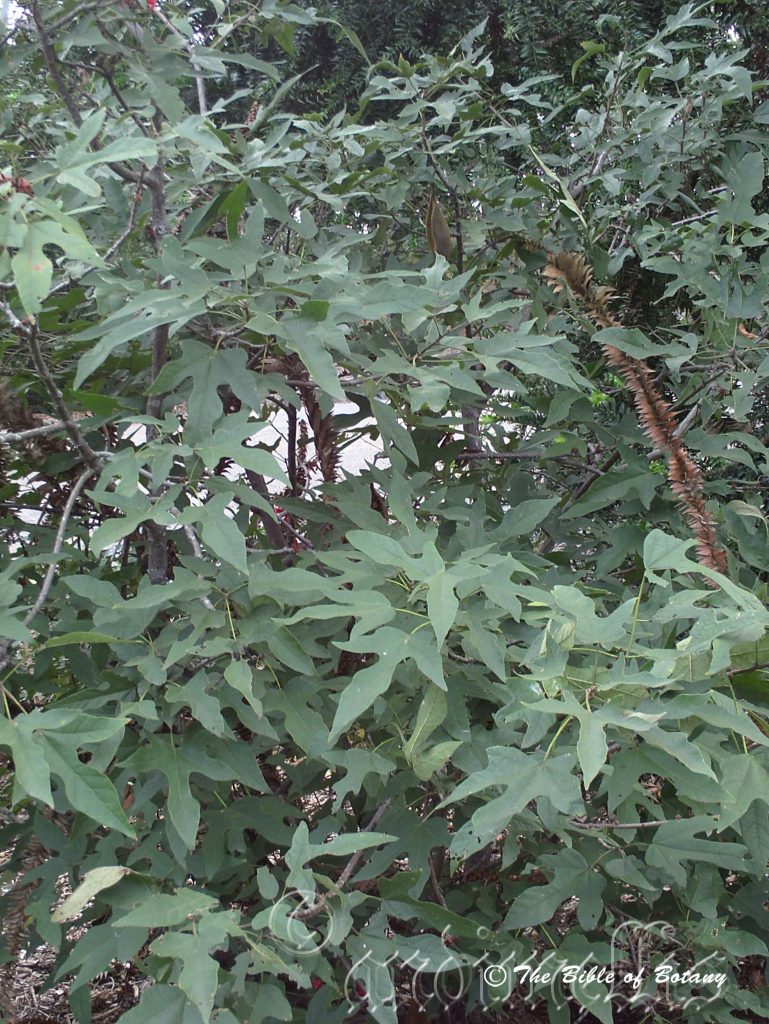
Carbrook Qld.
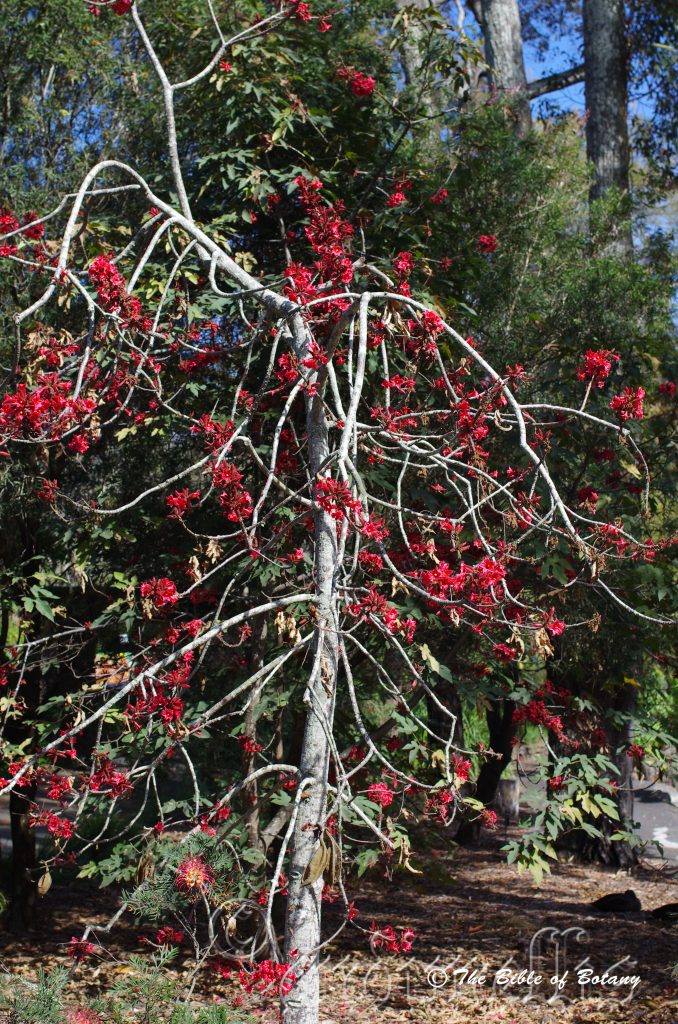
Mount Cootha Botanic Gardens Qld.
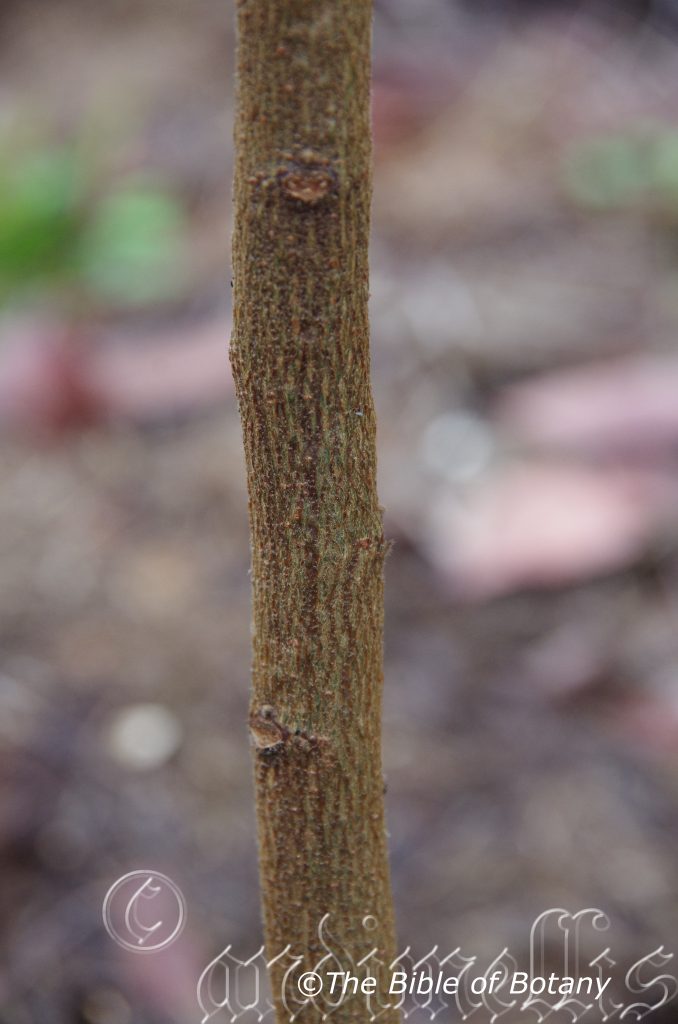
Author’s Garden The Pinnacles

Mount Cootha Botanic Gardens Qld.
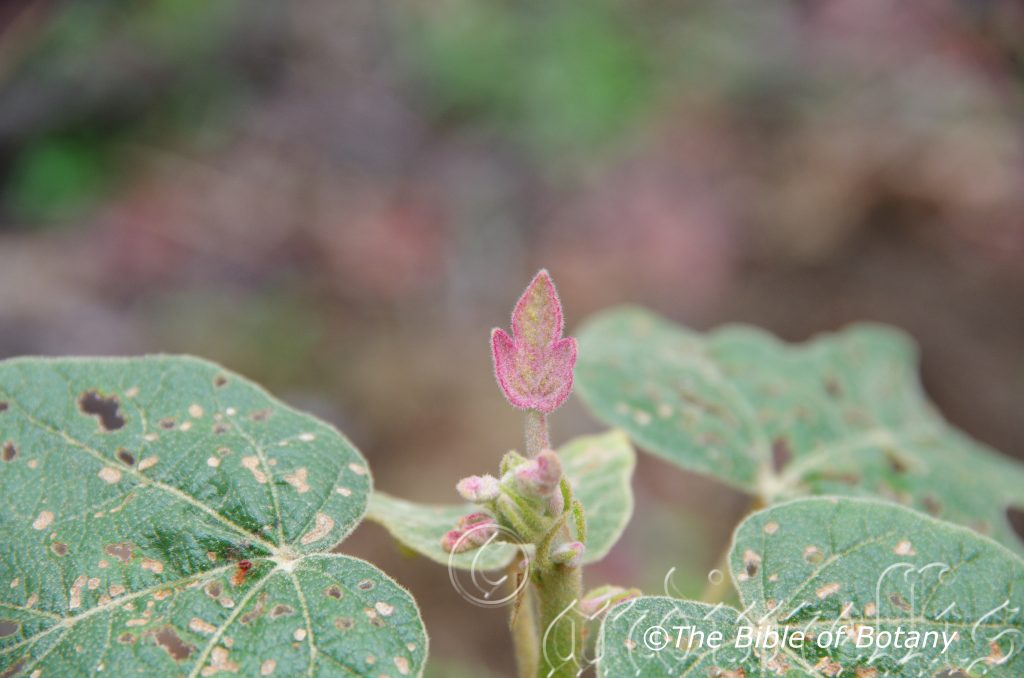
Author’s Garden The Pinnacles
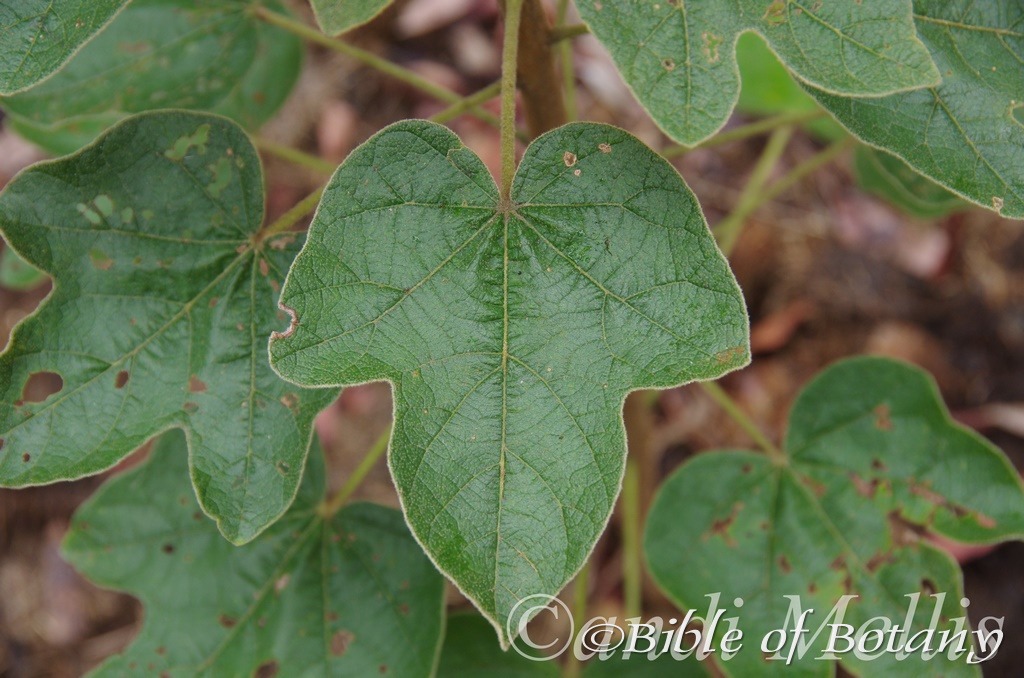
Author’s Garden The Pinnacles NSW

Author’s Garden The Pinnacles NSW
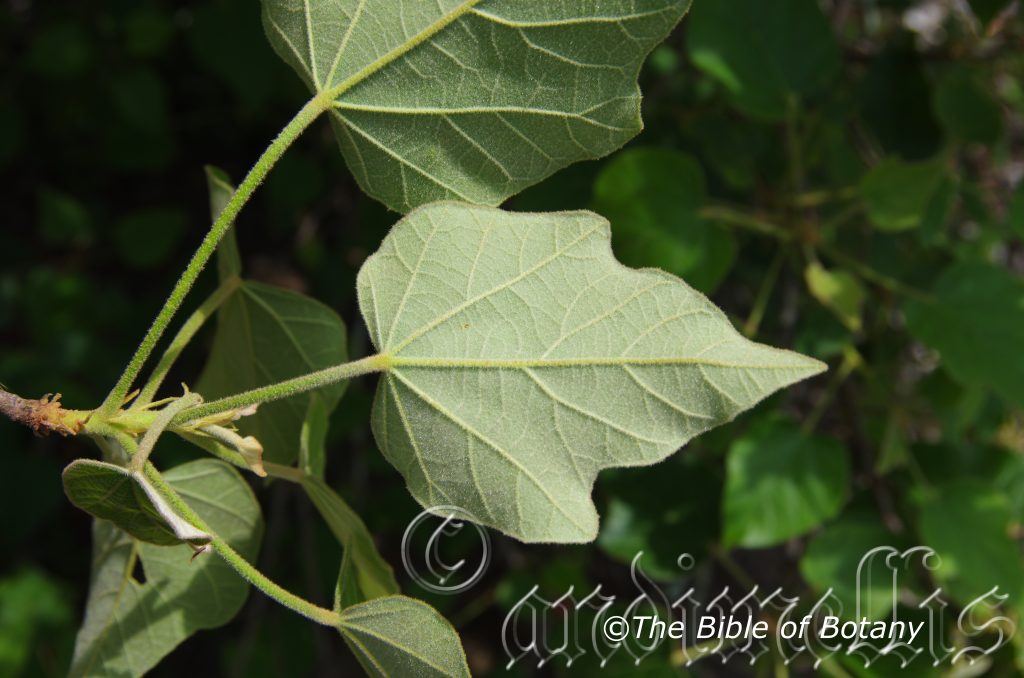
Author’s Garden The Pinnacles NSW
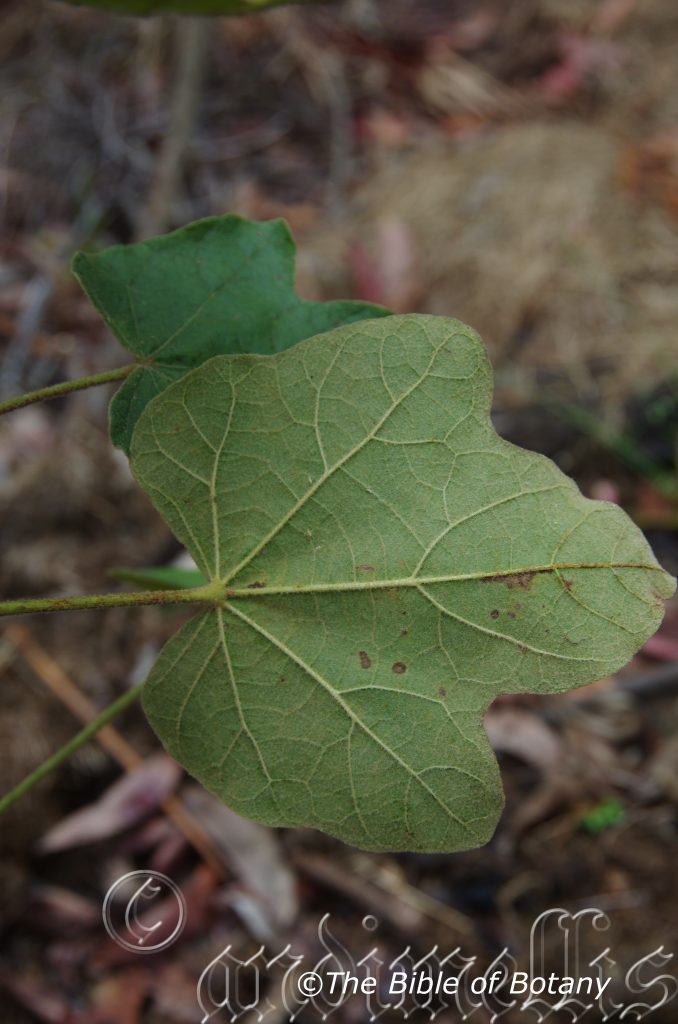

Author’s Garden The Pinnacles

Author’s Garden The Pinnacles NSW

Author’s Garden The Pinnacles NSW
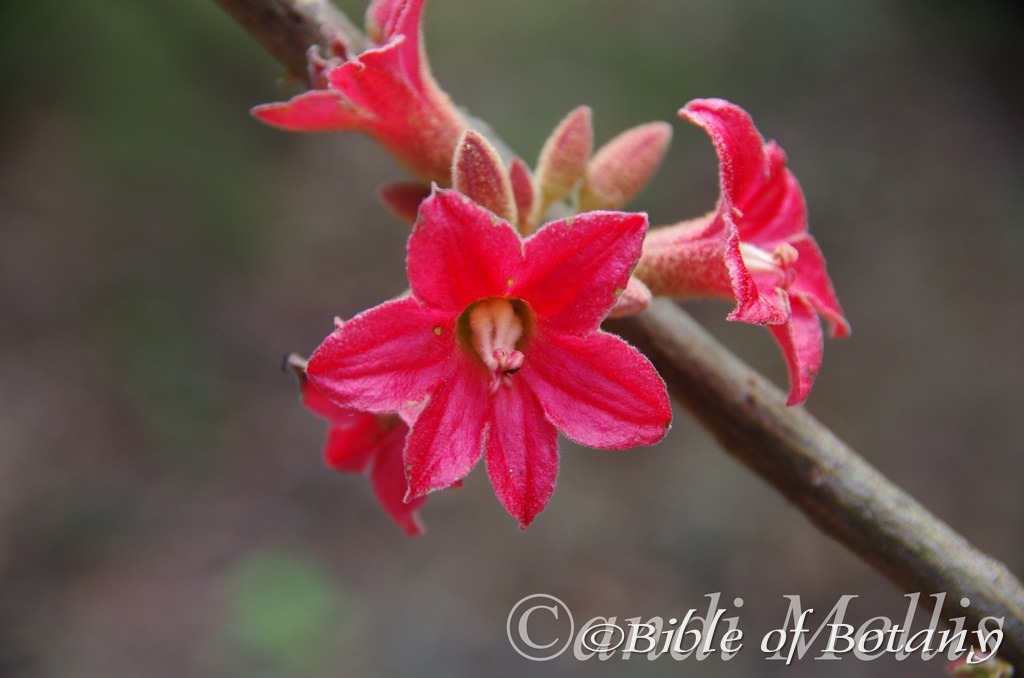
Author’s Garden The Pinnacles NSW
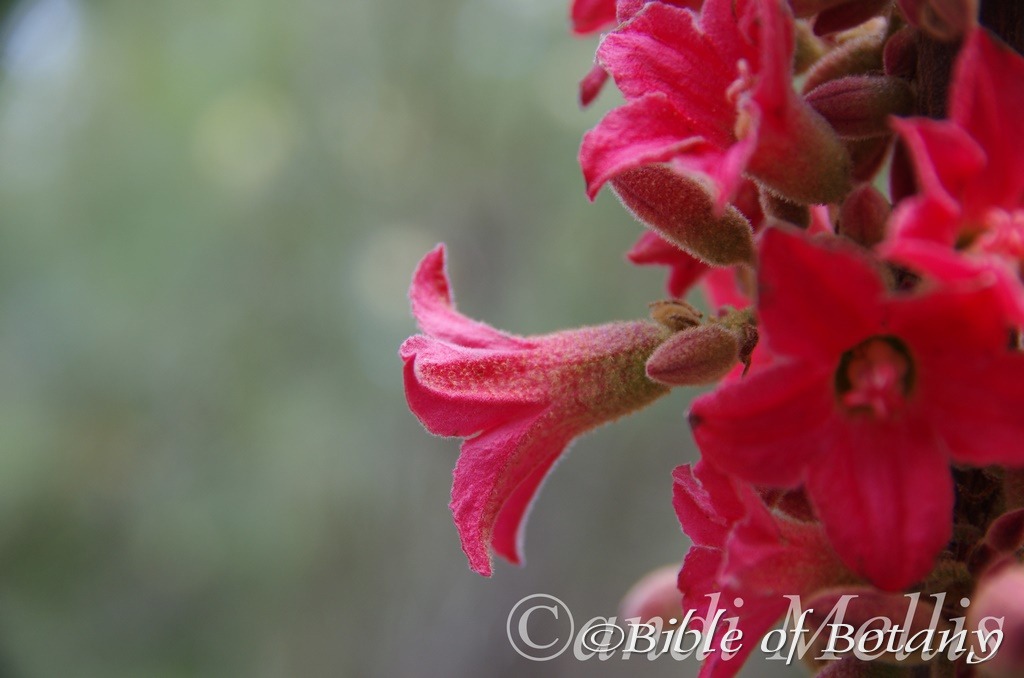
Author’s Garden The Pinnacles NSW
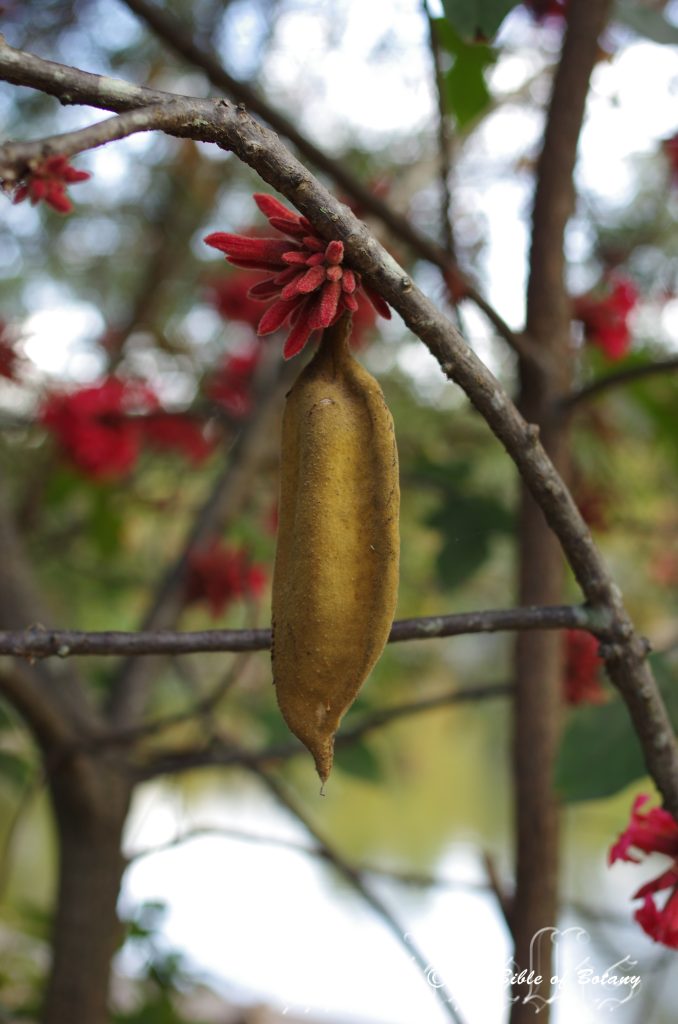
Mount Cootha Botanic Gardens Qld.

Mount Cootha Botanic Gardens Qld.
Brachychiton bidwillii
Classification:
Class: Rosids
Order: Malvales
Family: Malvaceae
Genus: From Brachus, which is Ancient Greek for short and Khiton, which is Ancient Greek for a tunic or long dress worn born women. It refers to the flower’s bracts draping around the flowers similar to a short tunic.
Specie: Is named in honour of John Carne Bidwill, 1815-1853, who was a British born New Zealander who took a strong interest in New Zealand alpine plants.
Common Name: Dwarf Lace Bark.
Distribution:
Brachychiton bidwillii is found south from Bowen along the Great Dividing Range to the coast in central Queensland to Boona on the New South Wales Queensland border.
https://avh.ala.org.au/occurrences/search?taxa=Brachychiton+bidwilli#tab_mapView
Habitat Aspect Climate:
Brachychiton bidwillii prefers full sun to dappled shade. It grows in dry rainforests on slopes. The altitude ranges from 5 meters ASL to 800 meters ASL.
The temperatures range from 4 degrees in July to 36 degrees in January.
The rainfall ranges from lows of 450mm to 1900mm average per annum.
Soil Requirements:
Brachychiton bidwillii grows in a wide variety of soils mainly derived from good quality decomposed black and brown basalts or alluvial deposits. The soils pH ranges from 5pH to 7pH. It does not tolerate water logged soils. Non saline soils to moderately saline soils are tolerated.
Height & Spread:
Wild Plants: 4m to 6m by 3m to 4m
Characteristics:
Bracychiton bidwillii grows as a multi trunked small tree to 4 meters by 4 meters to a small single trunk tree to 5 meters by 3 meters. The bark is a dull grey glabrous on the branchlets to glabrous with some scurfy markings on older branches and the trunk. The bark is often covered in lichens.
The long palmate dull grey green leaves of Bracychiton bidwillii vary considerably from tri lobed to five lobed deeply lobed or shallowly lobed. They measure 100mm to 150mm in length by 80mm to 130mm in width. The base is truncate, cordate, hastate or even rounded while the apex is obtuse to broadly acute. The concolourous laminas are dull grey-green and covered in short white or pale grey puberulent hairs. The leaf margins are entire. The 3 to 5 palmate mid veins are prominent on the lower laminas and are visible from the upper laminas. The petioles are from 35mm to 50mm in length.
Brachychiton bidwillii is partially to wholly deciduous towards the end of the dry season in late winter. In warm seasons the trees may retain all the previous season’s foliage.
The inflorescences of Bracychiton bidwillii are panicles born on the previous seasons old wood. The bright deep crimson to magenta red campanulate corollas measure 12mm to 20mm in length by 10mm to 16mm in diameter. The campulate flowers have 5 lobes. The acute lobes measure 7mm to 10mm in length. The corolla and lobes are glabrous to sparsely to densely covered in short red stellate hairs externally and glabrous internally. On mature plants the panicles can have up to 50 individual flowers where only a few of the flowers are blooming at the same time. The carpels are glabrous. The peduncles and pedicels are densely covered in short reddish stellate hairs. The peduncles measure 12mm to 22mm in length while the pedicels measure 7mm to 11mm in length. The flowers appear from late September to the end of November but favourable, warm seasons flowering may commence as early as July prior to the new flush of leaves.
The follicles of Bracychiton bidwillii are dark brown glabrous on the outside and light tan internally. The follicles measure 60mm to 90mm in length by 18mm to 25mm in width. The seeds which number 20 to 60 in each follicle have an endocarp which is heavily tomentose.
The deep brown to black seeds are ovoidal with flattened measure 4mm to 5mm in diameter. The seeds can be harvested easily from February through to March.
Wildlife:
Bracychiton bidwillii make excellent host plants for all epiphytic plants that can tolerate full shade or full sun when the trees are deciduous and grown in the open. Those particularly suited are the elk horn, Platycerium bifurcatum and Pyrrosia rupestre.
Several species of butterflies use the tree as their host including the common Aeroplane (Phaedyma shepherdi), Tailed Emporer (Polyura sempronius), common blue penciled blue (Candialides absimilis) and the hairy line blue (Erysichton lineate).
Cultivation:
It would make an excellent good fire retardant medium tree.
* Fire retardant plants act as radiant heat screens and absorb more heat from an approaching fire without burning.
* Fire retardant trees are able reduce wind speed near a house or out buildings.
* Fire retardant also trap embers and sparks carried by the wind.
* Fire retardant ground covers are able to catch burning embers without catching fire themselves, and also slow the travel of a fire through debris and litter on the ground.
Bracychiton bidwillii is a beautiful small trees that is relative fast growing in the garden. To witness its full beauty you need to plant them in partial shade where good drainage and moisture is assured and there is a good vantage point. The trees also need to be planted where the background is void of reds and yellows.
It will grow from 4 meters to 6 meters in height by 4 meters to 5 meters in cultivation when grown in the open after about 10 years. Flowering will commence in the fourth or fifth year in most plants.
Use them in bush settings or small rain forest scenes to add colour to otherwise drab positions.
The tree would make a very good accent tree in front of low set commercial buildings, industrial sheds or school offices and classrooms where it will break up hard rigid architectural lines and give warmth and breadth to a building. It would make a very good street as its height is conducive to being planted beneath power lines, gives a better balance especially where it can be grown along meandering roads.
Propagation:
Seeds: Brachychiton bidwillii seeds require treatment before sowing. Pre-treat by placing the seeds into boiling water. Allow them to soak in the water until it cools.
Sow into a seed raising mix that is 60mm to 70mm deep and cover the seeds to a depth of 8mm. When the seedlings are 40mm to 60mm tall, prick them out and plant them into 50mm native tubes using a seed raising mix.
Fertilize using Seaweed, fish emulsion or organic chicken pellets soaked in water on an alternate basis. Fertilize every two months until the plants are established then annually in early September or March to maintain health, vitality and better flowering.
Once the seedlings reach 200mm to 250mm in height plant them out into their permanent position. If planting in mass for a brilliant display of colour plant at 4 meters to 5 meter spacing depending on the soil. Use spacing of 5 meters along driveways and prune any side shoots to ensure a single trunk tree is formed.
Further Comments from Readers:
“Hi reader, it seems you use The Bible of Botany a lot. That’s great as we have great pleasure in bringing it to you! It’s a little awkward for us to ask, but our first aim is to purchase land approximately 1,600 hectares to link several parcels of N.P. into one at The Pinnacles NSW Australia, but we need your help. We’re not salespeople. We’re amateur botanists who have dedicated over 30 years to saving the environment in a practical way. We depend on donations to reach our goal. If you donate just $5, the price of your coffee this Sunday, We can help to keep the planet alive in a real way and continue to bring you regular updates and features on Australian plants all in one Botanical Bible. Any support is greatly appreciated. Thank you.”
In the spirit of reconciliation we acknowledge the Bundjalung, Gumbaynggirr and Yaegl and all aboriginal nations throughout Australia and their connections to land, sea and community. We pay our respect to their Elders past, present and future for the pleasures we have gained.
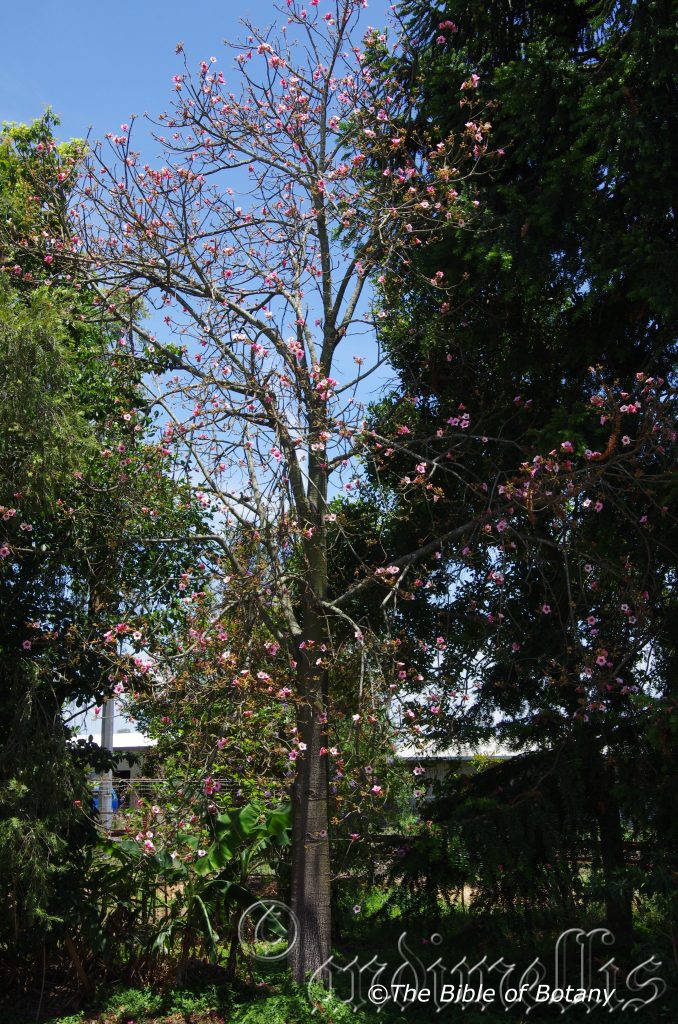
Grafton NSW

Grafton NSW

Author’s Garden The Pinnacles NSW
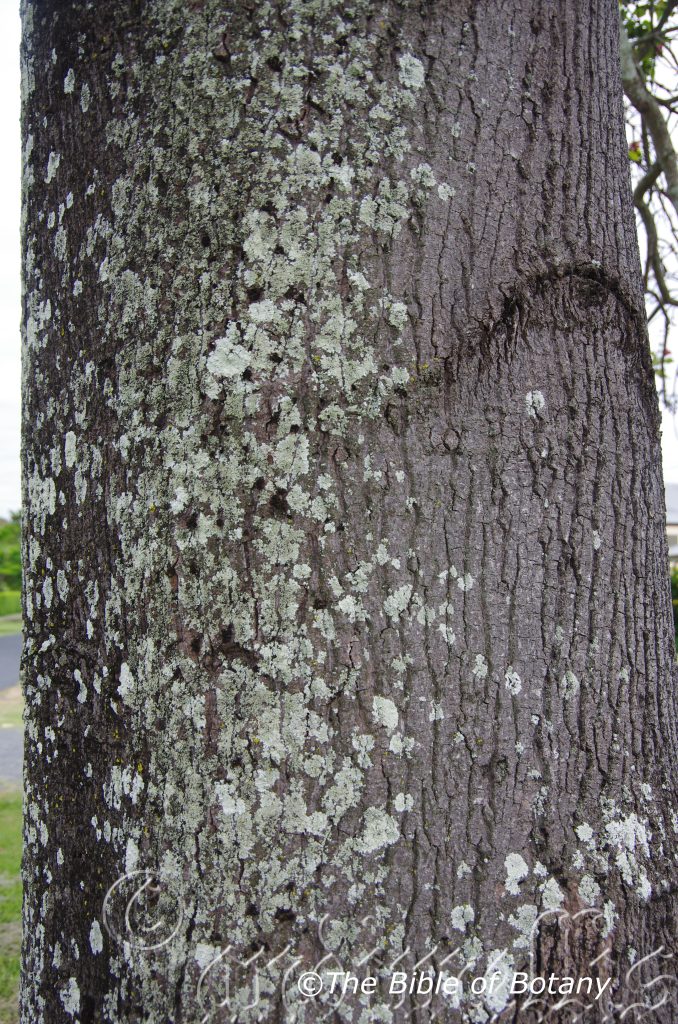
Grafton NSW
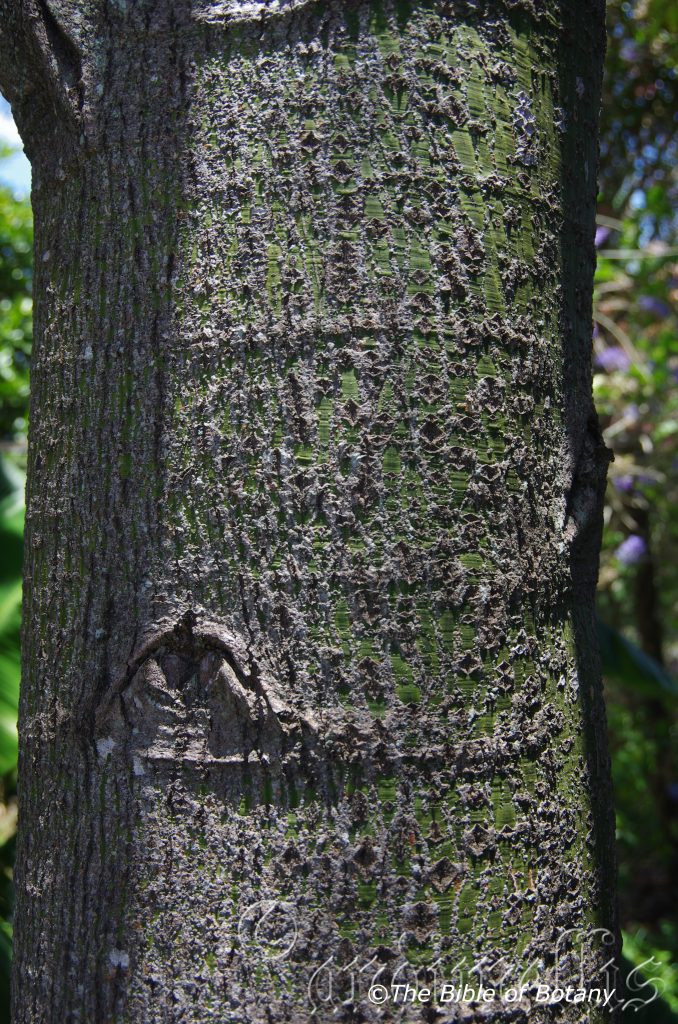
Grafton NSW
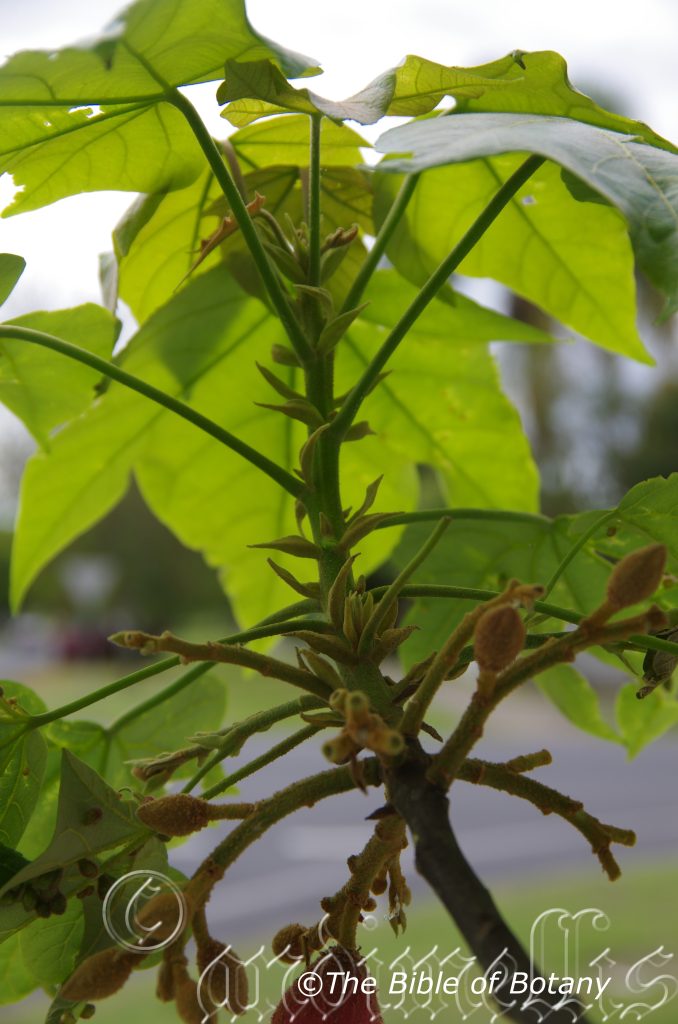
Grafton NSW
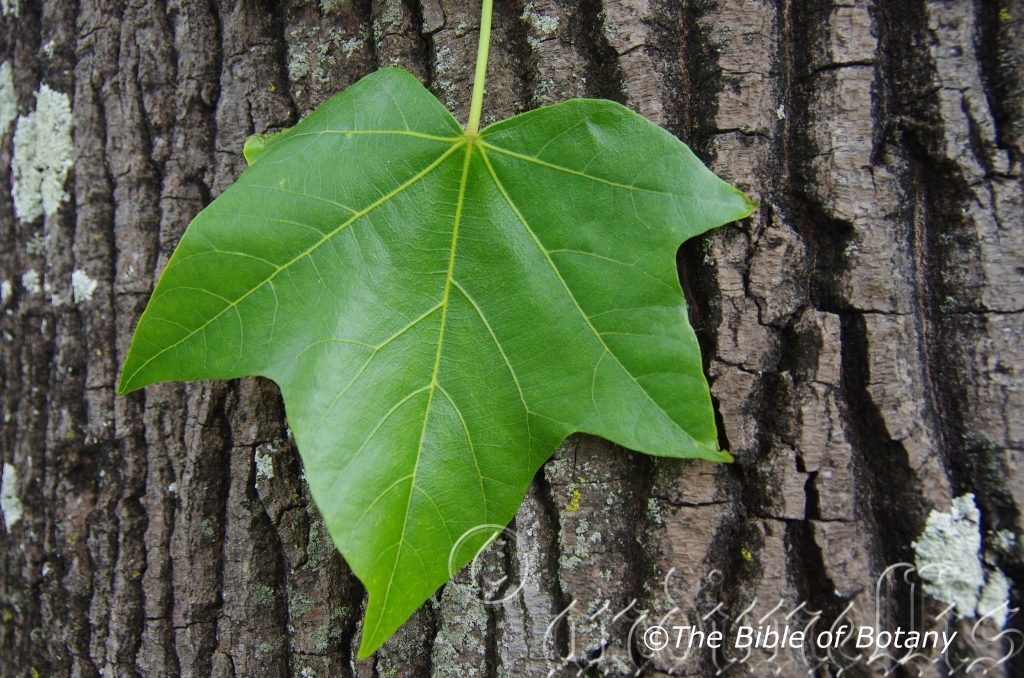
Grafton NSW

Grafton NSW

Author’s Garden The Pinnacles NSW
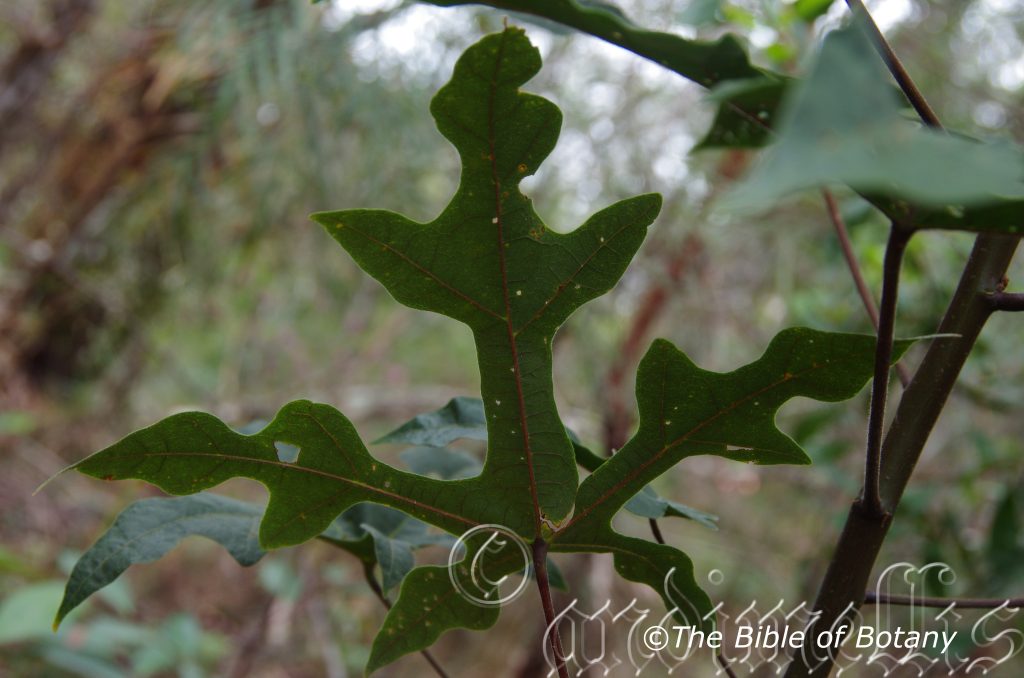
Author’s Garden The Pinnacles NSW

Grafton NSW
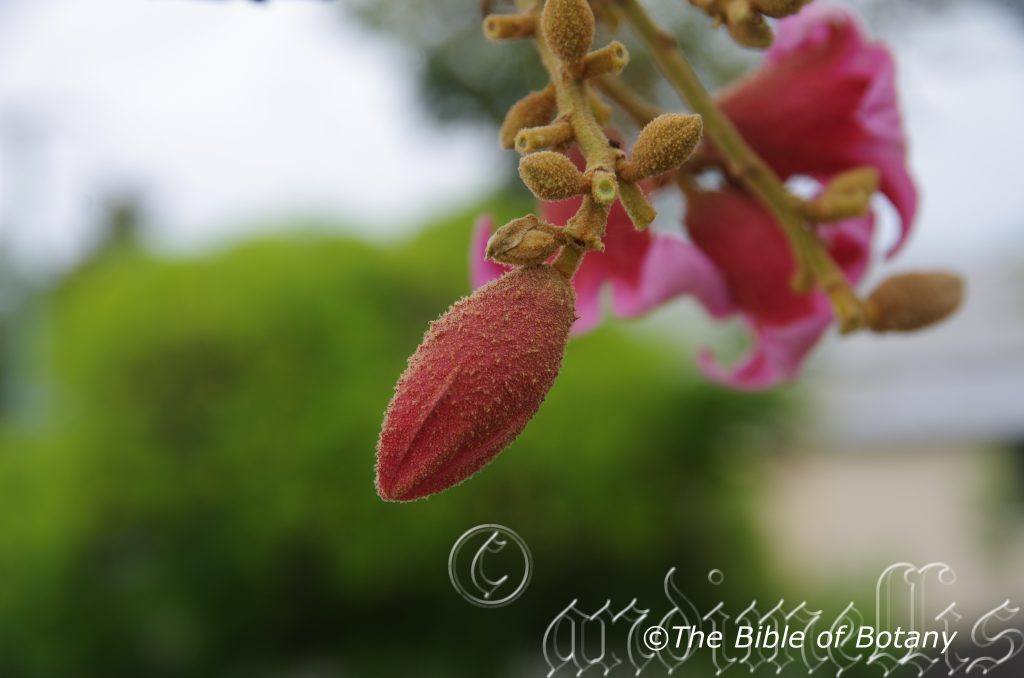
Grafton NSW

Grafton NSW

Grafton NSW

Grafton NSW
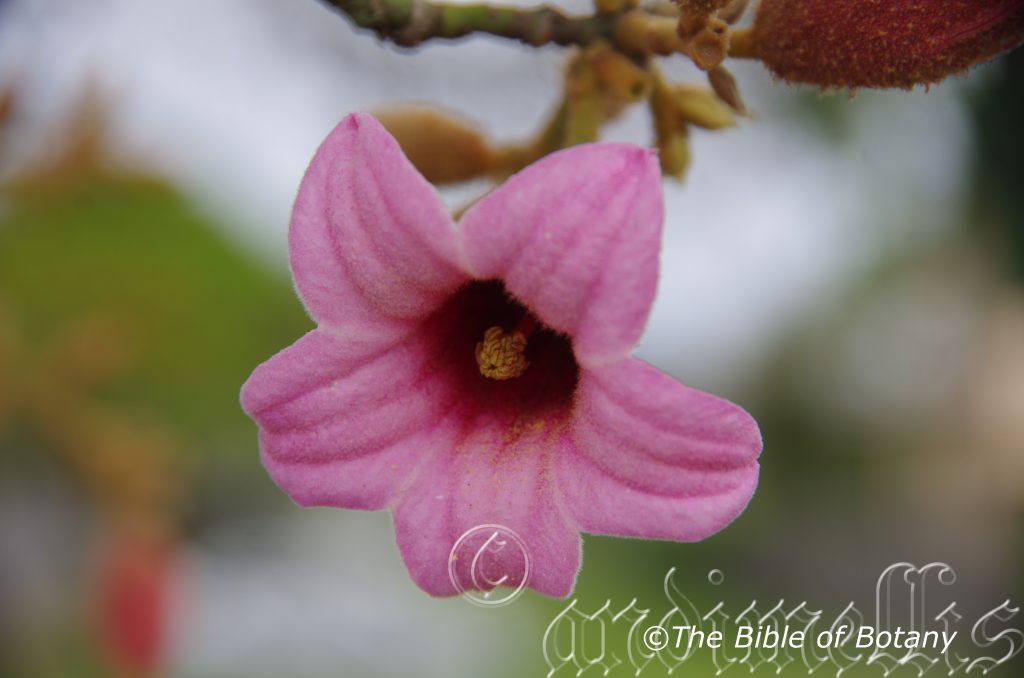
Grafton NSW
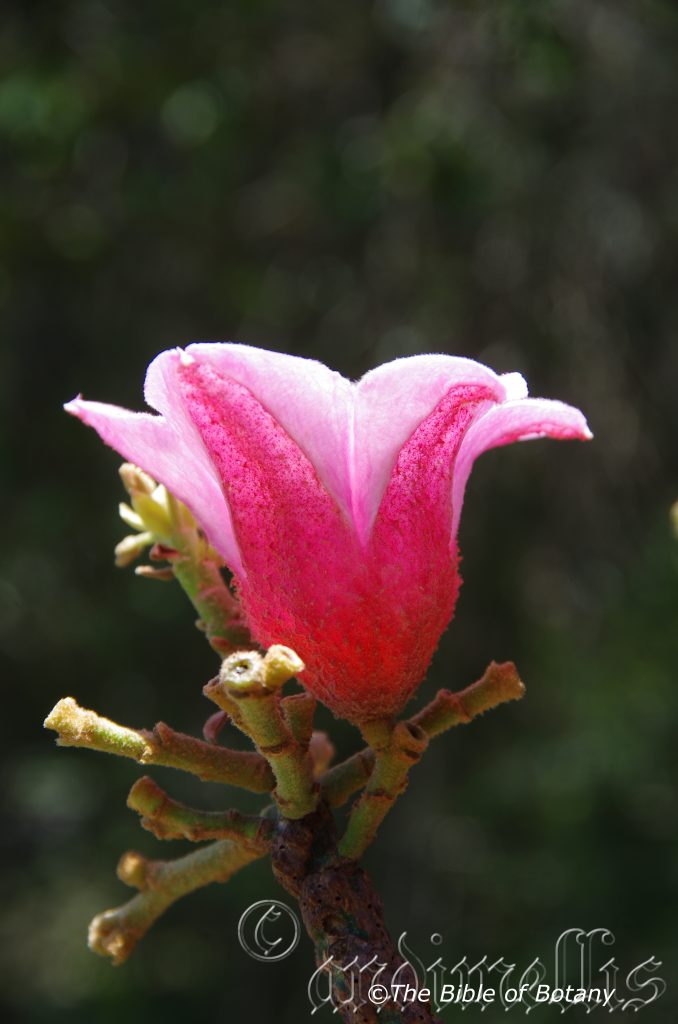
Grafton NSW

Grafton NSW

Grafton NSW
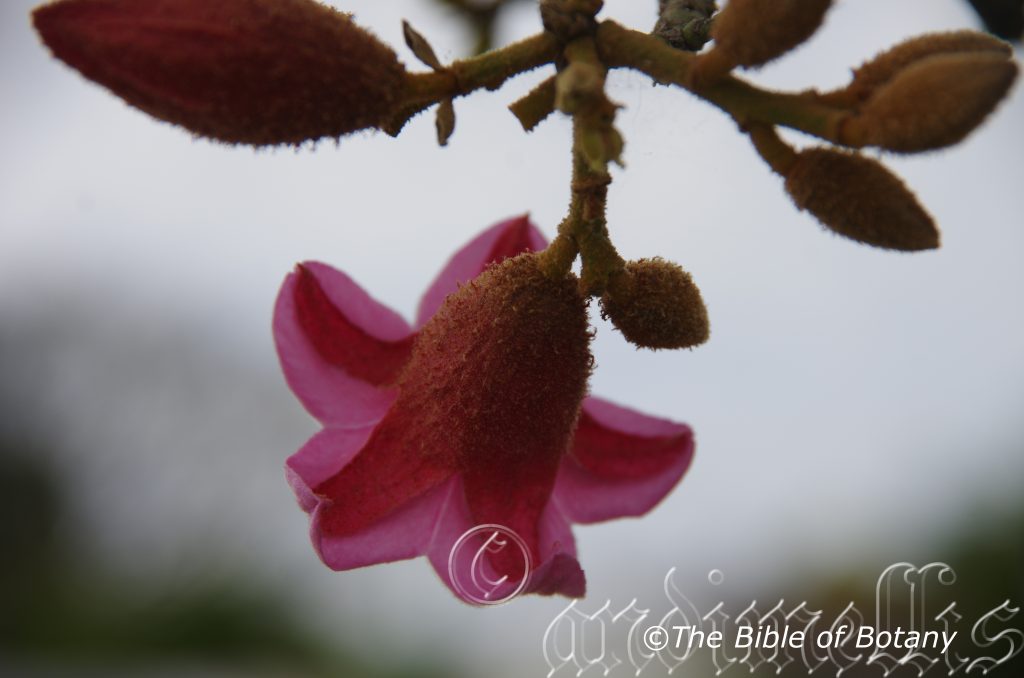
Grafton NSW
Brachychiton discolor
Classification:
Class: Rosids
Order: Malvales
Family: Malvaceae
Genus: From Brachus, which is Ancient Greek for short and Khiton, which is Ancient Greek for a tunic or long dress worn born women. It refers to the flower’s bracts draping around the flowers similar to a short tunic.
Specie: From Di/Dis, which are Ancient Greek for two and Colour, which is Latin a tint or hue. It refers to structures or organs usually the leaves, which have a different colour on each surface.
Subspecies:
Common Name: Pink Lace Bark.
Distribution:
Brachychiton discolor found south from Bundaberg on the Great Dividing Range to the coast in south eastern Queensland and in several disjunct populations to Dungog in central New South Wales and the Clarence River.
https://avh.ala.org.au/occurrences/search?taxa=Brachychiton+discolor#tab_mapView
Habitat Aspect Climate:
Brachychiton discolor grows in full sun to partial shade. It is found in cool moist dry rainforests adjacent to well-developed rainforests. The altitude ranges from 5 meters ASL to 1100 meters ASL.
The temperatures range from 2 degrees in August to 37 degrees in February.
The rainfalls range from lows of 850mm to an average of 1400mm.
Soil Requirements:
Brachychiton discolor prefers better quality loams to medium clays. The soils are derived from decomposed brown basalts or black basalts and shale. The soils pH ranges from 6pH to 7pH. It does not tolerate water logged soils. Non saline to moderately saline soils are tolerated.
Height & Spread:
Wild Plants:20m to 30m by 8m to 12m
Characteristics:
Brachychiton discolor has a light grey, scabrous, furrowed bark with longitudinal furrows. Young branchlets are grey and glabrous.
Brachychiton discolor’s palmate leaves have 3 to 7 lobes. The lamina measures 80mm to 180mm long by 80mm to 160mm wide. The base is cordate while the lobe apexes are broadly acuminate to narrow acuminate. Juvenile tree leaves are deeply lobed while those on mature trees are shallowly lobed. Laminas are discolourous dull pale grey-green or glaucous green and covered in short white to pale grey tomentose to sericeous hairs above while the lower lamina is paler and densely covered in fine white sericeous hairs. The palmate mid veins are slightly prominent on the lower lamina and distinctly visible on the upper lamina. The leaf margins are entire or further divided into shallow irregular lobes especially on juvenile trees. The glabrous petioles measure 80mm to 180mm in length. The trees are semi deciduous in the dry season.
The inflorescences of Bracychiton discolor are panicles born on the previous seasons old wood. The calyx is fawn to kaki and is covered in stellate to strigate hairs. The calyx measure 26mm to 39mm in length while the 5 calyx lobes are narrow rounded to broad acuminate and measure 13mm to 19mm in length. The throat is a deep burgundy. They measure 40mm to 60mm in length including the recurved lobes by 40mm to 60mm in diameter. The campanulate corollas have 5 lobes with obtuse apexes and measure 12mm to 22mm in length. The corolla and lobes are densely covered in white puberulent hairs externally and covered in long 2mm, white, soft hirsute hairs internally. The peduncules measure 10mm to 25mm. The flowers appear from mid-November to mid-February.
The fruits Brachychiton discolor are a large, hard, dry, woody, boat shaped follicle. They measure 100mm to 150mm in length by 30mm to 50mm in width.
The follicles split to expose the seeds which are surrounded by stiff yellow bristles. Seeds ripen from mid-March.
Wildlife:
An unknown weevil often feeds on the unripen seeds.
Cultivation:
It would make an excellent good fire retardant medium tree.
* Fire retardant plants act as radiant heat screens and absorb more heat from an approaching fire without burning.
* Fire retardant trees are able reduce wind speed near a house or out buildings.
* Fire retardant also trap embers and sparks carried by the wind.
* Fire retardant ground covers are able to catch burning embers without catching fire themselves, and also slow the travel of a fire through debris and litter on the ground.
Brachychiton discolor makes a beautiful garden subject as a standalone tree in a park like settings, within a rainforest or bush garden. A cluster of three four or five or scattered plantings amongst other tall trees will lay a carpet of pink over a wide area that is a sight to behold.
In cultivation it will grow from 15 meters to 20 meters in height by 8 meters to 10 meters in diameter when grown in an open situation.
As it is hardy on most soil types, is easy to grow it would make an ideal tree in medium to larger gardens. Keep it away from sewers drains as the roots have a tendency to seek out water.
The trees would make very good accent trees in front of low set commercial buildings, industrial sheds or school offices and classrooms where they will break up hard rigid architectural lines and give warmth and breadth to a building. In front of high rise buildings tit gives balance especially where it could be grown in curves meandering to the entry doors or for something different used from the front of the path and meander back to the far corners with shrubs or flowers planted between the trees and the building and the trees and the nature strip.
Propagation:
Seeds: Brachychiton discolor seeds should be collected using gloves as the hairs within the pods can be very irritating to people with sensitive skins.
Sow freshly treated seeds directly into a seed raising mix, keeping them moist not wet. When the seedlings are 20mm to 25mm tall, prick them out and plant them into 50mm native tubes using a good organic mix.
Fertilize using Seaweed, fish emulsion or organic chicken pellets soaked in water on an alternate basis. Fertilize every two months until the plants are established then annually in early September or March to maintain health, vitality and better flowering.
As the seedlings roots reach the bottom of the tubes plant them out into their permanent position. Do not delay.
For mass plantings plant the seedlings out at 9 meters to 12 meter centers for an avenue or further apart for a park scene.
Further Comments from Readers:
“Hi reader, it seems you use The Bible of Botany a lot. That’s great as we have great pleasure in bringing it to you! It’s a little awkward for us to ask, but our first aim is to purchase land approximately 1,600 hectares to link several parcels of N.P. into one at The Pinnacles NSW Australia, but we need your help. We’re not salespeople. We’re amateur botanists who have dedicated over 30 years to saving the environment in a practical way. We depend on donations to reach our goal. If you donate just $5, the price of your coffee this Sunday, We can help to keep the planet alive in a real way and continue to bring you regular updates and features on Australian plants all in one Botanical Bible. Any support is greatly appreciated. Thank you.”
In the spirit of reconciliation we acknowledge the Bundjalung, Gumbaynggirr and Yaegl and all aboriginal nations throughout Australia and their connections to land, sea and community. We pay our respect to their Elders past, present and future for the pleasures we have gained.
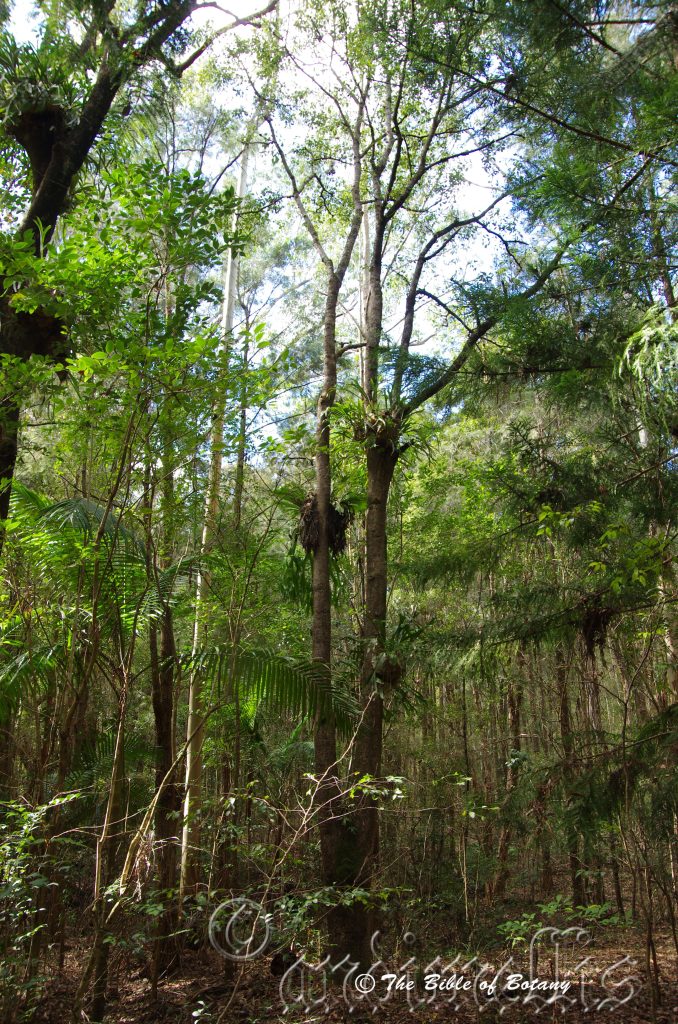
Nana Glen NSW
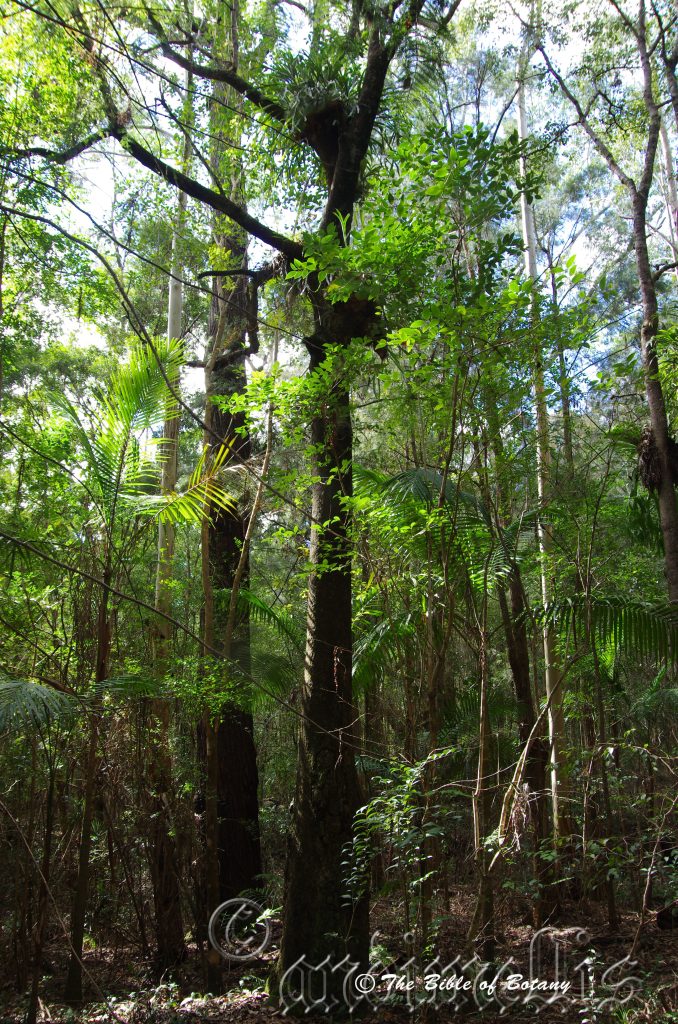
Nana Glen NSW

Nana Glen NSW

National botanic Gardens Canberra ACT
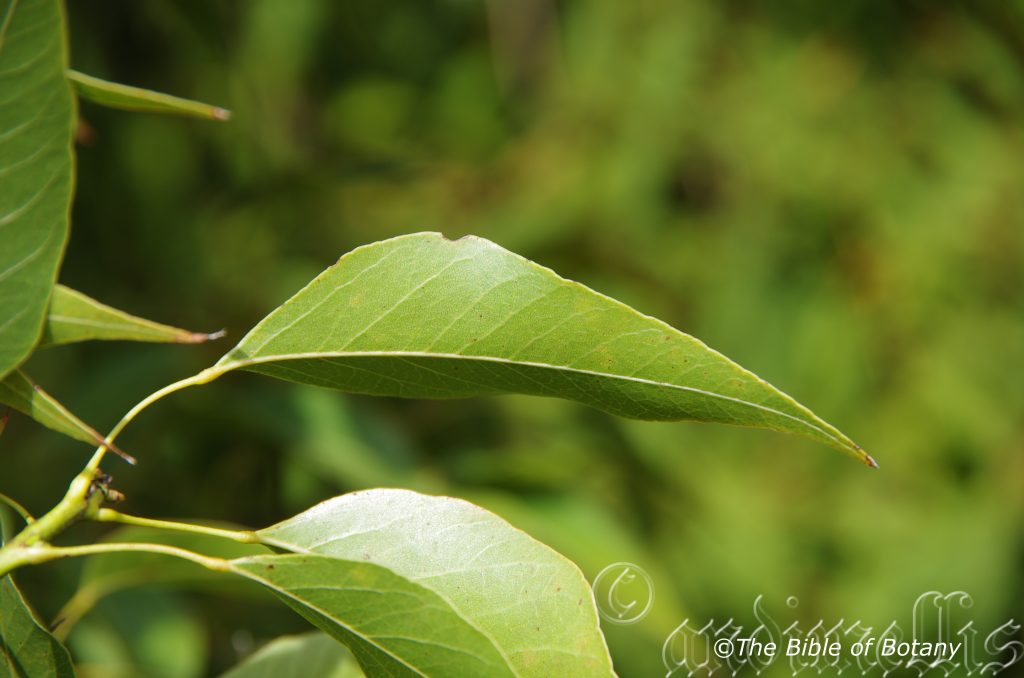
National botanic Gardens Canberra ACT

Brachychiton populneus subsp. populneus Author’s Garden The Pinnacles NSW
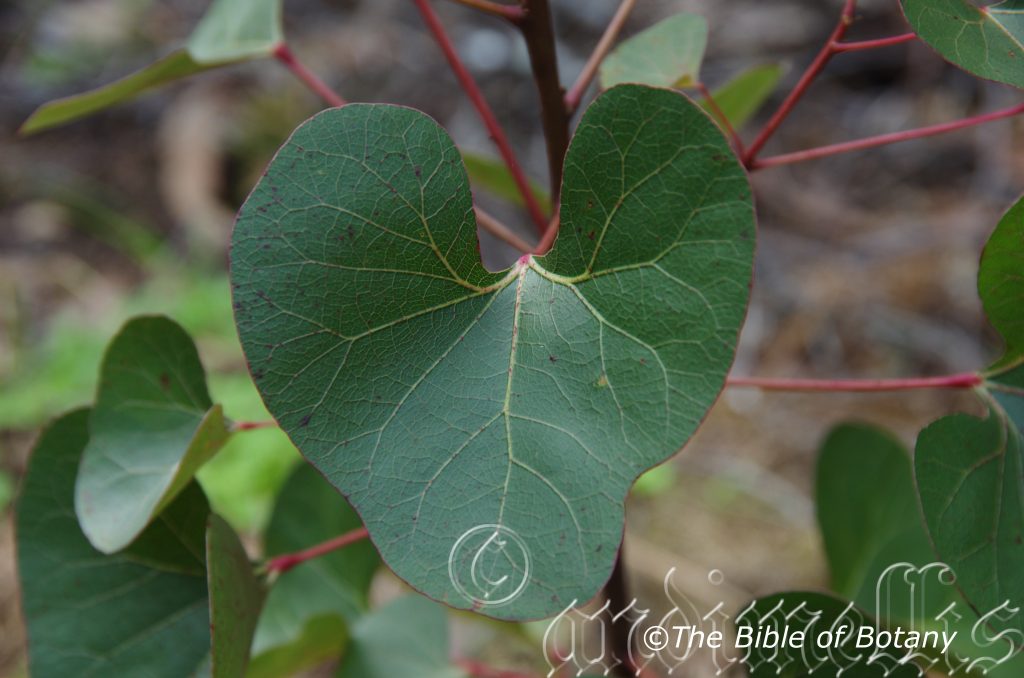
Brachychiton populneus subsp. populneus Author’s Garden The Pinnacles NSW

Brachychiton populneus subsp. populneus Author’s Garden The Pinnacles NSW

Brachychiton populneus subsp. trilobus Author’s Garden The Pinnacles NSW
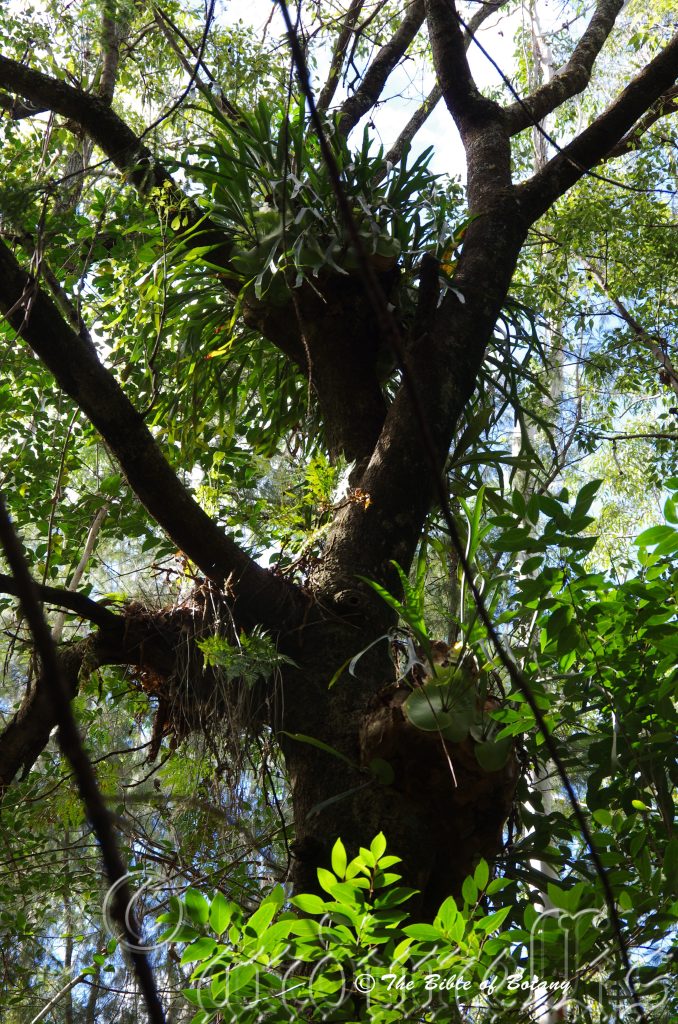
Nana Glen NSW
Brachychiton populneus
Classification:
Class: Rosids
Order: Malvales
Family: Malvaceae
Genus: From Brachus, which is Ancient Greek for short and Khiton, which is Ancient Greek for a tunic or long dress worn born women. It refers to the flower’s bracts draping around the flowers similar to a short tunic.
Specie: From Popler, which is old English for the Poplar tree. It refers to structures or organs usually the leaves, which resemble the European Populus genus.
Sub species: Bracychiton populneus sub specie populneus From Popler, which is old English for the Poplar tree. It refers to structures or organs usually the leaves, which resemble the European Populus genus.
Sub species: Bracychiton populneus sub specie trilobus From Treîs/Tría, which are Ancient Greek or Tri, which is Latin for three and Lobos/Lob?, which is Ancient Greek or Lobus which is Latin for a lobe. It refers leaves which have three lobes.
Common Name: Kurrajong
Distribution:
Bracychiton populneus sub specie s. sp. populneus south from Fraser Island and Marybough and inland to Biloela in Queensland to north of Melbourne south eastern Victoria.
Bracychiton populneus sub specie trilobus is found south from Ravenshoe mainly west of the Great Dividing Range to Cocoparra National Park. The odd plants west of Coffs Harbour in the Orara Valley adjacent to Bucca Creek area are believed to have been planted by Aborigines hundreds of years ago. The oldest trees have a girth of over 4 meters indicating they are fairly old. The trees at Nana Glen have been planted in groups of three all in the vicinity of old midden heaps and near permanent water which increases the likely hood that the trees may have some cultural attachment. A stone axe had been found at one site, a tooth and sea shells had been located at another site and a stone spear had been unearthed close to the second.
https://avh.ala.org.au/occurrences/search?taxa=Brachychiton+populneus#tab_mapView
Habitat Aspect Climate:
Brachychiton populneus prefers full sun to light dappled shade.
Brachychiton populneus sub sp. populneus, prefers dry rainforests and dry rainforest margins to growing in moist Eucalyptus forests.
The temperatures range from minus 4 degrees in early August to 36 degrees in February.
They are drought tolerant in areas with 500mm of rain through to 2000mm annually.
Brachychiton populneus sub sp. trilobus, grows in dry open Eucalyptus forests. The altitude ranges from 5 meters ASL to 1100 meters ASL
The temperatures range from minus 2 degrees in early August to 40 degrees in January and February.
The rainfalls range from lows of 300mm to 1000mm annually.
Soil Requirements:
Brachychiton populneus grows on sandy clays, loamy clays through to heavy clays or rocky outcrops. The soils are derived from brown basalts, sandstones, granites, or shales. The pH ranges from 5.5pH to 7.5pH. It does not tolerate water logged soils however it can survive short periods of inundation. Non saline to moderately saline soils are tolerated.
Height & Spread:
Wild Plants:15m to 20m by 8m to 10m
Characteristics:
The dark grey tessellated trunk has a short swollen bole up to 3 meters before straightening up on large trees. The first branches appear at 4 meters to 5 meters above the ground.
The trilobed or simple leaves of Bracychiton populneus vary considerably. The bases are cuneate while the apexes are narrow acute to narrow acuminate. The discolour laminas are deep grey-green to deep blue-green on the upper lamina while the lower lamina is paler. The leaf margins are entire. The palmate veins are prominent on the lower laminas and clearly visible from the upper laminas. The petioles measure 50mm to 100mm in length.
Bracychiton populneus subsp. populneus has alternate, simple, lanceolate to ovate leaves or almost trilobed leaves. The simple leaves measure 50mm to 90mm in length by 30mm to 50mm in width.
Bracychiton populneus s. sp. trilobus have 3 deep lobes. The middle lobe is the longest. They measure 50mm to 100mm in length by 45mm to 95mm in width. The middle lobe measures 40mm to 70mm in length by 5mm to 25mm in width. The 2 side lobes measure 20mm to 40mm in length by 5mm to 18mm in width.
The inflorescences of Bracychiton populneus are panicles born from the terminals. The white to creamy white, pale pink, pale orange or pale yellow campanulate flowers are lightly or heavily streaked inside with purple, red, red-brown to a deep burgundy. The corolla measures 18mm to 38mm in length including the 5 lobes. The lobes have a broad to narrow acute apex and are strongly revolute. They measure 9mm to 19mm in length. On mature plants the panicles can have more than 50 individual flowers where only a few of the flowers are blooming at the same time. The carpels are puberulent. The peduncules measure 6mm to 12mm in length. Flowers usually appear in October through to March.
Bracychiton populneus subsp. populneus dark brown glabrous follicles are 20mm to 70mm in length by 30mm to 50mm in diameter. The external casing is glabrous while the inside is densely covered in khaki to fawn-yellow irritant hirsute hairs. The peduncles measure 20mm to 50mm in length. The 6 to 12 yellow ovoid seeds are densely covered in khaki to fawn-yellow irritant hirsute hairs. They are hard with flattish poles and measure 5mm to 7mm.
Bracychiton populneus s. sp. trilobus similar to sub sp. populneus except there are 3 to 8 seeds in a follicle. The follicles measure 20mm to 20mm to 50mm in length by 30mm to 40mm in diameter.
Wildlife:
These two sub species supply good quantities of honey for native bees and shelter for native animals in semi desert areas of the country.
Cultivation:
It would make an excellent good fire retardant medium tree.
* Fire retardant plants act as radiant heat screens and absorb more heat from an approaching fire without burning.
* Fire retardant trees are able reduce wind speed near a house or out buildings.
* Fire retardant also trap embers and sparks carried by the wind.
* Fire retardant ground covers are able to catch burning embers without catching fire themselves, and also slow the travel of a fire through debris and litter on the ground.
This is an attractive shaped trees that is relatively slow growing in its initial years in the garden. It will reach its full potential of 15 to 20 metres by 8 to 10 metres after several decades. As it is hardy on most soil types it easy to grow. Best kept for large gardens as it has a large spread when grown in the open and has a moderate root system that could seek out sewer drains and weak foundations. This tree is suitable for all epiphytic plants. Stags and elk horns placed on large trees. 12 to 15 year old tree give the trees an appearance that they have been there for centuries.
It is a good tree for bonsai collectors developing a good size trunk with branches that are easy to work.
It is ideal shade tree for around homesteads west of the Great Dividing Range in arid and semi-arid areas as it can handle drought conditions once established. Place it where the shade falls onto buildings or along fence lines as shelter for stock and wildlife corridors for native birds.
Another area it is ideal for is in front of large sheds to breakdown the monotony of straight lines. It can be used as the center of a garden in front of offices giving the appearance of open friendship. This is achieved by having a full crown and an open unobstructed view of the entrance below. A feeling of honesty and openness has been achieved. Plant them close enough to the path so that when mature the flowers will fall onto the pavement enhancing friendliness. Small prostrate ground covers or annuals are all that is needed to complete the picture.
Propagation:
Seeds: Both Brachychiton populneus sub species seeds require treatment before sowing. Pre-treat by placing the seeds into boiling water. Allow them to soak in the water until it cools. Sow into a seed raising mix. When the seedlings are 50 to 80 mm tall, prick them out and plant them into 50mm native tubes using a seed raising mix.
Fertilize using Seaweed, fish emulsion or organic chicken pellets soaked in water on an alternate basis. Fertilize every two months until the plants are established then annually in early September or March to maintain health, vitality and better flowering.
Once the seedlings reach 200 to 250mm in height plant them out into their permanent position. Mass plantings for along driveways, boundary fences or parks are best achieved with spacing of 10 meters to 12 meter centers.
Further Comments from Readers:
“Hi reader, it seems you use The Bible of Botany a lot. That’s great as we have great pleasure in bringing it to you! It’s a little awkward for us to ask, but our first aim is to purchase land approximately 1,600 hectares to link several parcels of N.P. into one at The Pinnacles NSW Australia, but we need your help. We’re not salespeople. We’re amateur botanists who have dedicated over 30 years to saving the environment in a practical way. We depend on donations to reach our goal. If you donate just $5, the price of your coffee this Sunday, We can help to keep the planet alive in a real way and continue to bring you regular updates and features on Australian plants all in one Botanical Bible. Any support is greatly appreciated. Thank you.”
In the spirit of reconciliation we acknowledge the Bundjalung, Gumbaynggirr and Yaegl and all aboriginal nations throughout Australia and their connections to land, sea and community. We pay our respect to their Elders past, present and future for the pleasures we have gained.

Mount Cootha Botanic Gardens Qld.
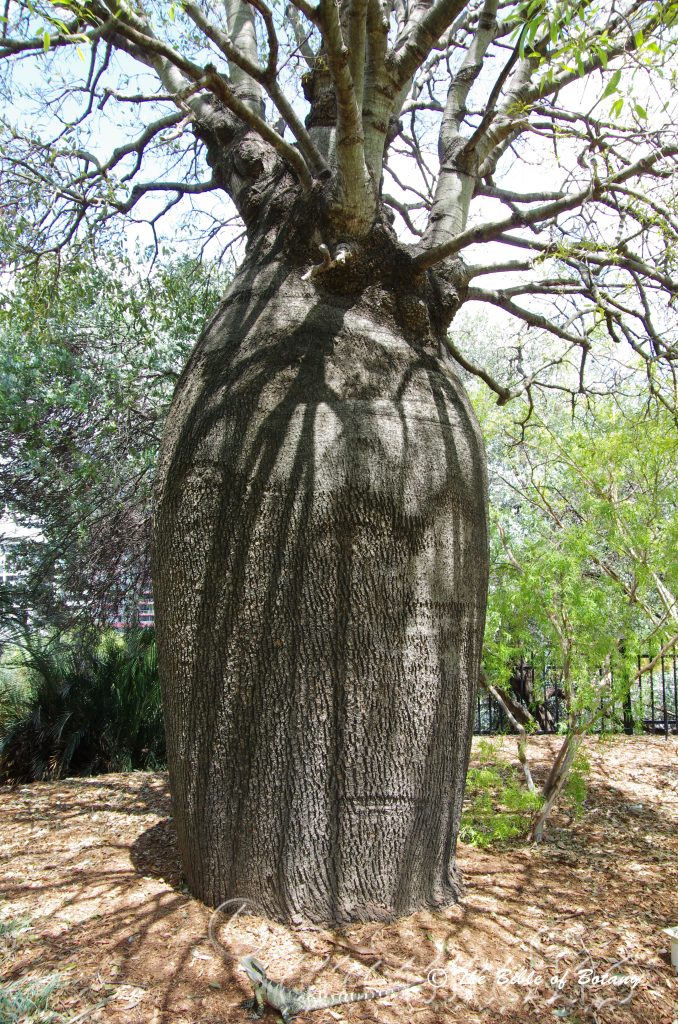
Roma Street Floral Garden Brisbane Qld.
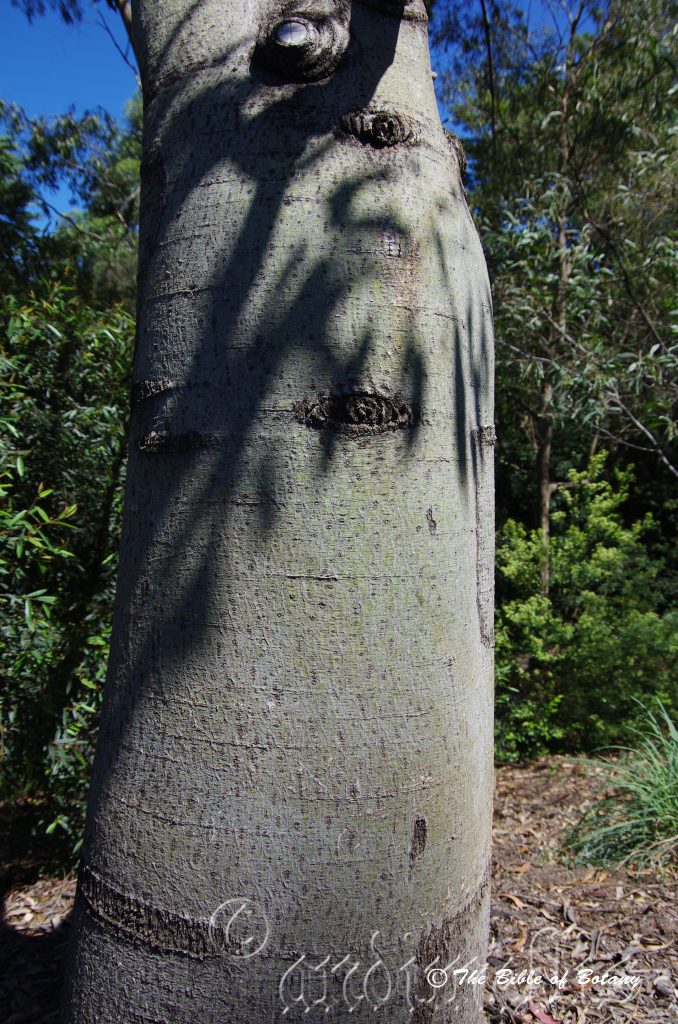
Mount Cootha Botanic Gardens Qld.
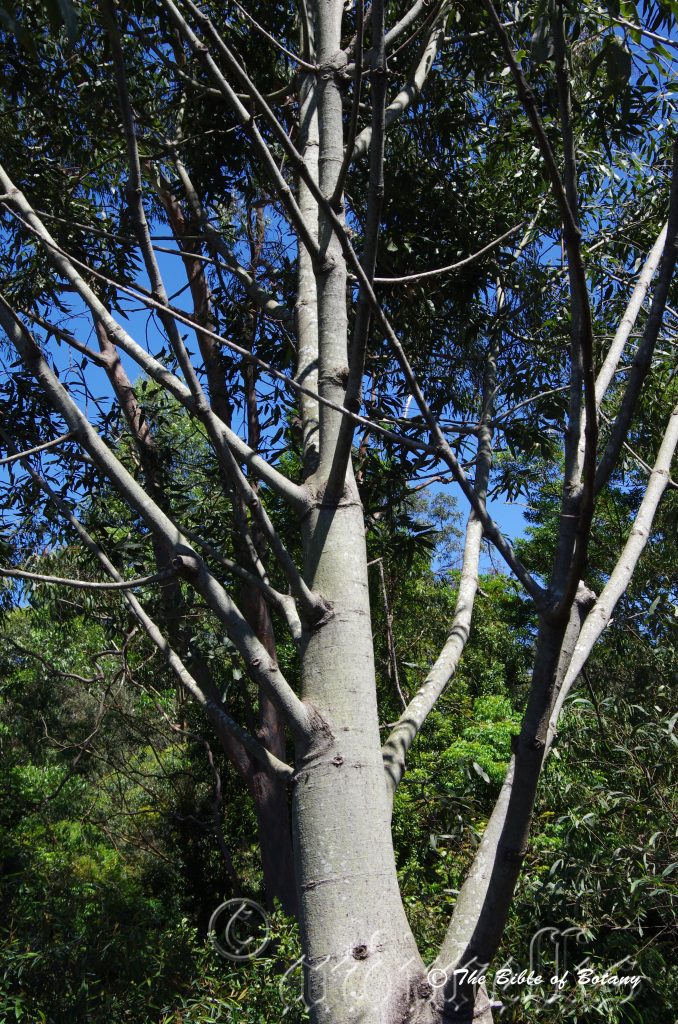
Mount Cootha Botanic Gardens Qld.
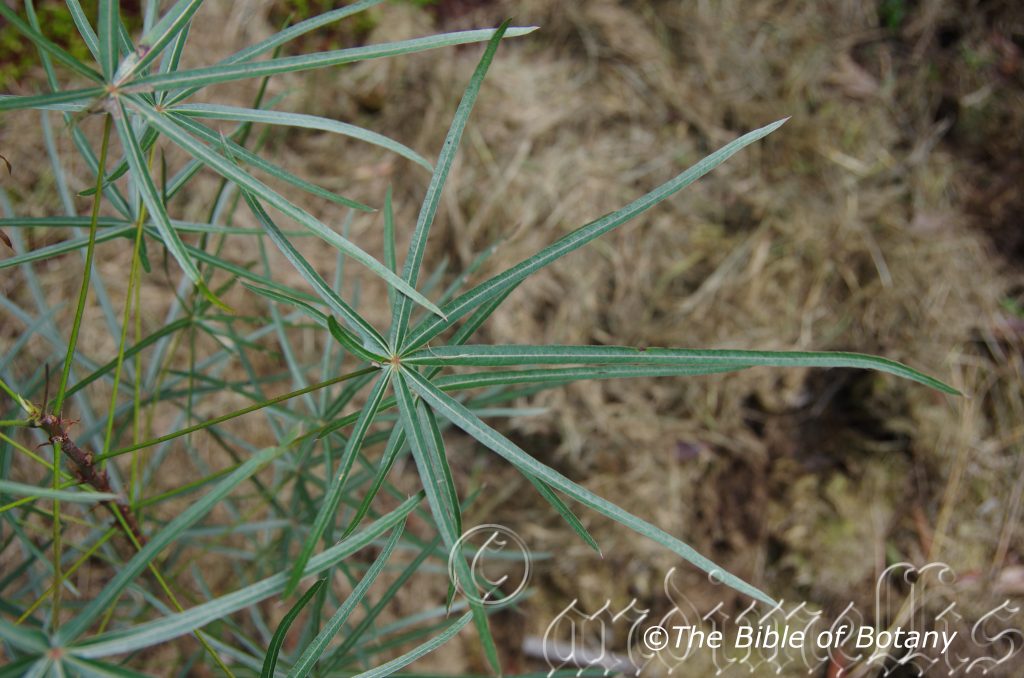
Author’s Garden The Pinnacles NSW

Author’s Garden The Pinnacles NSW

Roma Street Floral Garden Brisbane Qld.
Brachychiton rupestre
Classification:
Class: Rosids
Order: Malvales
Family: Malvaceae
Genus: From Brachus, which is Ancient Greek for short and Khiton, which is Ancient Greek for a tunic or long dress worn born women. It refers to the flower’s bracts draping around the flowers similar to a short tunic.
Specie: From Rupes, which is Latin for a cliff or crag and Trine, which is Latin for a three. It refers to growing in three places – amongst, between or over rocks.
Sub specie:
Common Name: Bottle Tree.
Distribution:
Brachychiton rupestre is found south from Charters Towers and Winton in central Queensland to St George in the west to Mount Barney in the east on the Queensland New South Wales Border
https://avh.ala.org.au/occurrences/search?taxa=Brachychiton+rupestre#tab_mapView
Habitat Aspect Climate:
Brachychiton rupestre prefers full sun to dappled shade. It is found in dry rainforests and open Eucalyptus forests. The altitude ranges from 5 meters ASL to 800 meters ASL.
The temperatures range from minus 2 degrees August to 40 degrees in February.
The rainfalls range from lows of 250mm to an average of 1000mm annually.
Soil Requirements:
Brachychiton rupestre prefers better quality sandy loams to medium clays with gravel especially on rockier sites. The soils are very well drained. The soils pH ranges from a pH of 5pH to 6.5pH. It does not tolerate water logged soils. Non saline to moderately saline soils are tolerated.
Height & Spread:
Wild Plants:12m to 20m by 8m to 12m.
Characteristics:
Brachychiton rupestre grows as a single trunked small tree, with its trunk being 50mm to 60mm of its total height. The bark is a dull grey with brown fissures and tessellated on older trees. Young branchlets grey green and glabrous while the juvenile branches are pale grey green.
Brachychiton rupestre’s leaves are palmate with 4 to 9 lobes. The lobes are narrow lanceolate to lanceolate are glabrous. They measure 80mm to 180mm in length by 120mm to 200mm in width. The bases are hastate while the apexes are narrow acute. The concolourous laminas are mid olive-green to grey-green. The leaf margins are entire. The mid vein is very prominent on both lamina. Young leaves are a glossy bronze to burgundy in colour. The petioles measure 40mm to 50mm in length.
The inflorescences of Brachychiton rupestre are panicles born from the terminals. The white to cream or rarely pale yellow campanulate have 5 lobes and are glabrous. The creamy green or pale green with red or purple streaked corollas measure 13mm to 18mm in length including the lobes by 5mm to 7mm in diameter. The lobes are oblong, revolute to recurve with narrow obtuse apexes. They measure by 7mm to 10mm in length by 3mm to 5mm in width.
The corollas and lobes are densely covered in white stellate and pulverulent hairs externally and internally. The corolla tubes are glabrous near the opening while they are sparsely covered in short white hirsute hairs deep down the throat. The flowers appear from October to December.
The deep brown glabrous boat shaped follicles are glabrous externally and filled with sharp irritant hirsute hairs internally. They measure 70mm to 110mm in length by 30mm to 45mm in width. The large flat, hard, ovoidal seeds have obtuse ends and measure 7.5mm to 10mm in length by 5mm to 6mm in diameter. The seeds ripen from February to July.
Wildlife:
Brachychiton rupestre supplies good quantities of honey for native bees and shelter for native animals in semi desert areas of the country.
The seeds were roasted by Aborigines and have a mild walnut flavour. The roots were also eaten.
Cultivation:
It would make an excellent good fire retardant medium tree with an unusual bulging trunk.
* Fire retardant plants act as radiant heat screens and absorb more heat from an approaching fire without burning.
* Fire retardant trees are able reduce wind speed near a house or out buildings.
* Fire retardant also trap embers and sparks carried by the wind.
* Fire retardant ground covers are able to catch burning embers without catching fire themselves, and also slow the travel of a fire through debris and litter on the ground.
Brachychiton rupestre is a great accent plant for small to large gardens and will commence the development of its bottle shape trunk after about six years in the ground. Cultivated trees tend to be shorter growing from 8 meters to 12 meters with a similar size bole of around 2 meters in diameter.
This is an attractive shaped tree that is rather slow growing in the garden. It will reach its full potential of 15 meters by 8 meters after several decades. As it is hardy on most soil types it is easy to grow. The tree is suitable for all epiphytic plants, which prefer good indirect sunlight in the warmer months and full sun for a short period at the end of the dry season. It is an ideal tree for around homesteads west of the Great Dividing Range where it can handle drought conditions once established.
Propagation:
Seeds: Brachychiton rupestre seeds do not require treatment before sowing. Sow the seeds directly into a seed raising mix. When the seedlings are 50mm to 80mm tall, prick them out and plant them into 50mm native tubes using a seed raising mix.
Fertilize using Seaweed, fish emulsion or organic chicken pellets soaked in water on an alternate basis. Fertilize every two months until the plants are established then annually in early September or March to maintain health, vitality and better flowering.
Once the seedlings reach 200 to 250mm in height plant them out into their permanent position. For a good park feature plant three or four trees with 10 meters centers.
Further Comments from Readers:
“Hi reader, it seems you use The Bible of Botany a lot. That’s great as we have great pleasure in bringing it to you! It’s a little awkward for us to ask, but our first aim is to purchase land approximately 1,600 hectares to link several parcels of N.P. into one at The Pinnacles NSW Australia, but we need your help. We’re not salespeople. We’re amateur botanists who have dedicated over 30 years to saving the environment in a practical way. We depend on donations to reach our goal. If you donate just $5, the price of your coffee this Sunday, We can help to keep the planet alive in a real way and continue to bring you regular updates and features on Australian plants all in one Botanical Bible. Any support is greatly appreciated. Thank you.”
In the spirit of reconciliation we acknowledge the Bundjalung, Gumbaynggirr and Yaegl and all aboriginal nations throughout Australia and their connections to land, sea and community. We pay our respect to their Elders past, present and future for the pleasures we have gained.
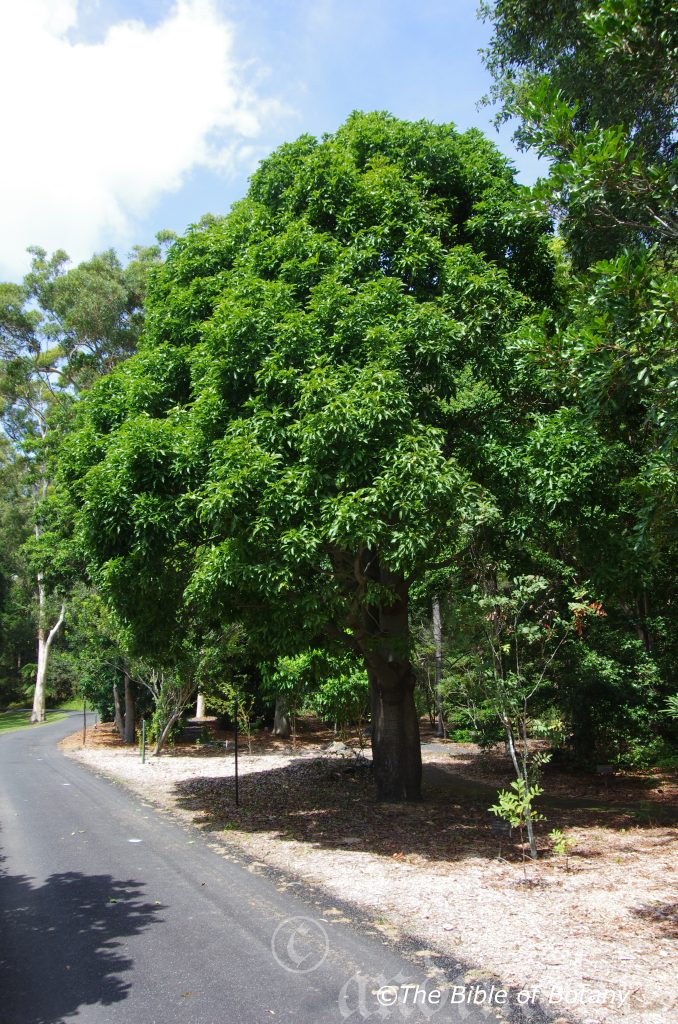
Coffs Harbour Botanic Gardens NSW
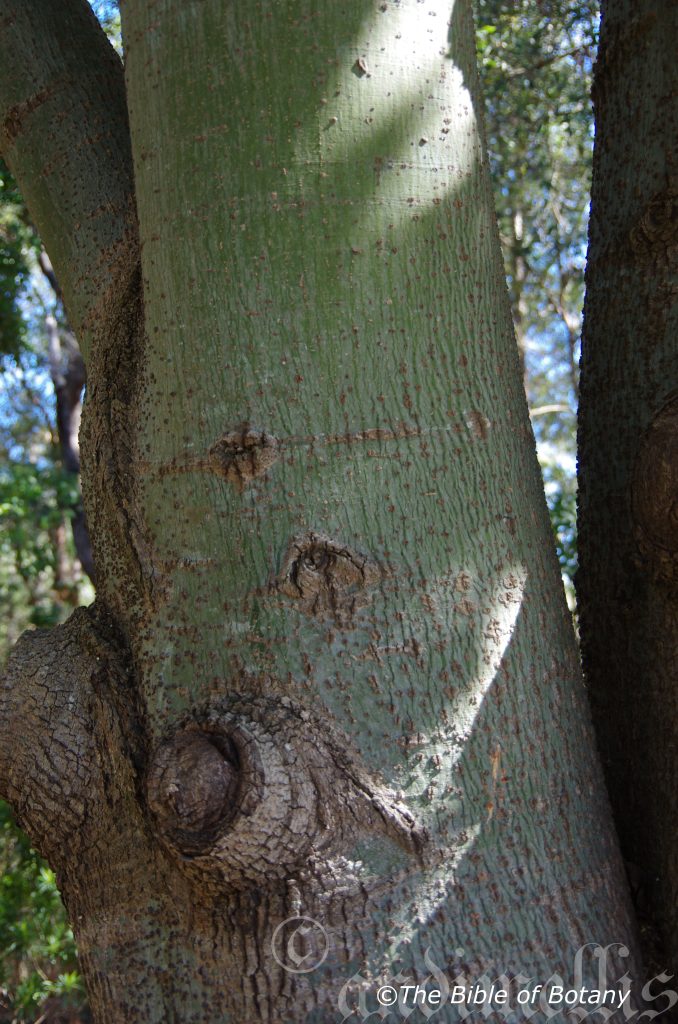
Coffs Harbour Botanic Gardens NSW

Coffs Harbour Botanic Gardens NSW

Coffs Harbour Botanic Gardens NSW
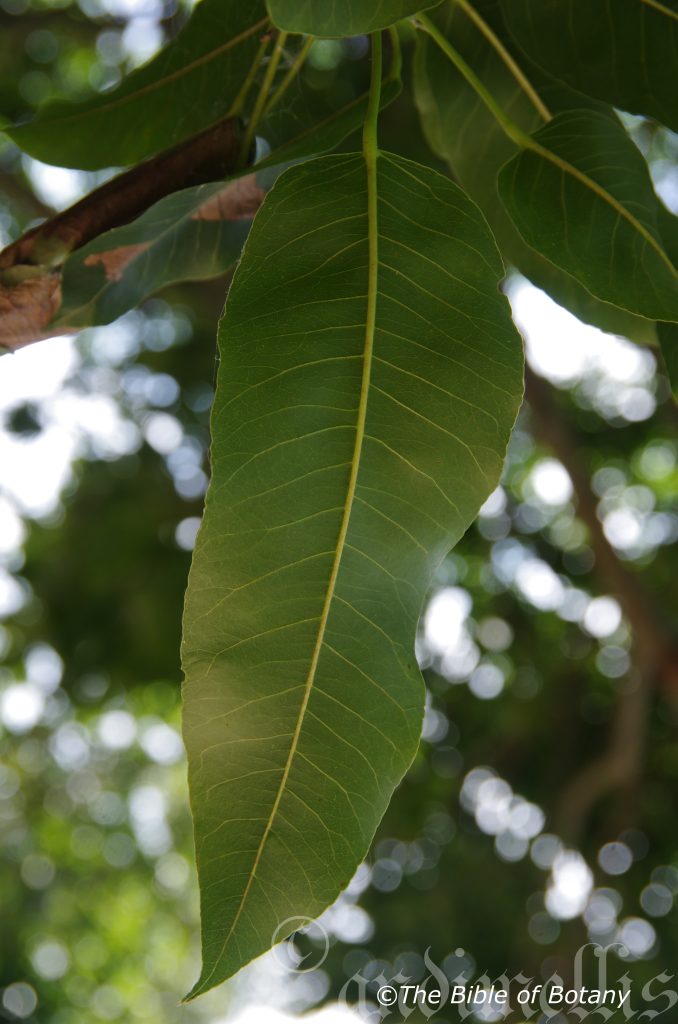
Coffs Harbour Botanic Gardens NSW
Brachychiton turgidulus
Classification:
Class: Rosids
Order: Malvales
Family: Malvaceae
Genus: From Brachus, which is Ancient Greek for short and Khiton, which is Ancient Greek for a tunic or long dress worn born women. It refers to the flower’s bracts draping around the flowers similar to a short tunic.
Specie: From Turgidulus, which is Latin, for being somewhat swollen or inflamed. It refers to plants, which have an organ or structure somewhat swollen compared to other species in the genus. Here it refers to the trunk being somewhat swollen.
Sub specie:
Common Name:
Distribution:
Brachychiton x turgidulus is found south and east from Rockhampton to Blackall, Charleville, Boonah and Ormeo in south eastern Queensland.
https://avh.ala.org.au/occurrences/search?taxa=Brachychiton+x+turgidulus#tab_mapView
Habitat Aspect Climate:
Brachychiton x turgidulus prefers full sun to dappled shade. It is found in dry rainforests and open Eucalyptus forests. The altitude ranges from 5 meters ASL to 600 meters ASL.
The temperatures range from minus 2 degrees August to 40 degrees in February.
The rainfalls range from lows of 700mm to an average of 1200mm annually.
Soil Requirements:
Brachychiton x turgidulus prefers better quality sandy loams to medium clays. The soils are very well drained and derived from black basalt. The soils pH ranges from a pH of 5pH to 6.5pH. It does not tolerate water logged soils. Non saline to moderately saline soils are tolerated.
Height & Spread:
Wild Plants:12m to 15m by 4m to 8m.
Characteristics:
Brachychiton × turgidulus is a natural hybrid cross between Brachychiton rupestris with Brachychiton populneus subspecies. populneus.
Brachychiton x turgidulus grows as a single trunked small tree, with its trunk being over 50mm to 60mm of its total height. The bark is a semi glossy grey on older trees. Young branchlets grey green and glabrous while the juvenile branches are pale grey green.
Brachychiton x turgidulus’s leaves are palmate with 4 to 6 lobes. The lobes are narrow lanceolate to ovate lanceolate are glabrous. They measure 60mm to 100mm in length by 80mm to 120mm in width. The bases are hastate while the apexes are narrow acute.
The inflorescences of Brachychiton x turgidulus are panicles born from the terminals. The white to cream or rarely pale yellow campanulate have 5 lobes and are glabrous. The creamy green or pale green with red or purple streaked corollas measure 12mm to 20mm in length including the lobes by 5mm to 7mm in diameter. The lobes are oblong, revolute to recurve with narrow obtuse apexes.
The corollas and lobes are densely covered in white stellate and pulverulent hairs externally and internally. The corolla tubes are glabrous near the opening while they are sparsely covered in short white hirsute hairs deep down the throat. The flowers appear from October to December.
The deep brown glabrous boat shaped follicles are glabrous externally and filled with sharp irritant hirsute hairs internally. They measure 50mm to 90mm in length. The seeds ripen from February to July.
Wildlife:
Brachychiton x turgidulus supplies good quantities of honey for native bees and shelter for native animals in semi desert areas of the country.
The seeds were roasted by Aborigines and have a mild walnut flavour. The roots were also eaten.
Cultivation:
It would make an excellent good fire retardant medium tree.
* Fire retardant plants act as radiant heat screens and absorb more heat from an approaching fire without burning.
* Fire retardant trees are able reduce wind speed near a house or out buildings.
* Fire retardant also trap embers and sparks carried by the wind.
* Fire retardant ground covers are able to catch burning embers without catching fire themselves, and also slow the travel of a fire through debris and litter on the ground.
Brachychiton x turgidulus is a great accent plant for larger gardens and will commence the development of its bottle shape trunk after the fourth year in the ground. Cultivated trees tend to be shorter growing from 8 meters to 12 meters with a similar size bole of around 2 meters in diameter.
This is an attractive shaped tree that is relatively slower growing in the garden. It will reach its full potential of 20 meters by 10 meters after several decades. As it is hardy on most soil types it is easy to grow. The tree is suitable for all epiphytic plants, which prefer dense shade in the warmer months and can endure full sun at the end of the dry season. It is an ideal tree for around homesteads west of the Great Dividing Range where they can handle drought conditions once established.
Propagation:
Seeds: Brachychiton x turgidulus seeds do not require treatment before sowing. Sow the seeds directly into a seed raising mix. When the seedlings are 50mm to 80mm tall, prick them out and plant them into 50mm native tubes using a seed raising mix.
Fertilize using Seaweed, fish emulsion or organic chicken pellets soaked in water on an alternate basis. Fertilize every two months until the plants are established then annually in early September or March to maintain health, vitality and better flowering.
Once the seedlings reach 200 to 250mm in height plant them out into their permanent position. For a good park feature plant three or four trees with 10 meters centers.
Further Comments from Readers:
“Hi reader, it seems you use The Bible of Botany a lot. That’s great as we have great pleasure in bringing it to you! It’s a little awkward for us to ask, but our first aim is to purchase land approximately 1,600 hectares to link several parcels of N.P. into one at The Pinnacles NSW Australia, but we need your help. We’re not salespeople. We’re amateur botanists who have dedicated over 30 years to saving the environment in a practical way. We depend on donations to reach our goal. If you donate just $5, the price of your coffee this Sunday, We can help to keep the planet alive in a real way and continue to bring you regular updates and features on Australian plants all in one Botanical Bible. Any support is greatly appreciated. Thank you.”
In the spirit of reconciliation we acknowledge the Bundjalung, Gumbaynggirr and Yaegl and all aboriginal nations throughout Australia and their connections to land, sea and community. We pay our respect to their Elders past, present and future for the pleasures we have gained.
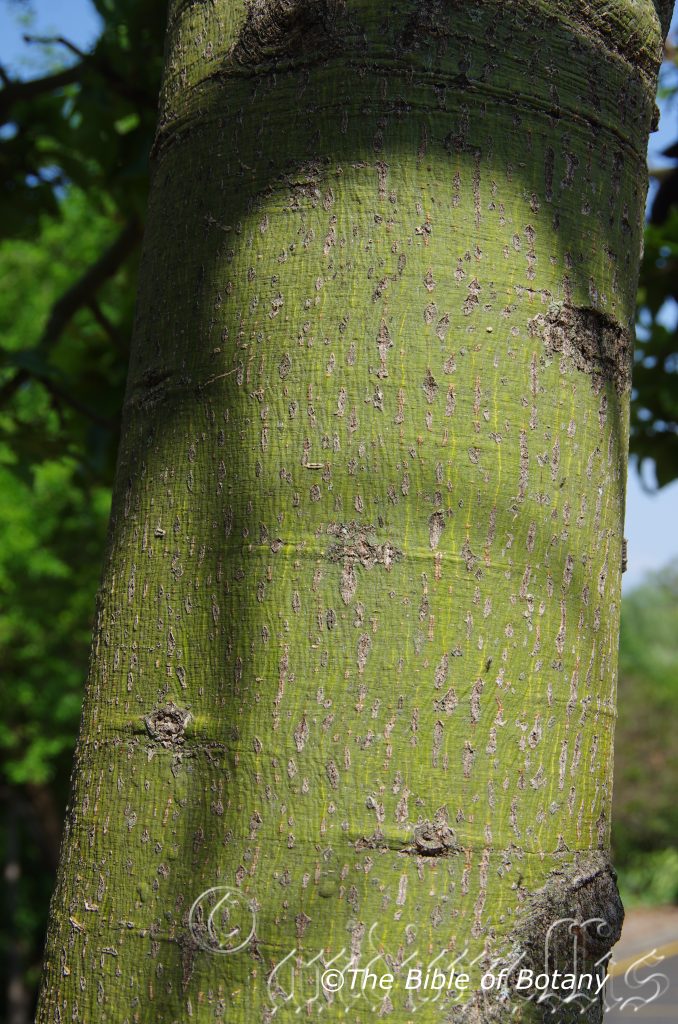
Mount Cootha Botanic Gardens Qld.

Mount Cootha Botanic Gardens Qld.
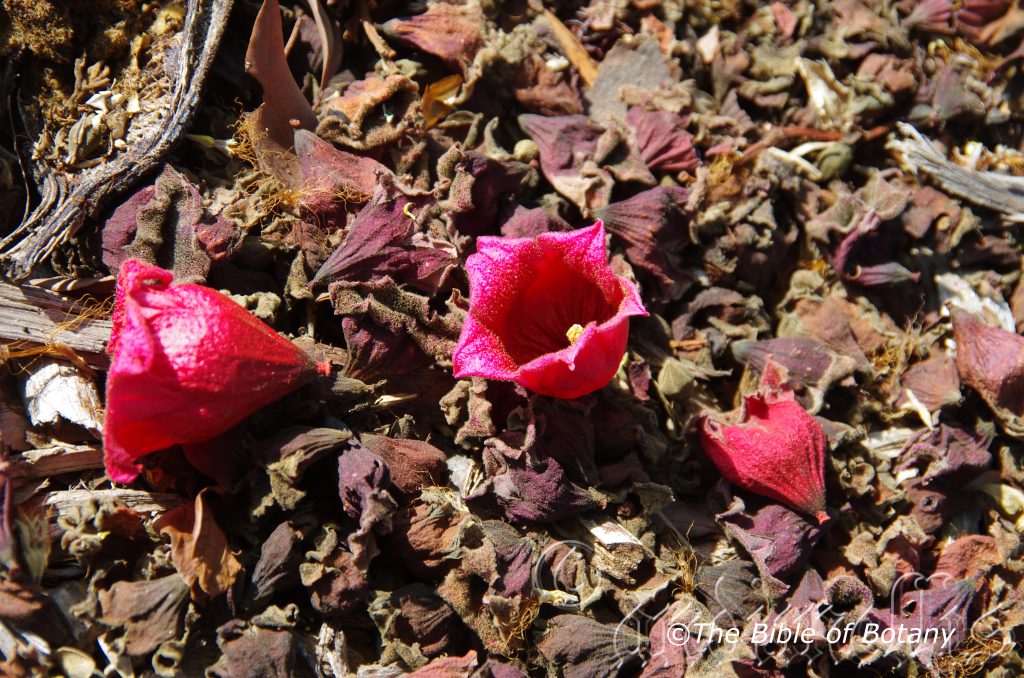
Mount Cootha Botanic Gardens Qld.
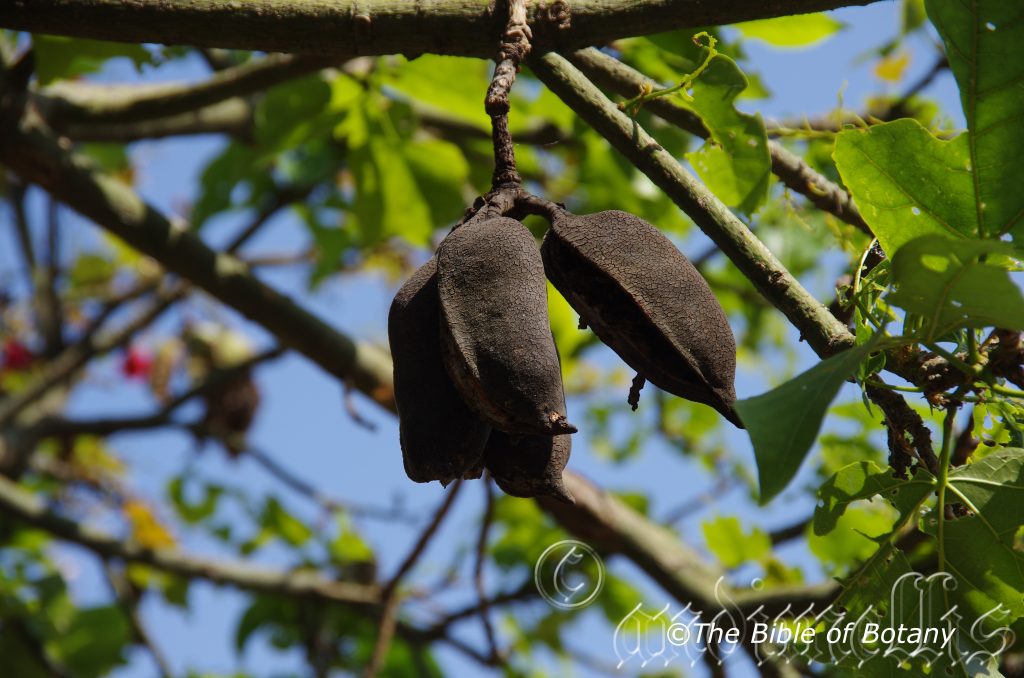
Mount Cootha Botanic Gardens Qld.
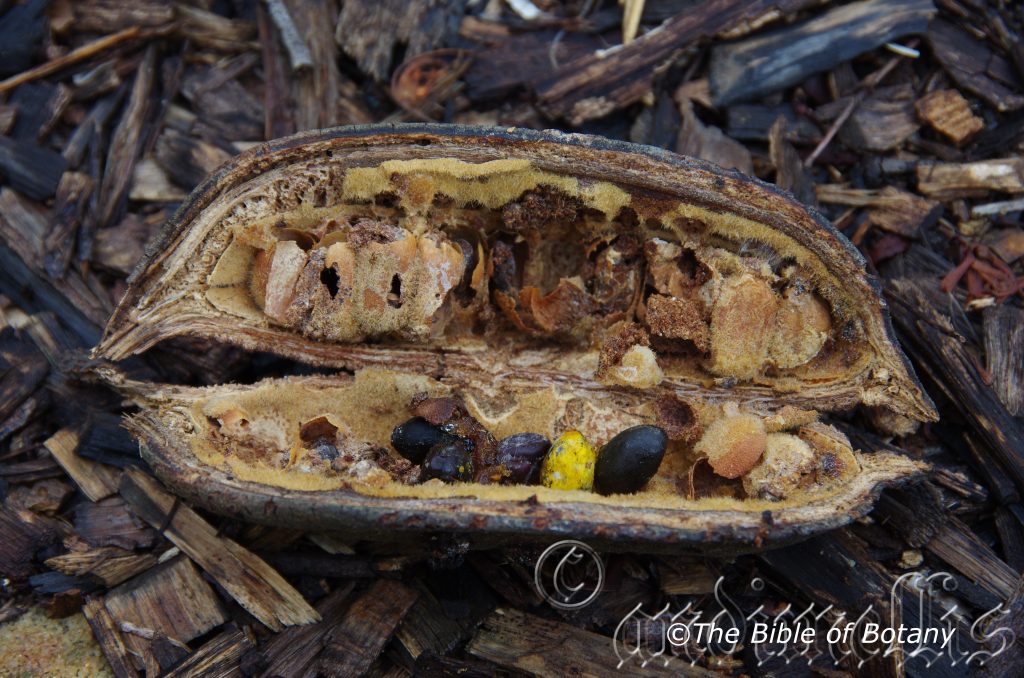
Mount Cootha Botanic Gardens Qld.
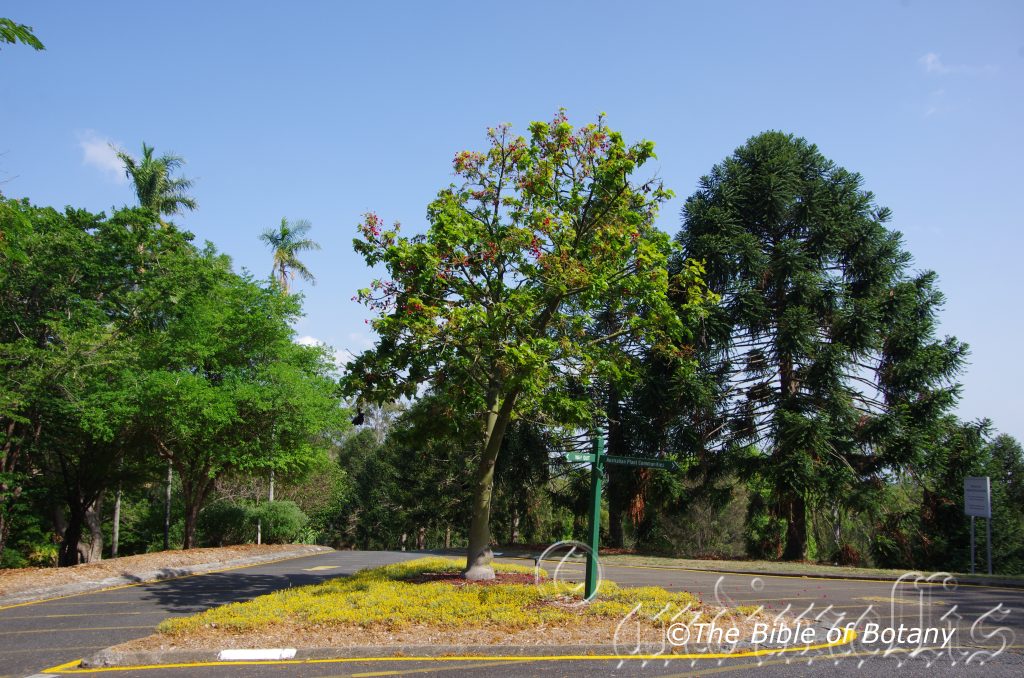
Mount Cootha Botanic Gardens Qld.
Brachychiton vinicolor
Classification:
Class: Rosids
Order: Malvales
Family: Malvaceae
Genus: From Brachus, which is Ancient Greek for short and Khiton, which is Ancient Greek for a tunic or long dress worn born women. It refers to the flower’s bracts draping around the flowers similar to a short tunic.
Specie: From V?num which is Latin for grapes and Color, which is Latin for a hue or density of a colour. It refers to a structure or organ, which are the colour of grapes.
Sub specie:
Common Name:
Distribution:
Brachychiton x vinicolor is vulnerable and found in a few isolated colonies in an area bounded by Mount Berryman in the north west to Canungra in far south eastern Queensland and the Richmond River in far north eastern New South Wales.
https://avh.ala.org.au/occurrences/search?taxa=Brachychiton+x+vinicolor#tab_mapView
Habitat Aspect Climate:
Brachychiton x vinicolor prefers full sun to dappled shade. It is found in Araucarian notophyll vine forest and dry rainforests. The altitude ranges from 5 meters ASL to 600 meters ASL.
The temperatures range from 2 degrees August to 38 degrees in February.
The rainfalls range from lows of 800mm to an average of 1250mm annually.
Soil Requirements:
Brachychiton x vinicolor prefers better quality loams to medium clays. The soils are very well drained and derived from decomposed black basalt. The soils pH ranges from a pH of 5pH to 6.5pH. It does not tolerate water logged soils. Non saline to moderately saline soils are tolerated.
Height & Spread:
Wild Plants:8m to 10m by 4m to 6m.
Characteristics:
Brachychiton x vinicolor is a natural hybrid cross between Brachychiton aceriifolium with Brachychiton discolor. My description is off one tree.
Brachychiton x vinicolor’s trunk is straight and often not branching until a fifth of its height is attained. The trunks are sparsely fissured longitudinally and are pale grey-brown for the lower third to half of the bole especially where the trees have plenty of sunlight. The upper section of the trunk through to the new growth are grass green to deep green. The trunk is glabrous with resinous bumps.
The leaves of Brachychiton x vinicolor are variable being simple elliptical, ovate or semi palmate to palmate with 3 to 7 shallow lobes. Adult leaves are somewhat deltoid or have shallow lobes on mature trees. Palmate leaves measure 100mm to 160mm in length by 140mm to 185mm on mature trees while deltoid leaves measure 140mm to 190mm in length by 70mm to 95mm. The bases are slightly cordate to rounded while the apexes are broad acute to narrow acute. The concolourous laminas are glossy, grass-green and glabrous. The margins are entire and slightly undulating. The mid vein is prominent on the lower lamina and clearly visible on the upper lamina. Petioles measure 10mm to 20mm in length.
Brachychiton x vinicolor is partially to wholly deciduous towards the end of the dry season in late winter. In good seasons the trees may retain all the previous season’s foliage.
The inflorescences of Brachychiton x vinicolor are panicles born from the terminals. The bright red to crimson campulate flowers have 5 lobes. The corolla measure 12mm to 20 mm in length by 10mm to 16mm in diameter. The broad acute to accuminate lobes measure 7mm to 10mm in length. The corolla and lobes are moderately covered in rusty hirsute and stellate hairs both externally and internally. The pedicles measure 10mm to 20mm in length and are bent in the middle.
The tree was in full bloom on the 10th of January.
Follicles are green follicles turn black with anatomised cracking externally and fawn internally. They measure 80mm to 100mm in length by 35mm to 40mm in width and hang onto the tree for many months. The peduncles measure 55mm to 80mm in length.
There are 22 seeds in each follicle have an endocarp which is densely covered in rusty, yellow or golden brown hispid and tomentose hairs. The seeds measure 10mm to 12mm in diameter by 5mm to 7mm in width.
The ovoidal seeds are yellow with a black coriaceous testa and measure 10mm to 12mm in length by 5mm to 7mm in diameter. Seeds from the previous season were still hanging from the tree.
Wildlife:
Brachychiton x vinicolor supplies good quantities of honey for native bees and shelter for native animals in semi desert areas of the country.
The seeds were roasted by Aborigines and have a mild walnut flavour. The roots were also eaten.
Cultivation:
It would make an excellent good fire retardant medium tree.
* Fire retardant plants act as radiant heat screens and absorb more heat from an approaching fire without burning.
* Fire retardant trees are able reduce wind speed near a house or out buildings.
* Fire retardant also trap embers and sparks carried by the wind.
* Fire retardant ground covers are able to catch burning embers without catching fire themselves, and also slow the travel of a fire through debris and litter on the ground.
All Brachychiton species make great accent plants for larger gardens and Brachychiton x vinicolor is no exception.
This is an attractive shaped tree is slower in growth in its initial years of planting out in the garden. It will reach its full potential after 10 to 12 years. As it is hardy on most soil types it is easy to grow. The trees are suitable for all epiphytic plants, which prefer light shade in the warmer months and can endure full sun at the end of the dry season. It is ideal for around homesteads west of the Great Dividing Range where it can handle drought conditions once established.
Propagation:
Seeds: Brachychiton x vinicolor seeds do not require treatment before sowing. Sow the seeds directly into a seed raising mix. When the seedlings are 50mm to 80mm tall, prick them out and plant them into 50mm native tubes using a seed raising mix.
Fertilize using Seaweed, fish emulsion or organic chicken pellets soaked in water on an alternate basis. Fertilize every two months until the plants are established then annually in early September or March to maintain health, vitality and better flowering.
Once the seedlings reach 200 to 250mm in height plant them out into their permanent position. For a good park feature plant three or four trees with 10 meters centers.
Further Comments from Readers:
“Hi reader, it seems you use The Bible of Botany a lot. That’s great as we have great pleasure in bringing it to you! It’s a little awkward for us to ask, but our first aim is to purchase land approximately 1,600 hectares to link several parcels of N.P. into one at The Pinnacles NSW Australia, but we need your help. We’re not salespeople. We’re amateur botanists who have dedicated over 30 years to saving the environment in a practical way. We depend on donations to reach our goal. If you donate just $5, the price of your coffee this Sunday, We can help to keep the planet alive in a real way and continue to bring you regular updates and features on Australian plants all in one Botanical Bible. Any support is greatly appreciated. Thank you.”
In the spirit of reconciliation we acknowledge the Bundjalung, Gumbaynggirr and Yaegl and all aboriginal nations throughout Australia and their connections to land, sea and community. We pay our respect to their Elders past, present and future for the pleasures we have gained.

Morgan’s Camp Trail Fortis Creek National Park NSW
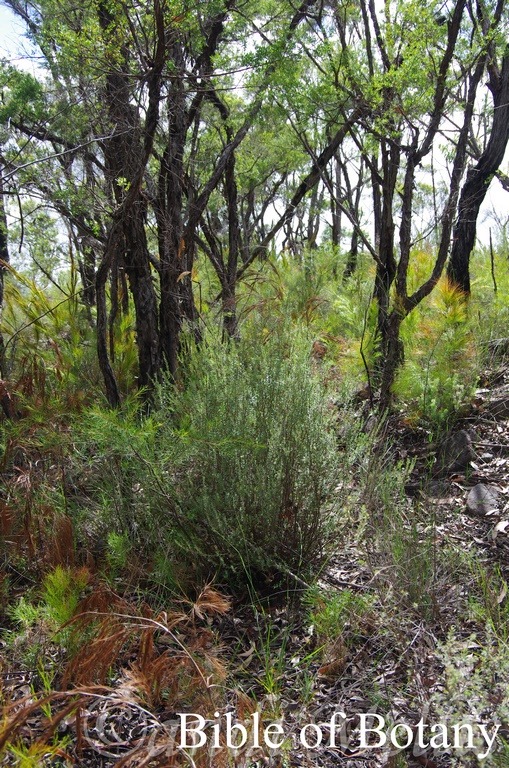
Sherwood Nature Reserve NSW
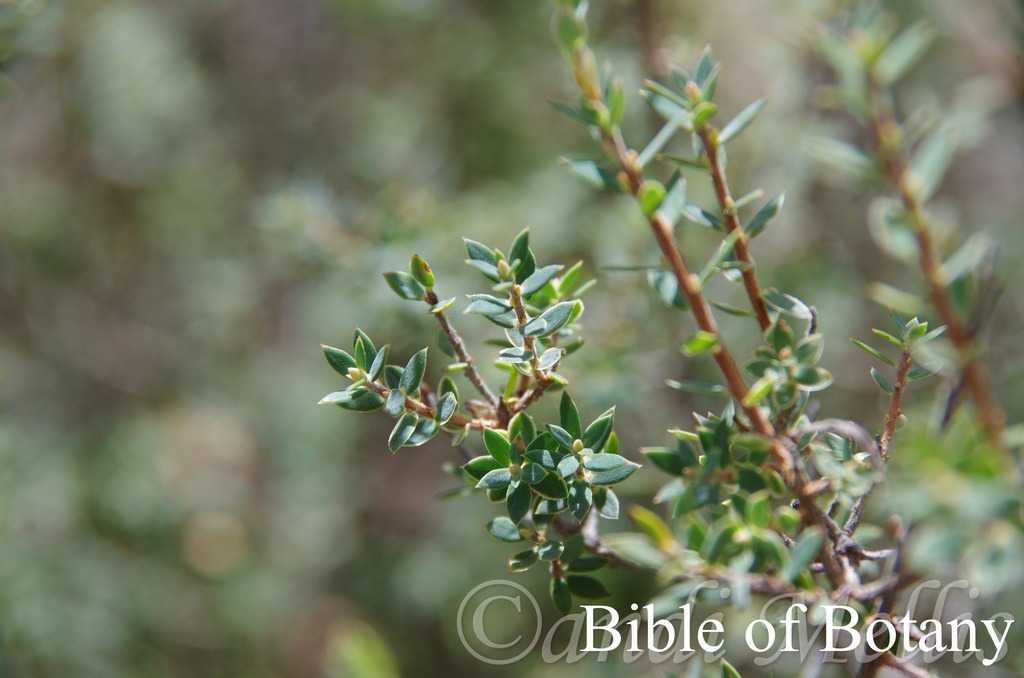
Sherwood Nature Reserve NSW

Banyabba National Park NSW
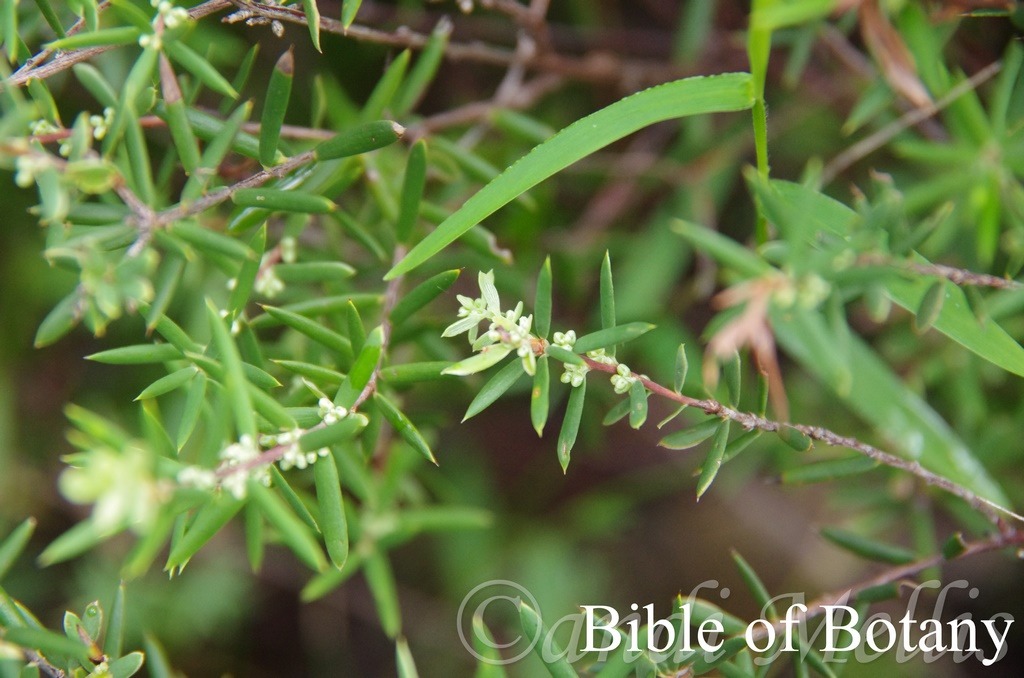
Banyabba National Park NSW
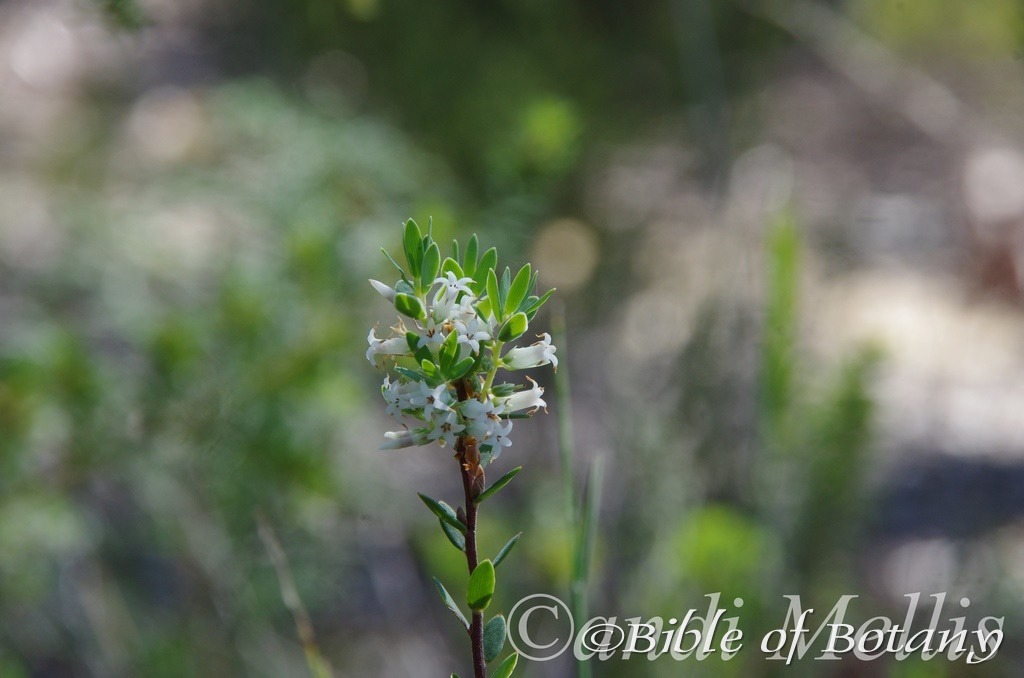
Morgan’s Camp Trail Fortis Creek National Park NSW
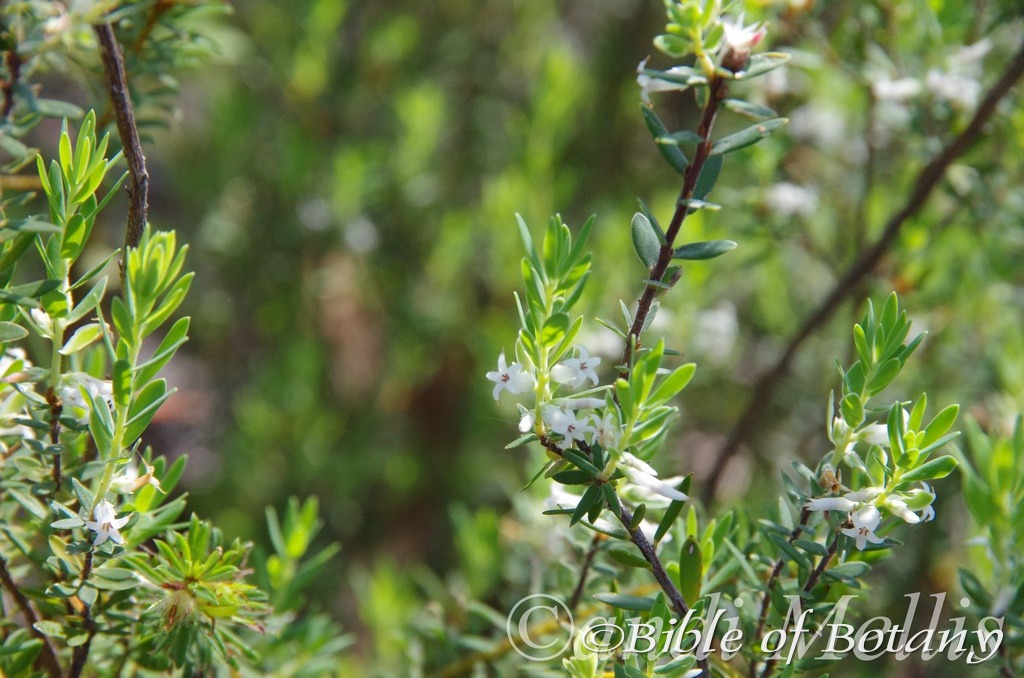
Morgan’s Camp Trail Fortis Creek National Park NSW
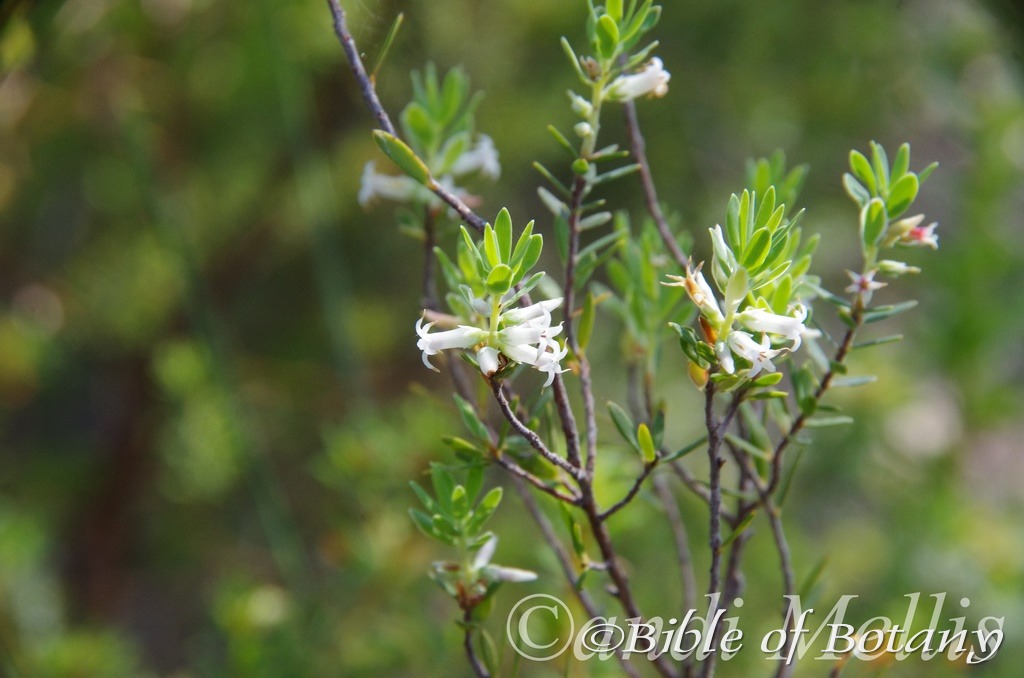
Morgan’s Camp Trail Fortis Creek National Park NSW
Brachyloma daphnoides
Classification:
Unranked: Eudicots
Unranked: Asterids
Order: Ericales
Family: Ericaceae
Genus: From Brachys, which is Ancient Greek for short and Combe or Loma, which are Greek for neat hair. It refers to the short hairs which are located in the floral tube.
Specie: From Dáphn?, which is Ancient Greek for the name of the nymph who was changed into a Laurel to escape Apollo and Eîdos/Oides, which is Ancient Greek for alike or similar to. It refers to plants, which resemble the exotic Daphne genus.
Variety: Brachyloma daphnoides var. daphnoides. From Dáphn?, which is Ancient Greek for the name of the nymph who was changed into a Laurel to escape Apollo and Eîdos/Oides, which is Ancient Greek for alike or similar to. It refers to plants, which resemble the exotic Daphne genus.
Variety: Brachyloma daphnoides var. glabrum. From Glabrum, which is Latin for glabrous or smooth and hairless. It refers to structures and organs, which have no scales or hairs.
Variety: Brachyloma daphnoides var. latiusculum. From Latusculum, which is Latin for to have a small side or a little flank. It refers to capsules which have shorter sides than other species in the genus.
Common Name: Heath Daphne.
Distribution:
Brachyloma daphnoides var daphnoides and Brachyloma daphnoides var glabrum are found south from the Byfield National Park, across to Carnarvon Gorge in central coastal Queensland then south to Beechworth in northern Victoria. It then is found west to the Murray Sunset National Park, the Grampians in western Victoria and Nulungeri and Grant in eastern South Australia. They are found on the western slopes, on and east of the Great Dividing Range to the coast.
Brachyloma daphnoides var. latiusculum is restricted to the Pilliga scrub formation in New South Wales.
https://avh.ala.org.au/occurrences/search?taxa=Brachyloma+daphnoides#tab_mapView
Habitat Aspect Climate:
Brachyloma daphnoides prefers full sun to dappled shade. It grows in dry Eucalyptus forests and open woodlands. The altitude ranges from 5 meters ASL to 1000 meters ASL.
The temperatures range from minus 3 degrees in July to 43 degrees in January.
The rainfall ranges from lows of 300mm to 1000mm average per annum.
Soil Requirements:
Brachyloma daphnoides prefers sandy loams, light gravelly clays to heavy clays. The soils are usually derived from decomposed brown basalts, black basalts, shale, metamorphic rocks and siltstones. The soils pH ranges from 4.5pH to 6pH. It does not tolerate of water logged soils. Non saline soils to moderately saline soils are tolerated.
Height & Spread: 0.4m to 1.5m by 0.6m to 1m.
Characteristics:
Brachyloma daphnoides var. daphnoides main stems are grey–brown to purple-grey and glabrous. The young and juvenile stems are pale green and sparsely covered in short, white hispid to villous hairs.
Brachyloma daphnoides var. glabrum main stems are grey–brown to pale brown and glabrous. The young and juvenile stems are pale green and glabrous to moderately scabrous.
Brachyloma daphnoides var. latiusculum main stems are grey–brown to purple-grey and glabrous. The young and juvenile stems are pale green and densely covered in short, white hispid to villous hairs.
The alternate but crowded leaves of Brachyloma daphnoides var. daphnoides are simple narrow elliptical, elliptic, obovate, rhombic or rhombic-ovate and measure 2.5mm to 19mm in length by 1mm to 4.5mm in width. The leaf bases are rounded while the apexes are broad acute to acute-obtuse. The discolourous laminas are mid green and mainly glabrous and glossy on the upper laminas while the lower laminas are paler and dull. The laminas are flat. The margins are entire and sparsely covered in white ciliate hairs. The parallel veins are slightly prominent on the lower laminas and are not visible from the upper laminas. The glabrous petioles are pale yellow-green and measure 1mm to 1.2mm in length. The young and juvenile leaves are pale green and sparsely covered in short, white hispid to villous hairs.
The alternate but crowded leaves of Brachyloma daphnoides var. glabrum are simple narrow elliptical, elliptic, ovate, obovate, oblong or lanceolate and measure 2mm to 12mm in length by 1mm to 5.5mm in width. The leaf bases are rounded while the apexes are broad acute to acute-obtuse. The discolourous laminas are mid green and mainly glabrous and glossy on the upper laminas while the lower laminas are paler and dull. The laminas are flat. The margins are entire and glabrous or sparsely covered in white ciliate hairs. The parallel veins are slightly prominent on the lower laminas and are not visible from the upper laminas. The glabrous petioles are pale yellow-green and measure 1mm to 1.2mm in length. The young and juvenile leaves are pale green and glabrous to moderately scabrous.
The alternate but crowded leaves of Brachyloma daphnoides var. latiusculum are simple elliptic, ovate or orbicular and measure 1.5mm to 8mm in length by 1mm to 4.5mm in width. The leaf bases are rounded while the apexes are broad acute to acute-obtuse. The concolourous laminas are mid green and slightly scabrous to being moderately covered in white villous hairs on the upper laminas while the lower laminas are paler and less scabrous or sparsely covered in white villous hairs. The laminas are flat. The margins are entire and sparsely covered in white ciliate hairs. The parallel veins are slightly prominent on the lower laminas and are not visible from the upper laminas. The glabrous petioles are pale yellow-green and measure 1mm to 1.2mm in length. The young and juvenile leaves are pale green and densely covered in short, white hispid to villous hairs.
The inflorescences of Brachyloma daphnoides var. daphnoides are single or in small clusters of 2 to 5 flowers born singularly from the leaf axis. The leafy, green, caduceus bracts are glabrous on the upper surfaces while the lower surfaces are glabrous or covered in white pulverulent hairs. The bracts measure 0.5mm to 2.5mm in length. The leafy, green, contorted bracteoles are ovate, glabrous on the upper surfaces while the lower surfaces are glabrous or covered in white pulverulent hairs. The bracteoles measure 1mm to 1.7mm in length. The sepals measure 1.4mm to 2mm in length. The white to cream corollas are usually flask or at times tubular and measure 4.3mm to 5.5 mm in length. The linear to narrow oblong-elliptical lobes measure 1.8mm to 2.4mm in length. The pedicels measure 0.4mm to 0.6mm in length.
The inserted white stamens measure 4mm to 5.2mm in length including the fawn anthers.
The pascal green pistil is glabrous and measures 4mm to 5.2mm in length. The flowers appear from August to December.
The inflorescences of Brachyloma daphnoides var. glabrum’s corollas are white to cream with red to carmine-red on the lobes and bases. The pistils are glabrous.
The inflorescences of Brachyloma daphnoides var. latiusculum corollas are white. The style is covered in white pulverulent hairs in the most northern populations.
The fruits of Brachyloma daphnoides are depressed, globose berries. The berries measure 2mm to 3mm in length by 3.5mm to 4mm in diameter. The pale blue-green faintly ribbed fruits turn yellow-brown when they are ripe. The pistil is persistent on the fruit.
Wildlife:
Brachyloma daphnoides’s flowers and fruits are eaten by numerous honeyeaters and fruit eating birds as well as small native marsupials and native rodents. The fruits are edible and taste similar to poor quality, slightly astringent plum.
The flowers are edible and have a sweet nectar flavour.
Cultivation:
Brachyloma daphnoides is a small shrub that should be more widely grown in bush garden situations. Place it along fence lines to give small fauna a continuous and safe corridor. In cultivation it will grow 0.8 meters to 1.2 meters by 0.6 meters to 1 meter in diameter in a sunny, moist, open position. If it is grown in the shade they tend to become more open in habit whereas sun grown plants tipped pruned are naturally bushy.
Brachyloma daphnoides make ideal contributions to a dry heath garden. Here it can be used as the taller growing plant scattered throughout the heath scene or the finer leaf plant, planted between broad-leaf plants like Acacia sauveolens, Acacia fimbriata nursery variety dwarf or Melaleuca sp. hinchinbrook. These plants can look great together if planted in the background with smaller natives in front which will give great depth to the bed. When you use Brachyloma daphnoides with large leaf natives use 2 or 3 together otherwise the larger leaf plants become overpowering. When you design a flat heath garden which it is well suited don’t use contours to display the plants as heath lands are almost always flat or have a slight rise.
Plants must be planted close together and be short so you can see over the tallest ones with the exception of one or two plants at the most. These will be feature plants. The idea is to achieve a feeling of expansive flatness. This can be achieved with using the Brachyloma daphnoides’s small green elliptical leaves and having them contrasting with finer pale green or soft grey to glaucous coloured foliage. Use a lot of procumbent plants like Carpobrotus edulis or Melaleuca pearsonii. Mix it with other smaller shrubs so none of them dominate the scene but blend in to give a mosaic of foliage colours that you oversee. Here I immediately think of Actinotis helianthi or Grevillea thelemanniana for two great contrasting foliage.
I believe there is a spot in every garden for Brachyloma daphnoides whether it is for bird attraction, the making of wildlife corridors or for establishing a heath garden Brachyloma daphnoides have a lot to offer the home gardener. Only your imagination can limit its uses.
Propagation:
Seeds: Sow seeds in early spring to early autumn in the north into a seed raising mix covering them with 2mm of mix. Sow the seeds sparingly. Keep the seed tray in an airy position that receives plenty of sunlight as seedlings are susceptible to root rot fungi like Rhyzoctonia. Rhyzoctonia are a group of fungi that thrive in dark, moist humid areas and attack the roots of plants especially those that do not like water logging or have a preference for drier conditions.
Germination is unreliable, slow and erratic so be patient. When the seedlings are 20mm to 40mm tall, prick them out and plant them into 50mm native tubes using a seed raising mix.
Fertilize using Seaweed, fish emulsion or organic chicken pellets soaked in water on an alternate basis. Fertilize every two months until the plants are established then annually in early September or March to maintain health, vitality and better flowering.
Once the seedlings reach 100mm in height they can be tipped pruned to encourage a bushier plant.
Once they reach 150mm to 200mm in height again lightly tip prune and plant them out into their permanent position. Mass plantings can be achieved with spacing of 1 meter centers.
Cuttings: Cuttings are also difficult to strike and are unreliable but are worth the effort for small numbers. Try using 50mm to 70mm long half ripened material and fully hardened material when growing from cuttings from the present season’s growth. No particular period is any better so try them when you feel ready.
1 Prepare the cutting mix by adding one third sharp clean river sand, one third peat and one third perlite. These ingredients are sterile,
2 Select good material from non diseased plants,
3 Select semi green stems for cuttings. Look for a stem with two or three nodes,
4 Place the cutting on a flat, hard surface, and make a clean slice through the middle of the lower node on an angle towards the base, with a sterilized sharp knife or razor blade or remove half the leaves from the bottom section being careful not to tear the bark. You could try taking a 5mm to 10mm slice off the bark from the base of the cutting on one side. – This scarification of the node will increase the chances of roots emerging from this spot. Now remove all but one or two the leaves, leaving the apex leaves in tact. If the leaves are very large in proportion to the stem, cut off the apical halves.
5 Try using rooting hormone of various strengths if at first you do not succeed. Fill a saucer with water, and place some rooting hormone into another container like a bottle top. Dip the node end of the cutting into the water and then into the rooting hormone. Tap off any excess hormone,
6 Use a small dipple stick or old pencil to poke a hole into the soilless potting mix. Ensure the hole is slightly larger than the stem diameter and be careful not to wipe the rooting hormone off the cuttings base, place the cuttings in a pattern ensuring the cuttings are not touching each other,
7 I like to place the pots in Plastic bags to help maintain temperature and moisture. Place in a semi shaded place like under 50mm shade cloth.
8 When the cuttings have struck, open the bag to allow air circulation for a few days to a week,
9 Once hardened off remove the cuttings from the bag and fertilize with seaweed and allow further hardening for a few more days,
10 Transplant into a good potting mix to grow on. Good luck.
Further Comments from Readers:
“Hi reader, it seems you use The Bible of Botany a lot. That’s great as we have great pleasure in bringing it to you! It’s a little awkward for us to ask, but our first aim is to purchase land approximately 1,600 hectares to link several parcels of N.P. into one at The Pinnacles NSW Australia, but we need your help. We’re not salespeople. We’re amateur botanists who have dedicated over 30 years to saving the environment in a practical way. We depend on donations to reach our goal. If you donate just $5, the price of your coffee this Sunday, We can help to keep the planet alive in a real way and continue to bring you regular updates and features on Australian plants all in one Botanical Bible. Any support is greatly appreciated. Thank you.”
In the spirit of reconciliation we acknowledge the Bundjalung, Gumbaynggirr and Yaegl and all aboriginal nations throughout Australia and their connections to land, sea and community. We pay our respect to their Elders past, present and future for the pleasures we have gained.
Brachyloma saxicola
Classification:
Unranked: Eudicots
Unranked: Asterids
Order: Ericales
Family: Ericaceae
Genus: From Brachys, which is Ancient Greek for short and Combe or Loma, which are Greek for neat hair. It refers to the short hairs which are located in the floral tube.
Specie: From Saxum, which is Latin for a rock and Kola, which is Ancient Greek or Cola, which is Latin for to dwell. It refers to plants, which prefer rocky or boulder type habitats.
Sub specie:
Common Name:
Distribution:
Brachyloma saxicola is restricted in its distribution to the Northern Tablelands and Mount Bellmore State Forest of New South Wales.
https://avh.ala.org.au/occurrences/search?taxa=Brachyloma+saxicola#tab_mapView
Habitat Aspect Climate:
Brachyloma saxicola prefers full sun to dappled shade. It grows in dry Eucalyptus forests, dry sub-tropical rainforests, along drainage lines, depressions and in heaths in sheltered or exposed positions. The altitude ranges from 5 meters ASL to 950 meters ASL.
The temperatures range from minus 5 degrees in July to 40 degrees in January.
The rainfalls range from lows of 900mm to 1400mm average per annum.
Soil Requirements:
Brachyloma saxicola prefers skeletal to deep sandy loams, fatty sands or gritty sandy loams especially among large boulders. The soils are usually derived from partially decomposed or decomposed granites. The soils pH ranges from 4.5pH to 5.5pH. It does not tolerate water logged soils though water may pond in depressions, against rocks and be wet in drainage lines for short periods. Non saline soils to slightly saline soils are tolerated.
Height & Spread: 2.5m to 4m by 1.5m to 2.5m
Characteristics:
Brachyloma saxicola main stems are erect pale reddish–brown to mid pinkish-brown and moderately covered in white villous hairs. The young and juvenile stems are mid pinkish-brown and densely covered in white villous hairs.
The alternate to crowded leaves of Brachyloma saxicola are simple thick, lanceolate, elliptical to oblong and measure 5mm to 21mm in length by 1.5mm to 5mm in width. The leaf bases taper to the flattened petioles while the apexes are acute to broad acute with a long rigid spine. The discolourous laminas are deep blue-green and glabrous or sparsely covered in white villous hairs near the base on the upper laminas while the lower laminas are paler. The adaxially laminas at times are scabrous near the bases. The laminas are flat. The margins are entire or rarely serrulata. The parallel veins are very slightly prominent on the lower laminas but are distinctly visible. The veins are not visible from the upper laminas. The flattened petioles are covered in white villous hairs and measure 1mm to 1.2mm in length.
The inflorescences of Brachyloma saxicola are born singularly from the leaf axils. The leafy, pale green, translucent, caduceus bracts are glabrous and measure 1mm to 1.5mm in length. The strongly keeled, pale pink, translucent bracteoles are ovate, glabrous and covered in white ciliate hairs. The bracteoles measure 2mm to 3mm in length. The contorted sepals are covered in white ciliate hairs and measure 3mm to 4mm in length. The white to cream or rarely pink papillose, corollas are flask and strongly constricted below the lobes. The corollas measure 2.3mm to 3.3mm in length. The triangular, lobes are papillose and measure 1.5mm to 2mm in length. The pedicels are covered in white villous hairs and measure 1mm to 1.2mm in length.
The inserted filaments measure 2.3mm to 3.2mm in length. The red or white anthers are papillose.
The 5 locule ovary is waxy above. The style is papillose and measures 2.3mm to 3.3mm in length. The flowers appear from August to December.
The fruits of Brachyloma saxicola are flattened globose berries. The berries measure 3mm to 4mm in length by 4mm to 5mm in diameter. The pale blue-green fruits turn pale yellow-green when ripe. The pistil is persistent on the fruit.
Wildlife:
Brachyloma saxicola’s fruit are eaten by numerous honeyeaters and fruit eating birds as well as small native marsupials and native rodents. The fruits are edible and taste similar to poor quality slightly astringent plum.
Cultivation:
Brachyloma saxicola is a medium shrub that should be more widely grown in garden situations. It can be place along fence lines to give small fauna a continuous and safe corridor. In cultivation it will grow from 2 meters to 2.5 meters by 2 meters to 2.5 meters in diameter in a moist, sunny position in the open. If it is grown in the shade it tends to become more open in habit whereas sun grown plants are naturally bushy and more compact in size especially if that are tipped pruned.
Brachyloma saxicola makes an ideal contribution to a moist heath gardens. Here it can be used as the taller growing shrub scattered throughout a large heath garden scene or planted between broadleaf plants like Acacia sauveolens, Acacia fimbriata nursery variety dwarf or Melaleuca Hinchinbrook in the background. It looks great together if planted in the background with smaller natives in front which will give greater depth to the bed. When you use Brachyloma saxicola with large leaf natives use 2 or 3 in a ratio to 1 broad leaf plant otherwise the larger leaf plants become overpowering.
When you design a flat heath garden which Brachyloma saxicola is well suited don’t use contours to display the plants as heath lands are almost always flat or have a slight rise. Make the path narrow so you have to feel the plants as you walk through the garden bed. This gives an extra dimension which many people forget about when designing heath gardens. Plants must be planted close together and be short so you can see over the tallest ones with the exception of one or two plants at the most. These will be feature plants. The idea is to achieve a feeling of expansive flatness. This can be achieved with using the its small green elliptical leaves and having them contrasting with finer pale green or soft grey to glaucous coloured foliage. Use a lot of procumbent plants like Carpobrotus edulis or Melaleuca pearsonii. Mix them with other smaller shrubs so none of them dominate the scene but blend in to give a mosaic of foliage colours that you oversee. Here I immediately think of Actinotis helianthi or Grevillea thelemanniana for two great contrasting foliage.
I believe there is a spot in every garden for Brachyloma saxicola whether it is for bird attraction, the making of wildlife corridors or for establishing a heath garden Brachyloma saxicola have a lot to offer the home gardener. Only your imagination can limit its uses.
Propagation:
Seeds: Sow seeds in early spring to early autumn in the north into a seed raising mix covering them with 2mm of mix. Sow the seeds sparingly. Keep the seed tray in an airy position that receives plenty of sunlight as seedlings are susceptible to root rot fungi like Rhyzoctonia. Rhyzoctonia are a group of fungi that thrive in dark, moist humid areas and attack the roots of plants especially those that do not like water logging or have a preference for drier conditions.
Brachyloma saxicola’s germination is unreliable, slow and erratic so be patient. When the seedlings are 20mm to 40mm tall, prick them out and plant them into 50mm native tubes using a seed raising mix.
Fertilize using Seaweed, fish emulsion or organic chicken pellets soaked in water on an alternate basis. Fertilize every two months until the plants are established then annually in early September or March to maintain health, vitality and better flowering.
Once the seedlings reach 100mm in height they can be tipped pruned to encourage a bushier plant.
Once they reach 150mm to 200mm in height again lightly tip prune and plant them out into their permanent position. Mass plantings can be achieved with spacing of 1 meter centers.
Cuttings: Cuttings are also difficult to strike and are unreliable but are worth the effort for small numbers. Try using 50mm to 70mm long half ripened material and fully hardened material when growing from cuttings from the present season’s growth. No particular period is any better so try them when you feel ready.
1 Prepare the cutting mix by adding one third sharp clean river sand, one third peat and one third perlite. These ingredients are sterile,
2 Select good material from non diseased plants,
3 Select semi green stems for cuttings. Look for a stem with two or three nodes,
4 Place the cutting on a flat, hard surface, and make a clean slice through the middle of the lower node on an angle towards the base, with a sterilized sharp knife or razor blade or remove half the leaves from the bottom section being careful not to tear the bark. You could try taking a 5mm to 10mm slice off the bark from the base of the cutting on one side. – This scarification of the node will increase the chances of roots emerging from this spot. Now remove all but one or two the leaves, leaving the apex leaves in tact. If the leaves are very large in proportion to the stem, cut off the apical halves.
5 Try using rooting hormone of various strengths if at first you do not succeed. Fill a saucer with water, and place some rooting hormone into another container like a bottle top. Dip the node end of the cutting into the water and then into the rooting hormone. Tap off any excess hormone,
6 Use a small dipple stick or old pencil to poke a hole into the soilless potting mix. Ensure the hole is slightly larger than the stem diameter and be careful not to wipe the rooting hormone off the cuttings base, place the cuttings in a pattern ensuring the cuttings are not touching each other,
7 I like to place the pots in Plastic bags to help maintain temperature and moisture. Place in a semi shaded place like under 50mm shade cloth.
8 When the cuttings have struck, open the bag to allow air circulation for a few days to a week,
9 Once hardened off remove the cuttings from the bag and fertilize with seaweed and allow further hardening for a few more days,
10 Transplant into a good potting mix to grow on. Good luck.
Further Comments from Readers:
“Hi reader, it seems you use The Bible of Botany a lot. That’s great as we have great pleasure in bringing it to you! It’s a little awkward for us to ask, but our first aim is to purchase land approximately 1,600 hectares to link several parcels of N.P. into one at The Pinnacles NSW Australia, but we need your help. We’re not salespeople. We’re amateur botanists who have dedicated over 30 years to saving the environment in a practical way. We depend on donations to reach our goal. If you donate just $5, the price of your coffee this Sunday, We can help to keep the planet alive in a real way and continue to bring you regular updates and features on Australian plants all in one Botanical Bible. Any support is greatly appreciated. Thank you.”
In the spirit of reconciliation we acknowledge the Bundjalung, Gumbaynggirr and Yaegl and all aboriginal nations throughout Australia and their connections to land, sea and community. We pay our respect to their Elders past, present and future for the pleasures we have gained.
Brachyloma scortechinii
Classification:
Unranked: Eudicots
Unranked: Asterids
Order: Ericales
Family: Ericaceae
Genus: From Brachys, which is Ancient Greek for short and Combe or Loma, which are Greek for neat hair. It refers to the short hairs which are located in the floral tube.
Specie: Is named in honour of Scortechini; 1845-1886, who was born in the Papal states of the time in Italy. He collected plant material from around Stanthorpe and the Logan area in Australia.
Sub specie:
Common Name:
Distribution:
Brachyloma scortechinii is restricted to the coastline south from Burrum Coast National Park in central coastal Queensland to Illuka in northern New South Wales. There is an isolated population near Darawank National Park near Foster. It is also found on Fraser Island and Stradbroke Island.
https://avh.ala.org.au/occurrences/search?taxa=Brachyloma+scortechinii#tab_mapView
Habitat Aspect Climate:
Brachyloma scortechinii prefers full sun to dappled shade. It is restricted to moist coastal heaths, wallums and coastal scrubs behind the frontal dunes. The altitude ranges from 3 meters ASL to 50 meters ASL.
The temperatures range from 3 degrees in July to 38 degrees in January.
The rainfall ranges from lows of 1200mm to 2100mm average per annum.
Soil Requirements:
Brachyloma scortechinii prefers fine sands to sandy loams. The soils are derived from accumulated beach sands. The soils pH ranges from 6pH to 7pH. It does not tolerate water logged soils though high water tables maybe experienced annually for short periods. Non saline soils to moderately saline soils are tolerated as are salt laden winds.
Height & Spread: 0.3 to 1.5m by 0.5m to 1m
Characteristics:
Brachyloma scortechinii main stems are grey–brown to red-brown and scabrous. The young stems and juvenile stems are tan to reddish-brown and glabrous.
The alternate, very crowded leaves of Brachyloma scortechinii are simple narrow-oblong or oblong-obovate and measure 6mm to 12mm in length by 1mm to 2.7mm in width. The leaf bases are truncate while the apexes are acute with a sharp deep brown mucronate spine that measures up to 0.6mm. The discolourous laminas are deep green to sea-green on the upper laminas while the lower laminas are much paler to sub glaucous. The laminas are flat and decurve downwards at the margins. The margins are covered in minute teeth. The mid veins are clearly visible but not prominent on the lower laminas and are not visible from the upper laminas. The erect pale green, glabrous petioles bend at 90 degrees at the junction with the laminas and measure 0.6mm to 1mm in length.
Inflorescences of Brachyloma scortechinii are born singularly from the leaf axis. The leafy, pale green, translucent bracts are glabrous and measure 0.25mm to 0.3mm in length. The pale green bracteoles are oblong, glabrous and measure 0.6mm to 0.7mm in length. The contorted, ovate, pale green sepals are glabrous and measure 1.2mm to 1.5mm in length by 1.2mm to 1.5mm in width. The translucent white to pascal green or white with green sheen corollas is strongly bulbous and strongly constricted below the lobes. The corollas measure 2.5mm to 4mm in length by 2.5mm to 4mm in diameter at the bulb and across the corolla lobes. The ovate, lobes are glabrous and measure 1mm to 1.5mm in length. The pale green pedicels are glabrous and measure 2.5mm to 4mm in length.
The inserted, white filaments measure 2.5mm to 4mm in length including the white anthers.
The inserted, white pistil is glabrous and measures 2.5mm to 4mm in length. The flowers appear from April to May.
The fruits of Brachyloma scortechinii are depressed globose berries. The berries measure 3.8mm to 5.5mm in length by 6mm to 9mm in diameter. The sub glaucous-green fruits turn green-brown when ripe. The style is persistent on the berries.
Wildlife:
Brachyloma scortechinii’s fruit are eaten by numerous honeyeaters and fruit eating birds as well as small native marsupials and native rodents. The fruits are edible and taste similar to poor flavoured sultana but not as sweet. The flowers are edible and have a sweet nectar flavour.
Cultivation:
Brachyloma scortechinii is a magnificent looking shrub that should be more widely grown in garden situations. Place it along fence lines to give small fauna a continuous and safe corridor. In cultivation they will grow to 0.6 meters to 1 meter by 0.8 meters to 1.2 meters in diameter in a moist, sunny position. If it is grown in the shade it tends to become more open in habit whereas sun grown plants are naturally bushier and more compact in size.
Brachyloma scortechinii makes an ideal contribution to a small moist heath garden. Here it can be used as the taller growing plant scattered throughout heath scene or planted between broad leaf prostrate plants like Melaleuca pearsonii, Hibbertia dentata or Goodenia rotundifolia. These plants can look great together and will make the bed look a larger than it really is. When you use it with the above large leaf natives they can be used in the same ratio. The Brachyloma scortechinii is taller so its height will give it the strength to balance the scene.
When you design a flat heath garden which Brachyloma scortechinii is well suited don’t use contours to display the plants as heath lands are almost always flat or have a slight rise. Make the path narrow so you have to feel the plants as you walk through the garden bed. This gives an extra dimension which many people forget about when designing heath gardens. Plants must be planted close together and be short so you can see over the tallest ones with the exception of one or two plants at the most. These will be feature plants. The idea is to achieve a feeling of expansive flatness. This can be achieved with using the Brachyloma scortechinii’s small green elliptical leaves and having them contrasting with finer pale green or soft grey to glaucous coloured foliage. Use a lot of procumbent plants like Carpobrotus edulis, scaevola aemula or scaevola albida. Mix them with other smaller shrubs so none of them dominate the scene but blend in to give a mosaic of foliage colours that you oversee. Here I immediately think of Actinotis helianthi, Blandfordia species or Grevillea thelemanniana for two great contrasting foliage and structure.
I believe there is a spot in every garden for Brachyloma scortechinii whether it is for bird attraction, the making of wildlife corridors or for establishing a heath garden Brachyloma scortechinii have a lot to offer the home gardener. Only your imagination can limit its uses.
Propagation:
Seeds: Sow seeds in early spring to early autumn in the north into a seed raising mix covering them with 2mm of mix. Sow the seeds sparingly. Keep the seed tray in an airy position that receives plenty of sunlight as seedlings are susceptible to root rot fungi like Rhyzoctonia. Rhyzoctonia are a group of fungi that thrive in dark, moist humid areas and attack the roots of plants especially those that do not like water logging or have a preference for drier conditions.
Brachyloma scortechinii’s germination is unreliable, slow and erratic so be patient. When the seedlings are 20mm to 40mm tall, prick them out and plant them into 50mm native tubes using a seed raising mix.
Fertilize using Seaweed, fish emulsion or organic chicken pellets soaked in water on an alternate basis. Fertilize every two months until the plants are established then annually in early September or March to maintain health, vitality and better flowering.
Once the seedlings reach 100mm in height they can be tipped pruned to encourage a bushier plant.
Once they reach 150mm to 200mm in height again lightly tip prune and plant them out into their permanent position. Mass plantings can be achieved with spacing of 1 meter centers.
Cuttings: Again Brachyloma scortechinii cuttings are difficult to strike and are unreliable but are worth the effort for small numbers. Try using 50mm to 70mm long half ripened material and fully hardened material when growing from cuttings from the present season’s growth. No particular period is any better so try them when you feel ready.
1 Prepare the cutting mix by adding one third sharp clean river sand, one third peat and one third perlite. These ingredients are sterile,
2 Select good material from non diseased plants,
3 Select semi green stems for cuttings. Look for a stem with two or three nodes,
4 Place the cutting on a flat, hard surface, and make a clean slice through the middle of the lower node on an angle towards the base, with a sterilized sharp knife or razor blade or remove half the leaves from the bottom section being careful not to tear the bark. You could try taking a 5mm to 10mm slice off the bark from the base of the cutting on one side. – This scarification of the node will increase the chances of roots emerging from this spot. Now remove all but one or two the leaves, leaving the apex leaves in tact. If the leaves are very large in proportion to the stem, cut off the apical halves.
5 Try using rooting hormone of various strengths if at first you do not succeed. Fill a saucer with water, and place some rooting hormone into another container like a bottle top. Dip the node end of the cutting into the water and then into the rooting hormone. Tap off any excess hormone,
6 Use a small dipple stick or old pencil to poke a hole into the soilless potting mix. Ensure the hole is slightly larger than the stem diameter and be careful not to wipe the rooting hormone off the cuttings base, place the cuttings in a pattern ensuring the cuttings are not touching each other,
7 I like to place the pots in Plastic bags to help maintain temperature and moisture. Place in a semi shaded place like under 50mm shade cloth.
8 When the cuttings have struck, open the bag to allow air circulation for a few days to a week,
9 Once hardened off remove the cuttings from the bag and fertilize with seaweed and allow further hardening for a few more days,
10 Transplant into a good potting mix to grow on. Good luck.
Further Comments from Readers:
“Hi reader, it seems you use The Bible of Botany a lot. That’s great as we have great pleasure in bringing it to you! It’s a little awkward for us to ask, but our first aim is to purchase land approximately 1,600 hectares to link several parcels of N.P. into one at The Pinnacles NSW Australia, but we need your help. We’re not salespeople. We’re amateur botanists who have dedicated over 30 years to saving the environment in a practical way. We depend on donations to reach our goal. If you donate just $5, the price of your coffee this Sunday, We can help to keep the planet alive in a real way and continue to bring you regular updates and features on Australian plants all in one Botanical Bible. Any support is greatly appreciated. Thank you.”
In the spirit of reconciliation we acknowledge the Bundjalung, Gumbaynggirr and Yaegl and all aboriginal nations throughout Australia and their connections to land, sea and community. We pay our respect to their Elders past, present and future for the pleasures we have gained.
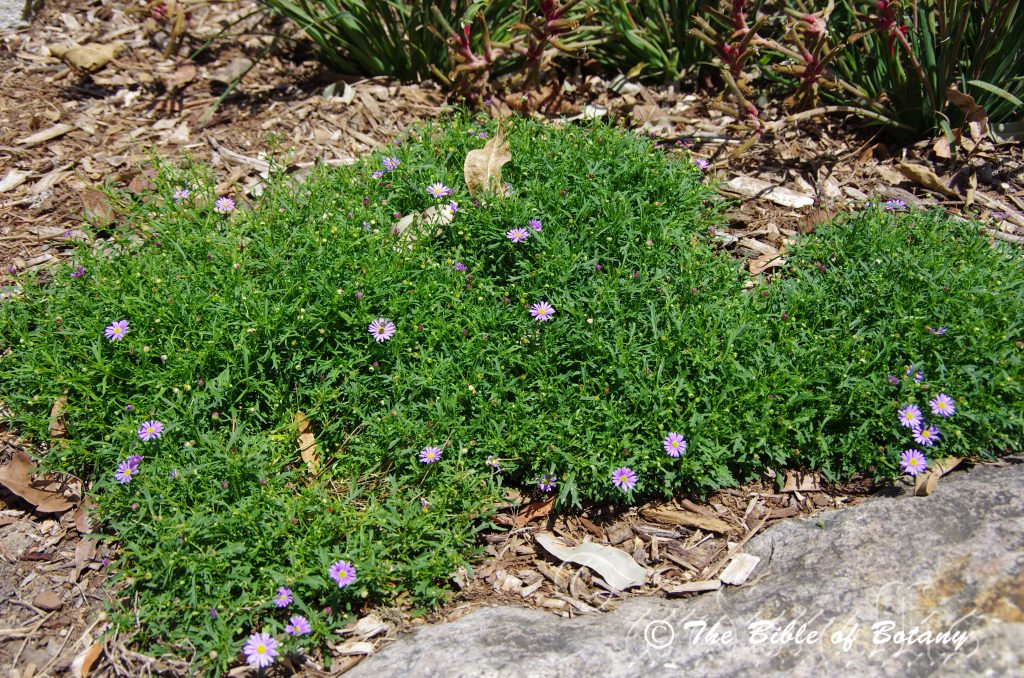
Roma Street Floral Gardens Brisbane Qld.
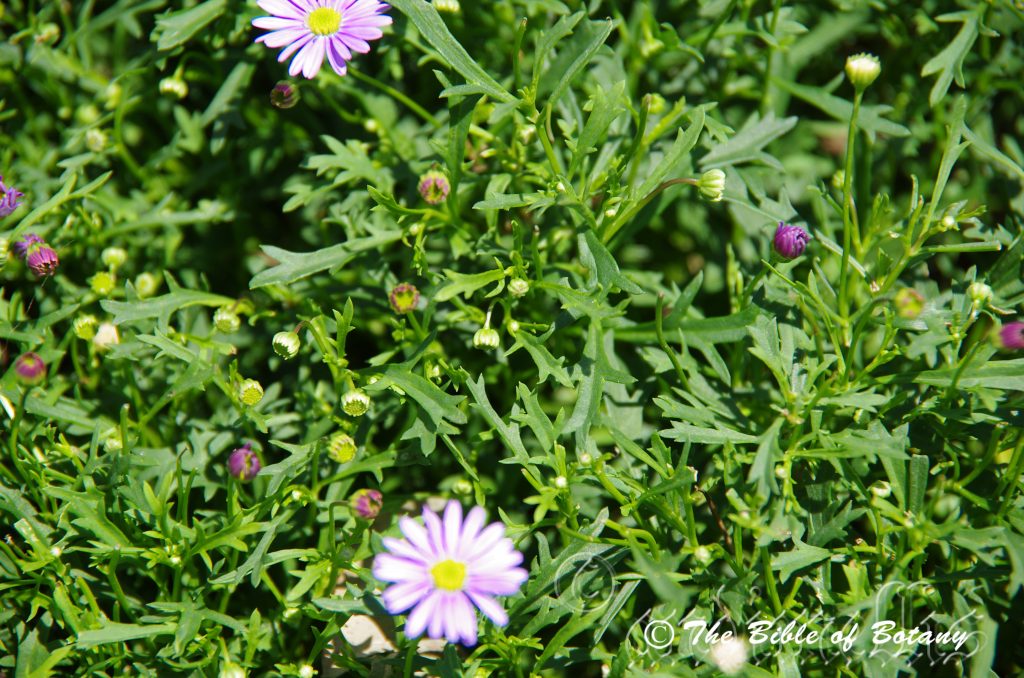
Roma Street Floral Gardens Brisbane Qld.
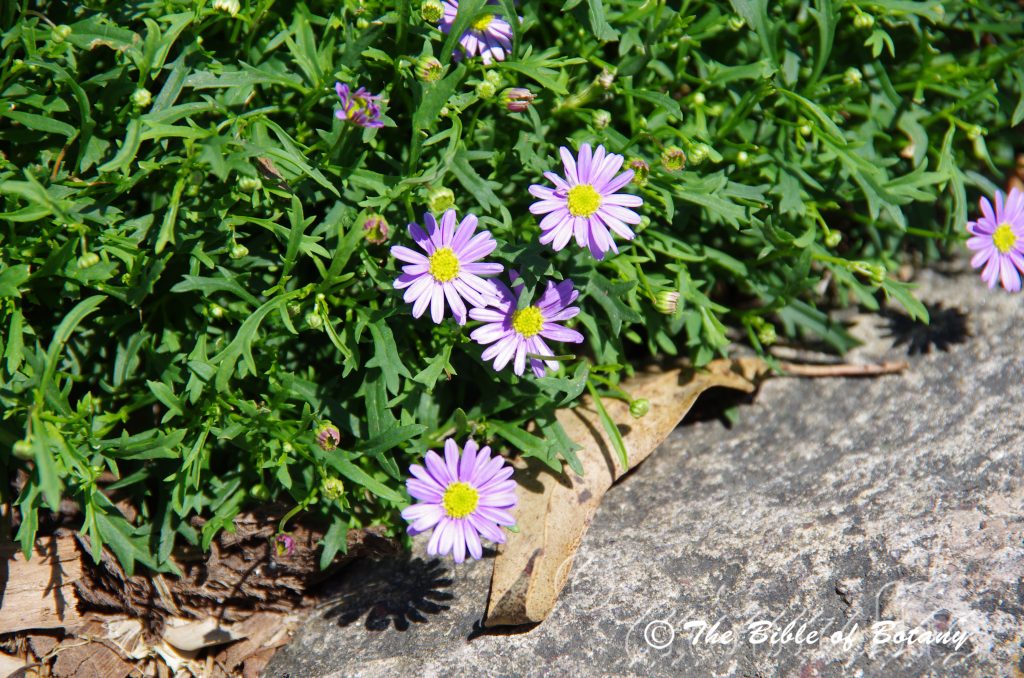
Roma Street Floral Gardens Brisbane Qld.
Brachyscome ciliaris
Classification:
Unranked: Eudicots
Unranked: Asterids
Order: Asterales
Family: Asteraceae
Tribe: Astereae
Genus: From Brachys, which is Ancient Greek for short and Combe or Loma, which are Greek for neat hair. It refers to the short hairs which are located in the floral tube.
Specie: From Cilium, which is Latin for a fringe of hair or an eye lash and Are which is Latin for pertaining to. It refers to the hairs on the margins of leaves, sepals, petals, ligules or glumes and lemmas of a plant and some microscopic animals looking similar to an eyelash.
Variety: Brachyscome ciliaris var. brachyglossa. From Brachus, which is Ancient Greek for short and Glôssa, which is Ancient Greek for a tongue. It refers to styles which are longer than other species in the genus and stick out somewhat like a tongue.
Variety: Brachyscome ciliaris var. ciliaris. From Cilium, which is Latin for a fringe of hair or an eye lash and Are which is Latin for pertaining to. It refers to the hairs on the margins of leaves, sepals, petals, ligules or glumes and lemmas of a plant and some microscopic animals looking similar to an eyelash.
Variety: Brachyscome ciliaris var. grandiflora. From Grandis which is Latin for large and Fl?ris, which is Latin for a flower or Fl?s, which is the Roman goddess of spring and flowers. It refers to plants, which produce larger flowers than most other species in the genus.
Variety: Brachyscome ciliaris var. glandulosa. From Gland/Gl?ns, which is Latin for a gland. It refers to a group of cells, which make an organ that produce a secretion and bearing numerous glands.
Variety: Brachyscome ciliaris var. lanigunosa. From Lanos, which is Latin for woolly. It refers to structures or organs, which are densely covered in long woolly type hairs.
Variety: Brachyscome ciliaris var. lyrifolia. From Lyr?tum, which is Latin for a lyre and Folium, which is Latin for foliage. It refers to leaves, which resemble a lyre.
Variety: Brachyscome ciliaris var. robusta. From R?bustum, which is Latin for strong and hard as in Oak. It refers to timbers, trunks, branches or stems which are hard and strong.
Variety: Brachyscome ciliaris var. subdissecta. From Sub, which is Ancient Greek/Latin for below or lower, Dis, which is Ancient Greek for two and Sectus, which is Latin for a cleft. It refers to the leaves, which are deeply dissected. It refers to structures or organs usually the leaves, which are somewhat lobed or disceted.
Variety: Brachyscome ciliaris var. subintegrifolia. From Sub, which is Ancient Greek/Latin for below or lower, Integra, which is Latin for entire and Folium, which is Latin for foliage. It refers to the leaves which are more entire than the other sub species.
Common Name: Variable Daisy.
Distribution:
Brachyscome ciliaris var. brachyglossa is scattered in a restricted area in south eastern South Australia.
Brachyscome ciliaris var. ciliaris is mainly found in South Australia but occurs in the southern half of Australia with two isolated populatins found in Western Australia.
Brachyscome ciliaris var. grandiflora is scattered in a wide area in South Australia, the southern portion of the Northern Territory, the western third of New South Wales with a few isolated pockets on the noth western slopes of New South Wales and southern Queensland and isolated areas of eastern Western Australia.
Brachyscome ciliaris var. glandulosa is scattered in a wide area in South Australia, the southern portion of the Northern Territory, the western third of New South Wales with a few isolated pockets on the noth western slopes of New South Wales and southern Queensland and isolated areas of eastern Western Australia.
Brachyscome ciliaris var. lanigunosa is scattered in a wide area in South Australia, the southern portion of the Northern Territory, the western third of New South Wales with a few isolated pockets on the noth western slopes and isolated areas of eastern Western Australia.
Brachyscome ciliaris var. lyrifolia is scattered over a wide area in south eastern South Australia with an isolated populatins found near Alice Springs.
Brachyscome ciliaris var. robusta is found south from Stanthorpe in far south east Queensland to the Maccallister stream headwaters in southern Victoria. There is a disjunct population found in the Grampians in western Victoria.
Brachyscome ciliaris var. subdissecta is scattered in a wide area east of Port Augusta in South Australia to the Western Slopes in New South Wales.
Brachyscome ciliaris var. subintegrifolia is scattered in a wide area in South Australia, the southern portion of the Northern Territory, the western third of New South Wales with a few isolated pockets on the noth western slopes of New South Wales and southern Queensland and isolated areas of eastern Western Australia.
https://avh.ala.org.au/occurrences/search?taxa=Brachyscome+ciliaris#tab_mapView
Habitat Aspect Climate:
Brachyscome ciliaris are perennials which prefer full sun to dappled shade. It grows in open woodlands, open sclerophyll forests, open Eucalyptus forests, mulgas or heaths. It does not not grow in the true deserts. The altitude ranges from 6 meters BSL to 670 meters ASL.
The temperatures range from minus 4 degrees in July to 43 degrees in January.
The rainfall ranges from lows of 100mm to 780mm average per annum.
Soil Requirements:
Despite being very widespread Brachyscome ciliaris is usually found on better quality red sandy loams to reddish, light gritty clays. In the west it is found on white or grey sandy loams over limestone. Plants are often associated with salt pans and disturbed soils. The soils pH ranges from 5.5pH to 8pH. It does not tolerate water logged soils. Non saline soils to the high end of very saline soils are tolerated.
Height & Spread: 0.2 to 0.45m by 0.3m to 0.4m
Characteristics:
The erect or ascending stems of Brachyscome ciliaris’s are mid green to deep green or grey-green. The young stems and juvenile stems are glabrous to glandular puberulent or sometimes densely villous-woolly.
The simple erect leaves of Brachyscome ciliaris are linear, pinnatisecta, or lyrate and measure 10mm to 60mm in length by 2mm to 40mm in width. The leaf bases are tapered and cauline while the apexes are acute. The discolourous laminas are pale green, mid blue-green, glaucous-green, grey or grey-green on the upper laminas while the lower laminas are paler. The laminas are glabrous to glandular puberulent or sometimes densely villous-woolly. The margins are finely toothed and recurve slightly upwards from the midvein. The mid vein is prominent below and distinctly visible from above.
The 3 most common forms can be distinguished as follows: Brachyscome ciliaris var. ciliaris’s stems and leaves are glabrous except for some grey, villous-woolly hairs in the leaf axils. The leaves are pinnatisecta or deeply toothed.
Brachyscome ciliaris var. lanigunosa’s stems and leaves are sparsely to densely covered in villous-woolly hairs. The leaves are pinnatisecta or deeply toothed.
Brachyscome ciliaris var. subintegrifolia’s stems are sparsely to densely covered in villous-woolly hairs while the leaves are entire or with a few small teeth.
The inflorescences of Brachyscome ciliaris are heads born from a leaf axil. The filiform peduncle measures 10mm to 40mm in length. The heads measure 7mm to 15mm in diameter. The green to grey-green involucral bracts are lanceolate with an acute apex. The ray florets are white, mauve or purple and measure 3mm to 7mm in length by 1.5mm to 2mm in width. The flowers appear throughout the year when weather conditions are favourable.
The fruits of Brachyscome ciliaris are oblong to obovate, flattened dimorphic achenes. The pale brown, tuberculata achenes are glabrous on the margins and measure 1.5mm to 2.5mm in length. The disc achenes wings are sparsely covered in white curly pilose hairs and measure 1.5mm to 2.5mm in length. The pappus hairs are minute but longer in disc achenes.
Wildlife:
Brachyscome ciliaris’s wildlife is unknown to the author.
Cultivation:
It would make an excellent good fire retardant annual ground cover for sunny positions.
* Fire retardant plants act as radiant heat screens and absorb more heat from an approaching fire without burning.
* Fire retardant trees are able reduce wind speed near a house or out buildings.
* Fire retardant also trap embers and sparks carried by the wind.
* Fire retardant ground covers are able to catch burning embers without catching fire themselves, and also slow the travel of a fire through debris and litter on the ground.
Brachyscome ciliaris is a beautiful perennial for temperate to semi arid rockery gardens. It is ideal and would make a great contribution to a sandy or rocky terrain rock garden. Here it can be used as fill in plants or scattered throughout the boulders. When you use them in an area that is strewn with large boulders you can plant large areas out or strategically place the plants in areas between permanent plants for additional colour. The scene of boulders is a formidable part of the scene. Brachyscome ciliaris is well suited to such conditions so use contours to display the plants boulder country are almost always rising and falling in contour and have sharp rises. The fine leaves and purple flowers would be particularly striking amongst paler colour granite boulders and the white flowers would be better suited to deep greys or blacks of basalt rocks. Make the scene so you can see over the tallest shrubs with the exception of one or two plants at the most. Use a lot of procumbent plants like Hibertia species and Patersonia species to make the rocks look larger and the spaces between the plants bigger. Mix them with other smaller shrubs so none of them dominate the scene but blend in to give a mosaic of foliage colours that you oversee. Actinotis helianthi foliage would contrast admirably and its narrow height would give balance.
Place them near old stumps and roots to make the stumps or roots look larger. Select an area of ground and let your hair down and be imaginative and this is the plant that may just change your life. Brachyscome ciliaris is an ideal size for planting in small well lit courtyards, around swimming pools or on a gentle slope leading to a small pool at the bottom and in rockeries displays well with other Brachyscome species like Brachyscome iberidifolia, lilies like Patersonia species or Hibbertia species.
Propagation:
Seeds: Sow seeds in early spring in the south or autumn in the north into a seed raising mix covering them with 2mm of mix. Sow the seeds sparingly. About 90mm of seeds will be fertile this is normal. Keep the seed tray in a well-lit, airy space that receives plenty of sunlight.
When the seedlings are 30mm to 50mm tall, prick them out and plant them into 50mm native tubes using a seed raising mix.
Fertilize using Seaweed, fish emulsion or organic chicken pellets soaked in water on an alternate basis. Fertilize every two months until the plants are established then annually in early September or March to maintain health, vitality and better flowering.
Once the seedlings reach 80mm they can be tipped pruned to encourage a bushier effect. Once they reach 150mm to 200mm in height plant them out into their permanent position. Mass plantings can be achieved with spacing of 0.3 meters to 0.4 meters centers.
Cuttings: Use 80mm to 120mm long half ripened herbaceous material from non-woody healthy, herbaceous plants. The leaves on the lower third to half should be removed from the stem. A high percentage of the cuttings root, and they do so quickly. Take them in mid-autumn or early spring when weather conditions are not extreme. When the cuttings have obviously struck and have developed good roots treat them as for seedlings.
Further Comments from Readers:
“Hi reader, it seems you use The Bible of Botany a lot. That’s great as we have great pleasure in bringing it to you! It’s a little awkward for us to ask, but our first aim is to purchase land approximately 1,600 hectares to link several parcels of N.P. into one at The Pinnacles NSW Australia, but we need your help. We’re not salespeople. We’re amateur botanists who have dedicated over 30 years to saving the environment in a practical way. We depend on donations to reach our goal. If you donate just $5, the price of your coffee this Sunday, We can help to keep the planet alive in a real way and continue to bring you regular updates and features on Australian plants all in one Botanical Bible. Any support is greatly appreciated. Thank you.”
In the spirit of reconciliation we acknowledge the Bundjalung, Gumbaynggirr and Yaegl and all aboriginal nations throughout Australia and their connections to land, sea and community. We pay our respect to their Elders past, present and future for the pleasures we have gained.
Brachyscome iberidifolia
Classification:
Unranked: Eudicots
Unranked: Asterids
Order: Asterales
Family: Asteraceae
Tribe: Astereae
Genus: From Brachys, which is Ancient Greek for short and Combe or Loma, which are Greek for neat hair. It refers to the short hairs which are located in the floral tube.
Specie: From Ibiris, which is Spanish for a district in Spain and Folium, which is Latin for foliage. It refers to leaves, which resemble the leaves of the Ibiris genus from Spain.
Sub specie:
Common Name: Variable Daisy.
Distribution:
Brachyscome iberidifolia is widespread on the southern third of Western Australia and the western two thirds of South Australia from Denham in the west to the Mulligan River in the far south western corner of Queensland and south to the Moonabie Range in southern South Australia on Eyre Peninsular.
https://avh.ala.org.au/occurrences/search?taxa=Brachyscome+iberidifolia#tab_mapView
Habitat Aspect Climate:
Brachyscome iberidifolia is a perennial which prefers full sun to dappled shade. It is found in open woodlands, dry schlerophyll forests, mallee country, in grasslands in depressions, on drainage channels, plains, slopes, boulder country and salt pans. The altitude ranges from 5 meters ASL to 670 meters ASL.
The temperatures range from 3 degrees in July to 46 degrees in January.
The rainfall ranges from lows of 100mm to 1600mm average per annum.
Soil Requirements:
Despite being very widespreadBrachyscome iberidifolia is found on white, grey black, yellow and black sandy loams to heavy clays. It is found on clay and sandy salt pans and saline depressions. The soils pH ranges from 5.5pH to 8.5pH. It does not tolerate water logged soils. Non saline soils to extremely saline soils are tolerated.
Height & Spread: 0.2 to 0.45m by 0.3m to 0.4m
Characteristics:
The erect or ascending stems of Brachyscome iberidifolia’s are mid green to sea-green or grey-green. The young stems and juvenile stems are glabrous to sparsely covered in white puberulent hairs.
The deeply divided pinnasect leaves of Brachyscome iberidifolia measure 10mm to 60mm in length by 12mm to 40mm in width. The leaf bases are tapered and cauline while the apexes are acute. The discolourous or concolourous laminas are mid green to sea-green or grey-green and glabrous on the upper laminas while the lower laminas maybe slightly paler. The laminas recurve slightly upwards from the mid vein to the margins. The margins are entire or finely toothed. The mid vein is prominent below and distinctly visible from above.
The inflorescences of Brachyscome iberidifolia are heads born from the leaf axils. The filiform peduncle measures 10mm to 40mm in length. The heads measure 10mm to 18mm in diameter. The mid green to sea-green involucral bracts are lanceolate with an acute apex. The ray florets are white, mauve, purple or rarely pink and measure 4mm to 9mm in length by 1.8mm to 2.3mm in width. The flowers appear throughout the year when weather conditions are favourable.
The fruits of Brachyscome iberidifolia are oblong to obovate, flattened dimorphic achenes. The straw coloured, tuberculata achenes are glabrous on the margins and measure 1.5mm to 2.5mm in length. The disc achenes wings are sparsely covered in white pilose hairs and measure 1.5mm to 2.5mm in length. The pappus hairs are minute but longer in disc achenes.
Wildlife:
Brachyscome iberidifolia’s wildlife is unknown to the author.
Cultivation:
It would make an excellent good fire retardant medium annual ground cover for sunny positions.
* Fire retardant plants act as radiant heat screens and absorb more heat from an approaching fire without burning.
* Fire retardant trees are able reduce wind speed near a house or out buildings.
* Fire retardant also trap embers and sparks carried by the wind.
* Fire retardant ground covers are able to catch burning embers without catching fire themselves, and also slow the travel of a fire through debris and litter on the ground.
Brachyscome iberidifolia is a beautiful perennial for temperate, semi arid or arid rockeries. It is ideal and would make a great contribution to a sandy or rocky terrain rock garden. Here it can be used as fill in plants or scattered throughout the boulders. When you use it in an area that is strewn with large boulders you can plant large areas out or by placing the plants between the boulders to add greenery. The scene of boulders is a formidable part of the scene at the same time. It is well suited to such conditions so use the green and white to lilac flowers to accentuate the scene with procumbent plants like Hibbertia species, Xerochrysum bracteatum and Patersonia species, which also prefer dryer conditions. Mix it with other smaller shrubs so none of them dominate the scene but blend in to give a mosaic of foliage textures that you oversee.
Brachyscome iberidifolia look sensational surrounding Actinotis helianthi as the foliages are totally different and contrast admirably while its narrow height would give balance.
Place it near old stumps and roots to make the stumps or roots look larger. Select an area of ground and let your hair down, be imaginative as this is one plant that may just change your life. Mixed with other annuals like Brachyscome iberidifolia purple flowers, Maireana brevifolia grey foliage and white flowers and Ptilotus species with white pink or red flowers are ideal in size and for contrasting colours.
Propagation:
Seeds: Sow seeds in early spring in the south or autumn in the north into a seed raising mix covering them with 2mm of mix. Sow the seeds sparingly. About 90mm of seeds will be fertile this is normal. Keep the seed tray in a well-lit, airy space that receives plenty of sunlight.
When the seedlings are 30mm to 50mm tall, prick them out and plant them into 50mm native tubes using a seed raising mix.
Fertilize using Seaweed, fish emulsion or organic chicken pellets soaked in water on an alternate basis. Fertilize every two months until the plants are established then annually in early September or March to maintain health, vitality and better flowering.
Once the seedlings reach 80mm they can be tipped pruned to encourage a bushier effect. Once they reach 150mm to 200mm in height plant them out into their permanent position. Mass plantings can be achieved with spacing of 0.3 meters to 0.4 meters centers.
Cuttings:
Again Brachyloma scortechinii cuttings are difficult to strike and are unreliable but are worth the effort for small numbers. Try using 50mm to 70mm long half ripened material and fully hardened material when growing from cuttings from the present season’s growth. No particular period is any better so try them when you feel ready.
1 Prepare the cutting mix by adding one third sharp clean river sand, one third peat and one third perlite. These ingredients are sterile,
2 Select good material from non diseased plants,
3 Select semi green stems for cuttings. Look for a stem with two or three nodes,
4 Place the cutting on a flat, hard surface, and make a clean slice through the middle of the lower node on an angle towards the base, with a sterilized sharp knife or razor blade or remove half the leaves from the bottom section being careful not to tear the bark. You could try taking a 5mm to 10mm slice off the bark from the base of the cutting on one side. – This scarification of the node will increase the chances of roots emerging from this spot. Now remove all but one or two the leaves, leaving the apex leaves in tact. If the leaves are very large in proportion to the stem, cut off the apical halves.
5 Try using rooting hormone of various strengths if at first you do not succeed. Fill a saucer with water, and place some rooting hormone into another container like a bottle top. Dip the node end of the cutting into the water and then into the rooting hormone. Tap off any excess hormone,
6 Use a small dipple stick or old pencil to poke a hole into the soilless potting mix. Ensure the hole is slightly larger than the stem diameter and be careful not to wipe the rooting hormone off the cuttings base, place the cuttings in a pattern ensuring the cuttings are not touching each other,
7 I like to place the pots in Plastic bags to help maintain temperature and moisture. Place in a semi shaded place like under 50mm shade cloth.
8 When the cuttings have struck, open the bag to allow air circulation for a few days to a week,
9 Once hardened off remove the cuttings from the bag and fertilize with seaweed and allow further hardening for a few more days,
10 Transplant into a good potting mix to grow on. Good luck.
Further Comments from Readers:
“Hi reader, it seems you use The Bible of Botany a lot. That’s great as we have great pleasure in bringing it to you! It’s a little awkward for us to ask, but our first aim is to purchase land approximately 1,600 hectares to link several parcels of N.P. into one at The Pinnacles NSW Australia, but we need your help. We’re not salespeople. We’re amateur botanists who have dedicated over 30 years to saving the environment in a practical way. We depend on donations to reach our goal. If you donate just $5, the price of your coffee this Sunday, We can help to keep the planet alive in a real way and continue to bring you regular updates and features on Australian plants all in one Botanical Bible. Any support is greatly appreciated. Thank you.”
In the spirit of reconciliation we acknowledge the Bundjalung, Gumbaynggirr and Yaegl and all aboriginal nations throughout Australia and their connections to land, sea and community. We pay our respect to their Elders past, present and future for the pleasures we have gained.
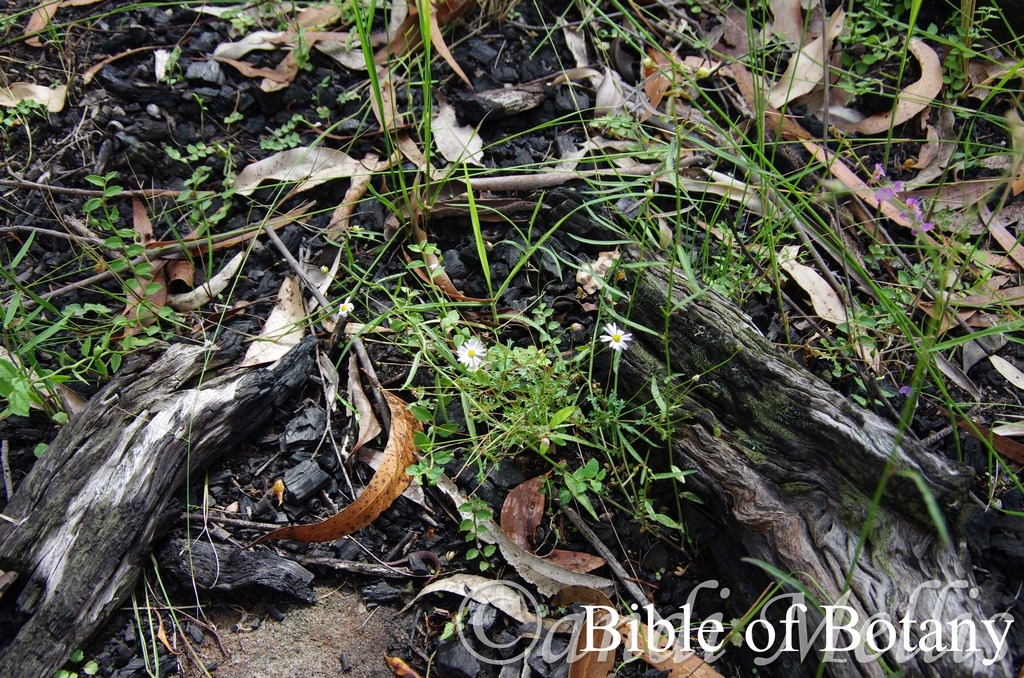
Wombat Creek Conservation Park NSW
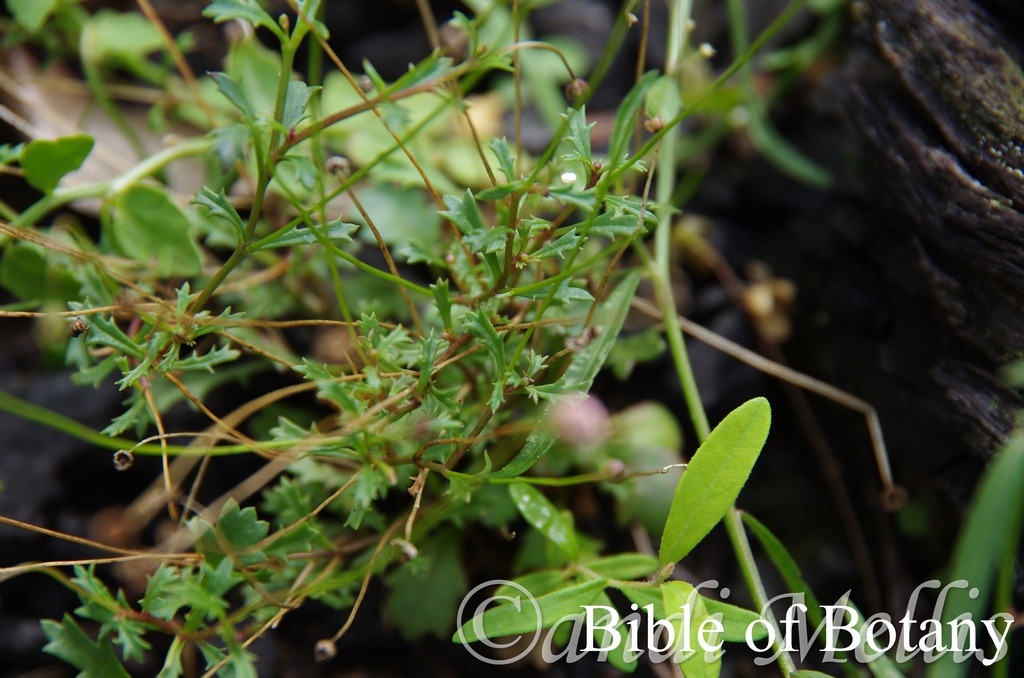
Wombat Creek Conservation Park NSW

Wombat Creek Conservation Park NSW

Wombat Creek Conservation Park NSW
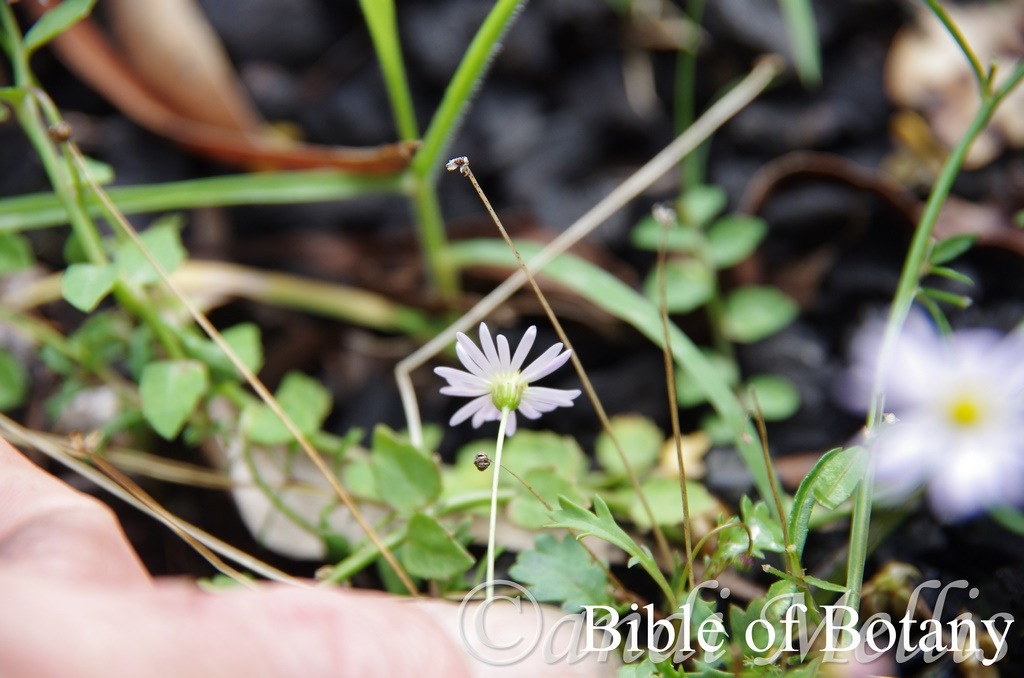
Wombat Creek Conservation Park NSW
Brachyscome microcarpa
Classification:
Unranked: Eudicots
Unranked: Asterids
Order: Asterales
Family: Asteraceae
Tribe: Astereae
Genus: From Brachys, which is Ancient Greek for short and Combe or Loma, which are Greek for neat hair. It refers to the short hairs which are located in the floral tube.
Specie: From Mikrós, which is Ancient Greek for small or very small and Karpós, which is Ancient Greek for a fruit. It refers to the fruits, which are rather small compared to other species in the genus.
Sub specie:
Common Name: Forest Daisy or Brisbane Daisy.
Distribution: of Brachyscome microcarpa is a wide spread perennial herb which is found in several disjunct populations south from the Bowen river in central north Queensland to near Orbost in north western Victoria. There is also smaller population found on the Atherton Tableland, the Warrego River near Currawinaya National Park and Lake Bindegolly National Park.
https://avh.ala.org.au/occurrences/search?taxa=Brachyscome+microcarpa#tab_mapView
Habitat Aspect Climate:
Brachyscome microcarpa prefers full sun to dappled shade. It grows in schlerophyll forests, open woodlands, dry Eucalyptus forests and dry sub-tropical rainforests. The altitude ranges from 5 meters ASL to 1350 meters ASL.
The temperatures range from minus 5 degrees in July to 42 degrees in January.
The rainfall ranges from lows of 500mm to 1500mm average per annum.
Soil Requirements:
Brachyscome microcarpa prefers light clays to medium clays. The soils are usually derived from decomposed sandstones, granites, brown basalts, black basalts, shales or metamorphic rocks. The soil’s pH ranges from 4.5pH to 6.5pH. It does not tolerate water logged soils. None saline soils to moderately saline soils are tolerated.
Height & Spread: 0.3 to 0.6m by 0.3m to 0.5m
Characteristics:
Brachyscome microcarpa main stems are weakly erect or ascending. The stems of Brachyscome microphylla are mid green to deep green or grey-green and glandular-puberulent or rarely glabrous.
Brachyscome microcarpa basal leaves are orbicular to spathulate and measure 40mm to 75mm in length by 25mm to 40mm in width. The cauline leaves are narrow ovate to orbicular or rarely palmate and measure 12mm to 65mm in length by 6mm to 30mm in width. The leaf bases are tapered and cauline while the apexes are acute. The discolourous laminas are pale green, mid blue-green, glaucous-green, grey or grey-green on the upper laminas while the lower laminas are paler. The flat laminas are glandular-puberulent or rarely glabrous. The basal leaf margins are pinnatifid or crenate while the cauline leaves are crenate to pinnatisecta with linear lobes to 8 mm long. The mid vein is prominent below and distinctly visible from above.
The inflorescences of Brachyscome microcarpa are solitary heads born on a long filiform peduncle. The glabrous peduncles measure 60mm to 180mm in length. The heads measure 4mm to 8mm in diameter. The grey-green involucral bracts are obovate with an obtuse apex and lacerated margins. The ray florets are white, mauve or purple and measure 4mm to 5mm in length by 1.5mm to 2mm in width. The flowers appear from October to February.
The fruits of Brachyscome microcarpa are obovate, flattened achenes with a cuneate base. The deep brown to black, tuberculate achenes are glabrous on the margins and measure 1mm to 1.8mm in length. The achenes wings are glabrous while the bodies are tuberculate and glandular hairy. The white hispid pappus hairs are minute and set into a retuse tip at the apex.
Wildlife:
Brachyscome microcarpa’s wildlife is unknown to the author.
Cultivation:
It would make an excellent good fire retardant annual, ground cover for a sunny position
* Fire retardant plants act as radiant heat screens and absorb more heat from an approaching fire without burning.
* Fire retardant trees are able reduce wind speed near a house or out buildings.
* Fire retardant also trap embers and sparks carried by the wind.
* Fire retardant ground covers are able to catch burning embers without catching fire themselves, and also slow the travel of a fire through debris and litter on the ground.
Brachyscome microcarpa is another beautiful perennial for temperate to semi-arid rockeries, which should be treated as annuals. It would make a great contribution to a sandy or rocky terrain rock garden east of the Great Dividing Range. Here it can be used as fill in plants or scattered throughout boulders make a flat area look more expansive, with Brachyscome microcarpa, which is well suited to a semi arid appearance so allow the plants to dictate the scene. The scene of boulders or expansiveness is a formidable part of any scene. It is well suited to such conditions so use the green and lilac flowers to accentuate the scene with other procumbent plants like any of the Hibbertia species with bright yellow flowers, Xerochrysum bracteatum with white to lilac flowers and Pilotos species with white, pink or red flowers, which also prefer dryer conditions. Mix it with other smaller shrubs so none of them dominate the scene but blend in to give a mosaic of foliage textures that you oversee.
Propagation:
Seeds: Brachyscome microcarpa seeds germinate well when sown in in early spring in the south or autumn in the north into a seed raising mix covering them with 2mm of mix. Sow the seeds sparingly. About 90mm of seeds will be fertile this is normal. Keep the seed tray in a well-lit, airy space that receives plenty of sunlight.
When the seedlings are 30mm to 50mm tall, prick them out and plant them into 50mm native tubes using a seed raising mix.
Fertilize using Seaweed, fish emulsion or organic chicken pellets soaked in water on an alternate basis. Fertilize every two months until the plants are established then annually in early September or March to maintain health, vitality and better flowering.
Once the seedlings reach 80mm they can be tipped pruned to encourage a bushier effect. Once they reach 150mm to 200mm in height plant them out into their permanent position. Mass plantings can be achieved by planting them at 0.3 meters to 0.4 meters centers.
Cuttings: Brachyscome microcarpa cuttings are easy to strike and are reliable. Try using 50mm to 70mm long half ripened material and fully hardened material when growing from cuttings from the present season’s growth. No particular period is any better so try them when you feel ready.
1 Prepare the cutting mix by adding one third sharp clean river sand, one third peat and one third perlite. These ingredients are sterile,
2 Select good material from non diseased plants,
3 Select semi green stems for cuttings. Look for a stem with two or three nodes,
4 Place the cutting on a flat, hard surface, and make a clean slice through the middle of the lower node on an angle towards the base, with a sterilized sharp knife or razor blade or remove half the leaves from the bottom section being careful not to tear the bark. You could try taking a 5mm to 10mm slice off the bark from the base of the cutting on one side. – This scarification of the node will increase the chances of roots emerging from this spot. Now remove all but one or two the leaves, leaving the apex leaves in tact. If the leaves are very large in proportion to the stem, cut off the apical halves.
5 Try using rooting hormone of various strengths if at first you do not succeed. Fill a saucer with water, and place some rooting hormone into another container like a bottle top. Dip the node end of the cutting into the water and then into the rooting hormone. Tap off any excess hormone,
6 Use a small dipple stick or old pencil to poke a hole into the soilless potting mix. Ensure the hole is slightly larger than the stem diameter and be careful not to wipe the rooting hormone off the cuttings base, place the cuttings in a pattern ensuring the cuttings are not touching each other,
7 I like to place the pots in Plastic bags to help maintain temperature and moisture. Place in a semi shaded place like under 50mm shade cloth.
8 When the cuttings have struck, open the bag to allow air circulation for a few days to a week,
9 Once hardened off remove the cuttings from the bag and fertilize with seaweed and allow further hardening for a few more days,
10 Transplant into a good potting mix to grow on. Good luck.
Further Comments from Readers:
“Hi reader, it seems you use The Bible of Botany a lot. That’s great as we have great pleasure in bringing it to you! It’s a little awkward for us to ask, but our first aim is to purchase land approximately 1,600 hectares to link several parcels of N.P. into one at The Pinnacles NSW Australia, but we need your help. We’re not salespeople. We’re amateur botanists who have dedicated over 30 years to saving the environment in a practical way. We depend on donations to reach our goal. If you donate just $5, the price of your coffee this Sunday, We can help to keep the planet alive in a real way and continue to bring you regular updates and features on Australian plants all in one Botanical Bible. Any support is greatly appreciated. Thank you.”
In the spirit of reconciliation we acknowledge the Bundjalung, Gumbaynggirr and Yaegl and all aboriginal nations throughout Australia and their connections to land, sea and community. We pay our respect to their Elders past, present and future for the pleasures we have gained.
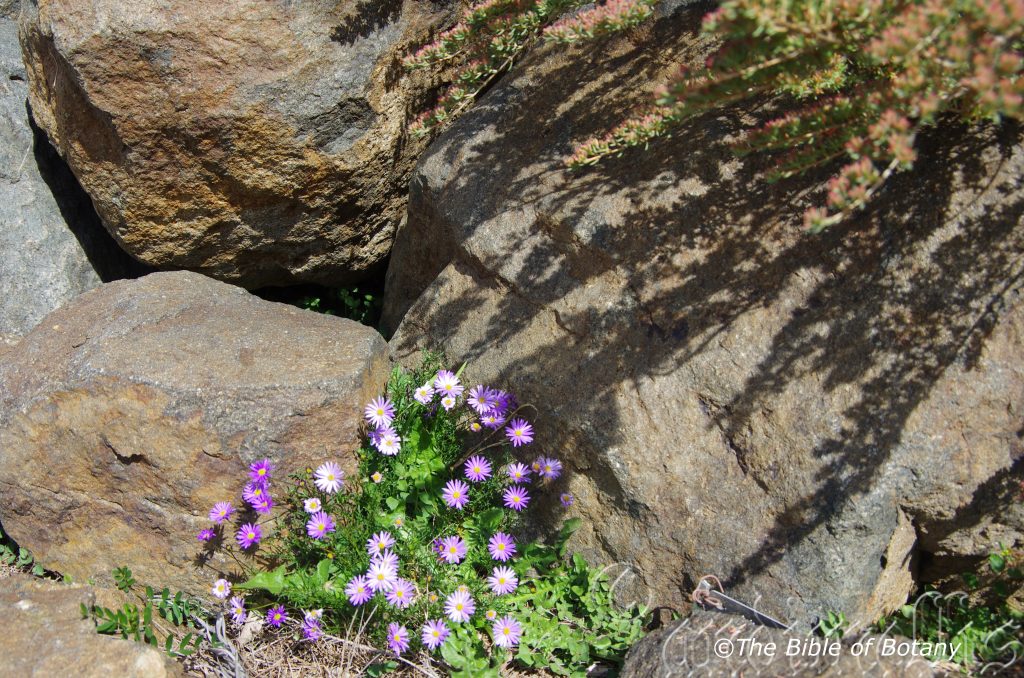
National Botanic Gardens Canberra ACT
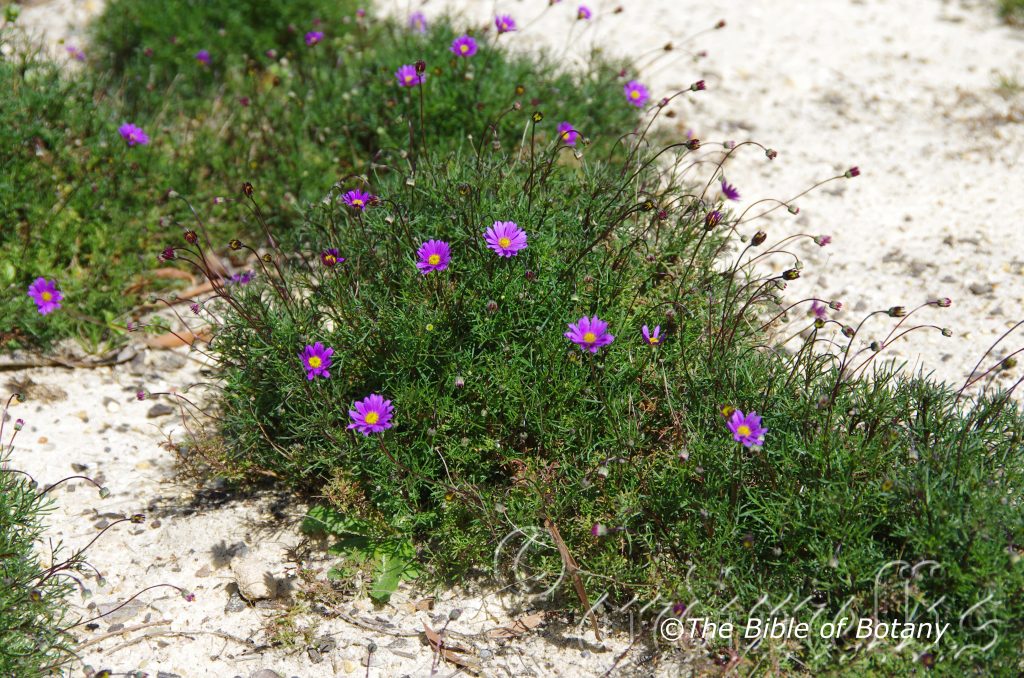
National Botanic Gardens Canberra ACT
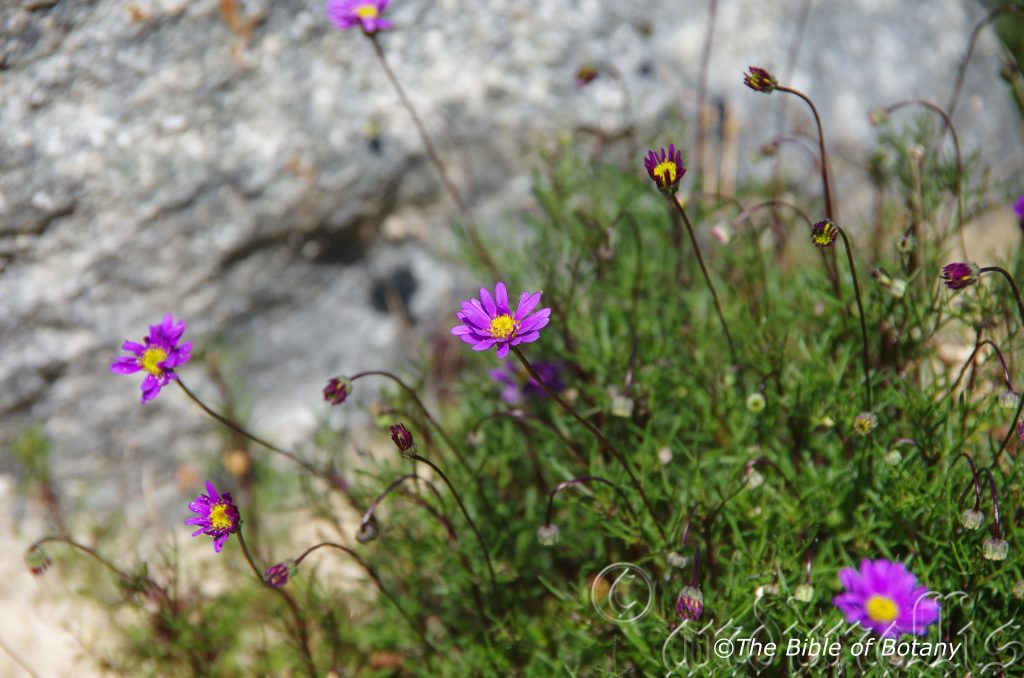
National Botanic Gardens Canberra ACT

National Botanic Gardens Canberra ACT
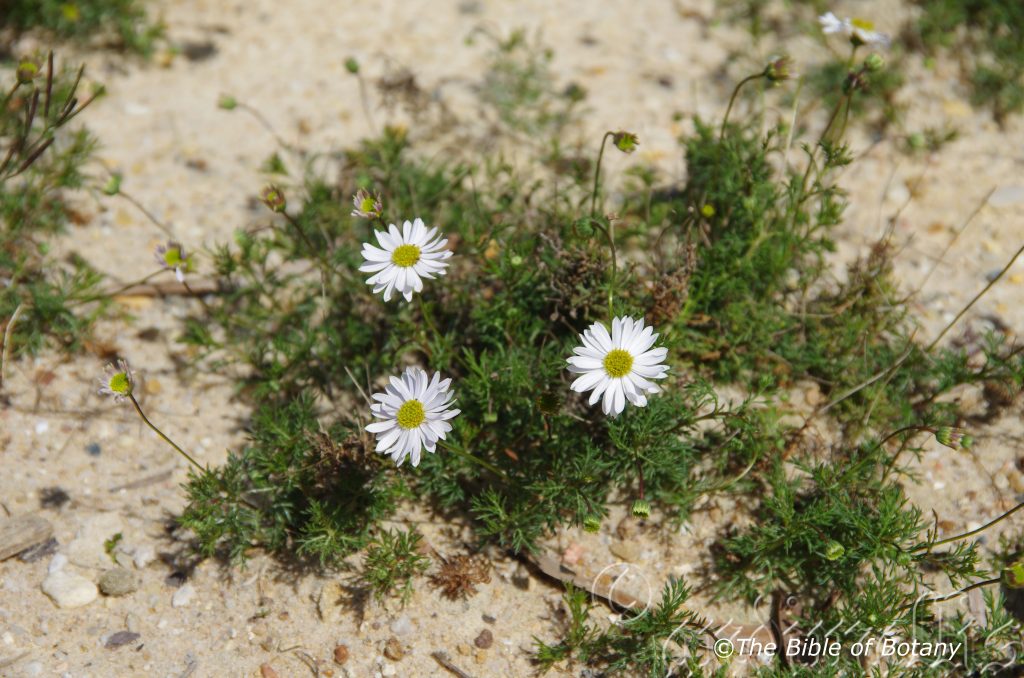
National Botanic Gardens Canberra ACT
Brachyscome multifida
Classification:
Unranked: Eudicots
Unranked: Asterids
Order: Asterales
Family: Asteraceae
Tribe: Astereae
Genus: From Brachys, which is Ancient Greek for short and Combe or Loma, which are Greek for neat hair. It refers to the short hairs which are located in the floral tube.
Specie: From Mála, which is Ancient Greek, or mult?, which is Latin for many and Pheídomai which is Ancient Greek or Findere, which is Latin for to cleave or split. It refers to the leaves, which have many divisions usually unequal.
Sub specie: Brachyscome multifida aff cytodene – From Kútos, which is Ancient Greek, for a receptacle or container and dene, which is Ancient Greek for a dune or sharp gully especially a dry riverine. It refers may refer to the habitats of this affinity.
Brachyscome multifida aff dilatata – From D?l?t? which is Latin for spreading or opening wide. It refers to the flowers, which have the ray florets spreading out wide.
Brachyscome multifida aff multifida – From Mála, which is Ancient Greek, or mult?, which is Latin for many and Pheídomai which is Ancient Greek or Findere, which is Latin for to cleave or split. It refers to the leaves, which have many divisions usually unequal.
Common Name: Forest Daisy or Brisbane Daisy.
Distribution:
Brachyscome multifida is a wide spread perennial herb which is found in several disjunct populations in central Queensland and continuously south from Gurulmundi to the Grampians in south western Victoria. It is found growing on the western Plains, on and east of the Great Dividing Range to the coast.
https://avh.ala.org.au/occurrences/search?taxa=Brachyscome+multifida#tab_mapView
Habitat Aspect Climate:
Brachyscome multifida prefers full sun to dappled shade. It grows in schlerophyll forests, open woodlands, dry Eucalyptus forests and adjacent to dry sub-tropical rainforests. The altitude ranges from 5 meters ASL to 1600 meters ASL.
The temperatures range from minus 3 degrees in July to 42 degrees in January.
The rainfall ranges from lows of 500mm to 1500mm average per annum.
Soil Requirements:
Brachyscome multifida prefers light clays to medium clays. The soils are usually derived from decomposed sandstones, granites, brown basalts, black basalts, shales or metamorphic rocks. The soil’s pH ranges from 4.5pH to 6.5pH. It does not tolerate water logged soils. None saline soils to moderately saline soils are tolerated.
Height & Spread: 0.3 to 0.6m by 0.3m to 0.5m
Characteristics:
Brachyscome multifida is an ascending annual with glabrous stems.
The cauline leaves measure 50mm to 70mm in length. The 1 or 2 pinnatisect leaves with 7 to 10 linear subulate or oblanceolate lobes measure 35mm in length. The lobes are entire or pinnatisect.
Brachyscome multifida’s heads measure 35mm to 45mm in diameter are on a glabrous peduncle that measures 40mm to 140mm in length. The obtuse involucral bracts margins are covered in minute, white ciliate hairs. The pink to mauve or white ray florets ligule measures 7mm to 10mm in length.
The cuneate, spindle shaped brown to black achenes are slightly flattened on one side and measure 1.9mm to 2.4mm in length. They are smooth with tuberculate. Each tubercle has minute bifid hair, while the apexes pappus measure around 0.1mm in length and spreading bristles.
Wildlife:
Brachyscome multifida’s wildlife is unknown to the author.
Cultivation:
It would make an excellent good fire retardant annual ground cover for a sunny position.
* Fire retardant plants act as radiant heat screens and absorb more heat from an approaching fire without burning.
* Fire retardant trees are able reduce wind speed near a house or out buildings.
* Fire retardant also trap embers and sparks carried by the wind.
* Fire retardant ground covers are able to catch burning embers without catching fire themselves, and also slow the travel of a fire through debris and litter on the ground.
Brachyscome multifida is my favourite Brachyscome species coastal temperate to semi-arid or arid rockery gardens that should be treated an annual or short lived perennial. It would make a great contribution to a sandy or rocky terrain rock garden. Here it can be used as fill in plants or scattered throughout boulders or make a flat area look more expansive, wich Brachyscome multifida is well suited to a semi arid appearance so allow the plants to dictate the scene. The scene of boulders or expansiveness can be a formidable part of any scene. It is well suited to such conditions so use the green and almost white flowers through to deep pink or purple flowers will accentuate the scene with other procumbent plants like any of the Hibbertia species with bright yellow flowers, Xerochrysum bracteatum with white to lilac flowers and Pilotos species with white, pink or red flowers, which also prefer sandy or rocky terrains conditions. Mix it with other smaller shrubs so none of them dominate the scene but blend in to give a mosaic of foliage textures that you oversee.
Propagation:
Seeds:
Brachyscome multifida seeds germinate well when sown in in early spring in the south or autumn in the north into a seed raising mix covering them with 2mm of mix. Sow the seeds sparingly. About 90mm of seeds will be fertile this is normal. Keep the seed tray in a well-lit, airy space that receives plenty of sunlight.
When the seedlings are 30mm to 50mm tall, prick them out and plant them into 50mm native tubes using a seed raising mix.
Fertilize using Seaweed, fish emulsion or organic chicken pellets soaked in water on an alternate basis. Fertilize every two months until the plants are established then annually in early September or March to maintain health, vitality and better flowering.
Once the seedlings reach 80mm they can be tipped pruned to encourage a bushier effect. Once they reach 150mm to 200mm in height plant them out into their permanent position. Mass plantings can be achieved by planting them at 0.3 meters to 0.4 meters centers.
Cuttings:
Brachyscome multifida cuttings are easy to strike and are reliable. Try using 50mm to 70mm long half ripened material and fully hardened material when growing from cuttings from the present season’s growth. No particular period is any better so try them when you feel ready.
1 Prepare the cutting mix by adding one third sharp clean river sand, one third peat and one third perlite. These ingredients are sterile,
2 Select good material from non diseased plants,
3 Select semi green stems for cuttings. Look for a stem with two or three nodes,
4 Place the cutting on a flat, hard surface, and make a clean slice through the middle of the lower node on an angle towards the base, with a sterilized sharp knife or razor blade or remove half the leaves from the bottom section being careful not to tear the bark. You could try taking a 5mm to 10mm slice off the bark from the base of the cutting on one side. – This scarification of the node will increase the chances of roots emerging from this spot. Now remove all but one or two the leaves, leaving the apex leaves in tact. If the leaves are very large in proportion to the stem, cut off the apical halves.
5 Try using rooting hormone of various strengths if at first you do not succeed. Fill a saucer with water, and place some rooting hormone into another container like a bottle top. Dip the node end of the cutting into the water and then into the rooting hormone. Tap off any excess hormone,
6 Use a small dipple stick or old pencil to poke a hole into the soilless potting mix. Ensure the hole is slightly larger than the stem diameter and be careful not to wipe the rooting hormone off the cuttings base, place the cuttings in a pattern ensuring the cuttings are not touching each other,
7 I like to place the pots in Plastic bags to help maintain temperature and moisture. Place in a semi shaded place like under 50mm shade cloth.
8 When the cuttings have struck, open the bag to allow air circulation for a few days to a week,
9 Once hardened off remove the cuttings from the bag and fertilize with seaweed and allow further hardening for a few more days,
10 Transplant into a good potting mix to grow on. Good luck.
Further Comments from Readers:
“Hi reader, it seems you use The Bible of Botany a lot. That’s great as we have great pleasure in bringing it to you! It’s a little awkward for us to ask, but our first aim is to purchase land approximately 1,600 hectares to link several parcels of N.P. into one at The Pinnacles NSW Australia, but we need your help. We’re not salespeople. We’re amateur botanists who have dedicated over 30 years to saving the environment in a practical way. We depend on donations to reach our goal. If you donate just $5, the price of your coffee this Sunday, We can help to keep the planet alive in a real way and continue to bring you regular updates and features on Australian plants all in one Botanical Bible. Any support is greatly appreciated. Thank you.”
In the spirit of reconciliation we acknowledge the Bundjalung, Gumbaynggirr and Yaegl and all aboriginal nations throughout Australia and their connections to land, sea and community. We pay our respect to their Elders past, present and future for the pleasures we have gained.
Brachyscome stuartii
Classification:
Unranked: Eudicots
Unranked: Asterids
Order: Asterales
Family: Asteraceae
Tribe: Astereae
Genus: From Brachys, which is Ancient Greek for short and Combe or Loma, which are Greek for neat hair. It refers to the short hairs which are located in the floral tube.
Specie: Is named in honour of John MacDouall Stuart; 1915-1866, who was a Scottish explorer and plant collector.
Sub specie:
Common Name: Stuart’s Daisy.
Distribution:
Brachyscome stuartii is a wide spread perennial found in several disjunct populations from Idalia National Park in southern Queensland in a south easterly direction to Bathurst and the New England Tablelands in New South Wales.
https://avh.ala.org.au/occurrences/search?taxa=Brachyscome+stuartii#tab_mapView
Habitat Aspect Climate:
Brachyscome stuartii prefers full sun to dappled shade. It grows on ephemeral swampy ground, often forming dense, spongy mats or as isolated plants on moist moss covered rocks.
The temperatures range from minus 4 degrees in July to 42 degrees in January.
The rainfall ranges from lows of 300mm to 1000mm average per annum.
Soil Requirements:
Brachyscome stuartii prefers sandy loams, light gravelly clays to medium clays. The soils are usually derived from decomposed granites or sandstones. The soils pH ranges from 5pH to 5.5pH. It tolerates of water logged soils. Non saline soils to slightly saline soils are tolerated.
Height & Spread: 0.15 to 0.25m by 0.1m to 0.2m
Characteristics:
Brachyscome stuartii grow as erect tuft perennials. The main stems are deep green to mid blue-green and glabrous.
Brachyscome stuartii basal leaves are rosettes. The pinnatisecta, oblong leaves measure 70mm to 96mm in length by 15mm to 28mm in width. The lobes measure 3mm to 10mm in length by 1.5mm to 2.5mm in width. The leaf bases are cauline while the apexes are obtuse to acute. The discolourous laminas are deep green to mid blue-green and glabrous on the upper laminas while the lower laminas are slightly to very much paler or rarely green with a golden tinge. The laminas or lobes recurve slightly upwards from the midvein. The margins are entire or toothed. The mid vein is prominent below and distinctly visible from above.
Inflorescences of Brachyscome stuartii are solitary heads born on a long filiform peduncle. The glabrous peduncles measure 80mm to 210mm in length. The heads measure 6mm to 8mm in diameter. The grey-green involucral bracts are oblanceolate with an obtuse apex and entire or finely toothed margins. The ray florets are white, mauve, purple or pale blue and measure 5mm to 8mm in length by 1.5mm to 2mm in width. The flowers appear throughout the year in when weather conditions are favourable. The flowers appear from April to November.
The fruits of Brachyscome stuartii are obovate, flattened achenes with a narrowing obtuse base. The deep brown to black, tuberculated achenes is toothed on the margins and measure 0.9mm to 1.7mm in length. The achenes wings are glabrous while the bodies are tuberculate with conspicuous longitudinal creases. The white hispid pappus hairs are minute and set on a crown within a retuse tip at the apex.
Wildlife:
Brachyscome stuartii wildlife is unknown to the author.
Cultivation:
Brachyscome stuartii is a beautiful small clump annual or perennials for temperate to semi-arid or arid rockery gardens. It would be best suited to a sandy or rocky terrain ephemeral bog garden in full sun. Ensure the garden is well soaked in the wet season and allowed to dry out in the dry season.
Because of its small clumping habit it can be crammed into every nook or cranny or scattered throughout boulders or other landscape features. Placed strategically with lilies like Patersonia sericea purple flowers, Hibbertia linearis yellow flowers, Goodenia humilis yellow flowers, Isotoma fluviatilis lilac flowers, or the yellow flowers of Ranunculus inundatus, Ranunculus lappaceus or Ranunculus plebeius, which all make interesting additions with colour and texture. Interest can be added by featuring some of the native carnivorous plants as well like the Drosera species or for the more adventitious gardeners Cephalotus follicularis. The scene of boulders or a flat expansive looking area is a formidable part of any scene. Brachyscome stuartii is well suited to such conditions so use the boulders or expansiveness to highlight the plants.
Propagation:
Seeds: Sow seeds in early spring in the south or autumn in the north into a seed raising mix covering them with 2mm of mix. Sow the seeds sparingly. About 90mm of seeds will be fertile this is normal. Keep the seed tray in a well-lit, airy space that receives plenty of sunlight.
When the seedlings are 30mm to 50mm tall, prick them out and plant them into 50mm native tubes using a seed raising mix.
Fertilize using Seaweed, fish emulsion or organic chicken pellets soaked in water on an alternate basis. Fertilize every two months until the plants are established then annually in early September or March to maintain health, vitality and better flowering.
Once the seedlings reach 80mm they can be tipped pruned to encourage a bushier effect. Once they reach 150mm to 200mm in height plant them out into their permanent position. Mass plantings can be achieved with spacing of 0.3 meters to 0.4 meters centers.
Cuttings:
Brachyscome stuartii cuttings are easy to strike and are reliable. Try using 50mm to 70mm long half ripened material and fully hardened material when growing from cuttings from the present season’s growth. No particular period is any better so try them when you feel ready.
1 Prepare the cutting mix by adding one third sharp clean river sand, one third peat and one third perlite. These ingredients are sterile,
2 Select good material from non diseased plants,
3 Select semi green stems for cuttings. Look for a stem with two or three nodes,
4 Place the cutting on a flat, hard surface, and make a clean slice through the middle of the lower node on an angle towards the base, with a sterilized sharp knife or razor blade or remove half the leaves from the bottom section being careful not to tear the bark. You could try taking a 5mm to 10mm slice off the bark from the base of the cutting on one side. – This scarification of the node will increase the chances of roots emerging from this spot. Now remove all but one or two the leaves, leaving the apex leaves in tact. If the leaves are very large in proportion to the stem, cut off the apical halves.
5 Try using rooting hormone of various strengths if at first you do not succeed. Fill a saucer with water, and place some rooting hormone into another container like a bottle top. Dip the node end of the cutting into the water and then into the rooting hormone. Tap off any excess hormone,
6 Use a small dipple stick or old pencil to poke a hole into the soilless potting mix. Ensure the hole is slightly larger than the stem diameter and be careful not to wipe the rooting hormone off the cuttings base, place the cuttings in a pattern ensuring the cuttings are not touching each other,
7 I like to place the pots in Plastic bags to help maintain temperature and moisture. Place in a semi shaded place like under 50mm shade cloth.
8 When the cuttings have struck, open the bag to allow air circulation for a few days to a week,
9 Once hardened off remove the cuttings from the bag and fertilize with seaweed and allow further hardening for a few more days,
10 Transplant into a good potting mix to grow on. Good luck.
Further Comments from Readers:
“Hi reader, it seems you use The Bible of Botany a lot. That’s great as we have great pleasure in bringing it to you! It’s a little awkward for us to ask, but our first aim is to purchase land approximately 1,600 hectares to link several parcels of N.P. into one at The Pinnacles NSW Australia, but we need your help. We’re not salespeople. We’re amateur botanists who have dedicated over 30 years to saving the environment in a practical way. We depend on donations to reach our goal. If you donate just $5, the price of your coffee this Sunday, We can help to keep the planet alive in a real way and continue to bring you regular updates and features on Australian plants all in one Botanical Bible. Any support is greatly appreciated. Thank you.”
In the spirit of reconciliation we acknowledge the Bundjalung, Gumbaynggirr and Yaegl and all aboriginal nations throughout Australia and their connections to land, sea and community. We pay our respect to their Elders past, present and future for the pleasures we have gained.
Brasenia schreberi
Classification:
Class: Equisetopdida
Subclass: Magnoliidae
Order: Nymphaeales
Family: Cabombaceae
Genus: Is probably named in honour of Christopher Brasen; 1738-1774, who was a Moravian missionary at Nain in Labrador.
Specie: Is named in honour of Johann Christian Daniel von Schreber; 1739-1810, who was a German naturalist and student of Linnaeus who was the first person to apply the binomial system developed by Linneaus to the mammals he studied.
Sub specie:
Common Name: Water Shield.
Distribution:
Brasenia schreberi has disjunct populations from the Atherton Tableland in north Queensland to the Ovens River near Wangaratta in Northern Victoria. It may be more common than the maps indicates as the leaves look inferior to those of other Nymphaceae specie and subsequently has not been collected by botanists or enthusiasts.
https://avh.ala.org.au/occurrences/search?taxa=Brasenia+schreberi#tab_mapView
Habitat Aspect Climate:
Brasenia schreberi prefers full sun to dappled shade. It is found in moist Eucalyptus forests in shallow lagoons and billabongs and backwaters forests close to the coast. The altitude ranges from 10 meters ASL to 200 meters ASL.
The temperatures range from minus 3 degrees in July to 38 degrees in January.
The rainfall ranges from lows of 500mm to 2200mm average per annum.
Soil Requirements:
Brasenia schreberi prefers sandy loams, light gravelly clays to alluvial medium clays or light silts to heavy silts. The soils are usually derived from alluvial deposits. The soils pH ranges from 5.8pH to 6.3pH. It tolerates water logged soils. Non saline waters to slightly saline waters are tolerated.
Height & Spread:
0.2 to 1.8m by 0.3m to 0.4m dependant on the depth of the water.
Characteristics:
Brasenia schreberi’s main stems are a creeping, cream to creamy-fawn stoloniferous which root at the nodes. The thick fibrous roots are black.
Brasenia schreberi has simple oblong, ovate leaves which measure 30mm to 80mm in length by 20mm to 50mm in width. The leaf apexes are obtuse. The discolourous laminas are deep green to deep sea green and glabrous on the upper laminas while the lower laminas are red to burgundy. The laminas are flat while the margins are entire. The veins radiate out from the petiole and are very slightly prominent on the lower laminas which are covered in a clear mucous like jelly. The upper laminas may have a small depression where the petiole joins to the lower lamina. The veins are not visible from the upper laminas. The glabrous petioles are covered in a clear mucous like jelly and measure 120mm to 1800mm in length depending on the depth of the water.
Inflorescences of Brasenia schreberi are sessile and born singularly from the stems. The deep maroon perianth sections measure 9mm to 15mm in length by 12mm to 20mm in diameter. The 6 pale maroon-green, elliptical petals are first semi erect then strongly decurve towards the broad acute to broad acuminate apexes. The petals measure 5.5mm to 9mm in length by 3mm to 4mm in width. The pedicels are covered in a clear mucous like jelly below the water line and measure 40mm to 2000mm in length.
The white, multi lobed styles appear on the first day and measure 3mm to 4mm in length overall. There are usually 2 carpels to each ovary.
The flowers withdraw below the surface of the water following fertilization only to emerge again the following day with the stamens fully developed when they release the white pollen. The 12 to 36 maroon filaments appear on the second day and measure 6.5mm to 7mm in length. The adnately fixed anthers are maroon with white pollen and measure 1.6mm to 2mm in length. The flowers appear throughout the warmer months and flower throughout the year in the north.
The fruits of Brasenia schreberi are globosa capsules. The capsules measure 3mm to 5mm in length by 3.5mm to 5.5mm in width. The oval seeds measure 2mm to 3mm in length. The maroon capsule turns black when ripe.
Wildlife:
Brasenia schreberi’s wildlife is unknown to the author.
Cultivation:
Brasenia schreberi is a small type of water lily for small, shallow fish or frog ponds with unusual small red flowers.
Propagation:
Underground tubers appear root like, but can be identified as stems by the presence of scale like leaves and buds. They serve not only as food storage organs for the plants in time of drought and periods of dormancy but also as a natural means of asexual reproduction. Many aquatic plants grow from these tubers.
To propagate from the tubers simply cut or split the tuber into 2 equal parts ensuring each section has several eyes and roots. If the stems, have some existing leaves and roots they will develop faster. The eyes will form new shoots and roots. In some plants, the rhizome branches freely and this is ideal for propagating from. All that is needed is to cut each tuber branch off at the main tuber and replant it back in a new pot with a course sand A few pellets of organic dynamic lifter placed directly under the roots is all that is needed. Not too many as they will pollute the water.
Further Comments from Readers:
“Hi reader, it seems you use The Bible of Botany a lot. That’s great as we have great pleasure in bringing it to you! It’s a little awkward for us to ask, but our first aim is to purchase land approximately 1,600 hectares to link several parcels of N.P. into one at The Pinnacles NSW Australia, but we need your help. We’re not salespeople. We’re amateur botanists who have dedicated over 30 years to saving the environment in a practical way. We depend on donations to reach our goal. If you donate just $5, the price of your coffee this Sunday, We can help to keep the planet alive in a real way and continue to bring you regular updates and features on Australian plants all in one Botanical Bible. Any support is greatly appreciated. Thank you.” In the spirit of reconciliation we acknowledge the Bundjalung, Gumbaynggirr and Yaegl and all aboriginal nations throughout Australia and their connections to land, sea and community. We pay our respect to their Elders past, present and future for the pleasures we have gained.
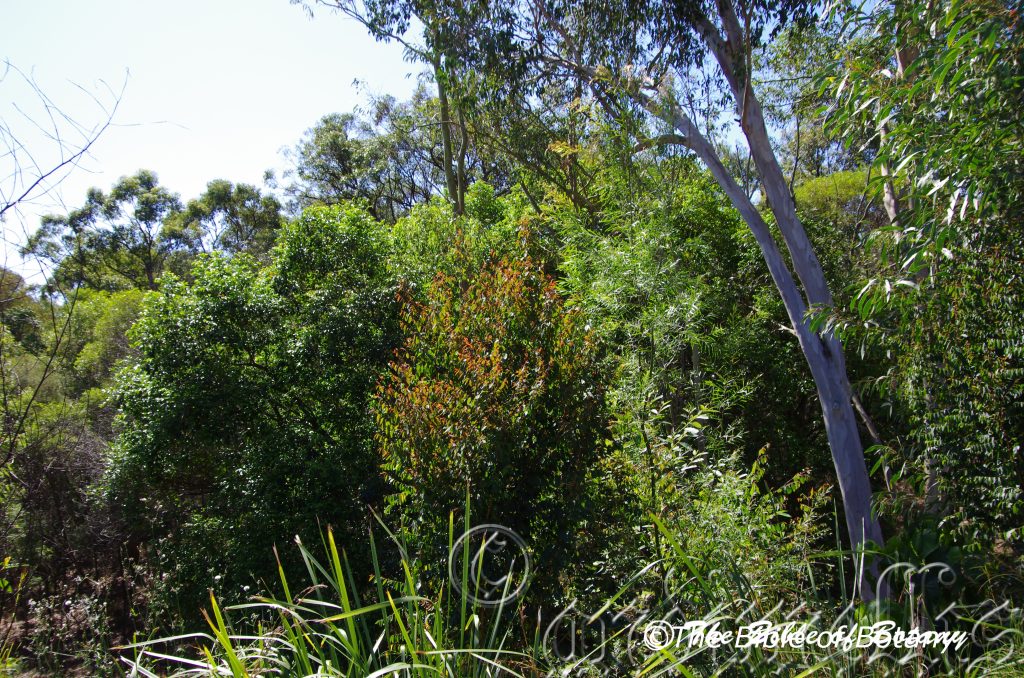
Norman Park Qld.
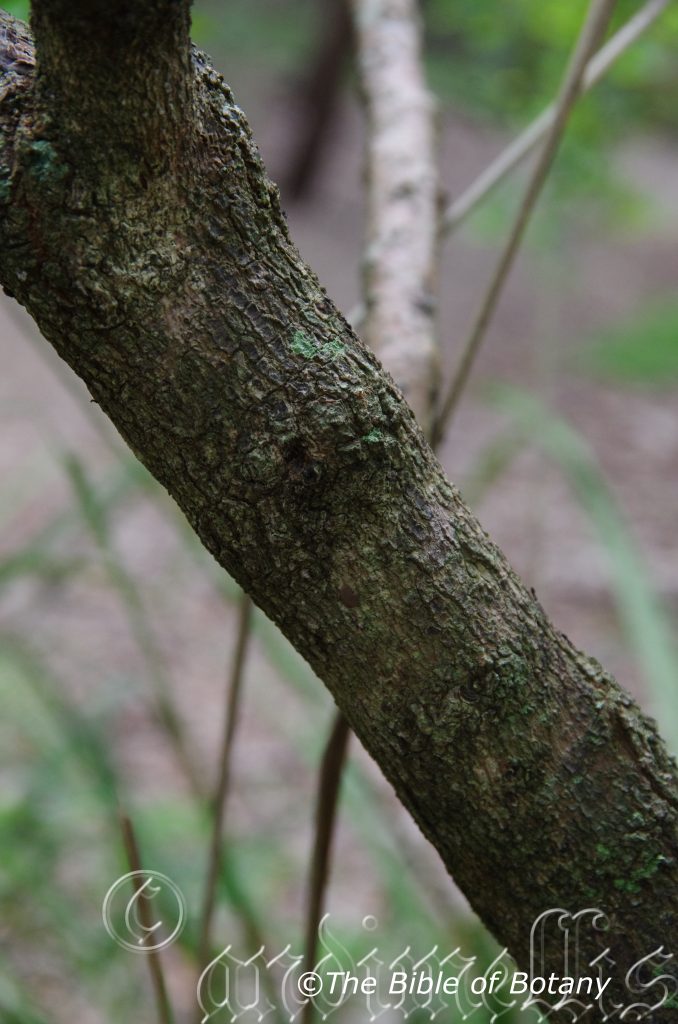
Kedron Brook Qld.

Kedron Brook Qld.
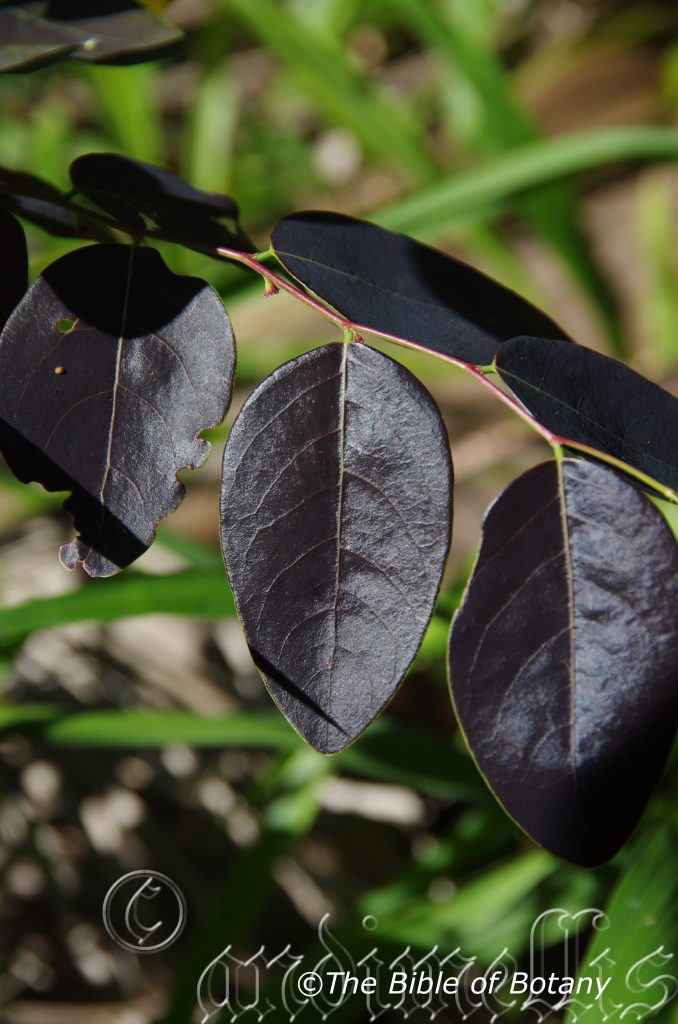
Author’s Garden The Pinnacles NSW

Kedron Brook Qld.

Author’s Garden The Pinnacles NSW
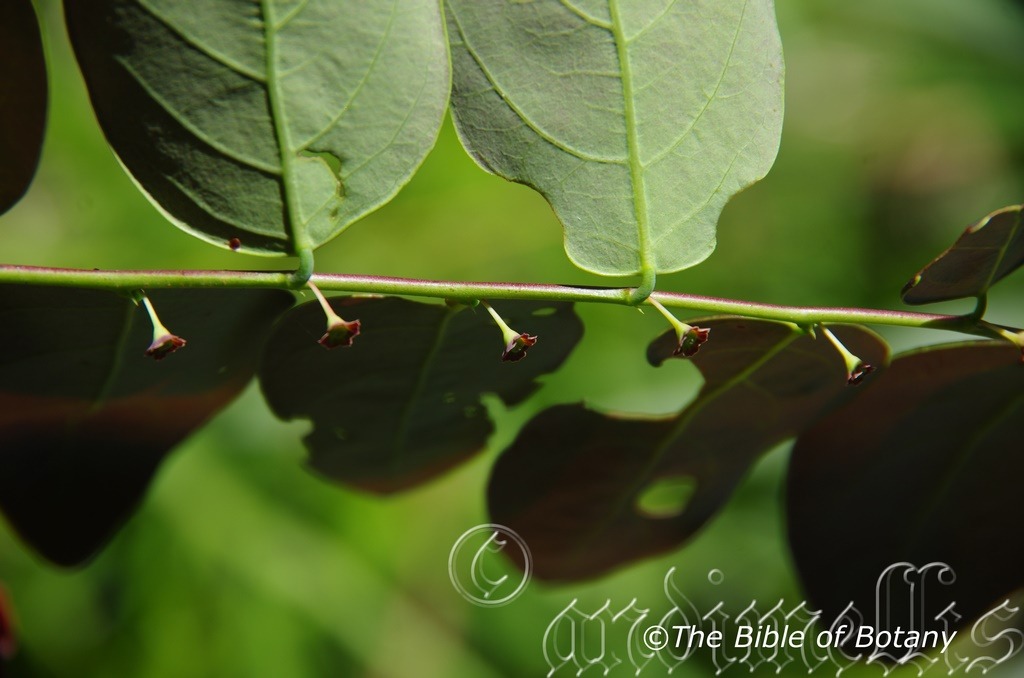
Author’s Garden The Pinnacles NSW

Author’s Garden The Pinnacles NSW
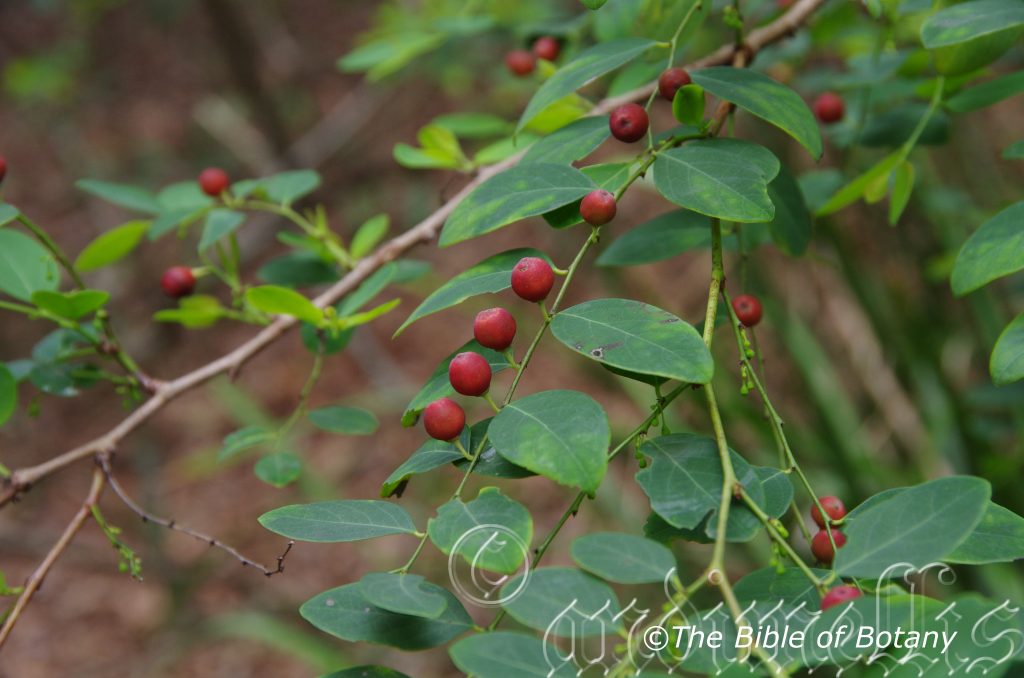
Kedron Brook Qld.
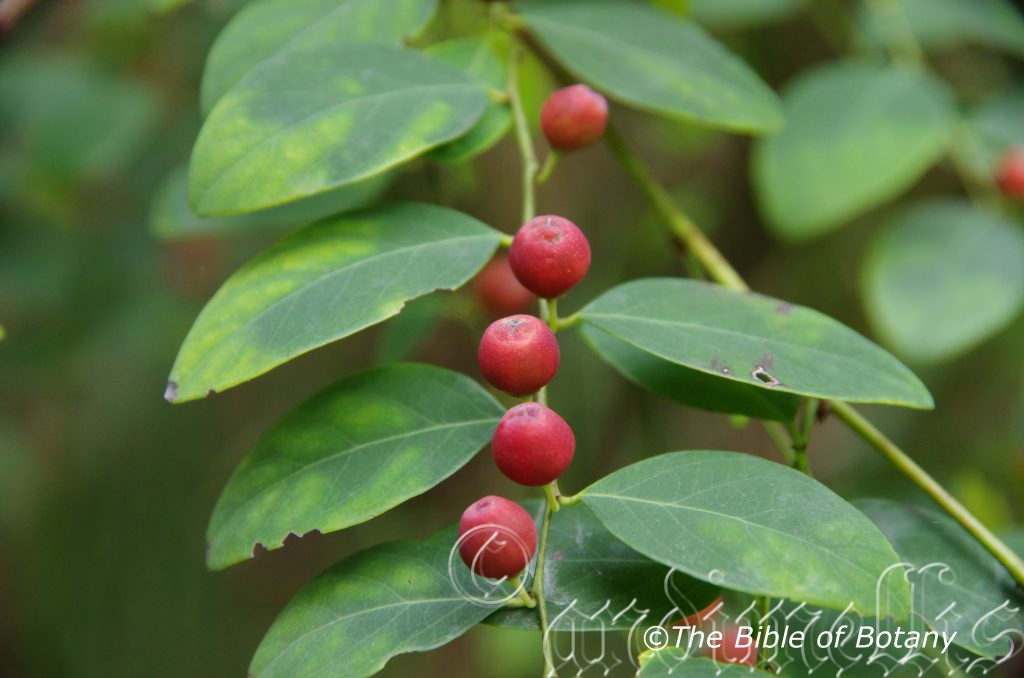
Kedron Brook Qld.
Breynia cernua
Classification:
Unranked: Eudicots
Unranked: Rosids
Order: Malpighiales
Family: Phyllanthaceae
Tribe: Phyllantheae
Subtribe: Fleuggeinae
Genus: Is named in honour of Jacob Breyn; 1637-1697, who was a German botanical author.
Specie: From Cernua which is Latin for stooping or bowing forward. It refers to the plants, which are upright but the ends of the branches bend downwards.
Sub specie:
Common Name: Garmer, Gamberin or Gagilamo.
Distribution:
Breynia cernua is found north of a line from One Arm Point in far north of Western Australia to the Upper Gilbert River in far north east Queensland then south on the western plains close to the Great Dividing Range and the on and east of the Great Dividing Range to Bega in far south eastern New South Wales.
It also extends northwards to New Guinee and west to Timor and Indonesia.
https://avh.ala.org.au/occurrences/search?taxa=Breynia+oblongifolia#tab_mapView
Habitat Aspect Climate:
Breynia cernua prefers bright shady positions to dappled sunlight. It is found in moist Eucalyptus forests, dry sub-tropical rainforests, riverine forests, moist open woodlands, gallery forests and monsoonal vine forests. The altitude ranges from 5 meters ASL to 1200 meters ASL.
The temperatures range from minus 3 degrees in July to 43 degrees in January.
The rainfall ranges from lows of 600mm to 3200mm average per annum.
Soil Requirements:
Breynia cernua prefers sandy loams, light gravelly clays to medium clays. The soils are derived from decomposed brown basalts, black basalts, shale, sandstone, metamorphic rocks and siltstones. The soils pH ranges from 4.5pH to 7pH. It does not tolerate of water logged soils though short periods of inundations are tolerated. Non saline soils to moderately saline soils are tolerated.
Height & Spread: 1.5 to 3m by 1.5m to 2m
Characteristics:
Theleaves of Breynia cernua are arranged distichously on twigs so that each twig resembles a compound leaf. The persistent stipules are broad deltoid and measure 1mm to 2mm in length. The oblong, oval to broad elliptical leaves measure 25mm to 40mm in length by 15mm to 23mm in width. Lateral veins forming fairly distinct loops inside the blade margin. Leaves do NOT emit a fetid odour when crushed on this specie.
At anthesis the flowers measure 1 to 3.5mm diam. The maroon tepals are broadly obovate with a mucronate apex. The male flowers have maroon, sessile anthers, which are fused to form a staminal column in the centre of the flower. The flowers have a cupular perianth the ovate gynoecium enclosed and protruding from the perianth. The fleshy style is creamy yellow.
The tepals are persistent at the base of the fruit, which measure 5mm to 8mm in diameter. There is a lateral cavity within the testa and the endosperm and embryo are curved to fit the cavity. The fruits of Breynia cernua are carried vertically on the upper side of the stems on the green leaf form, while the Iron range form the mature fruits hang downwards.
Wildlife:
Breynia cernua’s fruit are eaten by numerous honeyeaters and fruit eating birds as well as small native marsupials and native rodents. The fruits are edible and taste similar to poor flavoured raisins crossed with dried tomatoes.
Cultivation:
The maroon leaf form from the Iron Range in Western Australia is a particularly magnificent looking shrub that should be more widely grown in garden situations. Placed along fence lines in larger gardens will give small fauna a continuous and safe corridor when travelling from one place to another, or in the center of a small bush garden where the fruits again can be taken in. In cultivation it will grow to 1.5 meters to 3 meters by 1.5 meters to 2 meters in diameter in a sunny moist position. If it is grown in semi shade the purple colour of the foliage tends to become deeper and contrasts vertical green foliage beautifully.
This is one of those plants that adapts better to cultivation than in the wild. When cultivated the plants are taller and bushier develop larger leaves and better flowering and fruiting. When fertilized the berries measure 5mm to 8mm in length by 6mm to 8mm in diameter. The fruits are not edible.
One beautiful setting I did at Nana Glen was to place one plant in the center as a large shrub surrounded by 4 plants pruned as shrubs. These in return were surrounded by Melaleuca pearsonii which gave a great contrast in foliage and further out Xerochrysum bracteatum gave a tremendous lift in colour.
I believe there is a spot in every garden for Breynia cernua whether it is for bird attraction or the making of corridors. Only your imagination can limit its uses.
The only draw back is do not plant anything that will grow taller and drop branches as the branches and stems are very brittle. I have experienced that here with Livistona decepins when it drops its spent fronds and flower spikes.
Propagation:
Seeds: Sow seeds of Breynia cernua’s in early spring in the south or autumn in the north into a seed raising mix covering them with 2mm of mix. Sow the seeds sparingly. About 90mm of seeds will be fertile this is normal. Keep the seed tray in a well-lit, airy space that receives plenty of sunlight as seedlings are susceptible to root rot fungi like Rhyzoctonia. Rhyzoctonia are a group of fungi that thrive in dark, moist humid areas and attack the roots of plants especially those that do not like water logging or have a preference for drier conditions.
When the seedlings are 20mm to 40mm tall, prick them out and plant them into 50mm native tubes using a seed raising mix.
Fertilize using Seaweed, fish emulsion or organic chicken pellets soaked in water on an alternate basis. Fertilize every two months until the plants are established then annually in early September or March to maintain health, vitality and better flowering.
Once the seedlings reach 100mm to 150mm in height they can be tipped pruned to encourage a shrub effect or remove any side shoots to establish a small tree.
Once they reach 150mm to 200mm in height plant them out into their permanent position. Mass plantings can be achieved with spacing of 4 meters centers.
Further Comments from Readers:
“Hi reader, it seems you use The Bible of Botany a lot. That’s great as we have great pleasure in bringing it to you! It’s a little awkward for us to ask, but our first aim is to purchase land approximately 1,600 hectares to link several parcels of N.P. into one at The Pinnacles NSW Australia, but we need your help. We’re not salespeople. We’re amateur botanists who have dedicated over 30 years to saving the environment in a practical way. We depend on donations to reach our goal. If you donate just $5, the price of your coffee this Sunday, We can help to keep the planet alive in a real way and continue to bring you regular updates and features on Australian plants all in one Botanical Bible. Any support is greatly appreciated. Thank you.”
In the spirit of reconciliation we acknowledge the Bundjalung, Gumbaynggirr and Yaegl and all aboriginal nations throughout Australia and their connections to land, sea and community. We pay our respect to their Elders past, present and future for the pleasures we have gained.
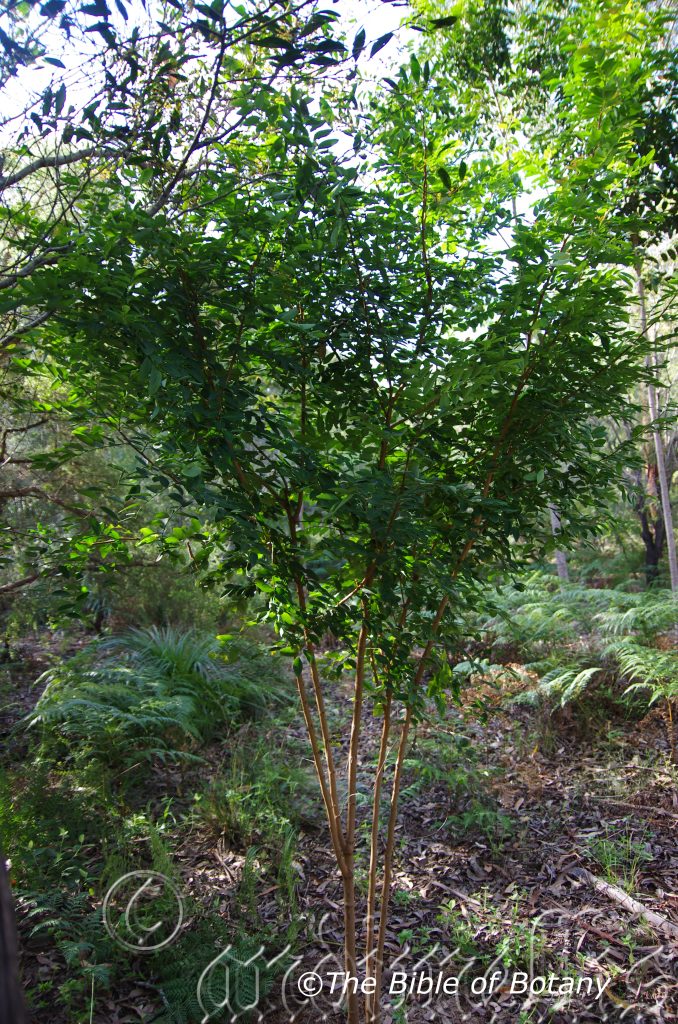
Author’s Garden The Pinnacles NSW

Author’s Garden The Pinnacles NSW
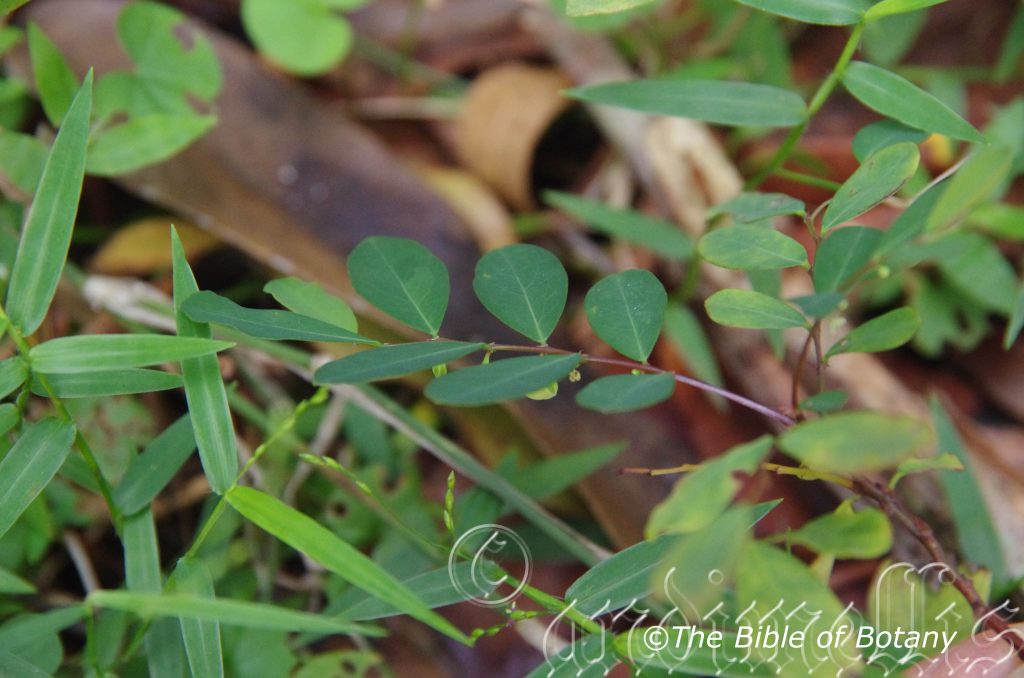
Author’s Garden The Pinnacles NSW
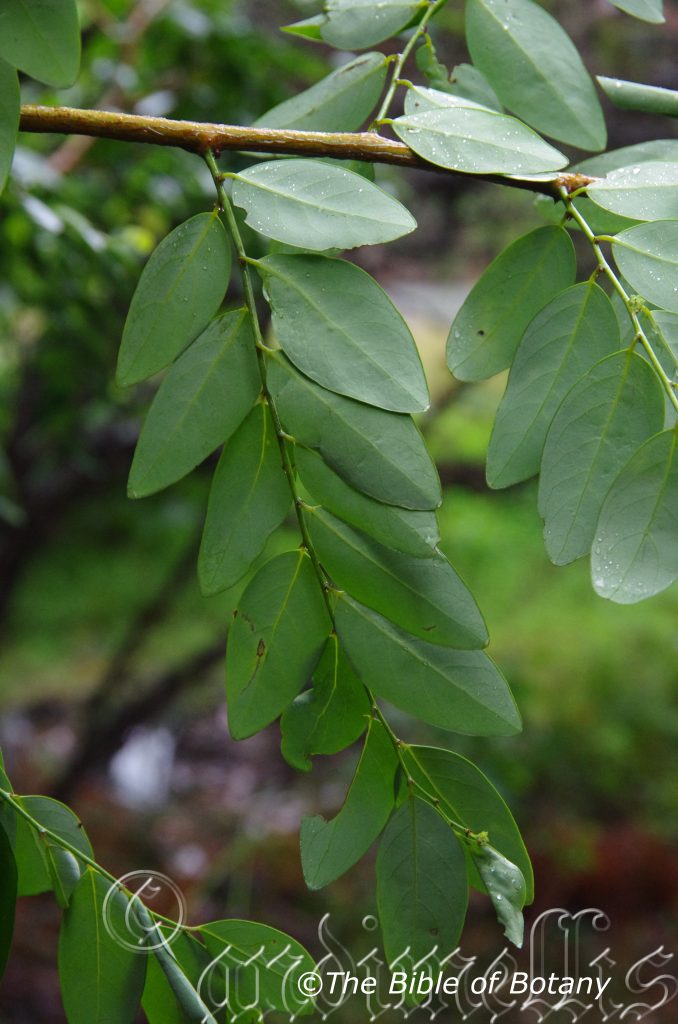
Author’s Garden The Pinnacles NSW
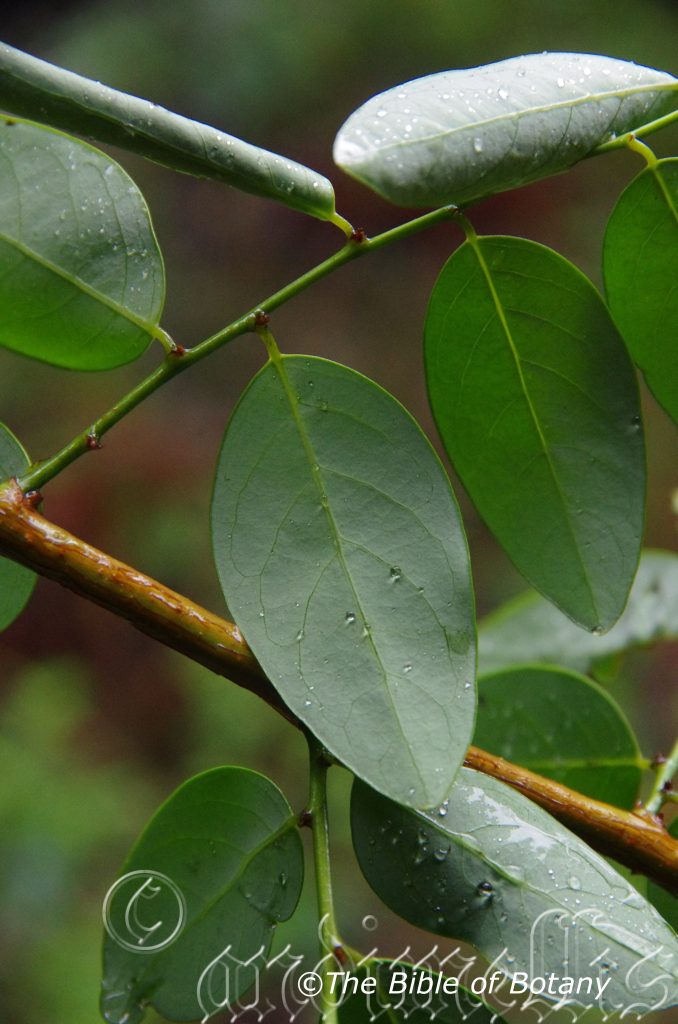
Author’s Garden The Pinnacles NSW

Author’s Garden The Pinnacles NSW

Author’s Garden The Pinnacles NSW

Author’s Garden The Pinnacles NSW
Breynia oblongifolia
Classification:
Unranked: Eudicots
Unranked: Rosids
Order: Malpighiales
Family: Phyllanthaceae
Tribe: Phyllantheae
Subtribe: Fleuggeinae
Genus: Is named in honour of Jacob Breyn; 1637-1697, who was a German botanical author.
Specie: From Oblongitia/Longus, which are Latin for an ovate shape and Folium, which is Latin for foliage. It refers to a leaves, which are several times longer than it is wide where the blades on either side of the midvein are equal in all aspects.
Sub specie:
Common Name: Oblong Leaf Breynia or Coffee Bush.
Distribution:
Breynia oblongifolia is found south from the Torres Straight Islands in far north Queensland to Merimbula in south eastern New South Wales. It is mainly found on and east of the Great Dividing Range to the coast. In far north Queensland it is found along the river systems on Cape York Peninsular and in the Gulf of Carpentaria.
It also extends westward on the Gulf Rivers in the Northern Territory and on the eastern side of Groote Eylandt.
https://avh.ala.org.au/occurrences/search?taxa=Breynia+oblongifolia#tab_mapView
Habitat Aspect Climate:
Breynia oblongifolia prefers bright shady positions to dappled sunlight. It is found in moist Eucalyptus forests, dry sub-tropical rainforests, moist tropical rainforests, moist open woodlands, gallery forests and monsoonal vine forests. The altitude ranges from 10 meters ASL to 1200 meters ASL.
The temperatures range from minus 3 degrees in July to 43 degrees in January.
The rainfall ranges from lows of 300mm to 3200mm average per annum.
Soil Requirements:
Breynia oblongifolia prefers sandy loams, light gravelly clays to medium clays. The soils are derived from decomposed brown basalts, black basalts, shale, metamorphic rocks and siltstones. The soils pH ranges from 4.5pH to 7pH. It does not tolerate of water logged soils though short periods of inundations are tolerated. Non saline soils to moderately saline soils are tolerated.
Height & Spread: 1.5 to 3m by 1m to 2m
Characteristics:
Breynia oblongifolia main stems are grey–brown to red-brown and glabrous. Young stems are glabrous and a deep red-brown while juvenile stems are glabrous and blue green similar to the juvenile leaves.
Rainfall affects the size shape and leaf structure of individual plants. Those found in drier areas are almost always associated with soaks along rivers and creeks where as those plants growing in high rain fall areas tend to grow in more open areas further away from permanent water.
Breynia oblongifolia has simple oblong, oval to broad elliptical leaves which measure 20mm to 30mm in length by 10mm to 15mm in width. The alternate pseudo pinnate leaves are on short stems and appear to be pinnate. There are 13 to 21 leaves on a stem. These stems are glabrous. The leaf bases are rounded while the apexes are obtuse to broad acute. The discolourous laminas are pale to mid blue-green to glaucous-green on the upper laminas while the lower laminas are paler. The margins are entire and curve slightly upwards from the midvein. The mid vein is prominent below and distinctly visible from above. There are 2 triangular stipules which measure 1mm to 3mm in length. The glabrous petioles measure 1mm to 3.5mm in length.
Inflorescences of Breynia oblongifolia are born singularly from the leaf axis. The pale green to green-red flower’s calyxes measure 3.2mm to 3.6mm in length. The wide spreading lobes measure 3.2mm to 3.6mm in diameter. The pale green anthers are fused to form a staminal tube in the center of the disc. The pedicels measure 6mm to 10mm in length. The flowers appear from late October to early May.
The fruits of Breynia oblongifolia are globose berries. The berries measure 5mm to 7mm in length by 5mm to 8mm in diameter. The pale blue-green fruits turn pink, orange or red before turning black when they are ripe. The tepals are persistent on the fruit. There are 4 to 6 small round black seeds in each fruit. The peduncles measure 8mm to 10mm in length.
Wildlife:
Breynia oblongifolia’s fruit are eaten by numerous honeyeaters and fruit eating birds as well as small native marsupials and native rodents. The fruits are edible and taste similar to poor flavoured raisins crossed with dried tomatoes.
Cultivation:
Breynia oblongifolia is a magnificent looking shrub that should be more widely grown in garden situations. Placed in a small bush garden where the fruits can be eaten by small birds. In cultivation it will grow from 1.5 meters to 3.5 meters by 1.5 meters to 2 meters in diameter in a sunny moist position. If is grown in the shade it tends to become more open whereas sun grown plants are naturally very bushy.
This is one of those plants that adapts better to cultivation than in the wild. When cultivated the plants are taller and bushier develop larger leaves and better flowering and fruiting. When fertilized the berries measure 5mm to 8mm in length by 6mm to 8mm in diameter. The fruits are not edible for humans.
I believe there is a spot in most gardens for Breynia oblongifolia whether it is for bird attraction or the making of corridors. Only your imagination can limit its uses. I have seen the silver eye, Zosterops lateralis nest in the trees.
Propagation:
Seeds: Sow seeds in early spring in the south or autumn in the north into a seed raising mix covering them with 2mm of mix. Sow the seeds sparingly. About 90mm of seeds will be fertile this is normal. Keep the seed tray in a well-lit, airy space that receives plenty of sunlight as seedlings are susceptible to root rot fungi like Rhyzoctonia. Rhyzoctonia are a group of fungi that thrive in dark, moist humid areas and attack the roots of plants especially those that do not like water logging or have a preference for drier conditions.
When the seedlings are 20mm to 40mm tall, prick them out and plant them into 50mm native tubes using a seed raising mix.
Fertilize using Seaweed, fish emulsion or organic chicken pellets soaked in water on an alternate basis. Fertilize every two months until the plants are established then annually in early September or March to maintain health, vitality and better flowering.
Once the seedlings reach 100mm to 150mm in height they can be tipped pruned to encourage a shrub effect or remove any side shoots to establish a small tree.
Once they reach 150mm to 200mm in height plant them out into their permanent position. Mass plantings can be achieved with spacing of 4 meters centers.
Further Comments from Readers:
“Hi reader, it seems you use The Bible of Botany a lot. That’s great as we have great pleasure in bringing it to you! It’s a little awkward for us to ask, but our first aim is to purchase land approximately 1,600 hectares to link several parcels of N.P. into one at The Pinnacles NSW Australia, but we need your help. We’re not salespeople. We’re amateur botanists who have dedicated over 30 years to saving the environment in a practical way. We depend on donations to reach our goal. If you donate just $5, the price of your coffee this Sunday, We can help to keep the planet alive in a real way and continue to bring you regular updates and features on Australian plants all in one Botanical Bible. Any support is greatly appreciated. Thank you.”
In the spirit of reconciliation we acknowledge the Bundjalung, Gumbaynggirr and Yaegl and all aboriginal nations throughout Australia and their connections to land, sea and community. We pay our respect to their Elders past, present and future for the pleasures we have gained.
Bridelia exaltata
Classification:
Unranked: Eudicots
Unranked: Rosids
Order: Malpighiales
Family: Phyllanthaceae
Genus: Is named in honour of Samuel Élisée de Bridel; 1761-1828, who was a Swiss botanical expert on mosses and lichens.
Specie: From Ex, which is Latin for out of the ordinary, outside or external and Alatus, which is Latin for lofty or tall. It refers to the shrubs which are much taller than other species in the genus.
Sub specie:
Common Name: Scrub Ironbark or Grey Birch or Brown Birch.
Distribution:
Bridelia exaltata is found south of Burrum Coast National Park in southern Queensland to Seal Rocks in northern New South Wales. It is found mainly on and east of the Great Dividing Range.
https://avh.ala.org.au/occurrences/search?taxa=Bridelia+exaltata#tab_mapView
Habitat Aspect Climate:
Bridelia exaltata prefers full sun to dappled shade. It is found in moist sub-tropical rainforests and dry rainforests. The altitude ranges from 5 meters ASL to 600 meters ASL.
The temperatures range from 1 degree in July to 38 degrees in January.
The rainfall ranges from lows of 500mm to 1600mm average per annum.
Soil Requirements:
Bridelia exaltata prefer soils that range from light clays to medium clays. The soils are derived from decomposed brown basalts, black basalts and shale. The soils pH ranges from 5pH to 6pH. It does not tolerate water logged soils. Non saline soils to moderately saline soils are tolerated.
Height & Spread: 20m to 35m by 8m to 12m
Characteristics:
Bridelia exaltata’s trunks are straight, grey–brown, rough and coarsely fissured. The bark is semi decorticating in scaly patches or long strips. Young and juvenile stems are glabrous deep reddish-brown turning deep grass-green with the latest flush. The branchlets are covered in white lenticels and wrinkled. Nearer to the apexes the young green shoots are covered in rusty-brown to golden-brown, appressed, sericeous, patulous hairs. Short aerial roots often develop along the branches.
The alternate leaves of Bridelia exaltata are simple elliptical, ovate to oblong leaves and measure 50mm to 120mm in length by 20mm to 50mm in width. The leaf bases are broad rounded, truncate, truncate with a slight cordate tip or broad cuneate while the apexes are broad acuminate. The discolourous laminas are deep green and glossy on the upper laminas while the lower laminas are pale grey-green and glabrous. The laminas recurve upwards from the mid vein to the margins. The margins are entire or finely crenate. The mid vein and lateral veins are prominent on both laminas but more pronounced on the lower laminas. The 13 to 16 pairs of lateral veins are at 60 degrees to the main vein. The narrow triangular stipules are caduceous. The petioles are covered in short, pale rusty-brown, puberulent hairs which extend onto the base of the mid veins and measure 3mm to 5mm in length.
The monoecious inflorescences of Bridelia exaltata are born singularly or in small clusters of 2 to 3 from the leaf axils or terminal on leafless branchlets or 3 to 5 flowers born on a short spike. The pale green to yellow-green flowers measure 4.5mm to 5mm in diameter. The 5 divaricate sepals measure 2mm to 2.3mm in length. The 5 yellow-green petals measure 1mm to 1.4mm in length. The pedicels are covered in rusty-brown to golden-brown sericeous hairs and measure 0.4mm to 0.6mm in length.
The 5 pale yellow-green stamens form a short staminal tube. The pale yellow anthers are oblong
The domed ovary and conical pistil measure 3mm to 3.5mm in length. The flowers appear from late December to late May.
The fruits of Bridelia exaltata are ovate drupes. The drupes measure 8mm to 10mm in length by 8mm to 11mm in diameter. The green drupes turn orange, orange-red, maroon or deep purple-black with pale green, yellow or yellow-green spots when they are ripe. The tepals are persistent at the base of the fruits while the remnants of the style are persistent at the apexes. There are 2 large stone seeds in each drupe. The pedicels are covered in rusty-brown to golden-brown sericeous hairs and measure 1.8mm to 3mm in length.
Wildlife:
Bridelia exaltata’s fruit are eaten by numerous large honeyeaters and fruit eating birds. The fruits are probably eaten by small native marsupials and native rodents. The fruits are edible though I have not come across ripe fruits to date to eat so cannot comment on the flavour.
Cultivation:
Bridelia exaltata is a tree for larger gardens along the coast and adjacent ranges. It is an excellent shade tree, which should be more widely grown in warm temperate to cool tropical gardens. In cultivation it will grow from 10 meters to 15 meters by 8 meters to 10 meters in diameter in a sunny, moist, open position. If it is grown in the shade it tends to grow more upright with a smaller diameter.
This is one of those plants that adapts better to cultivation than in the wild. When cultivated the plants are bushier, develop larger leaves and better flowering and fruiting.
Bridelia exaltata is a beautiful shade tree, as a standalone specimen as it has a dense crown and provide very good shade for a park like garden or adjacent to an outdoor entertainment area. It can be easily landscaped into a vehicle turn around area or traffic island. Below a tropical garden can be established using Cordyline species, Grapotphyllum excellsum and Molineria ensifolia or alternatively planted with Cissus Antarctica or Cissus hypoglauca as ground covers with Cordyline species to give a vertical line.
Bridelia exaltata would make very good accent trees in front of low set commercial buildings, industrial sheds or school buildings where they will break up hard rigid architectural lines and give warmth and breadth to a building. In front of high rise buildings it can give balance especially where it could be grown in curves or in a formal manner with narrow pyramidal trees planted alternately between the trees or between the building and the pyramidal trees on the nature strip.
I am surprised that it has never been used in commercial entrances and foyers to break the ice and give a feeling of relaxation prior to business as usual but somehow make the business more relaxing.
Propagation:
Seeds: Sow seeds in early spring in the south or autumn in the north into a seed raising mix covering them with 2mm of mix. Sow the seeds sparingly. About 90mm of seeds will be fertile this is normal. Keep the seed tray in a well-lit and in an airy space that receives plenty of sunlight.
When the seedlings are 20mm to 40mm tall, prick them out and plant them into 50mm native tubes using a seed raising mix.
Fertilize using Seaweed, fish emulsion or organic chicken pellets soaked in water on an alternate basis. Fertilize every two months until the plants are established then annually in early September or March to maintain health, vitality and better flowering.
Once the seedlings reach 100mm they can be tipped pruned to encourage a shrub effect or remove any side shoots to establish a tree.
Once they reach 150mm to 200mm in height plant them out into their permanent position. Mass plantings can be achieved with spacing of 4 meters centers.
Further Comments from Readers:
“Hi reader, it seems you use The Bible of Botany a lot. That’s great as we have great pleasure in bringing it to you! It’s a little awkward for us to ask, but our first aim is to purchase land approximately 1,600 hectares to link several parcels of N.P. into one at The Pinnacles NSW Australia, but we need your help. We’re not salespeople. We’re amateur botanists who have dedicated over 30 years to saving the environment in a practical way. We depend on donations to reach our goal. If you donate just $5, the price of your coffee this Sunday, We can help to keep the planet alive in a real way and continue to bring you regular updates and features on Australian plants all in one Botanical Bible. Any support is greatly appreciated. Thank you.”
In the spirit of reconciliation we acknowledge the Bundjalung, Gumbaynggirr and Yaegl and all aboriginal nations throughout Australia and their connections to land, sea and community. We pay our respect to their Elders past, present and future for the pleasures we have gained.
Bruguiera gymnorhiza
Classification:
Unranked: Eudicots
Unranked: Rosids
Order: Malpighiales
Family: Rhizophoraceae
Genus: Is named in honour of J. C. Bruguieres; 1750-1899, who accompanied Kerguelen on his expedition to Antarctica.
Specie: From Gýmnos, which is Greek for naked or bare and Rhiza, which is Ancient Greek for a root or rhizome. It refers to the roots or rhizomes, which are free of hairs and scales or glabrous.
Sub specie:
Common Name: Black mangrove or Orange Mangrove.
Distribution:
Bruguira gymnorhiza is a wide spread shrub along the coast from the Torres Straight Islands in far north Queensland to the Clarence River in northern New South Wales.
It is also found from west Bathurst Island, the Daly River and the adjacent coastline to Groote Eylandt and Vanderlin Island in the Northern Territory.
https://avh.ala.org.au/occurrences/search?taxa=Bruguiera+gymnorhiza#tab_mapView
Habitat Aspect Climate:
Bruguira gymnorhiza prefers full sun to full shade. It grows in wet estuarine, protected intertidal zones or within and behind mangrove forests. The altitude ranges from 1 meter BSL to 12 meters ASL.
The temperatures range from 1 degrees in July to 38 degrees in January.
The rainfall ranges from lows of 800mm to 3200mm average per annum. Interesting to note that it is not found in areas with rainfalls below 800mm per annum despite its growing north and south where the rainfall is higher and growing in tidal saline conditions. This also includes the absences of plants along the western side of Cape York Peninsular and south of the Daly River in the Northern Territory west to the Kimberley’s where the rainfall and soil conditions would be acceptable.
Soil Requirements:
Bruguira gymnorhiza prefers deep, coarse sands, fine sands, sandy loams, light fatty clays, medium clays or light muddy silts to heavy muddy silts. The soils are usually derived from decomposed sandstones granites, brown basalts, black basalts, shales, metamorphic rocks, alluvial deposits or accumulated peaty beach sands. The soil’s pH ranges from 4.5pH to 6.5pH. It does not tolerate water logged soils. None saline soils to moderately saline soils are tolerated. The soils pH ranges from 4pH to 8pH. It tolerates of water logged soils. Non saline soils to extremely saline soils are tolerated.
Height & Spread: 25m to 35m by 15m to 18m
Characteristics:
Bruguira gymnorhiza main stems are deep grey to deep grey-brown and are densely covered in large paler lenticels. Young stems are glabrous and a deep red-brown while new growth and juvenile stems are deeply indented with the old leaf scars. Knee roots are produced beyond the canopy.
The opposite to crowded opposite leaves of Bruguira gymnorhiza are simple obovate to elliptical and measure 50mm to 220mm in length by 30mm to 90mm in width. The leaf bases are cuneate while the apexes are broad acute. The concolourous laminas are deep glossy green and glabrous on the upper laminas while the lower laminas are sparsely semi glossy and sparsely covered in fine dark spots. The thick coriaceous laminas recurve upwards from the mid vein to the margins. The mid veins are strongly prominent on the lower laminas and are distinctly visible from the upper laminas. The 2 pascal opaque to translucent green stipules are elliptical, caduceous and measure 20mm to 40mm in length. The glabrous petioles are pinkish-green and measure 20mm to 40mm in length.
Inflorescences of Bruguira gymnorhiza are singularly born from the upper leaf axils. The nodding calyxes are deep pink to scarlet-red or carmine-red or very rarely creamy yellow-green as is the case in some northern Australian forms. The calyxes measure 12mm to 16mm in length. The 12 to 14 linear, erect lobes are deep pink to scarlet-red or carmine-red or very rarely creamy yellow-green as is the case in some northern Australian forms externally and cream to white internally. The thick coriaceous lobes are glabrous or sparsely covered in white sericeous hairs internally near the base and measure 20mm to 25mm in length by 1.5mm to 3mm in width. The 12 to 14 white bilobed petals turn orange-brown after anthesis. The petals measure 10mm to 12mm in length by 3mm to 4mm in width including the 3mm to 4.5mm lobes. The petal lobes have 3 or 4 long fawn, velutinous hairs at the apexes and measure 3mm to 4mm in length. The deep reddish-green pedicels measure 10mm to 25mm in length.
The 24 to 28 creamy white, filiform filaments turn pale fawn on maturing and measure 9mm to 12mm in length while the creamy dorsifixed anthers are oblong.
The creamy white, filiform style measures 11mm to 13mm in length. The flowers appear from late August to early January, shortly after a flush of new growth.
The fruits of Bruguira gymnorhiza are fleshy viviparous fruits. The fruits measure 35mm to 60mm in length by 8mm to 13mm in diameter. The deep blue-green, glabrous fruits are glabrous.
Wildlife:
Bruguira gymnorhiza’s leaves are consumed by numerous insects both on the tree and those that have fallen to the ground. Crabs also graze on the leaves with several species of molluscs and small fish and fingerlings.
The relationship between Bruguira gymnorhiza and nectar feeding birds is so highly developed that birds trigger an explosive delicencing of pollen from the anthers when approached for the nectar.
Bruguira gymnorhiza’s is excellent for the production of charcoal, paper, pole timber and bearer beams for housing.
Cultivation:
Bruguira gymnorhiza is an erect growing tree or dense shrub when grown in cultivation that should be more widely grown in gardens associated with estuarine or where salinity is a problem or strong salt laden winds exist. Placed along creek lines it will give small fauna a continuous and safe corridor when travelling from one place to another. In cultivation it will grow 4 meters to 6 meters by 4 meters to 6 meters in diameter when grown in a sunny open position with spacing of 8 meters or more. If it is grown in the shade and closer together with spacing of 1.5 meters to 2 meters it will form a straight trunk with a smaller canopy and could grow from 15 meters to 20 meters by 4 meters to 6 meters in diameter. It is being cultivated in northern tropical Islands for their timber. Southern cooler grown trees tend to be shorter and more spreading even in nature.
This is one of those plants that adapts really well to cultivation.
It is an ideal tree for growing epiphytic ferns like Platycerium bifurcatum and and some orchids, which agrow naturally along estuaries and beach fronts like Thelychiton discolor and Dendrobium gracilicaule, which can handle salt laden winds in high rainfall areas.
Propagation:
Seeds: Sow freshly fallen seeds directly into 100mm native bags using a 50mm soil 50mm peat or vermiculite mix. Place the bags in 30mm shade for optimum growth and keep wet. The water used for watering should contain some salt. The best source is marine water diluted down to 10mm is ideal in the nursery. Remember though the use of saline water will affect the soil or plants downstream if you are away from the coast where run off water is not within a tidal zone
When the seedlings reach the 3 to 4 node stage they can be planted into their permanent positions or potted up into 200mm native bags.
Fertilize using Seaweed, fish emulsion or organic chicken pellets soaked in water on an alternate basis. Fertilize every two months until the plants are established then annually in early September or March to maintain health, vitality and better flowering.
Once the seedlings reach 200mm to 300mm in height they should be planted out. It can be tipped pruned to encourage a shrubery effect or remove any side shoots to establish a tree and plant at the above recommended distances.
Further Comments from Readers:
“Hi reader, it seems you use The Bible of Botany a lot. That’s great as we have great pleasure in bringing it to you! It’s a little awkward for us to ask, but our first aim is to purchase land approximately 1,600 hectares to link several parcels of N.P. into one at The Pinnacles NSW Australia, but we need your help. We’re not salespeople. We’re amateur botanists who have dedicated over 30 years to saving the environment in a practical way. We depend on donations to reach our goal. If you donate just $5, the price of your coffee this Sunday, We can help to keep the planet alive in a real way and continue to bring you regular updates and features on Australian plants all in one Botanical Bible. Any support is greatly appreciated. Thank you.”
In the spirit of reconciliation we acknowledge the Bundjalung, Gumbaynggirr and Yaegl and all aboriginal nations throughout Australia and their connections to land, sea and community. We pay our respect to their Elders past, present and future for the pleasures we have gained.

Indiscapes Capalaba Qld.
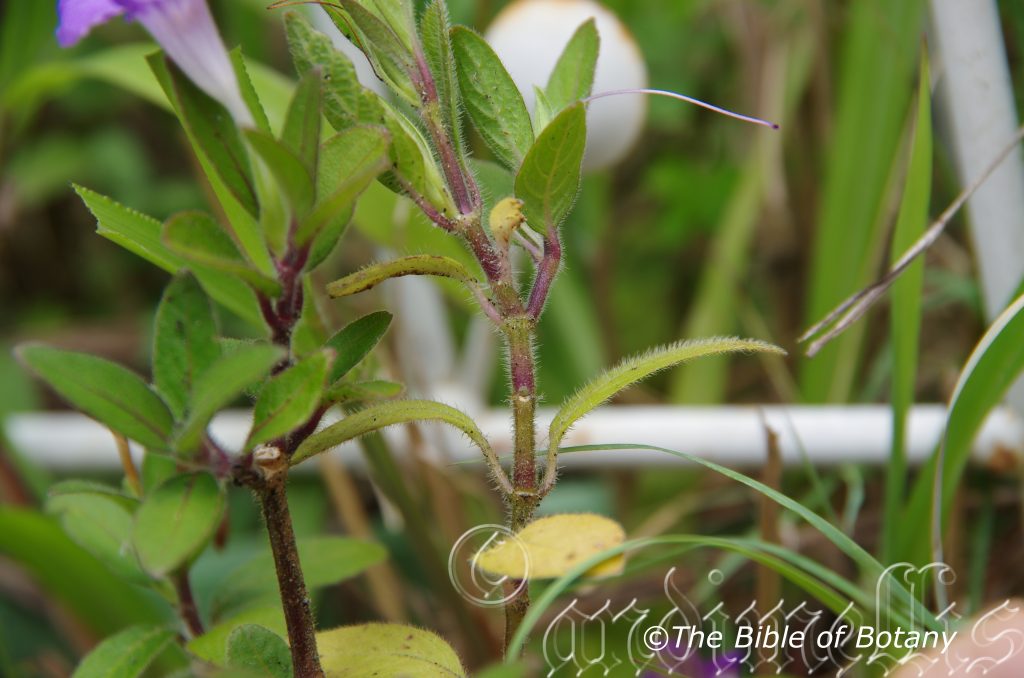
Author’s Garden The Pinnacles NSW
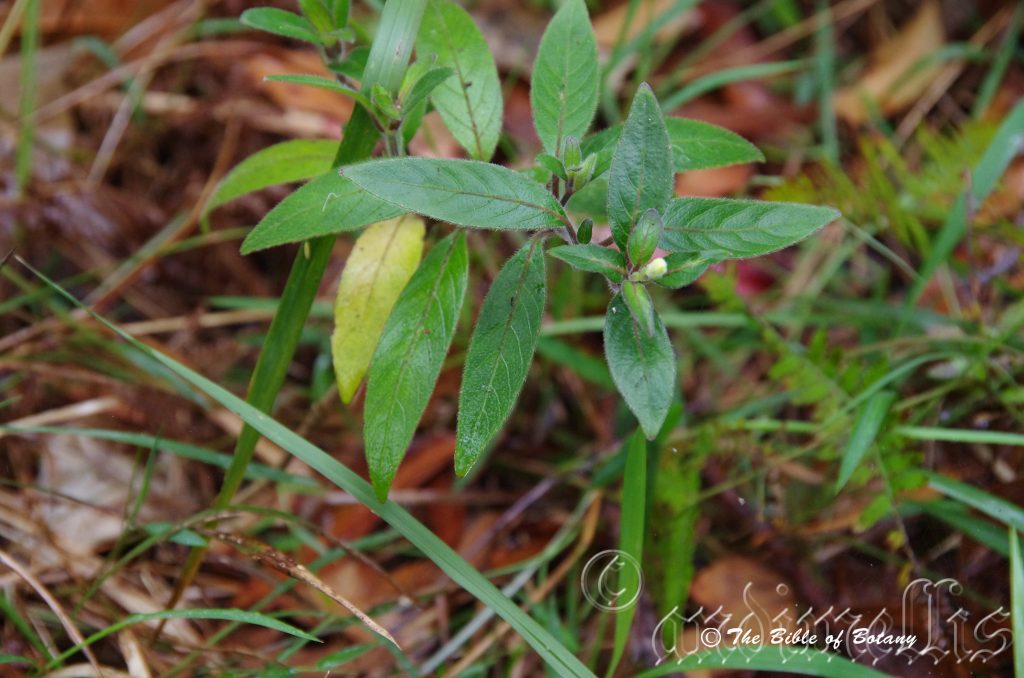
Indiscapes Capalaba Qld.
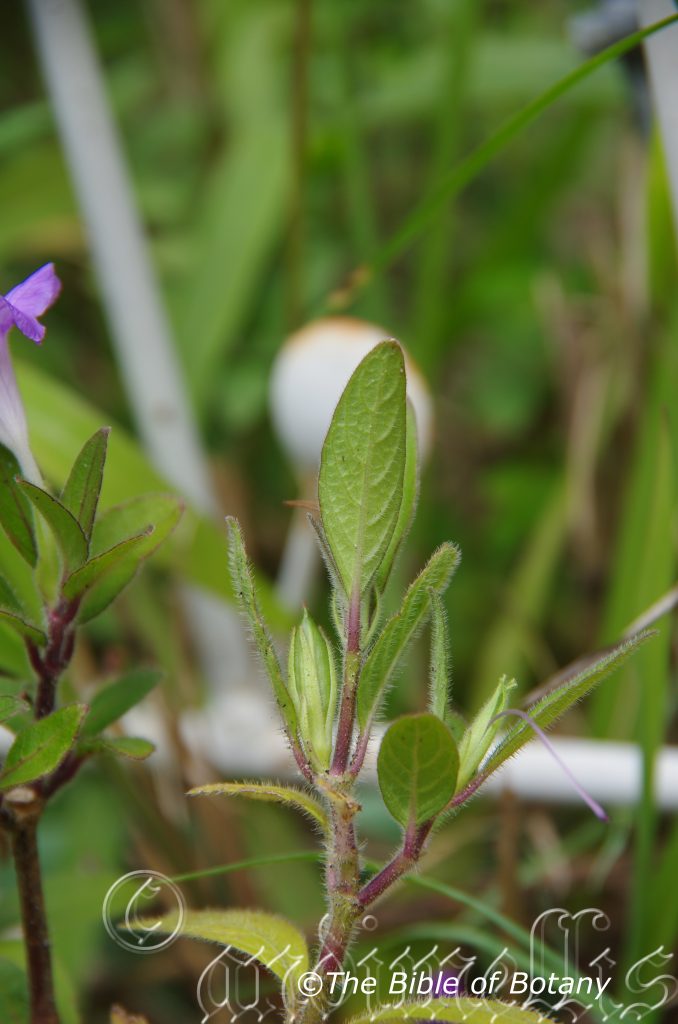
Author’s Garden The Pinnacles NSW

Author’s Garden The Pinnacles NSW
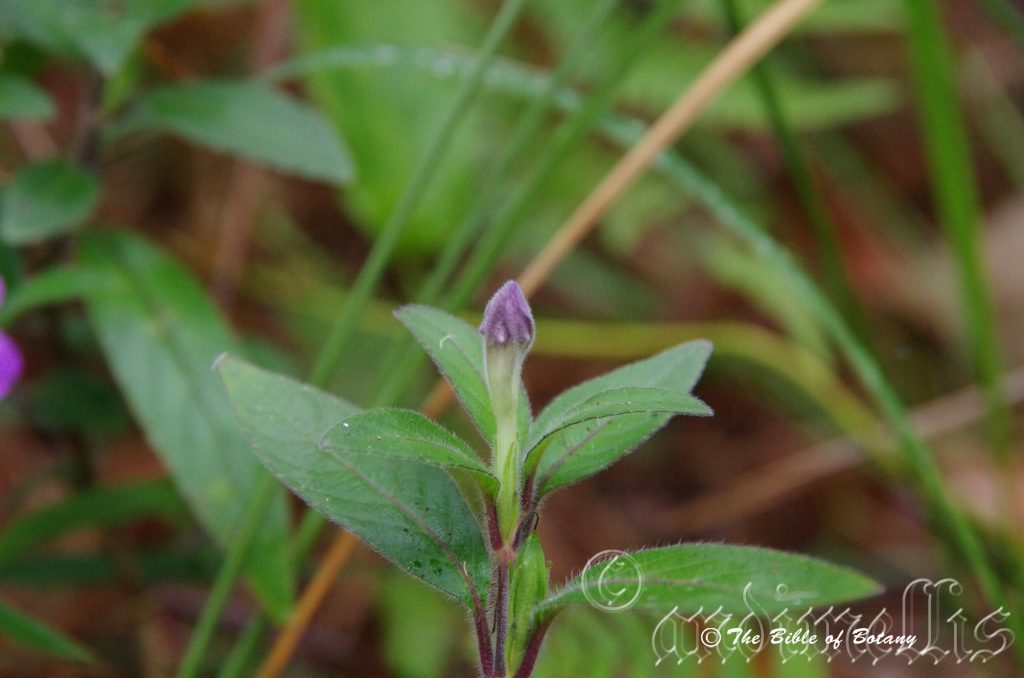
Indiscapes Capalaba Qld.
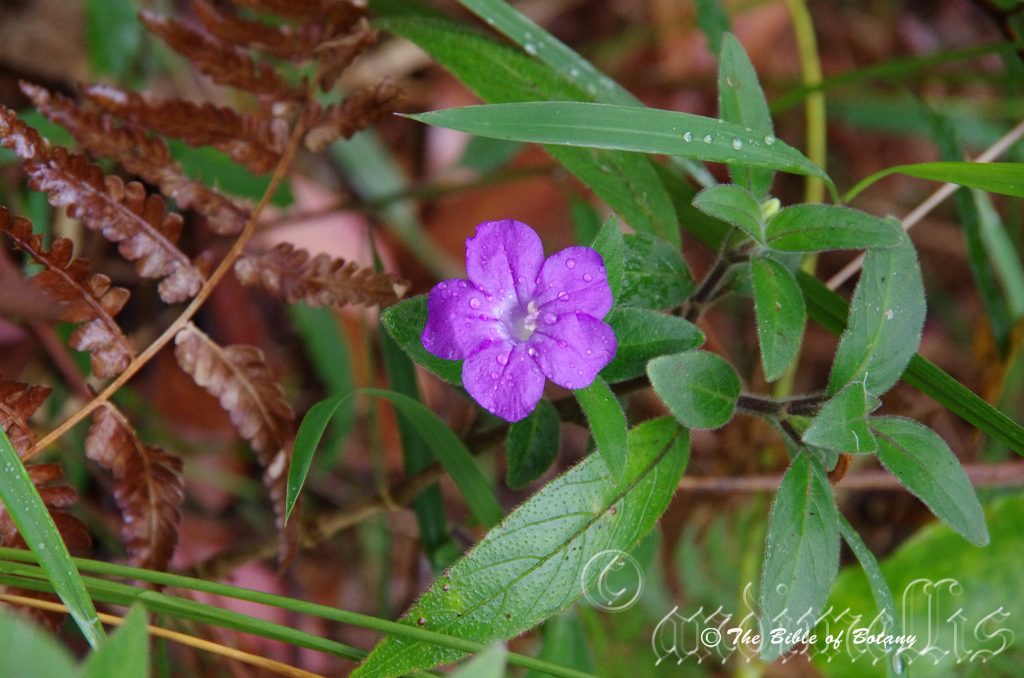
Indiscapes Capalaba Qld.

Author’s Garden The Pinnacles NSW
Brunoniella australis
Classification:
Unranked: Eudicots
Unranked: Asterids
Order: Lamiales
Family: Acanthaceae
Subfamily: Acanthaloideae
Tribe: Ruellieae
Genus: Is unknown though Ella is Ancient Greek for feminine.
Specie: From Terra Australis, which is Latin for land of the south. It refers to plants, which were first discovered from the land down under.
Sub specie:
Common Name: Blue Trumpet.
Distribution:
Bruniella australis is found from the Kimberley’s as far inland as Beverly Springs in far north western, Western Australia to far north eastern Northern Territory.
It is found south from the Torres Straight Islands in far north Queensland to the Sydney Basin in central coastal New South Wales.
https://avh.ala.org.au/occurrences/search?taxa=Bruguiera+gymnorhiza#tab_mapView
Habitat Aspect Climate:
Bruniella australis prefer partial shade to full sun. It grows in dry schlerophyll forests, moist woodlands and adjacent to dry rainforests closer to the coast. The altitude ranges from 10 meters ASL to 450 meters ASL.
The temperatures range from minus 3 degrees in July to 43 degrees in January.
The rainfall ranges from lows of 900mm to 3200mm average per annum along the coast in drier forests while inland plants in riparian zones favour areas with rainfalls ranging from lows of 350mm to 900mm average per annum.
Soil Requirements:
Bruniella australis prefer soils that light red clays to medium red clays. The soils are derived from decomposed brown basalts, black basalts, shale, metamorphic rocks and siltstones. The soils pH ranges from 4.5pH to 6pH. It does not tolerate of water logged soils. Non saline soils to moderately saline soils are tolerated.
Height & Spread: 0.05 to 0.15m by 0.15m to 0.25m
Characteristics:
Bruniella australis stems are few, 4 to 6 angled, grey–green to deep purple-green and sparsely to densely covered in long white linear cystoliths.
The opposite leaves of Bruniella australis simple, unequal, ovate or obovate to oblanceolate. They measure 15mm to 80mm in length by 5mm to 30mm in width. The leaf bases are broad cuneate, rounded to truncate while the apexes are acute to obtuse. The discolourous laminas are pale blue-green to mid blue-green and are sparsely to densely covered in linear white cytolith crystals on the upper laminas while the lower laminas are paler and are sparsely to densely covered in linear white cytolith crystals often with small purple glands. The laminas recurve upwards from the mid vein to the margins. The margins are entire. The mid vein is strongly prominent while the 3 to 4 pairs of lateral veins are slightly prominent on the lower laminas. Only the mid vein is visible from the upper laminas. The petioles are sparsely to densely covered in linear white cytolith crystals and measure 2mm to 15mm in length.
Inflorescences of Bruniella australis are small, sessile, clusters born singularly from the leaf axils. The pale green to grass-green linear bracteoles are sparsely to densely covered in linear white cytolith crystals and measure 2mm to 7mm in length. The maroon, linear sepals are sparsely to densely covered in linear white cytolith crystals and measure 7mm to 12mm in length. The deep lilac to pale purple-blue corolla tubes is covered in white puberulent hairs externally and is glabrous internally. The corollas measure 6mm to 12mm in length. The 5 divaricate obtuse lobes are covered in white puberulent hairs and externally and measure 2mm to 9mm in length and diameter.
The 5 cream to white anthers are inserted.
The white bilobed style measures 6mm to 12mm in length. The ovary has 5 to 7 ovules per locule. The flowers appear from late September to June.
The fruits of Bruniella australis are oblong round capsules. The capsules measure 10mm to 17mm in length by 3.5mm to 5mm in diameter. The blue-green fruits turn deep brown when they are ripe. The sepals are persistent at the base of the capsules and the style is persistent at the apex. There are 4 to 6 small round black seeds in each fruit. The peduncles measure 8mm to 10mm in length.
Wildlife:
Bruniella australis’s wildlife is unknown to the author.
Cultivation:
Bruniella australis is a very pretty herbaceous annual for small sunny rockeries. Bruniella australis would make a good contribution to clay or rocky terrain rock garden. Here it can be used as fill in plants, scattered throughout the garden. When you use them in area that is strewn with rocks or boulders it looks at its best if mass planted without any other shrubs or annual to give a strong showing. The exception could be with the addition of some of the Hibbertia species like Hibbertia accuminata, Hibbertia empetrifolia or Hibbertia vestita.
Bruniella australis is best suited to flat open spaces where it can be displayed to its best advantage. Plants must be mass planted due to their small size. The idea is to achieve a feeling of expansive harshness with a few patches of other colours as not to distract from its beautiful green foliage and mid purple flowers.
Propagation:
Seeds: I do not know anyone who has grown this from seed however it appears that it would not give any problems.
Seeds are easy to collect when in season and should be sown in early spring as soon as the last frosts have abated. Sow the seeds sparingly. It is normal for at least 90mm of seeds to germinate. Keep the seed tray in a well-lit, airy space that receives plenty of sunlight as seedlings are susceptible to root rot fungi like Rhyzoctonia. Rhyzoctonia are a group of fungi that thrive in dark, moist humid areas and attack the roots of plants especially those that do not like water logging or have a preference for drier conditions.
When the seedlings are 20mm to 40mm in height, prick them out and plant them into 50mm native tubes using a seed raising mix.
Fertilize using Seaweed, fish emulsion or organic chicken pellets soaked in water on an alternate basis. Fertilize every two months until the plants are established then annually in early September or March to maintain health, vitality and better flowering.
Once the seedlings reach 60mm they can be tipped pruned to encourage a denser foliaged herb. Mass plantings can be achieved by planting them at 0.1m to 0.2m centers.
Further Comments from Readers:
“Hi reader, it seems you use The Bible of Botany a lot. That’s great as we have great pleasure in bringing it to you! It’s a little awkward for us to ask, but our first aim is to purchase land approximately 1,600 hectares to link several parcels of N.P. into one at The Pinnacles NSW Australia, but we need your help. We’re not salespeople. We’re amateur botanists who have dedicated over 30 years to saving the environment in a practical way. We depend on donations to reach our goal. If you donate just $5, the price of your coffee this Sunday, We can help to keep the planet alive in a real way and continue to bring you regular updates and features on Australian plants all in one Botanical Bible. Any support is greatly appreciated. Thank you.”
In the spirit of reconciliation we acknowledge the Bundjalung, Gumbaynggirr and Yaegl and all aboriginal nations throughout Australia and their connections to land, sea and community. We pay our respect to their Elders past, present and future for the pleasures we have gained.
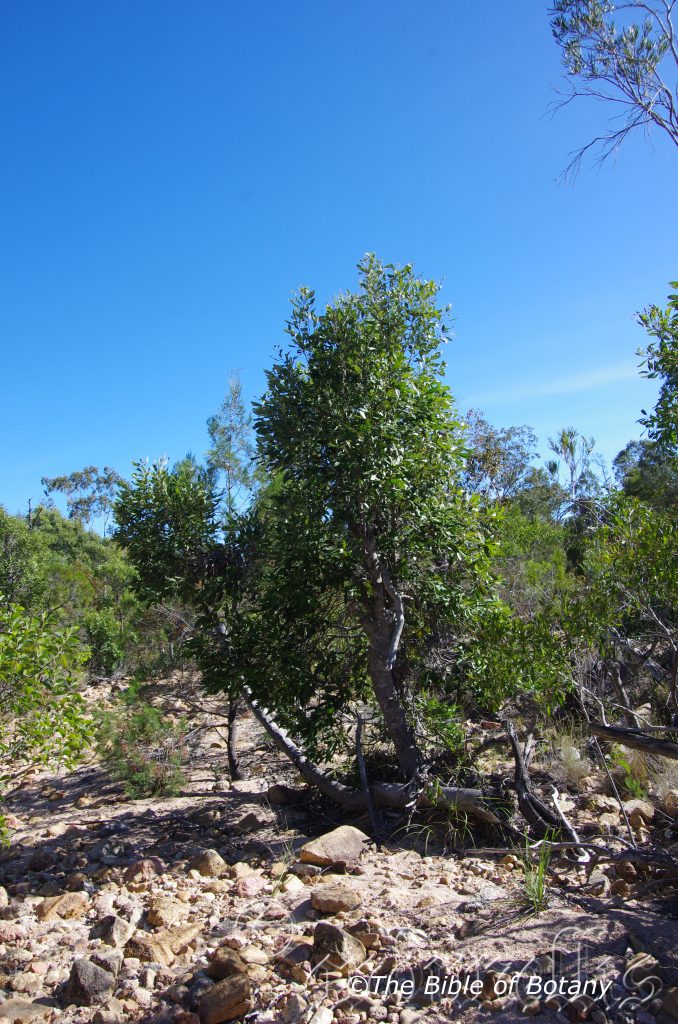
Hidden Valley Paluma Range Qld.
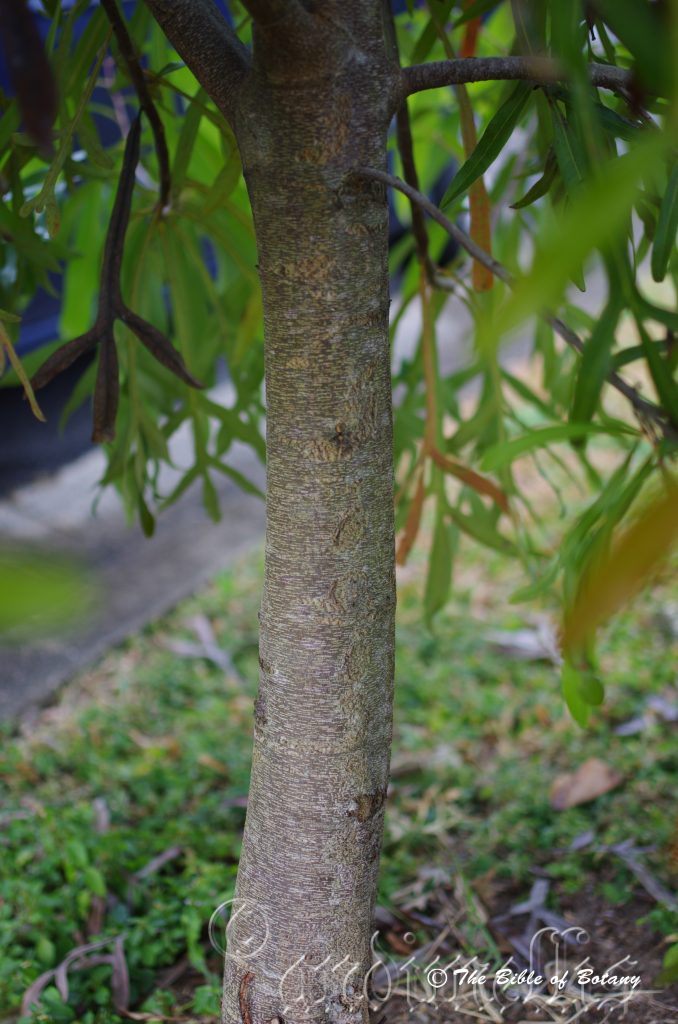
Kedron Brook Qld.
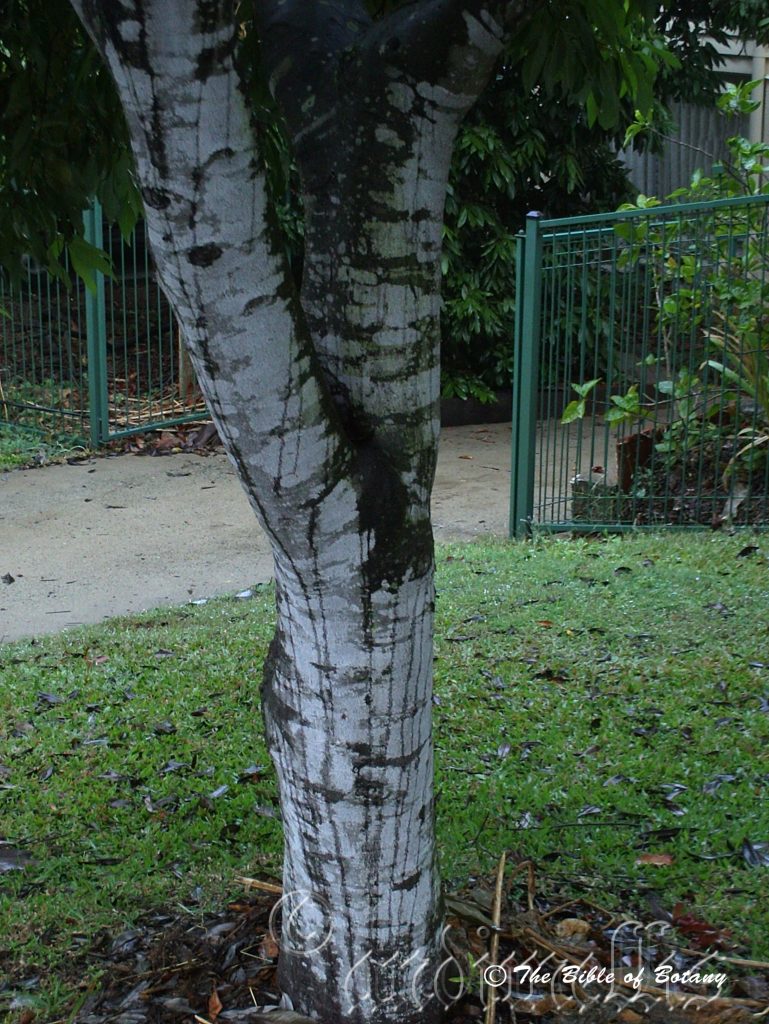
Norman Park Qld.
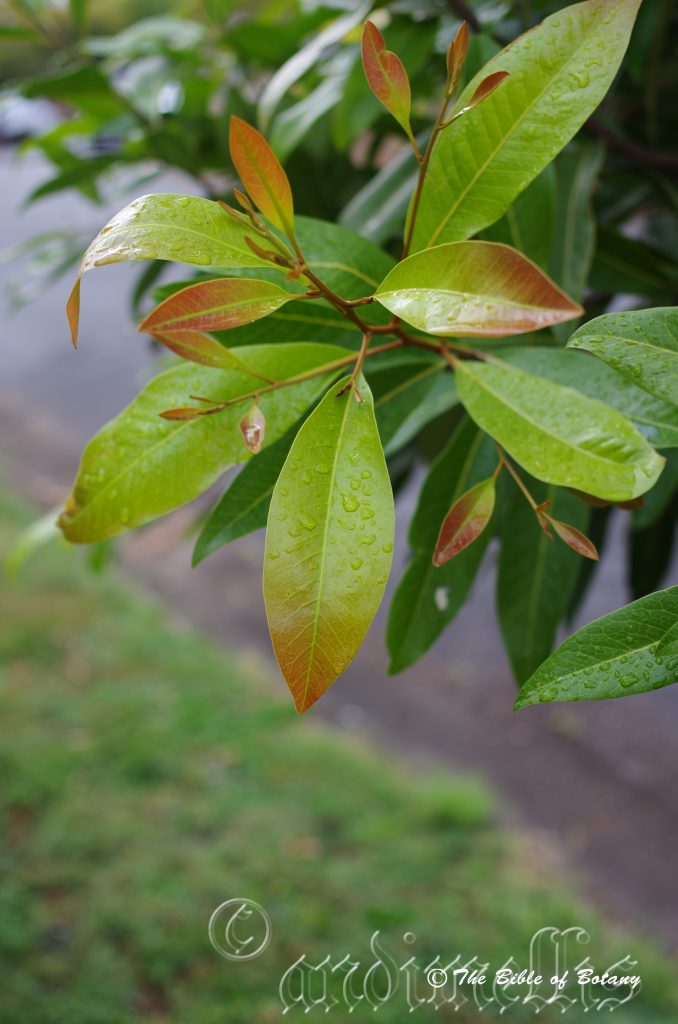
Kedron Brook Qld.
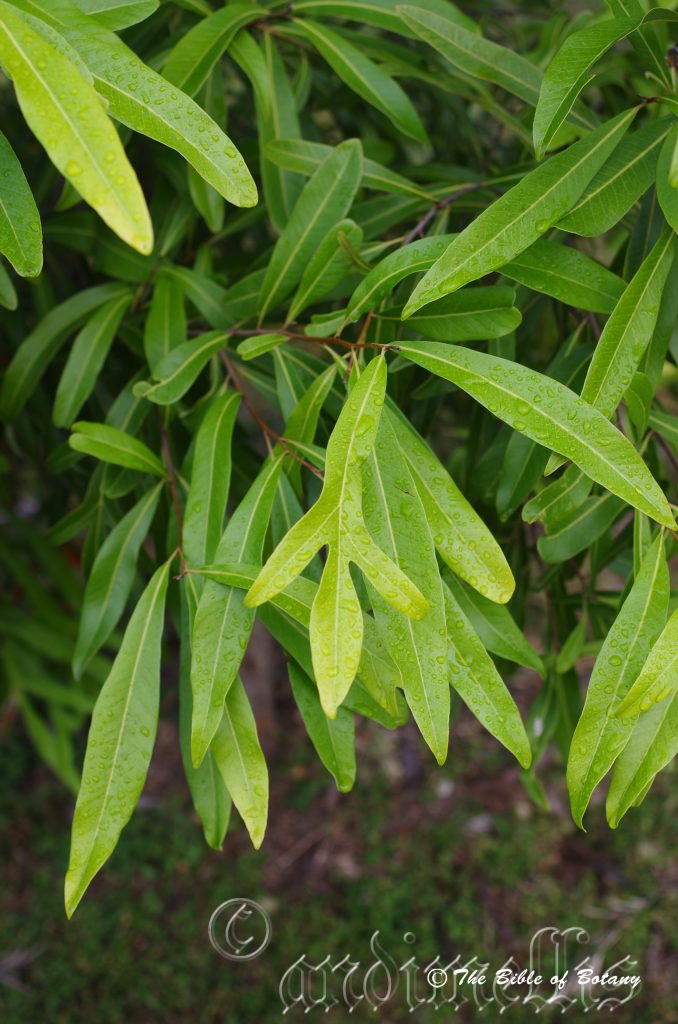
Kedron Brook Qld.
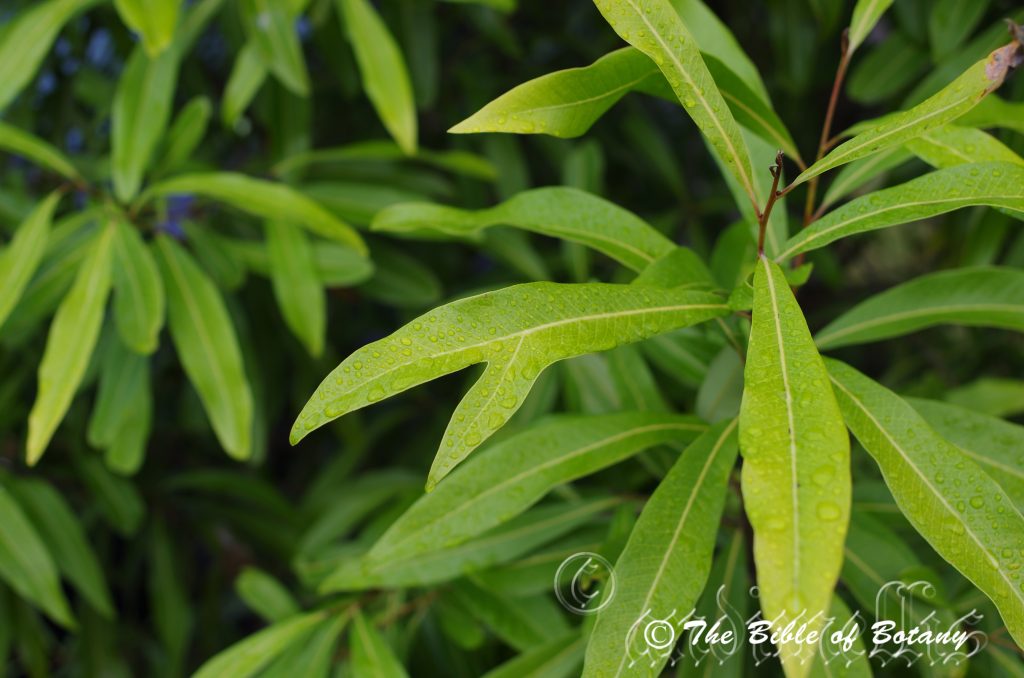
Kedron Brook Qld.

Hidden Valley Paluma Range Qld.

Hidden Valley Paluma Range Qld.
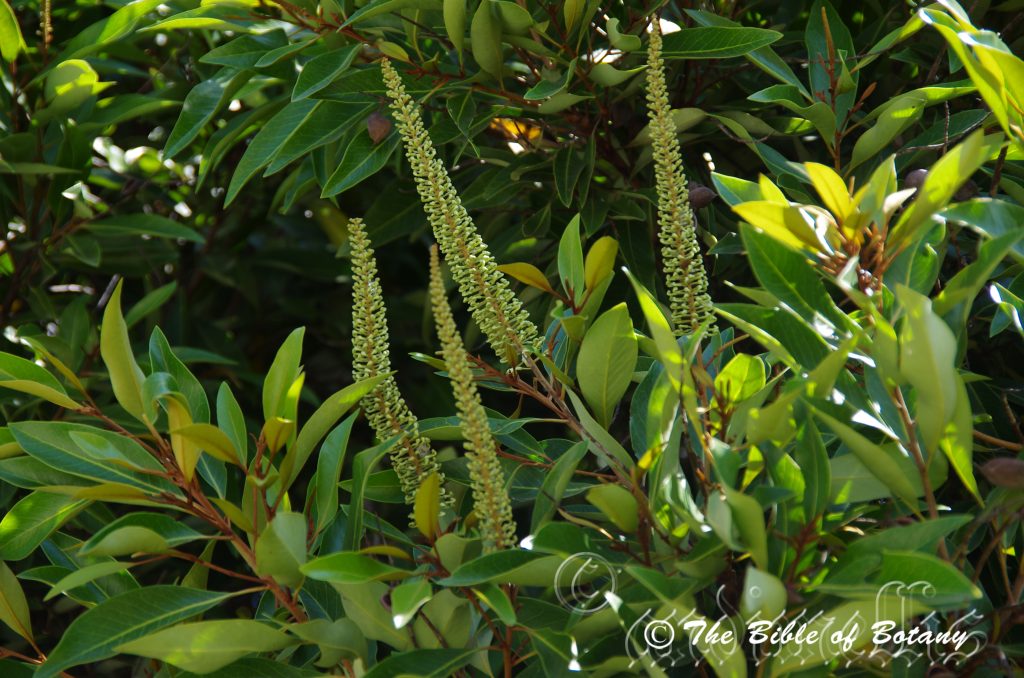
Norman Park Qld.
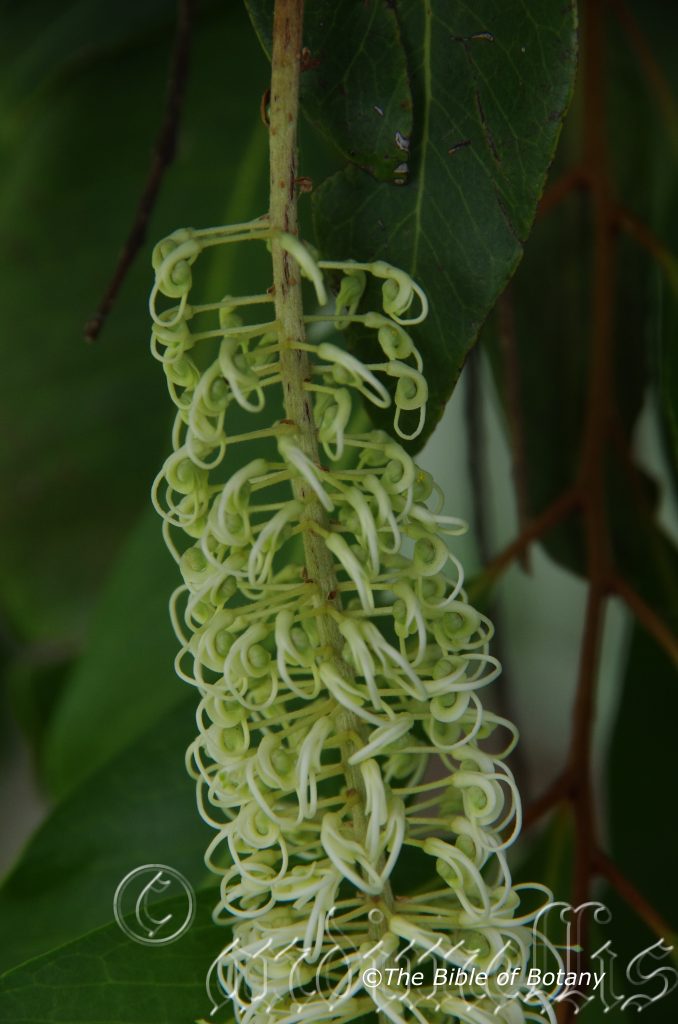
Grafton NSW

Grafton NSW

Grafton NSW
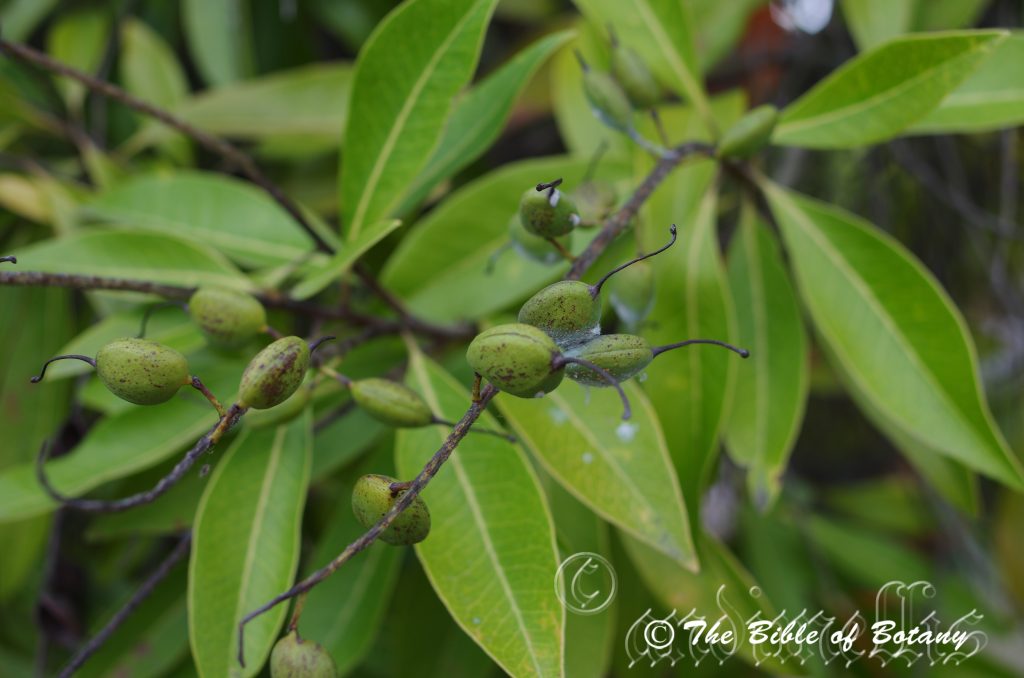
Wynnum Qld.
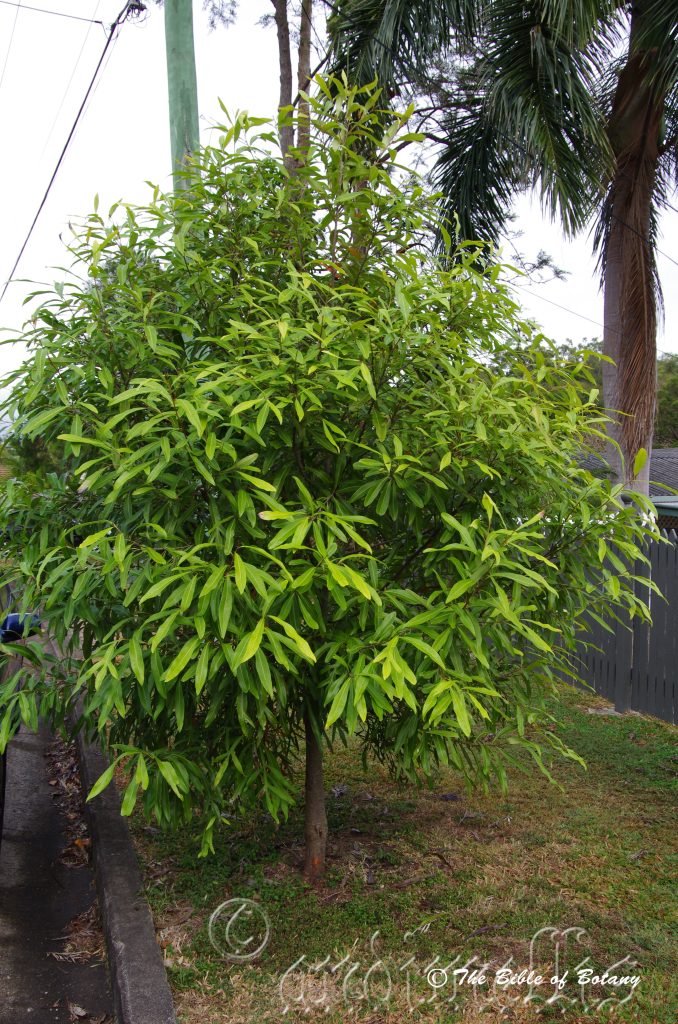
kedron Qld.

Norman park Qld.
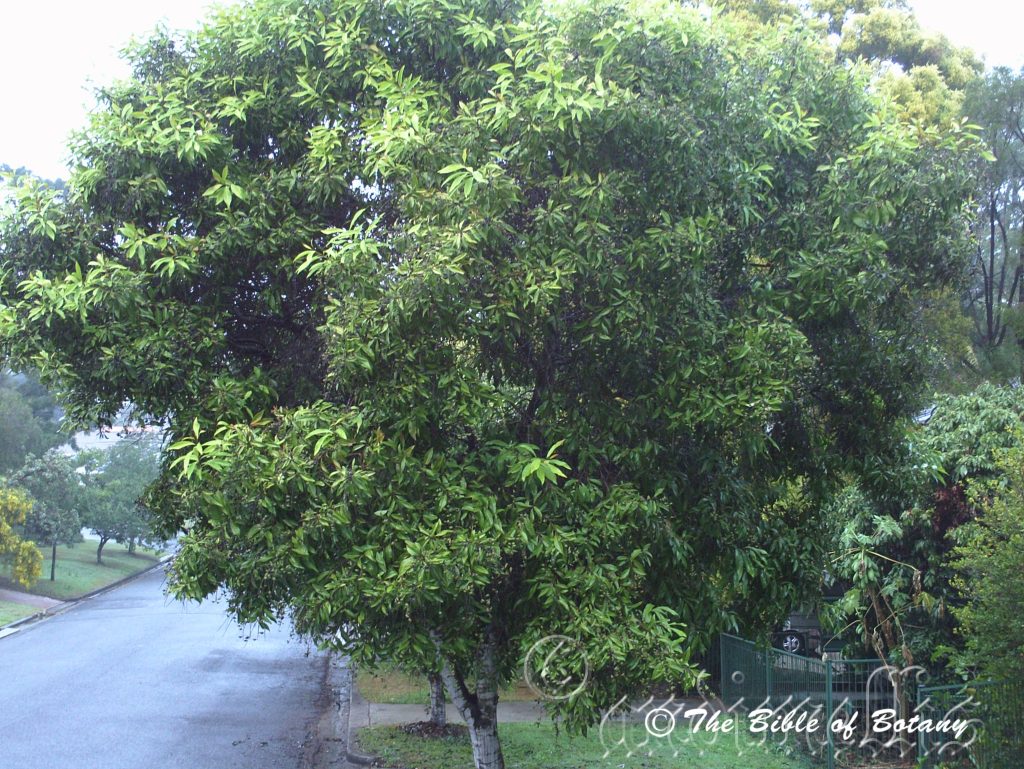
Norman Park Qld.

Grafton NSW
Buckinghamia celsissima
Classification:
Class: Eudicots
Order: Proteales
Family: Proteaceae
Subfamily:
Genus: Is named in honour of Richard Grenville; 1823-1889, who was the Duke of Buckingham.
Specie: From Celsum, which is Latin for high, lofty or tall and Issima which is Latin for the superlative or the most. It refers to plants, which have very high standards.
Sub specie:
Common Name: Ivory Curl.
Distribution:
Buckinghamia celsissima is found on the higher peaks from west Cooktown in the north to the Rollingstone National Park south west of Townsville. There is an outlying population west of Brisbane however these trees could prove to be escapees in due course once DNA samples are taken.
https://avh.ala.org.au/occurrences/search?taxa=Buckinghamia+celsissima#tab_mapView
Habitat Aspect Climate:
The trees prefer full sun to dappled shade though to full sun. It grows in well developed, cool, montane, tropical rainforest. The altitude ranges from 200 meters ASL to 1050 meters ASL.
The temperatures range from 4 degrees in July to 27 degrees in January.
The rainfall ranges from lows of 950mm to 3000mm average per annum.
Soil Requirements:
Buckinghamia celsissima prefer better quality red soils derived from black basalt. The soils pH ranges from 6pH to 7.It is not tolerant of water logged soils. Non saline soils to moderately saline soils are tolerated.
Height & Spread:
Wild Plants:25m to 30m by 10m to 15m
Characteristics:
Buckinghamia celsissima grows as a single trunked rainforest tree with silver bark streaked horizontally grey. The glabrous to slightly scabrous bark is covered in lichens and mosses in its natural habitat. Branches are deep grey almost black, glabrous and sparsely covered in mosses and lichens while the branchlets are rusty red to rusty brown, glabrous and semi glossy. The new growth and juvenile branchlets are pale grass-green to pale olive-green glossy and glabrous to covered in fine tan to rusty tan pulverulent hairs.
Leaves on mature trees are elliptical to lanceolate, glossy, and glabrous and measure 80mm to 160mm in length by 30mm to 70mm in width. The base is cuneate to slightly oblique and shortly attenuate while the apex is acute-obtuse to obtuse. The discolourous laminas are lime-green to pale olive-green on the upper laminas while the lower laminas are much paler. The leaf margins are entire and recurve upwards from the mid vein. The mid vein is prominent on the lower lamina and is distinctly visible on the upper lamina being yellow. Juvenile leaves are a pale glossy bronze in colour. The long trilobed juvenile leaves are glabrous leaves measure 160mm to 270mm in length by 36mm to 55mm in width.
The inflorescences of Buckinghamia celsissima are long dense terminal racemes. The racemes measure 120mm to 180mm in length by 35mm to 45mm in diameter. Individual tepals are fused at the base to form a perianth tube which measure 7mm to 10mm in length including the tepal lobes. The cream tepal lobes are revolute and measure 1.5mm to 2.5mm in length. The exserted, cream style measures 15mm to 20mm in length and is hooked at the apex. The rachises are densely covered in tan to rusty-tan pulverulent hairs while the pedicels are glabrous. The rachises measure 120mm to 180mm in length while the pedicels measure 3mm to 4mm in length. The flowers appear from December to January.
The fruit of Buckinghamia celsissima is a flattened follicle. The follicles measure 15mm to 30mm in length by 9mm to 18mm in width and contain 2 seeds in each follicle. The deep olive-green follicles dry to be deep grey almost black, glabrous and coriaceous to touch when ripe. The oval, black seeds are flat with a narrow wing completely surrounding the actual seed. They measure 9mm to 12mm in length by 6mm to 9mm in width. The follicles ripen in February to March.
Wildlife:
Buckinghamia celsissima is the host to numerous beetles, native flies, midget wasps, butterflies and native bees when in flower. Many honeyeaters are attracted to the flowers which will be strewn over the ground by the birds after feasting on the nectar. The insects also attract many small insect eating birds.
Cultivation:
It would make an excellent good fire retardant medium tree.
* Fire retardant plants act as radiant heat screens and absorb more heat from an approaching fire without burning.
* Fire retardant trees are able reduce wind speed near a house or out buildings.
* Fire retardant also trap embers and sparks carried by the wind.
* Fire retardant ground covers are able to catch burning embers without catching fire themselves, and also slow the travel of a fire through debris and litter on the ground.
Buckinghamia celsissima is a lovely small tree which grows much smaller in the open garden situation often reaching no more than 8 meters to 10 meters in height with a spread of 5 meters to 7 meters. It is a moderately fast grower in good conditions. Specimens I grew at Nana Glen attained a height of 15 meters in 10 years before filling out, after only growing 2 meters in the first 5 years, in a new rainforest section that we started. Frosts and cold weather restricted early growth but once the canopy and other surrounding trees changed the microclimate the trees grew very quickly. In our case the trees had very few flowers from 5 years of age, until they were 9 years old. From then it had magnificent displays on an annual basis. Trees can take mild frosts and temperatures down to minus 6 with only slight burning of the younger tips.
Flowering is erratic and can start as early as 4 years of age then in other individual plants may be as late as 8 or 9 years of age. TIt makes a good street tree and adapts well to public car parks. In Brisbane it has adapted to sandy soils, clays decomposed shale as well as alluvial flats. It looks at its best when the leaves extend to full size and good colour on better soils growing more rapidly and giving better flowering displays. It can be used close to foundations as the root system is non aggressive. When fertilizing use native or low phosphate fertilizers or severe yellowing and magnesium deficiencies will occur that can lead to death in severe cases.
This is a magnificent small tree for small to large gardens. It is good for starting small rainforest gardens but has a tendency to grow upright and very narrow in shady conditions. The trees are an excellent host for epiphytic orchids and ferns.
Buckinghamia celsissima is best used adjacent to small areas of bush close to paths or the house so their rich creamy flowers can be seen to advantage. Here it can be planted in small groups of 2 or 3 or as a standalone plant to create a rainforest in a few short years. If it is placed between other plants with smaller leaves and red flowers it will dominate at the center giving an expansive look to the edge even if it is not in flower because of the different foliage size and colours.
It can be regularly tip pruned if a smaller tree is required. It respond well to pruning recovering quickly and often increasing the number of flowers in the following season. Place it in the foreground with other large leaf ground covers and very small shrubs.
Ensure that the whole plant or at least most of it is on display from most sections of the garden as the flowers are a real bonus. This will entice visitors to wander deeper into the garden to seek out what is hidden behind.
Propagation:
Seeds: Buckinghamia celsissima seeds require no treatment before sowing. Seeds can be picked from the dried capsules in late spring to mid summer. Sow fresh seeds into a seed raising mix, cover with 5mm of the mix with 30mm perlite and gently water. Place the seed tray in light shade.
When the seedlings are 25mm to 50mm tall, prick them out and plant them into 50mm native tubes using a seed raising mix. Protect from frosts if in a frosty area.
Once the seedlings reach 150m to 200mm in height plant them out into their permanent position. Mass plantings can be achieved with spacing of 8 meters to 10 meters.
Fertilize using Seaweed, fish emulsion or organic chicken pellets soaked in water on an alternate basis. Fertilize every two months until the plants are planted out and established then annually in early September or March to maintain health, vitality and better flowering.
Further Comments from Readers:
“Hi reader, it seems you use The Bible of Botany a lot. That’s great as we have great pleasure in bringing it to you! It’s a little awkward for us to ask, but our first aim is to purchase land approximately 1,600 hectares to link several parcels of N.P. into one at The Pinnacles NSW Australia, but we need your help. We’re not salespeople. We’re amateur botanists who have dedicated over 30 years to saving the environment in a practical way. We depend on donations to reach our goal. If you donate just $5, the price of your coffee this Sunday, We can help to keep the planet alive in a real way and continue to bring you regular updates and features on Australian plants all in one Botanical Bible. Any support is greatly appreciated. Thank you.”
In the spirit of reconciliation we acknowledge the Bundjalung, Gumbaynggirr and Yaegl and all aboriginal nations throughout Australia and their connections to land, sea and community. We pay our respect to their Elders past, present and future for the pleasures we have gained.
Buckinghamia ferruginiflora
Classification:
Class: Eudicots
Order: Proteales
Family: Proteaceae
Subfamily:
Genus: Is named in honour of Richard Grenville; 1823-1889, who was the Duke of Buckingham.
Specie: From Ferrugineum, which is Latin for a rusty brown or reddish-brown colour and Fl?ris, which is Latin for a flower or Fl?s, which is the Roman goddess of spring and flowers. It refers to flowers, which produce flowers that are a rusty colour or where the flowers are densely covered in rusty red hairs and make the flowers appear to be rusty-red.
Sub specie:
Common Name: Rusty Ivory Curl or Spotted Oak.
Distribution:
Buckinghamia ferruginiflora has a restricted distribution betweenThe Blooomfield National Park and the Daintree River.
https://avh.ala.org.au/occurrences/search?taxa=Buckinghamia+ferruginiflora#tab_mapView
Habitat Aspect Climate:
The trees prefer full dappled shade though to full sun. It grows in well developed, lowland and upland rainforests rainforest. The altitude ranges from 5 meters ASL to 350 meters ASL.
The temperatures range from 4 degrees in July to 36 degrees in January.
The rainfall ranges from lows of 1500mm to 2100mm average per annum.
Soil Requirements:
Buckinghamia ferruginiflora prefer better quality red soils derived from black basalt. The soils pH ranges from 6pH to 7. It is not tolerant of water logged soils. Non saline soils to moderately saline soils are tolerated.
Height & Spread:
Wild Plants: 20m to 30m by 10m to 15m
Characteristics:
Buckinghamia ferruginiflora usually grows as a single trunked rainforest tree with brown bark intermitantly dotted with fine verticle lines. The somewhat glabrous to slightly scabrous bark is often covered in lichens and mosses in its natural habitat. The branchlets are grey-brown. The new growth is densely covered in caduceous, ferruginous hirsuit hairs.
Leaves on mature trees are elliptical to lanceolate, glossy, and glabrous and measure 90mm to 190mm in length by 20mm to 60mm in width. The base is narrow cuneate, while the apex is accuminate. The discolourous laminas are deep green and semi glossy on the upper lamina, while the lower laminas are much paler. The leaf margins are entire and are somewhat undulating. The mid vein is prominent on the lower lamina and is distinctly visible on the upper lamina being somewhat paler. Juvenile leaves are a glossy bronze in colour.
The inflorescences of Buckinghamia ferruginiflora are long dense terminal racemes. The racemes measure 80mm to 200mm in length by 35mm to 45mm in diameter. Individual tepals are fused at the base to form a perianth tube which measure 7mm to 10mm in length including the tepal lobes. The cream tepal lobes are revolute and densely covered in rusty ferruginous hirsuit hairs and measure 1.5mm to 2.5mm in length. The exserted, cream style measures 7mm to 9mm in length and is hooked at the apex. The rachises are densely covered in ferruginous hirsuit hairs. The rachises measure 120mm to 180mm in length while the pedicels measure 3mm to 4mm in length. The flowers appear from December to January.
The fruit of Buckinghamia ferruginiflora a flattened follicle. The follicles measure 20mm to 25mm in length by 9mm to 18mm in width and contain 2 flattened seeds in each follicle. The deep olive-green follicles are densely covered in ferruginous hirsuit hairs and dry to be deep grey almost black when ripe. The oval, seeds are flat with a narrow wing completely surrounding the actual seed. They measure 9mm to 12mm in length by 6mm to 9mm in width. The follicles ripen in February to March.
Wildlife:
Buckinghamia ferruginiflora is the host to numerous beetles, native flies, midget wasps, butterflies and native bees when in flower. Many honeyeaters are attracted to the flowers which will be strewn over the ground by the birds after feasting on the nectar. The insects also attract many small insect eating birds.
Cultivation:
It would make an excellent good fire retardant medium tree.
* Fire retardant plants act as radiant heat screens and absorb more heat from an approaching fire without burning.
* Fire retardant trees are able reduce wind speed near a house or out buildings.
* Fire retardant also trap embers and sparks carried by the wind.
* Fire retardant ground covers are able to catch burning embers without catching fire themselves, and also slow the travel of a fire through debris and litter on the ground.
Buckinghamia ferruginiflora is a beautiful medium size tree, which grows much smaller in the open garden situation where it will reach no more than 10 meters to 15 meters in height with a spread of 6 meters to 9 meters. It is a moderately fast grower in good conditions. It is unknown to what extent it can handle frosts and cold weather.
It looks its best with the leaves extending to full size and good colour on better soils growing more rapidly and giving better flowering displays. It can be used close to foundations as the root system is non aggressive. When fertilizing use native or low phosphate fertilizers or severe yellowing and magnesium deficiencies will occur that can lead to death in severe cases.
This is a magnificent medium tree for medium to large gardens. It is a good starter tree for a rainforest garden but has a tendency to grow upright and very narrow in shady conditions. The trees are an excellent host for epiphytic orchids and ferns.
Buckinghamia ferruginiflora is best used adjacent to small areas of bush close to paths or the house so their rich creamy flowers can be seen to advantage. Here it can be planted in small groups of 2 or 3 or as a standalone plant to create a rainforest in a few short years. If it is placed between other plants with large leaves and red flowers it will dominate at the center giving an expansive look to the edge even if it is not in flower because of the different foliage colours.
Planted back from a bend with smaller shrubs in the foreground will become a very strong focal point when in flower and gain a lot of attention whether you are coming or going because of the fresh clean look of the foliage even in the driest of times. Plants with good contrasting foliage would be Melaleuca pearsonii or Melaleuca comboynensis but trim the later so that it forms a more prostrate growth habit.
It can be regularly tip pruned if a smaller tree is required. I would expect it to respond well to pruning recovering quickly and often increasing the number of flowers in the following season as is the case in r Buckinghamia celsissima. Place it in the background with other large leaf ground covers and smaller shrubs if an open garden plan is required.
Ensure that the whole plant or at least most of it is on display from most sections of the garden as the flowers are a real bonus. This will entice visitors to wander deeper into the garden to seek out what is hidden around the bend or below it.
Propagation:
Seeds: Buckinghamia ferruginiflora seeds require no treatment before sowing. Seeds can be picked from the dried capsules in late spring to mid summer. Sow fresh seeds into a seed raising mix, cover with 5mm of the mix with 30mm perlite and gently water. Place the seed tray in light shade.
When the seedlings are 25mm to 50mm tall, prick them out and plant them into 50mm native tubes using a seed raising mix. Protect from frosts if in a frosty area.
Once the seedlings reach 150m to 200mm in height plant them out into their permanent position. Mass plantings can be achieved with spacing of 8 meters to 10 meters.
Fertilize using Seaweed, fish emulsion or organic chicken pellets soaked in water on an alternate basis. Fertilize every two months until the plants are planted out and established then annually in early September or March to maintain health, vitality and better flowering.
Further Comments from Readers:
“Hi reader, it seems you use The Bible of Botany a lot. That’s great as we have great pleasure in bringing it to you! It’s a little awkward for us to ask, but our first aim is to purchase land approximately 1,600 hectares to link several parcels of N.P. into one at The Pinnacles NSW Australia, but we need your help. We’re not salespeople. We’re amateur botanists who have dedicated over 30 years to saving the environment in a practical way. We depend on donations to reach our goal. If you donate just $5, the price of your coffee this Sunday, We can help to keep the planet alive in a real way and continue to bring you regular updates and features on Australian plants all in one Botanical Bible. Any support is greatly appreciated. Thank you.”
In the spirit of reconciliation we acknowledge the Bundjalung, Gumbaynggirr and Yaegl and all aboriginal nations throughout Australia and their connections to land, sea and community. We pay our respect to their Elders past, present and future for the pleasures we have gained.
Buchnera gracilis
Classification:
Unranked: Equisetopsida
Sub Class: Magnolidae
Order: Lamiales
Family: Orobanachaceae
Genus: Is probably named in honour of Eduard Buchner; 1860–1917, who was a German chemist and zymologist (A person who studies the fermentation of liquors). He was awarded the 1907 Nobel Prize in Chemistry for his work on fermentation.
Specie: From Gracilis, which is Latin for slender and graceful. It refers to leaves and culms, which are gracefully slender.
Sub specie:
Common Name: Blue Trumpet.
Distribution:
Buchnera gracilis grows north of a line from the Kimberly Coast along the top end then from near Camooweal in far north-west Queensland. In the east it is found from Cape York Peninsula, south to the Macleay River in central coastal New South Wales, mainly on and east of the Great Dividing Range to the coast.
https://avh.ala.org.au/occurrences/search?taxa=Buchnera+gracilis#tab_mapView
Habitat Aspect Climate:
Buchnera gracilis prefer full sunlight to partial shade. It grows in moist schlerophyll forest heaths, moist woodland heaths and coastal heaths. The altitude ranges from 5 meters ASL to 800 meters ASL.
The temperatures range from minus 3 degrees in July to 40 degrees in January.
The rainfall ranges from lows of 500mm to 1600mm average per annum.
Soil Requirements:
Buchnera gracilis prefers peaty sands to light fatty sandy clays. The soils are derived from decomposed sandstone and accumulated sands. The soils pH ranges from 5pH to 7pH. It does not tolerate of water logged soils though high water tables are often associated with this plant. Non saline soils to slightly saline soils are tolerated.
Height & Spread: 0.2m to 0.6m by 0.1m to 0.3m
Characteristics:
Buchnera gracilis grows as a small herb usually with a few stems. The lower stems are sparsely to moderately covered in white retrorse non glandular hairs.
The opposite leaves of Buchnera gracilis are simple, narrow oblong to narrow oblanceolate or rarely ovate and measure 3mm to 30mm in length by 3mm to 5mm in width on the lower leaves while the upper leaves measure 2mm to 60mm in length by 2mm to 30mm in width. The petiole measures 1mm to 3mm in length. The leaf bases are attenuate while the apexes are obtuse. The concolourous laminas are mid blue-green and glabrous to sparsely to moderately covered in white retrorse non glandular hairs on the margins. The laminas recurve upwards from the mid vein to the margins. The margins are entire. The mid vein is prominent on the lower laminas and is visible from the upper laminas. The petioles are sparsely covered in white retrorse hirsute hairs and measure 1mm to 3mm in length.
The inflorescences of Buchnera gracilis are sparse to dense, slender spikes born from the terminals and measure 60mm to 150mm in length. The green linear bracteoles measure 4mm to 6mm in length. The mid blue-green sepals are glabrous except for the margins which are sparsely to moderately covered in white retrorse non glandular hairs and measure 5mm to 7mm in length. The lilac to pale purple or pink corolla tube is glabrous externally while the lobes are moderately covered in white retrorse non glandular hairs internally. The corolla tube measures 6mm to 8mm in length while the lobes measure 4mm to 8mm in length. The 5 lobes divaricate obtuse. The flowers appear in February, June and October.
The fruits of Buchnera gracilis are oblong-ovoidal capsules. The capsules measure 4.5mm to 6mm in length by 3.5mm to 5mm in diameter. The mid green capsules turn deep brown when they are ripe.
Wildlife:
Buchnera gracilis’s wildlife is unknown to the author.
Cultivation:
Buchnera gracilis is a beautiful unusual herb that is worthwhile protecting if seen in the garden. It is best to ensure a layer of leaf litter is maintained throughout the year to 50mm. Lightly moisten the mulch with a mixture of fertilizer using Seaweed, fish emulsion or organic chicken pellets soaked in water on an alternate basis. Fertilize and mulch annually in early September or March to maintain health, vitality and better flowering.
Propagation:
Seeds: Propagation methods are unknown and maybe very difficult without the correct host.
Further Comments from Readers:
“Hi reader, it seems you use The Bible of Botany a lot. That’s great as we have great pleasure in bringing it to you! It’s a little awkward for us to ask, but our first aim is to purchase land approximately 1,600 hectares to link several parcels of N.P. into one at The Pinnacles NSW Australia, but we need your help. We’re not salespeople. We’re amateur botanists who have dedicated over 30 years to saving the environment in a practical way. We depend on donations to reach our goal. If you donate just $5, the price of your coffee this Sunday, We can help to keep the planet alive in a real way and continue to bring you regular updates and features on Australian plants all in one Botanical Bible. Any support is greatly appreciated. Thank you.”
In the spirit of reconciliation we acknowledge the Bundjalung, Gumbaynggirr and Yaegl and all aboriginal nations throughout Australia and their connections to land, sea and community. We pay our respect to their Elders past, present and future for the pleasures we have gained.
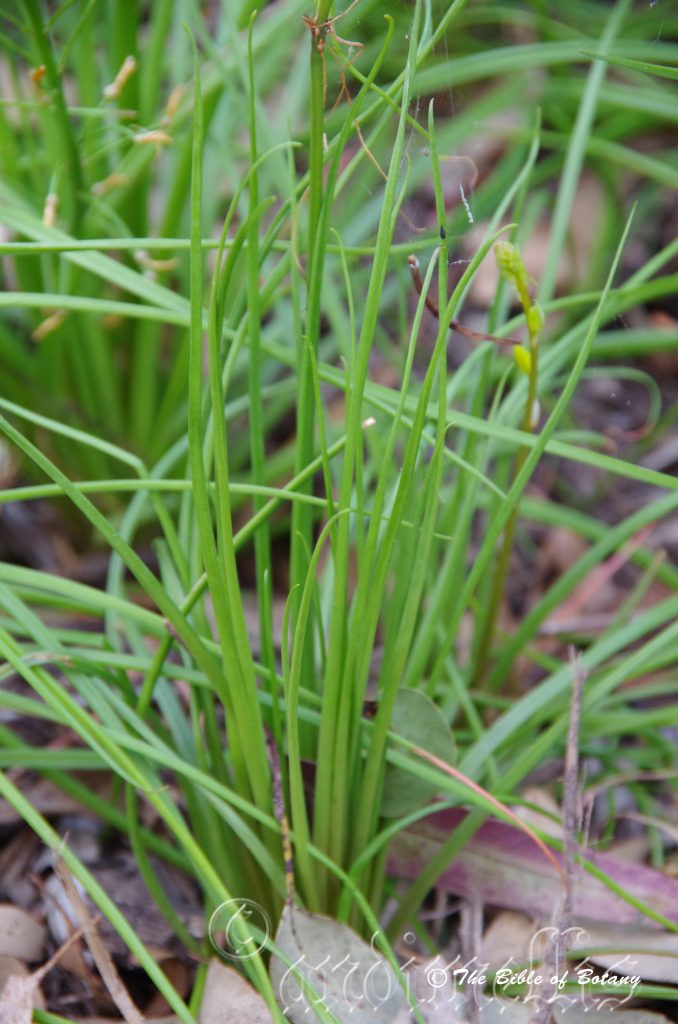
Mount Cootha Botanical Gardens Qld.

Mount Cootha Botanical Gardens Qld.
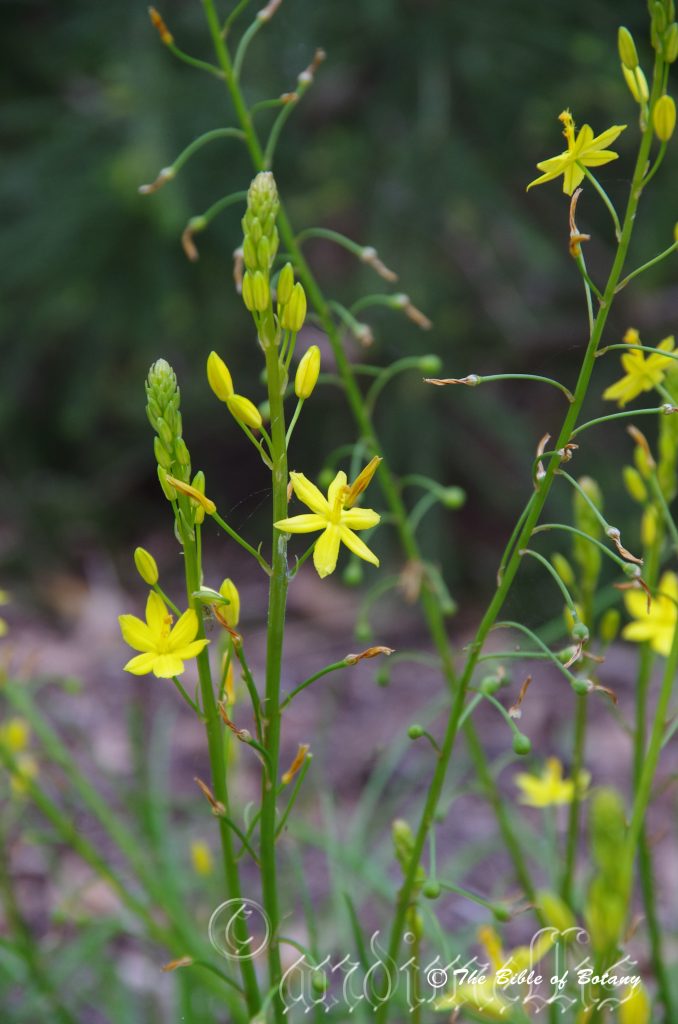
Mount Cootha Botanical Gardens Qld.
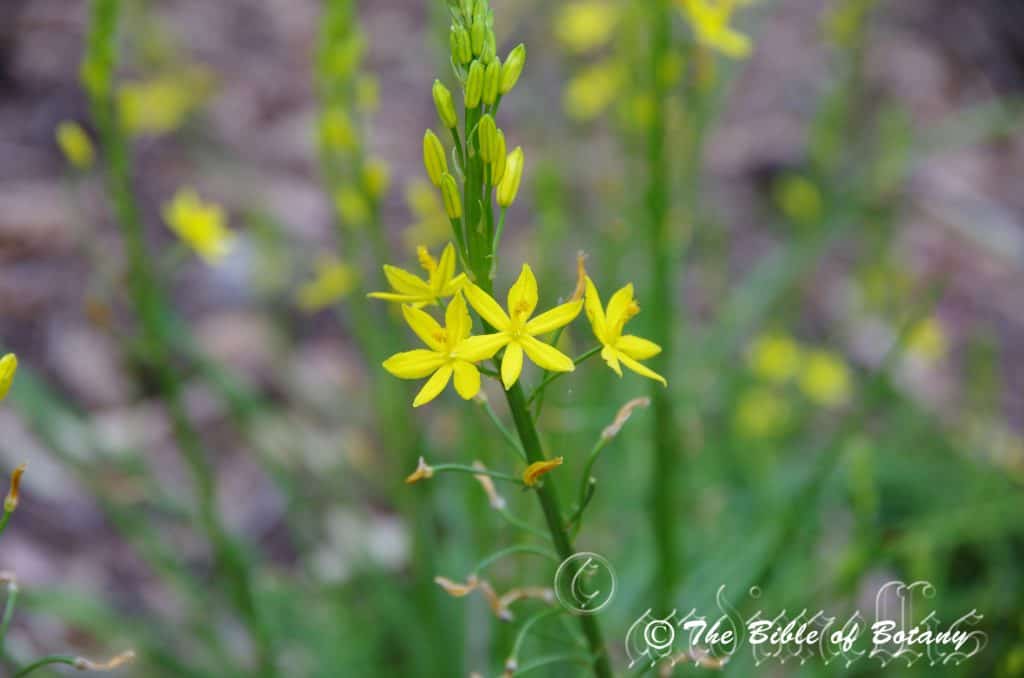
Mount Cootha Botanical Gardens Qld.

Mount Cootha Botanical Gardens Qld.
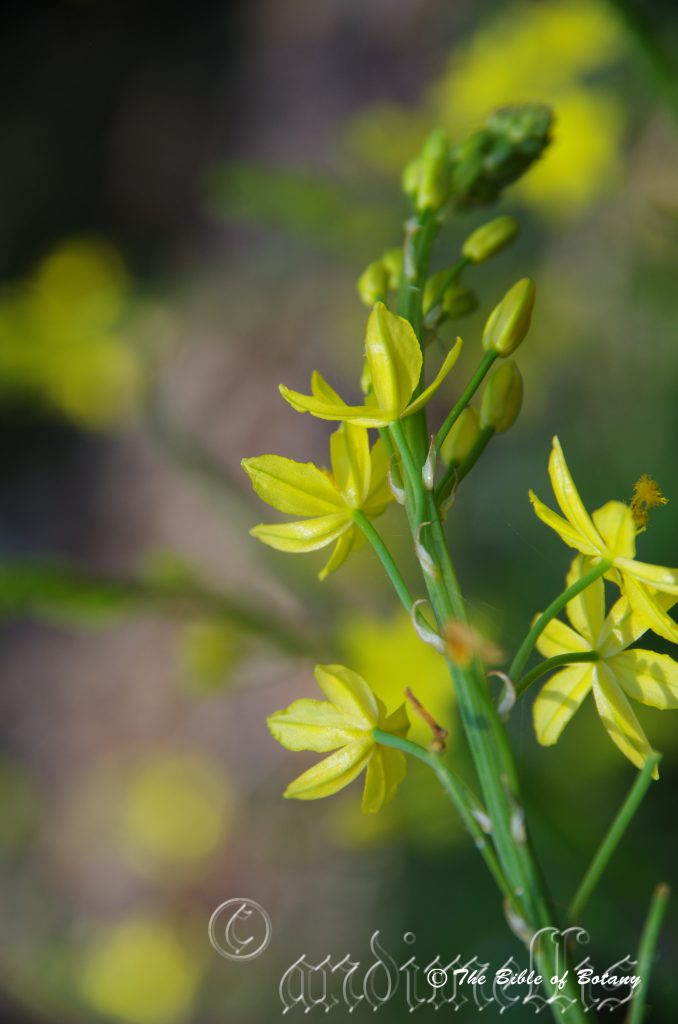
Mount Cootha Botanical Gardens Qld.
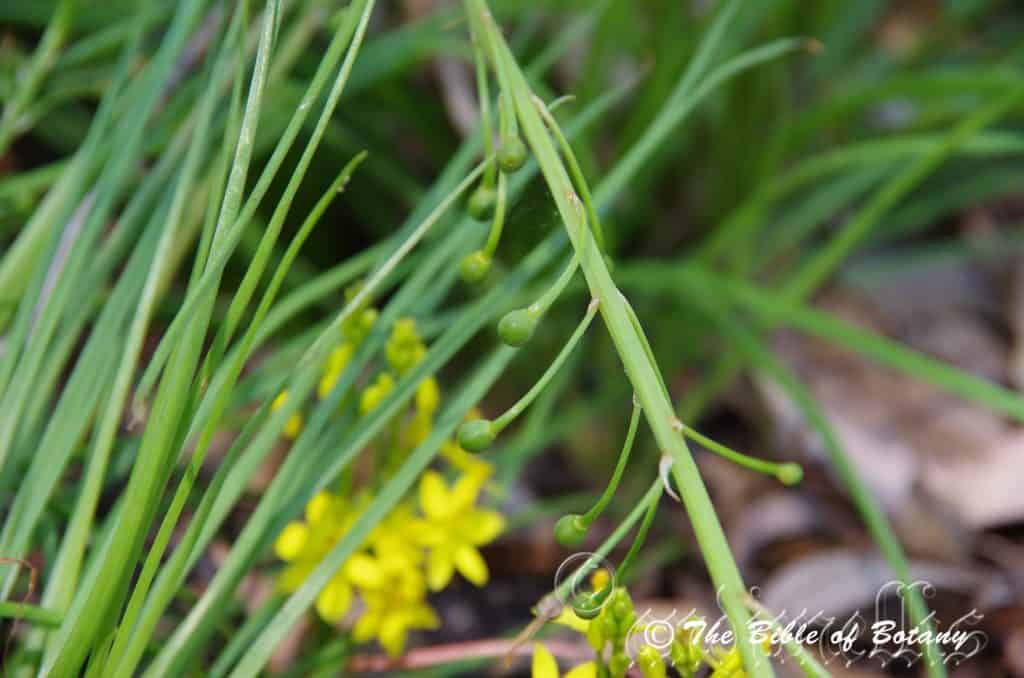
Mount Cootha Botanical Gardens Qld.
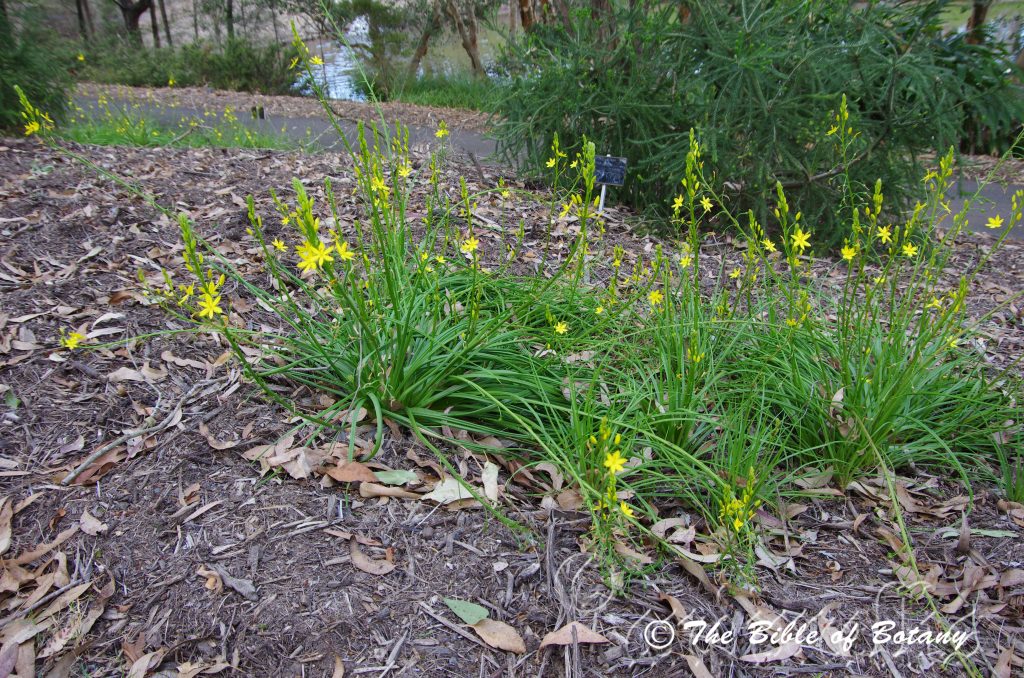
Mount Cootha Botanical Gardens Qld.
Bulbine bulbosa
Classification:
Unranked: Monocots
Order: Asparagales
Family: Xanthorrhoeaceae
Subfamily: Asphodeloideae
Genus: From Bulbos, which is Ancient Greek or Bulbus, which is Latin for a bulb. It refers to plants, which produce many bulbils or bulbs.
Specie: From Bulbos, which is Ancient Greek or Bulbus, which is Latin for a bulb. It refers to plants, which have fleshy leaves at the base similar to a bulb.
Sub specie:
Common Name: Native Leek or Bulbine Lily or Native lily or Onion Lily or Parm and Puewan.
Distribution:
Bulbine bulbosa is found south and east of a line from Watton in far central north Queensland to Port Lincoln in souther South Australia.
https://avh.ala.org.au/occurrences/search?taxa=Bulbine+bulbosa#tab_mapView
Habitat Aspect Climate:
Bulbine bulbosa prefer full sun to light shade. It grows in moist areas in dry schlerophyll forests, open woodlands and heathlands. The altitude ranges from 10 meters ASL to 900 meters ASL.
The temperatures range from minus 4 degrees in July to 40 degrees in January.
The rainfall ranges from lows of 200mm to 2000mm average per annum.
Soil Requirements:
Bulbine bulbosa prefers better quality sandy loams to light sandy clays. The soils are usually derived from decomposed sandstones granites, brown basalts, black basalts, shales, metamorphic rocks, alluvial deposits or accumulated peaty beach sands. The soil’s pH ranges from 5pH to 7.5pH. It does not tolerate water logged soils however the soils are always moisture retentive particularly in the western and central areas where it grows. None saline soils to the upper end of moderately saline soils are tolerated.
Height & Spread:
Wild Plants: 0.3m to 0.75m to 0.2m x 0.3m
Characteristics:
Bulbine bulbosa grows on a pseudo stem with thick roots. The pseudo bulbs measure 7mm to 25mm in length by 12mm to 23mm diameter.
The 3 to 7 thick, fleshy leaves of Bulbine bulbosa are linear. The leaves measure 450mm to 480mm in length by 3mm to 8mm in width. The base forms a sheath around the pseudobulbs while the apex tapers to a point. The concolourous laminas are grass-green to deep grass-green. The upper laminas are strongly channelled. The leaf margins are entire.
The inflorescence of Bulbine bulbosa is born on a long deep grass-green scape. The scapes measure 190mm to 500mm in length by 1mm to 5mm in diameter. The raceme has 20 to 50 bright yellow flowers and measures 45mm to 260mm in length. The grass-green linear bracts have a transparent clasping wing near the base and measure 4mm to 15mm in length by 1.5mm to 4.5mm in width near the base including the wing. The grass-green pedicels are glabrous and measure 5mm to 30mm in length. The 3 bright yellow sepals are acute to acute-obtuse and measure 9mm to 22mm in length by 5mm to 8mm in width. The 3 bright yellow petals apexes are acute-obtuse to obtuse and measure 10mm to 23mm in length by 6 to 10mm in width.
The 6 bright yellow filiform filaments are covered in golden honey-brown to golden–orange clavate hairs at the apex just below the anthers. The filaments measure 7mm to 10mm in length while clavate hairs measure 1.5 to 4mm in length. The yellow to yellow-green ovate anthers measure 2mm to 4mm in length.
The bright yellow to yellow-green style measures 3mm to 4.5mm in length with a blunt tip. There are 3 to 8 ovules on each locule. The non-fragrant or fragrant flowers appear from September to March.
Wildlife:
Bulbine bulbosa’s flowers attract many native honey bees like Tetragonula carbonaria.
Cultivation:
It would make an excellent good fire retardant lily if mass planted in moist situations.
* Fire retardant plants act as radiant heat screens and absorb more heat from an approaching fire without burning.
* Fire retardant trees are able reduce wind speed near a house or out buildings.
* Fire retardant also trap embers and sparks carried by the wind.
* Fire retardant ground covers are able to catch burning embers without catching fire themselves, and also slow the travel of a fire through debris and litter on the ground.
Bulbine bulbosa is a magnificent small yellow flowering lily that should be more widely grown in cultivation. It is ideal in almost every setting near large ponds, at the edge of a rainforest in courtyards, around swimming pools or small to large moist rockeries. It mixes well with low growing fine leaf ground covers to give height and contrast in foliage. Mass plantings will fill the air with a light sweet perfume when in flower. Small numbers planted in sunny courtyards and around pools will achieve the same affect. The bold vertical strap leaves helps to break up plain walls and can give great architectural effects in small areas. Try planting it at different spacing and at different depths within the garden bed. Even when planted around pools or confined areas plant some to the front and others towards the rear. This gives depth and a more flowing line of interest rather than the straight line that has become so mundane and popular. Straight lines are not natural in nature or to the eyes movement.
It often reaches its full potential in just 2 years and flower from the first year. Individual cultivated plants will grow 0.3 meter to 0.5 meters in height by 0.2 meter to 0.3 meters in diameter but look better when planted in mass. Placing closer to walls will limit their growth in diameter but it will have a tendency to lean forward. It is suitable for light sandy soils right through to heavy clays in cool temperate to subtropical gardens. I would be tempted to try them in semi-arid areas where a little shade can be supplied and water is not a problem. It will survive on high calcium and high iron bore water provided it is not salty.
It is surprisingly versatile and can be planted amongst small moist to wet shrub gardens to contrast foliage. Here its strap like leaves and the flower scape can really take on a really strong dimension. Surrounded by shrubs with red or pink flowers that grow no more than a meter in height to allow it to dominate the scene. If Kunzea opposita, Crowea exalata or Rhodanthe manglesii are kept trimmed they will be a small bushy shrubs or Scaevola albida pink flowering form, all of which will contrast beautifully in foliage colour and shape.
It is best suited to areas that have ephemeral soakings but well drained or have poor drainage like in small depressions and at the bottom of sullage trenches. Place them at the bottom of slopes or retaining walls where moisture lies or seeps out.
Propagation:
Seeds: Bulbine bulbosa seeds do not require treatment before sowing. Sow fresh seeds directly into a seed raising mix and cover with 5mm of the mix. When the seedlings are 25mm to 50mm in height, prick them out and plant them into 50mm native tubes using a seed raising mix.
Fertilize using Seaweed, fish emulsion or organic chicken pellets soaked in water on an alternate basis. Fertilize every two months until the plants are established then annually in early September or March to maintain health, vitality and better flowering.
Once the seedlings reach 20mm to 50mm in height plant them out into their permanent position. Mass plantings can be achieved by planting them at 0.2 meters to 0.3 meter centers.
Division
Clumps can also be divided regularly to increase the numbers in the garden. The good news is that Bulbine bulbosa can be divided at any time during the year in frost free areas.
Most bulb flowers undergo a process called naturalization over time. Naturalization is when the plant produces more bulbs which grow and mature under the soil and the original bulbs start to decay. This a good time to divide the plants to maintain good vigour.
1. Do not water before you start.
2. Cut back foliage to around 70mm to 100mm in length,
3. Use a garden fork or shovel to dig around the clump you want to divide (about 100mm to 150mm greater circumference than the bulbs),
4. Lift the whole of the root ball out of the ground,
5. Remove the soil by shaking. If the soil is hard allow to sit in a container of water for 15 minutes to half an hour. repeat the shaking in the water and hose off excess soil,
6. Once the bulbs can be seen clearly it is easier to pry and split the clump apart.
7. Leave a small number of bulbs in each new clump,
8. Replant in the prepared bed using half a hand full of blood and bone in the hole and mix,
9. Level off at the same level the bulbs were at the start.
10. Water regularly and feed fortnightly until the plants have re-established themselves.
Further Comments from Readers:
“Hi reader, it seems you use The Bible of Botany a lot. That’s great as we have great pleasure in bringing it to you! It’s a little awkward for us to ask, but our first aim is to purchase land approximately 1,600 hectares to link several parcels of N.P. into one at The Pinnacles NSW Australia, but we need your help. We’re not salespeople. We’re amateur botanists who have dedicated over 30 years to saving the environment in a practical way. We depend on donations to reach our goal. If you donate just $5, the price of your coffee this Sunday, We can help to keep the planet alive in a real way and continue to bring you regular updates and features on Australian plants all in one Botanical Bible. Any support is greatly appreciated. Thank you.”
In the spirit of reconciliation we acknowledge the Bundjalung, Gumbaynggirr and Yaegl and all aboriginal nations throughout Australia and their connections to land, sea and community. We pay our respect to their Elders past, present and future for the pleasures we have gained.

National Botanic Gardens Canberra ACT

National Botanic Gardens Canberra ACT

National Botanic Gardens Canberra ACT
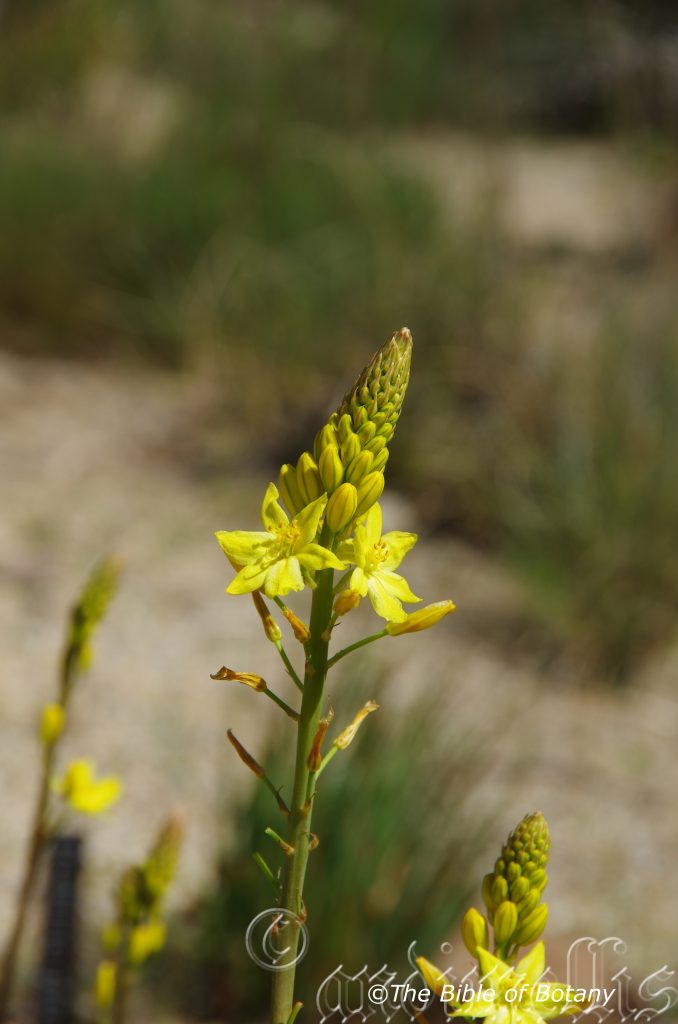
National Botanic Gardens Canberra ACT
Bulbine glauca
Classification:
Unranked: Monocots
Order: Asparagales
Family: Xanthorrhoeaceae
Subfamily: Asphodeloideae
Genus: From Bulbos, which is Ancient Greek or Bulbus, which is Latin for a bulb. It refers to plants, which produce many bulbils or bulbs.
Specie: From Glaucous which is Latin for a filmy blueish or greyish white powdery covering. It refers to the stems leaves or fruits, which have a blueish to greyish powdered layer over the surface.
Sub specie:
Common Name: Native Leek or Bulbine Lily or Native lily or Onion Lily.
In the Aboriginal language it is known as Pike, Parm and Puewan.
Distribution:
Bulbine glauca is found along the Great Dividing Range from the Yass River in south eastern New South Wales in a direct line to Melbourne in Victoria. There are two isolated populations further north in the Blue Mountains and the other between Guyra and Ebor in north eastern New South Wales.
https://avh.ala.org.au/occurrences/search?taxa=Bulbine+glauca#tab_mapView
Habitat Aspect Climate:
Bulbine glauca prefer full sun to light shade. It grows in moist areas in moist schlerophyll forests, open woodlands in crevices on cliffs and summits at higher altitudes. The altitude ranges from 500 meters ASL to 1400 meters ASL.
The temperatures range from minus 6 degrees in July to 32 degrees in January.
The rainfall ranges from lows of 800mm to 1700mm average per annum.
Soil Requirements:
Bulbine glauca prefers better quality sandy loams to light sandy clays. The soils are usually derived from decomposed sandstones, granites, brown basalts, black basalts, shales or metamorphic rocks. The soil’s pH ranges from 5pH to 7.5pH. It does not tolerate water logged soils however the soils are always moisture retentive. None saline soils to moderately saline soils are tolerated.
Height & Spread:
Wild Plants: 0.3m to 0.75m to 0.2m x 0.3m
Characteristics:
Bulbine glauca grows as a large tufted perennial lily with thick fleshy roots.
The 5 to 24 densely, compact fleshy leaves of Bulbine glauca are linear and measure 120mm to 460mm in length by 2mm to 12mm in diameter. The basal leaves measure 110mm to 45mm by 5mm to 20mm in width. The base forms a sheath around the pseudobulbs while the apex tapers to an acute point. The discolourous laminas are grass-green with a distinct whitish to blueish white bloom. The basal leaf margins are entire.
The inflorescence of Bulbine glauca is born on a long deep grass-green scape. The scapes measure 120mm to 800mm in length by 1mm to 6mm in diameter. The racemes have 30 to 75 bright yellow flowers. The pedicels measure 5mm to 26mm in length. The grass-green linear bracts have a transparent clasping wing near the base and measure 4mm to 9mm in length by 1.5mm to 4mm in width near the base including the wing. The 6 bright yellow elliptical tepals are acute to acute-obtuse and measure 9mm to 17mm in length by 2mm to 5mm in width.
The 6 bright yellow filiform filaments are covered in white clavate hairs with red to golden–orange or golden heads on the apical half to just below the anthers. The filaments measure 7mm to 10mm in length while clavate hairs measure 1.5 to 4mm in length. The golden anthers measure 2mm to 4mm in length.
The bright yellow style has a shortly trilobed stigma. There are 2 to 4 ovules in each locule. The non-fragrant or fragrant flowers appear from October to December.
Wildlife:
Bulbine glauca’s wild life is unknown to the author.
Cultivation:
Bulbine glauca is magnificent medium lily that should be more widely grown in cultivation. It is ideal in almost every setting near large ponds, at the edge of a rain forest in court yards, around swimming pools or large moist rockeries provided there is plenty of sunlight. It mixes well with low growing fine leaf ground covers to give height and contrast in foliage. Mass plantings will fill the air with a light sweet perfume when in flower. Small numbers planted in sunny courtyards and around pools will achieve the same affect especially if it is planted between large rocks. The bold foliage helps to break up plain walls and can give great architectural effects in small areas. Try planting it at different spacing and at different depths within the garden bed. Even when planted around pools or confined areas plant some to the front and others towards the rear. This gives depth and a more flowing line of interest rather than the straight line that has become so mundane and popular. This depth can be accentuated more if Bulbine bulbosa is used in the foreground. Straight lines are not natural in nature or to the eyes movement, so do not use straight lines with it unless a very formal look is required.
It often reaches its full potential in just 2 years and flower from the first year. Cultivated plants will grow 0.7 meters to 1 meter in height by 0.2 meter to 0.5 meters in diameter but look better when a number of plants are planted in a given area. Placed closer to walls will limit their growth in diameter but it will have a tendency to lean forward. It is suitable for light sandy soils right through to heavy clays in cool temperate to sub-tropical gardens. I would be tempted to try them in semi-arid areas where a little shade can be supplied and water is not a problem. It will survive on high calcium and high iron bore water provided it is not saline.
It is surprisingly versatile and can be planted amongst small moist to wet shrub gardens to contrast foliage. Here its strap like leaves and the flower scape can really take on a really strong dimension. Surrounded by small shrubs with red or pink flowers that grow no more than a meter in height will help it dominate the scene. If Kunzea opposita, Crowea exalata or Rhodanthe manglesii are kept trimmed they will be a small bushy shrubs or Scaevola albida pink flowering form, all of which will contrast beautifully in foliage colour and shape.
It is best suited to areas that are water retentive but well drained or have poor drainage like in small depressions and at the bottom of sullage trenches. Place them at the bottom of slopes or retaining walls where moisture lies or seeps out.
Propagation:
It would make an excellent good fire retardant lily if mass planted in moist situations.
* Fire retardant plants act as radiant heat screens and absorb more heat from an approaching fire without burning.
* Fire retardant trees are able reduce wind speed near a house or out buildings.
* Fire retardant also trap embers and sparks carried by the wind.
* Fire retardant ground covers are able to catch burning embers without catching fire themselves, and also slow the travel of a fire through debris and litter on the ground.
Seeds: Bulbine glauca seeds do not require treatment before sowing. Sow fresh seeds directly into a seed raising mix and cover with 5mm of the mix. When the seedlings are 25mm to 50mm in height, prick them out and plant them into 50mm native tubes using a seed raising mix.
Fertilize using Seaweed, fish emulsion or organic chicken pellets soaked in water on an alternate basis. Fertilize every two months until the plants are established then annually in early September or March to maintain health, vitality and better flowering.
Once the seedlings reach 20mm to 50mm in height plant them out into their permanent position. Mass plantings can be achieved by planting them at 0.2 meters to 0.3 meter centers.
Division:
Clumps can also be divided regularly to increase the numbers in the garden. The good news is that Bulbine glauca can be divided at any time during the year in frost free areas.
Most bulb flowers undergo a process called naturalization over time. Naturalization is when the plant produces more bulbs which grow and mature under the soil and the original bulbs start to decay. This a good time to divide the plants to maintain good vigour.
1. Do not water before you start.
2. Cut back foliage to around 70mm to 100mm in length,
3. Use a garden fork or shovel to dig around the clump you want to divide (about 100mm to 150mm greater circumference than the bulbs),
4. Lift the whole of the root ball out of the ground,
5. Remove the soil by shaking. If the soil is hard allow to sit in a container of water for 15 minutes to half an hour. repeat the shaking in the water and hose off excess soil,
6. Once the bulbs can be seen clearly it is easier to pry and split the clump apart.
7. Leave a small number of bulbs in each new clump,
8. Replant in the prepared bed using half a hand full of blood and bone in the hole and mix,
9. Level off at the same level the bulbs were at the start.
10. Water regularly and feed fortnightly until the plants have re-established themselves.
Further Comments from Readers:
“Hi reader, it seems you use The Bible of Botany a lot. That’s great as we have great pleasure in bringing it to you! It’s a little awkward for us to ask, but our first aim is to purchase land approximately 1,600 hectares to link several parcels of N.P. into one at The Pinnacles NSW Australia, but we need your help. We’re not salespeople. We’re amateur botanists who have dedicated over 30 years to saving the environment in a practical way. We depend on donations to reach our goal. If you donate just $5, the price of your coffee this Sunday, We can help to keep the planet alive in a real way and continue to bring you regular updates and features on Australian plants all in one Botanical Bible. Any support is greatly appreciated. Thank you.”
In the spirit of reconciliation we acknowledge the Bundjalung, Gumbaynggirr and Yaegl and all aboriginal nations throughout Australia and their connections to land, sea and community. We pay our respect to their Elders past, present and future for the pleasures we have gained.
Bulbophyllum argyropus
Classification:
Class: Monocots
Order: Asparagales
Family: Orcidaceae
Subfamily: Epidendroideae
Tribe: Podochilaeae
Sub Tribe: Bulbophyllinae
Genus: From Bulbos, which is Ancient Greek or Bulbus, which is Latin for a bulb and Phullon/Phýllon, which is Ancient Greek for a leaf. It refers to the fleshy leaves and starches, which produce the bulbs.
Specie: From Aárgillos, which is Greek and later Latin for bright and silvery or white and Pous, which is Ancient Greek or Pedi, which is Latin for a foot or feet. It refers to petioles or peduncles, which are silvery in colour.
Sub specie:
Common Name: One Leaf Orchid or Single Leaf Orchid.
Distribution:
Bulbophyllum argyropus is a rare orchid which is found in 3 disjunct populations along the Great Dividing Range including Springbrook National Park in far south east Queensland Lielkajis and Coopernook Creek near Dorrigo in northeastern New South Wales.
https://avh.ala.org.au/occurrences/search?taxa=Bulbophyllum+argyropus#tab_mapView
Habitat Aspect Climate:
Bulbophyllum argyropus prefer dappled shade to full shade. It grows in cool coastal montane rainforests as a lithophyte on rocks or as an epiphyte. The altitude ranges from 600 meters ASL to 950 meters ASL.
The temperatures range from 1 degree in July to 32 degrees in January.
The rainfall ranges from lows of 1200mm to 1650mm average per annum. The rainfall is seasonal mainly summer and autumn with dry winters and springs with humid orographic precipitation between the wet seasons.
Soil Requirements:
Bulbophyllum argyropus grows as an epiphyte on various trees within its range and as a lithophyte on brown basalt type rocks. The rocks and leaf litter usually have a pH which ranges from 5.5pH to 6.5pH.
Non saline rocks are tolerated.
Height & Spread:
Wild Plants: 0.022m to 0.042m by 0.2m to several square meters.
Characteristics:
Bulbophyllum argyropus forms dense prostrate mats. The pseudobulbs are connected by wiry rhizomes that measure 4mm to 6mm between the pseudobulbs. The depressed, ovoid to conical pseudobulbs measure 4mm to 6mm in length by 4mm to 6mm in diameter. They pale grass-green to pale lime-green are glossy, shallowly furrowed with farinaceous ridges.
The single, elliptical to oblong or narrow oblong leaves of Bulbophyllum argyropus have cuneate bases while the apexes are acute to broad acute. The erect leaves are channelled on the upper surface and have a flat keel on the lower surface. The leaves measure 8mm to 35mm in length by 3.5mm to 7mm in width. The concolourous laminas are pale grass-green to pale lime–green and glabrous. The thick fleshy leaves recurve from the midvein to the margins. The margins are entire.
The inflorescences of Bulbophyllum argyropus are a long raceme with 1 to 5 flowers. The raceme is born from the base of the pseudobulbs. The semi pendant rachises measure 23mm to 30mm in length while the pedicels measure 1mm to 1.5mm in length including the glabrous ovary which appears to be part of the pedicel but is slightly swollen. The ovary is minutely tuberculate.
The sepals are silvery to off white and mottled with red or orange internally. The lateral sepals are narrow triangular to narrow ovate and measure 3mm to 4mm in length. The dorsal sepal is narrow triangular to narrow ovate and measures 3mm to 4mm in length.
The petals are silvery to off white and mottled in red and orange internally. The lateral petals are narrow triangular to narrow ovate and measure 1.6mm to 2.2mm in length. The sepals and petals curve forward and outwards from the ovary.
The orange labellum margins are entire. Flowering occurs from August to December.
Wildlife:
Bulbophyllum argyropus is the host to numerous small native flies when in flower.
Cultivation:
It is a beautiful small orchid which is hardy and easy to grow and to propagate at least as far south as Sydney along the coast. It does very well in the bush house, on cork or attached to dead tree fern trunk provided it is in a frost free location. Bulbophyllum detest dark conditions so ensure they have plenty of light good air ventilation and high humidity.
Do not attach them to Eucalyptus trees as the barks contain resins which most orchids detest. Trees with mass plantings of mixed orchids look really spectacular and those that have a lot of Bulbophyllum argyropus add interest and curiosity over a long period especially when in flower. All the Ceropetalum specie and Elaeocarpus specie are exceptional host trees as they contain a bark reminiscent to what it attaches themselves in the wild. Cupaniopsis anachariodes is also a good host tree for smaller gardens provided the microclimate is satisfactory. I have found that paper barks make excellent host trees like Melaleuca quinquenervia, Melaleuca leucadendron or Leptospermum trinervium.
Propagation:
Seeds:
All native orchids are protected plant species. It is illegal to remove naturally growing orchid plants from the bush and a license is required for the removal of seed capsule.
Bulbophyllum argyropus seeds require treatment before sowing. Really Orchid seeds are meant for professionals with time, equipment and space. However if you wish to persevere then here are the basics and you are learning from an amateur. You will need the following, a flask, Chloros solution, boiled water, an eye dropper, paper bag, a warm sheltered position and a lot of patience and luck. This is a most difficult orchid to grow even by professionals as it detests root disturbance and being reorientated.
1.Collecting the seed: seed can only be collected from fully ripe pods. You may need to watch a pod for several days or even weeks following the time it stops swelling for it to turn olive yellow. At this stage the pod must be watched carefully for the pod to commence spitting along the placenta. If possible place the paper bag over the pod and tie it off. If necessary place a plastic bag over the paper bag to prevent rain or moisture contacting the seeds.
- Knowledge is very important now, as different species and genre have various numbers of viable seed in a pod. Viable seeds may be as few as 20 or as many as several million. Check the bag daily and remove once the seed begins to disperse. Shake all the seeds from the pod into the bag.
- Purchase the appropriate agar solution from an orchid society as they will know what you want and which one will be best for your species. Prepare the agar solution and pour into the flask.
- Remove some of the seeds by shaking them into a solution of 1 part chloros to 20 parts water and allow to soak for 10 minutes.
- Remove the seeds with the eye dropper in the solution and spread evenly over the set agar.
- Place the flasks in a room that is will lit with indirect light and the temperature is a consistent 25 to 30 degrees centigrade.
- Wait 4 to 7 months for the seedlings to develop to a stage where they can be removed and planted on into a fine orchid mix. Do not remove the seedlings from their environment of light or temperature for at least another two months. Even at this stage it is best to place the seedlings in a hot house where their environment can be controlled.
Division: When growing orchids from divisions divide them in early spring or early autumn. Make 2 to 4 equal parts, first down the middle then halve those sections again ensuring that there are sufficient pseucdobulbs on each division. A good guide for Bulbophyllum argyropus is to allow each division to have 50mm to 90mm by 50mm to 90mm slabs. Remove unwanted dead leaves and any old small clumps that look weak or dead. Re tie the pieces onto a cork slab firmly and water with seaweed mixture or a weak fish emulsion mixture. New shoots will appear within two weeks.
Fertilize using Seaweed, fish emulsion or organic chicken pellets soaked in water on an alternate basis. Fertilize every two months until the plants are established then annually in early September or March to maintain health, vitality and better flowering.
Further Comments from Readers:
“Hi reader, it seems you use The Bible of Botany a lot. That’s great as we have great pleasure in bringing it to you! It’s a little awkward for us to ask, but our first aim is to purchase land approximately 1,600 hectares to link several parcels of N.P. into one at The Pinnacles NSW Australia, but we need your help. We’re not salespeople. We’re amateur botanists who have dedicated over 30 years to saving the environment in a practical way. We depend on donations to reach our goal. If you donate just $5, the price of your coffee this Sunday, We can help to keep the planet alive in a real way and continue to bring you regular updates and features on Australian plants all in one Botanical Bible. Any support is greatly appreciated. Thank you.”
In the spirit of reconciliation we acknowledge the Bundjalung, Gumbaynggirr and Yaegl and all aboriginal nations throughout Australia and their connections to land, sea and community. We pay our respect to their Elders past, present and future for the pleasures we have gained.
Bulbophyllum bracteatum
Classification:
Class: Monocots
Order: Asparagales
Family: Orcidaceae
Subfamily: Epidendroideae
Tribe: Podochilaeae
Sub Tribe: Bulbophyllinae
Genus: From Bulbos, which is Ancient Greek or Bulbus, which is Latin for a bulb and Phullon/Phýllon, which is Ancient Greek for a leaf. It refers to the fleshy leaves and starch, which produce the bulbs.
Specie: From Bractea, which is Latin for a thin plate of shiny metal. It refers to special type of leaves which surround the flower or pedicel.
Sub specie:
Common Name:
Distribution:
Bulbophyllum bracteatum is found south from Mount Barney and Crows Nest National Park in south eastern Queensland to the Gibraltar Range in New South Wales. It is found on the Great Dividing Range.
https://avh.ala.org.au/occurrences/search?taxa=Bulbophyllum+bracteatum#tab_mapView
Habitat Aspect Climate:
Bulbophyllum bracteatum prefer dappled shade to full shade. It grows in coastal montane rainforests and adjacent wet Eucalyptus forests. The altitude ranges from 700 meters ASL to 950 meters ASL.
The temperatures range from minus 1 degree in July to 32 degrees in January.
The rainfall ranges from lows of 900mm to 1500mm average per annum. The rainfall is seasonal mainly summer and autumn with dry winters and springs with humid orographic precipitation between these wet seasons.
Soil Requirements:
bracteatum grows as an epiphyte on various trees within its range and as a lithophyte on more porous type rocks. The rocks are mainly granite. The rocks and leaf litter usually have a pH which ranges from 5.5pH to 6.5pH. Non saline rocks are tolerated.
Height & Spread:
Wild Plants: 0.0m to 0.42m by 0.2m to several square meters.
Characteristics:
Bulbophyllum bracteatum forms dense prostrate mats. The pseudobulbs are connected by wiry rhizomes that measure 6mm to 12mm between the pseudobulbs. The depressed based, globose pseudobulbs apexes are broad acute and measure 7mm to 13mm in length by 6mm to 12mm in diameter. They are pale grass-green to pale lime-green, glossy and deeply furrowed with farinaceous ridges.
The single, elliptical to oblong leaves of Bulbophyllum bracteatum have cuneate bases while the apexes are acute to broad acute. The erect leaves are channelled with a flat keel and measure 15mm to 30mm in length by 7mm to 11mm in width. The concolourous laminas are pale grass-green to pale lime –green and glabrous. The thick fleshy laminas recurve from the midvein to the margins. The margins are entire.
The inflorescences of Bulbophyllum bracteatum are a long raceme with 10 to 30 flowers. The raceme is born from the base of the pseudobulbs. The semi pendant rachises measure 50mm to 100mm in length while the pedicels are 2mm to 3mm in length including the glabrous ovary which appears to be part of the pedicel but is slightly swollen. The ovary measures 1.5mm in length.
The sepals are cream to yellow and heavily mottled with purple, red or maroon. The lateral sepals are ovate to obovate and measure 3mm to 4mm in length. The dorsal sepals are triangular and measure 3mm to 4mm in length.
The petals are cream to yellow and heavily mottled in purple, red and maroon. The lateral petals are ovate to oblong and measure 2mm to 3mm in length. The sepals and petals curve forward and outwards from the ovary.
The yellow labellum margins are entire. Flowering occurs from August to December.
Wildlife:
Bulbophyllum bracteatum is the host to numerous small native flies when in flower.
Cultivation:
It is a beautiful orchid which is hardy and easy to grow and to propagate at least as far south as Sydney along the coast. It does very well in the bush house on cork or attached to dead tree fern trunk provided it is in frost free locations. All Bulbophyllum detest dark conditions so ensure they have plenty of light good air ventilation and high humidity.
Do not attach them to Eucalyptus trees as the barks contain resins which most orchids detest. Trees with mass plantings of mixed orchids look really spectacular and those that have a lot of Bulbophyllum bracteatum add interest and curiosity over a long period especially when in flower. All the Ceropetalum specie and Elaeocarpus specie are exceptional host trees as they contain a bark reminiscent to what they attach themselves in the wild. Cupaniopsis anachariodes is also a good host tree for smaller gardens provided the microclimate is satisfactory. I have found that paper barks make excellent host trees like Melaleuca quinquenervia, Melaleuca leucadendron or Leptospermum trinervium.
Propagation:
Seeds:
All native orchids are protected plant species. It is illegal to remove naturally growing orchid plants from the bush and a license is required for the removal of seed capsule.
Bulbophyllum bracteatum seeds require treatment before sowing. Really Orchid seeds are meant for professionals with time, equipment and space. However if you wish to persevere then here are the basics and you are learning from an amateur. You will need the following, a flask, Chloros solution, boiled water, an eye dropper, paper bag, a warm sheltered position and a lot of patience and luck. This is a most difficult orchid to grow even by professionals as it detests root disturbance and being reoriented.
1.Collecting the seed: seed can only be collected from fully ripe pods. You may need to watch a pod for several days or even weeks following the time it stops swelling for it to turn olive yellow. At this stage the pod must be watched carefully for the pod to commence spitting along the placenta. If possible place the paper bag over the pod and tie it off. If necessary place a plastic bag over the paper bag to prevent rain or moisture contacting the seeds.
- Knowledge is very important now, as different species and genre have various numbers of viable seed in a pod. Viable seeds may be as few as 20 or as many as several million. Check the bag daily and remove once the seed begins to disperse. Shake all the seeds from the pod into the bag.
- Purchase the appropriate agar solution from an orchid society as they will know what you want and which one will be best for your species. Prepare the agar solution and pour into the flask.
- Remove some of the seeds by shaking them into a solution of 1 part chloros to 20 parts water and allow to soak for 10 minutes.
- Remove the seeds with the eye dropper in the solution and spread evenly over the set agar.
- Place the flasks in a room that is will lit with indirect light and the temperature is a consistent 25 to 30 degrees centigrade.
- Wait 4 to 7 months for the seedlings to develop to a stage where they can be removed and planted on into a fine orchid mix. Do not remove the seedlings from their environment of light or temperature for at least another two months. Even at this stage it is best to place the seedlings in a hot house where their environment can be controlled.
Division: When growing orchids from divisions divide them in early spring or early autumn. Make 2 to 4 equal parts, first down the middle then halve those sections again ensuring that there are sufficient pseudobulbs on each division. A good guide for Bulbophyllum bracteatum is to allow each division to have 50mm to 90mm by 50mm to 90mm slabs. Remove unwanted dead leaves and any old small clumps that look weak or dead. Re tie the pieces onto a cork slab firmly and water with seaweed mixture or a weak fish emulsion mixture. New shoots will appear within two weeks.
Fertilize using Seaweed, fish emulsion or organic chicken pellets soaked in water on an alternate basis. Fertilize every two months until the plants are established then annually in early September or March to maintain health, vitality and better flowering.
Further Comments from Readers:
“Hi reader, it seems you use The Bible of Botany a lot. That’s great as we have great pleasure in bringing it to you! It’s a little awkward for us to ask, but our first aim is to purchase land approximately 1,600 hectares to link several parcels of N.P. into one at The Pinnacles NSW Australia, but we need your help. We’re not salespeople. We’re amateur botanists who have dedicated over 30 years to saving the environment in a practical way. We depend on donations to reach our goal. If you donate just $5, the price of your coffee this Sunday, We can help to keep the planet alive in a real way and continue to bring you regular updates and features on Australian plants all in one Botanical Bible. Any support is greatly appreciated. Thank you.”
In the spirit of reconciliation we acknowledge the Bundjalung, Gumbaynggirr and Yaegl and all aboriginal nations throughout Australia and their connections to land, sea and community. We pay our respect to their Elders past, present and future for the pleasures we have gained.
Bulbophyllum elisae
Classification:
Class: Monocots
Order: Asparagales
Family: Orcidaceae
Subfamily: Epidendroideae
Tribe: Podochilaeae
Sub Tribe: Bulbophyllinae
Genus: From Bulbos, which is Ancient Greek or Bulbus, which is Latin for a bulb and Phullon/Phýllon, which is Ancient Greek for a leaf. It refers to the fleshy leaves and starch, which produce the bulbs.
Specie: It may be named in honour of Elisa Kern sister of the American Edward Meyer Kern who was a topographer, and explorer but it cannot be 100mm substantiated. There is also some thoughts as to it being derived from the Ancient Greek word for the oath of God.
Sub specie:
Common Name: Pineapple Orchid.
Distribution:
Bulbophyllum elisae is found south from the Bunya Mountains in southern Queensland to The Blue Mountains in New South Wales. It is found on, west and east of the Great Dividing Range especially on the western side of the range.
https://avh.ala.org.au/occurrences/search?taxa=Bulbophyllum+elisae#tab_mapView
Habitat Aspect Climate:
Bulbophyllum elisae prefer dappled shade to full shade. It grows in coastal montane rainforests growing as an epiphyte or lithophyte. The altitude ranges from 400 meters ASL to 1250 meters ASL.
The temperatures range from minus 2 degree in July to 34 degrees in January.
The rainfall ranges from lows of 770mm to 1500mm average per annum. The rainfall is seasonal mainly summer and autumn with dry winters and springs with some orographic precipitation between these wet seasons.
Soil Requirements:
Bulbophyllum elisae usually grows as an epiphyte on various trees within its range as a lithophyte on more porous type rocks. The rocks are mainly granite or basalt. The pH. of the rocks and leaf litter ranges from 5.5pH to 6.5pH.
Height & Spread:
Wild Plants: 0.1m to 0.2m by 0.2m to several square meters.
Characteristics:
Bulbophyllum elisae forms dense prostrate mats. The pseudobulbs are connected by prostrate wiry rhizomes that measure 5mm to 15mm between the pseudobulbs. The depressed, ovoid to globose pseudobulbs apexes are obtuse and measure 13mm to 25mm in length by 10mm to 20mm in diameter. They are pale grass-green to pale lime-green, glossy and moderately furrowed with tuberculate ridges.
The single, elliptical to oblong leaves of Bulbophyllum elisae have cuneate bases while the apexes are acute to broad acute. The erect leaves are channelled with a flat keel and curl to form a short petiole which measures 2.5mm to 4mm in length. The thin coriaceous leaves measure 30mm to 110mm in length by 6mm to 15mm in width. The concolourous laminas are grass-green to lime–green and glabrous. The laminas recurve from the midvein to the margins. The margins are entire.
The inflorescences of Bulbophyllum elisae are a long raceme with 3 to 12 flowers. The raceme is born from the base of the pseudobulbs. The erect rachises measure 40mm to 250mm in length while the pedicels measure 5mm to 11mm in length not including the ovary which appears to be part of the pedicel but is swollen. The glabrous ovary measures 2.4mm to 4mm in length.
The sepals are lime-green while the dorsal sepal has 3 to 5 reddish to reddish-purple stripes. The linear-lanceolate lateral sepals have acute apexes and measure 12mm to 26mm in length by 4mm to 7mm in width near the base. The ovate to narrow ovate dorsal sepal has a distinctly acute apex and measures 5mm to 8mm in length. The sepals are divaricate and curve forward from the ovary.
The petals are lime-green has 3 to 5 reddish to reddish-purple stripes. The oblong lateral petals have obtuse apexes and measure 3mm to 4.5mm in length by 1.6mm to 2mm in width. The ovate to broad oblong labellum is deep reddish-purple to deep burgundy and measures 2mm to 3.5mm in length.
The yellow labellum margins are entire. Flowering occurs from August to December.
Wildlife:
Bulbophyllum elisae is the host to numerous small native flies when in flower.
Cultivation:
Bulbophyllum elisae is a beautiful orchid which is rather difficult to establish so propagating may be a real challenge. It does better well in the bush house on old tree fern trunk and apparently needs to be placed in a higher position than other orchids in the genus. Bulbophyllum detest dark conditions and this species is no exception so ensure it has plenty of light, good air ventilation and variable humidity.
Do not attach them to Eucalyptus trees as the barks contain resins which most orchids detest. Trees with mass plantings of mixed orchids look really spectacular and those that have a lot of Bulbophyllum elisae could add interest and curiosity over a long period especially when in flower but be aware of its difficulty. I have found that paper barks make excellent host trees like Melaleuca quinquenervia, Melaleuca leucadendron or Leptospermum trinervium.
Propagation:
Seeds:
All native orchids are protected plant species. It is illegal to remove naturally growing orchid plants from the bush unless you are a developer, multinational miner or forestry and a license is required for the removal of seed capsule.
Bulbophyllum elisae seeds require treatment before sowing. Really Orchid seeds are meant for professionals with time, equipment and space. However if you wish to persevere then here are the basics and you are learning from an amateur. You will need the following, a flask, Chloros solution, boiled water, an eye dropper, paper bag, a warm sheltered position and a lot of patience and luck. This is a most difficult orchid to grow even by professionals as it detests root disturbance and being reoriented.
1.Collecting the seed: seed can only be collected from fully ripe pods. You may need to watch a pod for several days or even weeks following the time it stops swelling for it to turn olive yellow. At this stage the pod must be watched carefully for the pod to commence spitting along the placenta. If possible place the paper bag over the pod and tie it off. If necessary place a plastic bag over the paper bag to prevent rain or moisture contacting the seeds.
- Knowledge is very important now, as different species and genre have various numbers of viable seed in a pod. Viable seeds may be as few as 20 or as many as several million. Check the bag daily and remove once the seed begins to disperse. Shake all the seeds from the pod into the bag.
- Purchase the appropriate agar solution from an orchid society as they will know what you want and which one will be best for your species. Prepare the agar solution and pour into the flask.
- Remove some of the seeds by shaking them into a solution of 1 part chloros to 20 parts water and allow to soak for 10 minutes.
- Remove the seeds with the eye dropper in the solution and spread evenly over the set agar.
- Place the flasks in a room that is will lit with indirect light and the temperature is a consistent 25 to 30 degrees centigrade.
- Wait 4 to 7 months for the seedlings to develop to a stage where they can be removed and planted on into a fine orchid mix. Do not remove the seedlings from their environment of light or temperature for at least another two months. Even at this stage it is best to place the seedlings in a hot house where their environment can be controlled.
Division: When growing orchids from divisions divide them in early spring or early autumn. Make 2 to 4 equal parts, first down the middle then halve those sections again ensuring that there are sufficient pseudobulbs on each division. A good guide for Bulbophyllum bracteatum is to allow each division to have 50mm to 90mm by 50mm to 90mm slabs. Remove unwanted dead leaves and any old small clumps that look weak or dead. Re tie the pieces onto a cork slab firmly and water with seaweed mixture or a weak fish emulsion mixture. New shoots will appear within two weeks.
Fertilize using Seaweed, fish emulsion or organic chicken pellets soaked in water on an alternate basis. Fertilize every two months until the plants are established then annually in early September or March to maintain health, vitality and better flowering.
Further Comments from Readers:
“Hi reader, it seems you use The Bible of Botany a lot. That’s great as we have great pleasure in bringing it to you! It’s a little awkward for us to ask, but our first aim is to purchase land approximately 1,600 hectares to link several parcels of N.P. into one at The Pinnacles NSW Australia, but we need your help. We’re not salespeople. We’re amateur botanists who have dedicated over 30 years to saving the environment in a practical way. We depend on donations to reach our goal. If you donate just $5, the price of your coffee this Sunday, We can help to keep the planet alive in a real way and continue to bring you regular updates and features on Australian plants all in one Botanical Bible. Any support is greatly appreciated. Thank you.”
In the spirit of reconciliation we acknowledge the Bundjalung, Gumbaynggirr and Yaegl and all aboriginal nations throughout Australia and their connections to land, sea and community. We pay our respect to their Elders past, present and future for the pleasures we have gained.
Bulbophyllum exiguum
Classification:
Class: Monocots
Order: Asparagales
Family: Orcidaceae
Subfamily: Epidendroideae
Tribe: Podochilaeae
Sub Tribe: Bulbophyllinae
Genus: From Bulbos, which is Ancient Greek or Bulbus, which is Latin for a bulb and Phullon/Phýllon, which is Ancient Greek for a leaf. It refers to the fleshy leaves and starch, which produce the bulbs.
Specie: From Exigua, which is Latin for slender, scanty meagre or petty. It refers to flower spikes, pedicels and tepals, which are all very slender or scanty.
Sub specie:
Common Name: Autumn Bulbophyllum.
Distribution:
Bulbophyllum exiguum is found south from Kin Kin in south east Queensland to Conjola in New South Wales. It is mainly found on and east of the Great Dividing Range.
https://avh.ala.org.au/occurrences/search?taxa=Bulbophyllum+exiguum#tab_mapView
Habitat Aspect Climate:
Bulbophyllum exiguum prefer dappled shade to full shade. It grows in coastal montane rainforests growing as an epiphyte or lithophyte. The altitude ranges from 20 meters ASL to 650 meters ASL.
The temperatures range from minus 3 degrees in July to 34 degrees in January.
The rainfall ranges from lows of 800mm to 1600mm average per annum. The rainfall is seasonal mainly summer and autumn with dry winters and springs and humid with some orographic precipitation in the dry season.
Soil Requirements:
Bulbophyllum exiguum grows as an epiphyte on various trees within its range and as lithophytes on more porous type rocks. The rocks are mainly granite.
Height & Spread:
Wild Plants: 0.3m to 0.6m by 0.3m to several square meters.
Characteristics:
Bulbophyllum exiguum forms diffuse mats to dense prostrate mats. The pseudobulbs are connected by wiry rhizomes that measure 10mm to 38mm between the pseudobulbs. The depressed based, ovoidal to globose pseudobulbs apexes are broad obtuse. The pseudobulbs measure 4mm to 9mm in length by 3mm to 8mm in diameter. They are pale grass-green to pale lime-green, glossy, shallowly to deeply furrowed and glabrous.
The single, elliptical to obovate leaves have cuneate bases while the apexes are obtuse. The erect leaves are channelled with a flat keel and measure 6mm to 50mm in length by 3mm to 9mm in width. The concolourous laminas are pale grass-green to pale lime–green and glabrous. The thin fleshy laminas recurve from the midvein to the margins. The margins are entire. The parallel veins are clearly visible on the upper laminas.
The inflorescences of Bulbophyllum exiguum are a long raceme with 1 to 5 flowers. The raceme is born from the base of the pseudobulbs. The semi pendant rachises measure 20mm to 80mm in length while the pedicels are 4mm to 6mm in length including the glabrous ovary which appears to be part of the pedicel but is slightly swollen. The glabrous ovaries measure 1.5mm to 2.2mm in length.
The translucent sepals are pascal green to pascal creamy white. The lateral sepals are narrow triangular to narrow ovate and measure 4.5mm to 6mm in length. The dorsal sepal is narrow triangular to narrow ovate and measure 4.5mm to 6mm in length. The sepals are divaricate to the pedicels.
The translucent petals are pascal green to pascal creamy white. The lateral petals are ovate-oblong to oblong and measure 2.3mm to 3mm in length. The sepals and petals curve forward and outwards from the ovary.
The pale yellow to yellow-green labellum margins are entire. Flowering occurs from April to May.
Wildlife:
Bulbophyllum exiguum is the host to numerous small native bees when in flower.
All native orchids are protected plant species. It is illegal to remove naturally growing orchid plants from the bush and a license is required for the removal of seed capsule.
Cultivation:
Bulbophyllum exiguum is a beautiful orchid which is hardy and easy to grow and to propagate at least as far south as Sydney along the coast. It does very well in the bush house on cork or attached to dead tree fern trunk provided it is in frost free locations. Bulbophyllum detest dark conditions so ensure they have plenty of light good air ventilation and high humidity.
Do not attach them to Eucalyptus trees as the barks contain resins which most orchids detest. Trees with mass plantings of mixed orchids look really spectacular and those that have a lot of Bulbophyllum exiguum add interest and curiosity over a long period especially when in flower. All the Ceropetalum specie and Elaeocarpus specie are exceptional host trees as they contain a bark reminiscent to what they attach themselves in the wild. Cupaniopsis anachariodes is also a good host tree for smaller gardens provided the microclimate is satisfactory. I have found that paper barks make excellent host trees like Melaleuca quinquenervia, Melaleuca leucadendron or Leptospermum trinervium.
Propagation:
Seeds:
All native orchids are protected plant species. It is illegal to remove naturally growing orchid plants from the bush unless you are a developer, multinational miner or forestry and a license is required for the removal of seed capsule.
Bulbophyllum exiguum seeds require treatment before sowing. Really Orchid seeds are meant for professionals with time, equipment and space. However if you wish to persevere then here are the basics and you are learning from an amateur. You will need the following, a flask, Chloros solution, boiled water, an eye dropper, paper bag, a warm sheltered position and a lot of patience and luck. This is a most difficult orchid to grow even by professionals as it detests root disturbance and being reorientated.
1.Collecting the seed: seed can only be collected from fully ripe pods. You may need to watch a pod for several days or even weeks following the time it stops swelling for it to turn olive yellow. At this stage the pod must be watched carefully for the pod to commence spitting along the placenta. If possible place the paper bag over the pod and tie it off. If necessary place a plastic bag over the paper bag to prevent rain or moisture contacting the seeds.
- Knowledge is very important now, as different species and genre have various numbers of viable seed in a pod. Viable seeds may be as few as 20 or as many as several million. Check the bag daily and remove once the seed begins to disperse. Shake all the seeds from the pod into the bag.
- Purchase the appropriate agar solution from an orchid society as they will know what you want and which one will be best for your species. Prepare the agar solution and pour into the flask.
- Remove some of the seeds by shaking them into a solution of 1 part chloros to 20 parts water and allow to soak for 10 minutes.
- Remove the seeds with the eye dropper in the solution and spread evenly over the set agar.
- Place the flasks in a room that is will lit with indirect light and the temperature is a consistent 25 to 30 degrees centigrade.
- Wait 4 to 7 months for the seedlings to develop to a stage where they can be removed and planted on into a fine orchid mix. Do not remove the seedlings from their environment of light or temperature for at least another two months. Even at this stage it is best to place the seedlings in a hot house where their environment can be controlled.
Division: When growing orchids from divisions divide them in early spring or early autumn. Make 2 to 4 equal parts, first down the middle then halve those sections again ensuring that there are sufficient pseucdobulbs on each division. A good guide for Bulbophyllum exiguum is to allow each division to have 50mm to 90mm by 50mm to 90mm slabs. Remove unwanted dead leaves and any old small clumps that look weak or dead. Re tie the pieces onto a cork slab firmly and water with seaweed mixture or a weak fish emulsion mixture. New shoots will appear within two weeks.
Fertilize using Seaweed, fish emulsion or organic chicken pellets soaked in water on an alternate basis. Fertilize every two months until the plants are established then annually in early September or March to maintain health, vitality and better flowering.
Further Comments from Readers:
“Hi reader, it seems you use The Bible of Botany a lot. That’s great as we have great pleasure in bringing it to you! It’s a little awkward for us to ask, but our first aim is to purchase land approximately 1,600 hectares to link several parcels of N.P. into one at The Pinnacles NSW Australia, but we need your help. We’re not salespeople. We’re amateur botanists who have dedicated over 30 years to saving the environment in a practical way. We depend on donations to reach our goal. If you donate just $5, the price of your coffee this Sunday, We can help to keep the planet alive in a real way and continue to bring you regular updates and features on Australian plants all in one Botanical Bible. Any support is greatly appreciated. Thank you.”
In the spirit of reconciliation we acknowledge the Bundjalung, Gumbaynggirr and Yaegl and all aboriginal nations throughout Australia and their connections to land, sea and community. We pay our respect to their Elders past, present and future for the pleasures we have gained.
Bulbophyllum minutissimum
Classification:
Class: Monocots
Order: Asparagales
Family: Orcidaceae
Subfamily: Epidendroideae
Tribe: Podochilaeae
Sub Tribe: Bulbophyllinae
Genus: From Bulbos, which is Ancient Greek or Bulbus, which is Latin for a bulb and Phullon/Phýllon, which is Ancient Greek for a leaf. It refers to the fleshy leaves and starch, which produce the bulbs.
Specie: From Minuta, which is Latin for substantially smaller and Issimum, which is Latin for the most or at least very. It refers to plants, which are the smallest species in the genus.
Sub specie:
Common Name:
Distribution:
Bulbophyllum minutissimum is found south from Duaringa in south eastern Queensland to Point Shoalhaven in New South Wales. It is found on and east of the Great Dividing Range.
https://avh.ala.org.au/occurrences/search?taxa=Bulbophyllum+minutissimum#tab_mapView
Habitat Aspect Climate:
Bulbophyllum minutissimum prefer light shade to dappled light. It grows in dry coastal, dry low montane rainforests or drier Eucalyptus forests growing as an epiphyte or lithophyte. The altitude ranges from near sea level to 300 meters ASL.
The temperatures range from minus 2 degree in July to 38 degrees in January.
The rainfall ranges from lows of 800mm to 1650mm average per annum.
Soil Requirements:
Bulbophyllum minutissimum usually grows as an epiphyte on various trees within its range or as a lithophyte on more porous type rocks. The rocks are mainly sandstone, granite or basalt. The pH. of the rocks and leaf litter ranges from 5.5pH to 6.5pH.
Height & Spread:
Wild Plants: 0.08m to 0.13m by 0.2m to several square meters.
Characteristics:
Bulbophyllum minutissimum forms dense prostrate mats. The pseudobulbs are connected by prostrate wiry rhizomes that measure 2mm to 4mm between the pseudobulbs. The depressed globose to flattened orbicular pseudobulbs measure 2mm to 2.5mm in length by 2.5mm to 3mm in diameter. They are pale grass-green to pale lime-green, glossy, glabrous and smooth or with 1 to few faint longitudinal lines.
The single, narrow triangular or lanceolate coriaceous leaves of Bulbophyllum minutissimum are caduceus. The erect leaves measures 0.06mm to 0.1mm in length by 0.2mm to 0.3mm in width. The concolourous laminas are grass-green to lime–green and glabrous. The laminas recurve from the midvein to the margins. The margins are entire.
The inflorescences of Bulbophyllum minutissimum are born singly on a short pedicel. The flower is born from the base of the pseudobulbs. The erect pedicel measures 2.5mm to 4mm including the ovary which appears to be part of the pedicel but is swollen. The ovary is minutely tuberculate.
The sepals are pale translucent red to orange with 3 deeper coloured stripes. The elliptical to broad triangular lateral sepals has a broad acute apex with an apiculate tip and measures 2mm to 2.5mm in length by 1mm to 1.5mm in width. The oblong to ovate dorsal sepal measures 2mm to 2.5mm in length by 1.5mm to 2mm in width. The lateral sepals are divaricate while the dorsal sepal curves forward from the ovary.
The petals are pale red to orange with 1 deeper coloured stripe. The elliptical to oblong lateral petals have a broad acute apex and measures 1mm to 1.5mm in length by 0.6mm to 0.7mm in width. The pale dull red labellum measures 1.5mm to 1.8mm in length by 1.2mm to 1.5mm in width. The lateral petals are erect. The flowers appear from October to November.
Wildlife:
Bulbophyllum minutissimum wildlife is unknown to the author but it is most likely to have a small fly similar to other Bulbophyllum orchids as the pollinator.
All native orchids are protected plant species. It is illegal to remove naturally growing orchid plants from the bush and a license is required for the removal of seed capsule.
Cultivation:
Bulbophyllum minutissimum is a beautiful orchid which is hardy and easy to grow and to propagate at least as far south as Sydney along the coast. It does very well in the bush house on cork or attached to dead tree fern trunk provided it is in frost free locations. This Bulbophyllum detest dark conditions so ensure it has plenty of light and good air ventilation.
Do not attach them to Eucalyptus trees as the barks contain resins which most orchids detest. Trees with mass plantings of mixed orchids look really spectacular and those that have a lot of Bulbophyllum elisae add interest and curiosity over a long period especially when in flower. All the Ceropetalum specie and Elaeocarpus specie are exceptional host trees as they contain a bark reminiscent to what they attach themselves in the wild. Cupaniopsis anachariodes is also a good host tree for smaller gardens provided the microclimate is satisfactory.
Propagation:
Seeds:
All native orchids are protected plant species. It is illegal to remove naturally growing orchid plants from the bush unless you are a developer, multinational miner or forestry and a license is required for the removal of seed capsule.
Bulbophyllum minutissimum seeds require treatment before sowing. Really Orchid seeds are meant for professionals with time, equipment and space. However if you wish to persevere then here are the basics and you are learning from an amateur. You will need the following, a flask, Chloros solution, boiled water, an eye dropper, paper bag, a warm sheltered position and a lot of patience and luck. This is a most difficult orchid to grow even by professionals as it detests root disturbance and being reoriented.
1.Collecting the seed: seed can only be collected from fully ripe pods. You may need to watch a pod for several days or even weeks following the time it stops swelling for it to turn olive yellow. At this stage the pod must be watched carefully for the pod to commence spitting along the placenta. If possible place the paper bag over the pod and tie it off. If necessary place a plastic bag over the paper bag to prevent rain or moisture contacting the seeds.
- Knowledge is very important now, as different species and genre have various numbers of viable seed in a pod. Viable seeds may be as few as 20 or as many as several million. Check the bag daily and remove once the seed begins to disperse. Shake all the seeds from the pod into the bag.
- Purchase the appropriate agar solution from an orchid society as they will know what you want and which one will be best for your species. Prepare the agar solution and pour into the flask.
- Remove some of the seeds by shaking them into a solution of 1 part chloros to 20 parts water and allow to soak for 10 minutes.
- Remove the seeds with the eye dropper in the solution and spread evenly over the set agar.
- Place the flasks in a room that is will lit with indirect light and the temperature is a consistent 25 to 30 degrees centigrade.
- Wait 4 to 7 months for the seedlings to develop to a stage where they can be removed and planted on into a fine orchid mix. Do not remove the seedlings from their environment of light or temperature for at least another two months. Even at this stage it is best to place the seedlings in a hot house where their environment can be controlled.
Division: When growing orchids from divisions divide them in early spring or early autumn. Make 2 to 4 equal parts, first down the middle then halve those sections again ensuring that there are sufficient pseudobulbs on each division. A good guide for Bulbophyllum bracteatum is to allow each division to have 50mm to 90mm by 50mm to 90mm slabs. Remove unwanted dead leaves and any old small clumps that look weak or dead. Re tie the pieces onto a cork slab firmly and water with seaweed mixture or a weak fish emulsion mixture. New shoots will appear within two weeks.
Fertilize using Seaweed, fish emulsion or organic chicken pellets soaked in water on an alternate basis. Fertilize every two months until the plants are established then annually in early September or March to maintain health, vitality and better flowering.
Further Comments from Readers:
“Hi reader, it seems you use The Bible of Botany a lot. That’s great as we have great pleasure in bringing it to you! It’s a little awkward for us to ask, but our first aim is to purchase land approximately 1,600 hectares to link several parcels of N.P. into one at The Pinnacles NSW Australia, but we need your help. We’re not salespeople. We’re amateur botanists who have dedicated over 30 years to saving the environment in a practical way. We depend on donations to reach our goal. If you donate just $5, the price of your coffee this Sunday, We can help to keep the planet alive in a real way and continue to bring you regular updates and features on Australian plants all in one Botanical Bible. Any support is greatly appreciated. Thank you.”
In the spirit of reconciliation we acknowledge the Bundjalung, Gumbaynggirr and Yaegl and all aboriginal nations throughout Australia and their connections to land, sea and community. We pay our respect to their Elders past, present and future for the pleasures we have gained.
Bulbophyllum schillerianum
Classification:
Class: Monocots
Order: Asparagales
Family: Orcidaceae
Subfamily: Epidendroideae
Tribe: Podochilaeae
Sub Tribe: Bulbophyllinae
Genus: From Bulbos, which is Ancient Greek or Bulbus, which is Latin for a bulb and Phullon/Phýllon, which is Ancient Greek for a leaf. It refers to the fleshy leaves and starch, which produce the bulbs.
Specie: Is probably named in honour of Schiller who was a noted German horticulturalist and an avid orchid fancier.
Sub specie:
Common Name: Red Rope Orchid.
Distribution:
Bulbophyllum schillerianum is found south from the Daintree River National park in far north eastern Queensland to Ghin-Doo-Ee National Park in The Great lakes district in central coastal New South Wales. It is found on and east of the Great Dividing Range.
Habitat Aspect Climate:
Bulbophyllum schillerianum prefer medium shade to dappled light. It is found in lowland coastal rainforests and riverine rainforests growing as an epiphyte or very rarely as a lithophyte. The altitude ranges from near sea level to 120 meters ASL.
The temperatures range from 2 degrees in July to 36 degrees in January.
The rainfall ranges from lows of 80mm to 3000mm average per annum. The rainfall is seasonal mainly summer and autumn with dry winters and springs with some orographic precipitation between these wet seasons.
https://avh.ala.org.au/occurrences/search?taxa=Bulbophyllum+schillerianum#tab_mapView
Soil Requirements:
Bulbophyllum schillerianum usually grows as an epiphyte on various trees within its range or as a lithophyte on more porous type rocks. The pH. of the rocks and leaf litter ranges from 5.5pH to 6.5pH.
Height & Spread:
Wild Plants: 0.08m to 0.1m by 0.2m to several square meters.
Characteristics:
Bulbophyllum schillerianum grows as a loose prostrate clump on trees. The pseudobulbs are connected by prostrate rhizomes that measure 10mm to 30mm between the pseudobulbs. The depressed, globose to depressed cylindrical pseudobulbs and measure 1.3mm to 2.5mm in length by 2mm to 4mm in diameter. They are mid green dull, smooth and glabrous.
The single, narrow oblong to elliptical or oblanceolate leaves of Bulbophyllum schillerianum are sessile, have cuneate bases while the apexes are acute. The leaves are channelled on the upper lamina. The coriaceous leaves measure 15mm to 100mm in length by 8mm to 25mm in width. The concolourous laminas are mid green to deep green and glabrous. The laminas recurve from the midvein to the margins. The margins are entire.
The inflorescences of Bulbophyllum schillerianum are born singly on a short pedicel. The flower is born from the base of the pseudobulbs. The pedicel measures 0.3mm to 0.4mm not including the ovary which appears to be part of the pedicel but is swollen. The ovary is smooth and glabrous.
The glossy, glabrous sepals are white at the bases turning orange towards the apexes. The narrow triangular lateral sepals are coherent almost to the apexes and have obtuse apexes. The lateral sepals measure 3mm to 7mm in length by 1.5mm to 2.6mm in width. The narrow triangular dorsal sepal has an obtuse apex. The dorsal sepal measures 3mm to 7mm in length by 1.5mm to 2.6mm in width. The sepals are erect to the ovary.
The lateral petals are colourless or translucent white. The narrow triangular lateral petals have obtuse apexes and measure 1mm to 2.5mm in length by 1mm to 2mm in width. The ovate to broad oblong labellum is deep orange to deep orange-red and measures 1.5mm to 3.5mm in length. The labellum curves upwards from the mid line to the margins and decurve from the center to the apex. The labellum margins are entire. The flowers appear throughout the year with a peak between March to July.
Wildlife:
Bulbophyllum schillerianum is the host to numerous small native flies when in flower.
All native orchids are protected plant specie. It is illegal to remove naturally growing orchid plants from the bush and a license is required for the removal of seed capsule.
Cultivation:
It is a beautiful orchid which is hardy and easy to grow and to propagate at least as far south as Melbourne along the coast. It does very well in the bush house on cork or attached to dead tree fern trunk provided it is in frost free locations. Bulbophyllum detest dark conditions so ensure they have plenty of light good air ventilation and high humidity.
Do not attach them to Eucalyptus trees as the barks contain resins which most orchids detest. Trees with mass plantings of mixed orchids look really spectacular and those that have a lot of Bulbophyllum elisae add interest and curiosity over a long period especially when in flower. All the Ceropetalum specie and Elaeocarpus specie are exceptional host trees as they contain a bark reminiscent to what they attach themselves in the wild. Cupaniopsis anachariodes growing in sheltered areas is also a good host tree for smaller gardens provided the microclimate is satisfactory.
Propagation:
Seeds:
All native orchids are protected plant species. It is illegal to remove naturally growing orchid plants from the bush unless you are a developer, multinational miner or forestry and a license is required for the removal of seed capsule.
Bulbophyllum schillerianum seeds require treatment before sowing. Really Orchid seeds are meant for professionals with time, equipment and space. However if you wish to persevere then here are the basics and you are learning from an amateur. You will need the following, a flask, Chloros solution, boiled water, an eye dropper, paper bag, a warm sheltered position and a lot of patience and luck. This is a most difficult orchid to grow even by professionals as it detests root disturbance and being reoriented.
- Collecting the seed: seed can only be collected from fully ripe pods. You may need to watch a pod for several days or even weeks following the time it stops swelling for it to turn olive yellow. At this stage the pod must be watched carefully for the pod to commence spitting along the placenta. If possible place the paper bag over the pod and tie it off. If necessary place a plastic bag over the paper bag to prevent rain or moisture contacting the seeds.
- Knowledge is very important now, as different species and genre have various numbers of viable seed in a pod. Viable seeds may be as few as 20 or as many as several million. Check the bag daily and remove once the seed begins to disperse. Shake all the seeds from the pod into the bag.
- Purchase the appropriate agar solution from an orchid society as they will know what you want and which one will be best for your species. Prepare the agar solution and pour into the flask.
- Remove some of the seeds by shaking them into a solution of 1 part chloros to 20 parts water and allow to soak for 10 minutes.
- Remove the seeds with the eye dropper in the solution and spread evenly over the set agar.
- Place the flasks in a room that is will lit with indirect light and the temperature is a consistent 25 to 30 degrees centigrade.
- Wait 4 to 7 months for the seedlings to develop to a stage where they can be removed and planted on into a fine orchid mix. Do not remove the seedlings from their environment of light or temperature for at least another two months. Even at this stage it is best to place the seedlings in a hot house where their environment can be controlled.
Division: When growing orchids from divisions divide them in early spring or early autumn. Make 2 to 4 equal parts, first down the middle then halve those sections again ensuring that there are sufficient pseudobulbs on each division. A good guide for Bulbophyllum bracteatum is to allow each division to have 50mm to 90mm by 50mm to 90mm slabs. Remove unwanted dead leaves and any old small clumps that look weak or dead. Re tie the pieces onto a cork slab firmly and water with seaweed mixture or a weak fish emulsion mixture. New shoots will appear within two weeks.
Fertilize using Seaweed, fish emulsion or organic chicken pellets soaked in water on an alternate basis. Fertilize every two months until the plants are established then annually in early September or March to maintain health, vitality and better flowering.
Further Comments from Readers:
“Hi reader, it seems you use The Bible of Botany a lot. That’s great as we have great pleasure in bringing it to you! It’s a little awkward for us to ask, but our first aim is to purchase land approximately 1,600 hectares to link several parcels of N.P. into one at The Pinnacles NSW Australia, but we need your help. We’re not salespeople. We’re amateur botanists who have dedicated over 30 years to saving the environment in a practical way. We depend on donations to reach our goal. If you donate just $5, the price of your coffee this Sunday, We can help to keep the planet alive in a real way and continue to bring you regular updates and features on Australian plants all in one Botanical Bible. Any support is greatly appreciated. Thank you.”
In the spirit of reconciliation we acknowledge the Bundjalung, Gumbaynggirr and Yaegl and all aboriginal nations throughout Australia and their connections to land, sea and community. We pay our respect to their Elders past, present and future for the pleasures we have gained.
Bulbophyllum shepherdii
Classification:
Class: Monocots
Order: Asparagales
Family: Orcidaceae
Subfamily: Epidendroideae
Tribe: Podochilaeae
Sub Tribe: Bulbophyllinae
Genus: From Bulbos, which is Ancient Greek or Bulbus, which is Latin for a bulb and Phullon/Phýllon, which is Ancient Greek for a leaf. It refers to the fleshy leaves and starch, which produce the bulbs.
Specie: Is named in honour of Thomas William Shepherd 1821-1884 who was an English born Australian nurseryman, plant editor for many magazines, collector of Australian plants around the Illawarra district and propagator of many native hybrids.
Sub specie:
Common Name: Wheat leaved Bulbophyllum.
Distribution:
Bulbophyllum shepherdii is found south from Malany in south east Queensland to Conjola in New South Wales. It is mainly found on and east of the Great Dividing Range. There are 3 disjunct populations further north from Rockhampton to Pinkertons Corner, Palm Island and Orpheus Island National Park and Trinity inlet south of Cairns.
https://avh.ala.org.au/occurrences/search?taxa=Bulbophyllum+shepherdii#tab_mapView
Habitat Aspect Climate:
Bulbophyllum shepherdii prefer dappled shade to full shade. It grows as an epiphyte or lithophyte in littoral and montane, cool, sub-tropical rainforests growing. The altitude ranges from 10 meters ASL to 450 meters ASL.
The temperatures range from minus 3 degrees in July to 38 degrees in January.
The rainfall ranges from lows of 860mm to 2800mm average per annum. The rainfall is seasonal mainly summer and autumn with dry winters and springs and humid with some orographic precipitation in the dry season.
Soil Requirements:
Bulbophyllum shepherdii grows as an epiphyte on various trees within its range and as lithophytes on rocks. The rocks are mainly volcanic in origin.
Height & Spread:
Wild Plants: 0.3m to 0.6m by 0.3m to several square meters.
Characteristics:
Bulbophyllum shepherdii forms compact dense prostrate mats. The pseudobulbs are connected by wiry rhizomes that measure 2mm to 9mm between the pseudobulbs. The depressed based, globose to ovoid pseudobulbs apexes are broad obtuse. The pseudobulbs measure 2mm to 3mm in length by 2mm to 3mm in diameter. They are grass-green to deep grass-green, glossy and glabrous.
The single, elliptical to obovate or ovate leaves have cuneate bases while the apexes are acute. The erect leaves are channelled on the upper laminas and measure 15mm to 40mm in length by 4mm to 8mm in width. The concolourous laminas are grass-green to sea-green and glabrous. The thick fleshy laminas recurve from the midvein to the margins and are finely pitted. The margins are entire.
The inflorescences of Bulbophyllum shepherdii are a single flower born from below the pseudobulbs. The pedicels measure 5mm to 10mm in length.
The translucent sepals are white with pascal creamy yellow apexes. The lateral sepals are broad lanceolate with acute apexes and measure 4mm to 5mm in length. The dorsal sepal is broad lanceolate with obtuse apexes and measure 5mm to 6mm in length. The sepals bend forward from the ovaries.
The translucent petals are white. The lateral petals are broad lanceolate and measure 2mm to 3mm in length. The petals curve forward from the ovaries.
The deep orange-brown labellum margins are entire. The glabrous ovaries measure 1mm to 1.2mm in length. The flowers appear throughout the year with a peak between September to November.
Wildlife:
It is the host to numerous small native flies when in flower.
Cultivation:
It is a beautiful orchid which is hardy and easy to grow and to propagate at least as far south as Melbourne in Victoria along the coast. It does very well either in the bush house on cork or attached to most trees that do not shed their bark in frost free locations. Do not attach them to Eucalyptus trees as the barks contain resins which most orchids detest.
Trees with mass plantings of mixed orchids look really spectacular and those that have a lot of Bulbophyllum shepherdii when in flower. All the Ceropetalum specie and Elaeocarpus specie are exceptional host trees as they are natural hosts for this orchid in the wild. Cupaniopsis anachariodes is also a great host tree for small gardens.
Propagation:
Seeds:
All native orchids are protected plant species. It is illegal to remove naturally growing orchid plants from the bush unless you are a developer, multinational miner or forestry and a license is required for the removal of seed capsule.
Bulbophyllum shepherdii seeds require treatment before sowing. Really Orchid seeds are meant for professionals with time, equipment and space. However if you wish to persevere then here are the basics and you are learning from an amateur. You will need the following, a flask, Chloros solution, boiled water, an eye dropper, paper bag, a warm sheltered position and a lot of patience and luck. This is a most difficult orchid to grow even by professionals as it detests root disturbance and being reorientated.
1.Collecting the seed: seed can only be collected from fully ripe pods. You may need to watch a pod for several days or even weeks following the time it stops swelling for it to turn olive yellow. At this stage the pod must be watched carefully for the pod to commence spitting along the placenta. If possible place the paper bag over the pod and tie it off. If necessary place a plastic bag over the paper bag to prevent rain or moisture contacting the seeds.
- Knowledge is very important now, as different species and genre have various numbers of viable seed in a pod. Viable seeds may be as few as 20 or as many as several million. Check the bag daily and remove once the seed begins to disperse. Shake all the seeds from the pod into the bag.
- Purchase the appropriate agar solution from an orchid society as they will know what you want and which one will be best for your species. Prepare the agar solution and pour into the flask.
- Remove some of the seeds by shaking them into a solution of 1 part chloros to 20 parts water and allow soaking for 10 minutes.
- Remove the seeds with the eye dropper in the solution and spread evenly over the set agar.
- Place the flasks in a room that is will lit with indirect light and the temperature is a consistent 25 to 30 degrees centigrade.
- Wait 4 to 7 months for the seedlings to develop to a stage where they can be removed and planted on into a fine orchid mix. Do not remove the seedlings from their environment of light or temperature for at least another two months. Even at this stage it is best to place the seedlings in a hot house where their environment can be controlled.
Division: When growing orchids from divisions divide them in early spring or early autumn. Make 2 to 4 equal parts, first down the middle then halve those sections again ensuring that there are sufficient pseucdobulbs on each division. A good guide for Bulbophyllum shepherdii is to allow each division to have 50mm to 90mm by 50mm to 90mm slabs. Remove unwanted dead leaves and any old small clumps that look weak or dead. Re tie the pieces onto a cork slab firmly and water with seaweed mixture or a weak fish emulsion mixture. New shoots will appear within two weeks.
Fertilize using Seaweed, fish emulsion or organic chicken pellets soaked in water on an alternate basis. Fertilize every two months until the plants are established then annually in early September or March to maintain health, vitality and better flowering.
Further Comments from Readers:
“Hi reader, it seems you use The Bible of Botany a lot. That’s great as we have great pleasure in bringing it to you! It’s a little awkward for us to ask, but our first aim is to purchase land approximately 1,600 hectares to link several parcels of N.P. into one at The Pinnacles NSW Australia, but we need your help. We’re not salespeople. We’re amateur botanists who have dedicated over 30 years to saving the environment in a practical way. We depend on donations to reach our goal. If you donate just $5, the price of your coffee this Sunday, We can help to keep the planet alive in a real way and continue to bring you regular updates and features on Australian plants all in one Botanical Bible. Any support is greatly appreciated. Thank you.”
In the spirit of reconciliation we acknowledge the Bundjalung, Gumbaynggirr and Yaegl and all aboriginal nations throughout Australia and their connections to land, sea and community. We pay our respect to their Elders past, present and future for the pleasures we have gained.
Bulbophyllum weinthalii
Classification:
Class: Monocots
Order: Asparagales
Family: Orcidaceae
Subfamily: Epidendroideae
Tribe: Podochilaeae
Sub Tribe: Bulbophyllinae
Genus: From Bulbos, which is Ancient Greek or Bulbus, which is Latin for a bulb and Phullon/Phýllon, which is Ancient Greek for a leaf. It refers to the fleshy leaves and starch, which produce the bulbs.
Specie: Is probably named in honour of Abraham Weinthal; 1…-1…, who was a Polish orchid fancier and collector but it cannot be substantiated 100mm.
Sub specie:
Common Name:
Distribution:
Bulbophyllum weinthalii is found south from Kroombit National Park in central southern Queensland to the outskirts of Dorrigo in coastal north eastern New South Wales. It is found from the western side to the eastern side of the Great Dividing Range.
https://avh.ala.org.au/occurrences/search?taxa=Bulbophyllum+weinthalii#tab_mapView
Habitat Aspect Climate:
Bulbophyllum weinthalii prefer light shade to dappled light. It is found in Araucaria forests where it is restricted to growing Araucaria cunninghamii as an epiphyte. The altitude ranges from 350 meters ASL to 700 meters ASL.
The temperatures range from minus 2 degree in July to 36 degrees in January.
The rainfall ranges from lows of 770mm to 1500mm average per annum. The rainfall is seasonal mainly summer and autumn with dry winters and springs with some orographic precipitation between these wet seasons.
Soil Requirements:
Bulbophyllum weinthalii usually grows as an epiphyte. The pH. of the leaf litter and bark ranges from 5.5pH to 6pH.
Height & Spread:
Wild Plants: 0.015m to 0.04m by 0.2m to several square meters.
Characteristics:
Bulbophyllum weinthalii forms dense prostrate mats along the upper trunk and branches of Araucaria cunninghamii. The pseudobulbs are connected by thin, prostrate rhizomes that measure 6mm to 16mm between the pseudobulbs. The pseudobulbs are depressed, ovoid but often angular due to the crowding of the pseudobulbs. The apexes are tapered then obtuse near the apex and measure 6mm to 15mm in length by 5mm to 15mm in diameter. They are pale grass-green to mid-green, semi glossy and moderately furrowed with tuberculate ridges and valleys.
The single, elliptical to ovate leaves of Bulbophyllum weinthalii have cuneate bases while the apexes are acute to broad acute. The erect leaves are channelled on the upper surface with a flat keel on the lower surface and curl inwards to form a short petiole which measures 1mm to 2mm in length. The thin coriaceous leaves measure 15mm to 30mm in length by 4mm to 9mm in width. The discolourous laminas are grass-green to mid-green, semi glossy and glabrous on the upper lamina while the lower laminas are dull. The laminas recurve from the midvein to the margins and decurve from the base to the apex. The margins are entire.
The inflorescences of Bulbophyllum weinthalii are a single flower. The flower is born from the base of the pseudobulbs. The erect pedicel measures 6mm to 20mm in length including the ovary which appears to be part of the pedicel but is swollen. The ovary is smooth and glabrous.
The sepals are white to pale lime-green and moderately marked with purple-red to deep purple blotches. The broad deltoid lateral sepals have a broad acute apex with an apiculate tip on the southern populations around Dorrigo or without an apiculate tip for the Kroombit populations. The lateral sepals measure 10mm to 18mm in length by 12mm to 22mm in width near the base. The ovate to narrow ovate dorsal sepal has a distinctly acute apex and measures 8mm to 16mm in length by 10mm to 18mm in width. The sepals are divaricate and decurve near the apex.
The petals are white to pale lime-green and moderately marked with purple-red to deep purple blotches. The broad deltoid lateral sepals have a broad acute apex with or without an apiculate tip. The lateral sepals measure 7.5mm to 13mm in length by 9mm to 15mm in width near the base. The petals are semi divaricate and decurve near the apex.
The yellow to pale lime-green labellum is densely marked with purple blotches or is purple. The margins are entire. The flowers appear throughout the year with a peak between March to May in the south and May to August for the northern populations.
Wildlife:
Bulbophyllum weinthalii is the host to numerous small native flies when in flower and are probably required for fertilization.
Cultivation:
Bulbophyllum weinthalii is a beautiful yet very difficult orchid to succeed with in cultivation. It is possible to grow it in the bush house on cork provided there are external frosts that do not encroach into the fernery. Bulbophyllum detest dark conditions so ensure they have plenty of light good air ventilation and high humidity.
Do not attach them to Eucalyptus trees or other rainforest trees other than its natural host as the barks contain resins, are too spongy or too soft which this orchid detests. Trees with mass plantings of mixed orchids look really spectacular and those that have a lot of Bulbophyllum weinthalii add interest and curiosity over a long period especially when in flower. It is strongly recommended that Bulbophyllum weinthalii be attached to Araucaria cunninghamii as this is the only tree that it survives on in the wild and place the plants as high as you can on the trees. Failing this it would be worthwhile trying to grow it on a slab of cork but first tightly attach several strips of Araucaria cunninghamii’s bark firmly to the cork on a horizontal plain. Bulbophyllum detest dark conditions so ensure they have plenty of light good air ventilation and high humidity.
Propagation:
Seeds:
All native orchids are protected plant species. It is illegal to remove naturally growing orchid plants from the bush unless you are a developer, multinational miner or forestry and a license is required for the removal of seed capsule.
This orchid has not been grown from seed to date so patience and perseverance are the order of the day. Experimenting using seeds directly attached to hoop bark maybe the best option until someone succeeds commercially.
Bulbophyllum weinthalii seeds require treatment before sowing. Really Orchid seeds are meant for professionals with time, equipment and space. However if you wish to persevere then here are the basics and you are learning from an amateur. You will need the following, a flask, Chloros solution, boiled water, an eye dropper, paper bag, a warm sheltered position and a lot of patience and luck. This is a most difficult orchid to grow even by professionals as it detests root disturbance and being reoriented.
1.Collecting the seed: seed can only be collected from fully ripe pods. You may need to watch a pod for several days or even weeks following the time it stops swelling for it to turn olive yellow. At this stage the pod must be watched carefully for the pod to commence spitting along the placenta. If possible place the paper bag over the pod and tie it off. If necessary place a plastic bag over the paper bag to prevent rain or moisture contacting the seeds.
- Knowledge is very important now, as different species and genre have various numbers of viable seed in a pod. Viable seeds may be as few as 20 or as many as several million. Check the bag daily and remove once the seed begins to disperse. Shake all the seeds from the pod into the bag.
- Purchase the appropriate agar solution from an orchid society as they will know what you want and which one will be best for your species. Prepare the agar solution and pour into the flask.
- Remove some of the seeds by shaking them into a solution of 1 part chloros to 20 parts water and allow to soak for 10 minutes.
- Remove the seeds with the eye dropper in the solution and spread evenly over the set agar.
- Place the flasks in a room that is will lit with indirect light and the temperature is a consistent 25 to 30 degrees centigrade.
- Wait 4 to 7 months for the seedlings to develop to a stage where they can be removed and planted on into a fine orchid mix. Do not remove the seedlings from their environment of light or temperature for at least another two months. Even at this stage it is best to place the seedlings in a hot house where their environment can be controlled.
Division: When growing orchids from divisions divide them in early spring or early autumn. Make 2 to 4 equal parts, first down the middle then halve those sections again ensuring that there are sufficient pseudobulbs on each division. A good guide for Bulbophyllum bracteatum is to allow each division to have 50mm to 90mm by 50mm to 90mm slabs. Remove unwanted dead leaves and any old small clumps that look weak or dead. Re tie the pieces onto a cork slab firmly and water with seaweed mixture or a weak fish emulsion mixture. New shoots will appear within two weeks.
Fertilize using Seaweed, fish emulsion or organic chicken pellets soaked in water on an alternate basis. Fertilize every two months until the plants are established then annually in early September or March to maintain health, vitality and better flowering.
Further Comments from Readers:
“Hi reader, it seems you use The Bible of Botany a lot. That’s great as we have great pleasure in bringing it to you! It’s a little awkward for us to ask, but our first aim is to purchase land approximately 1,600 hectares to link several parcels of N.P. into one at The Pinnacles NSW Australia, but we need your help. We’re not salespeople. We’re amateur botanists who have dedicated over 30 years to saving the environment in a practical way. We depend on donations to reach our goal. If you donate just $5, the price of your coffee this Sunday, We can help to keep the planet alive in a real way and continue to bring you regular updates and features on Australian plants all in one Botanical Bible. Any support is greatly appreciated. Thank you.”
In the spirit of reconciliation we acknowledge the Bundjalung, Gumbaynggirr and Yaegl and all aboriginal nations throughout Australia and their connections to land, sea and community. We pay our respect to their Elders past, present and future for the pleasures we have gained.
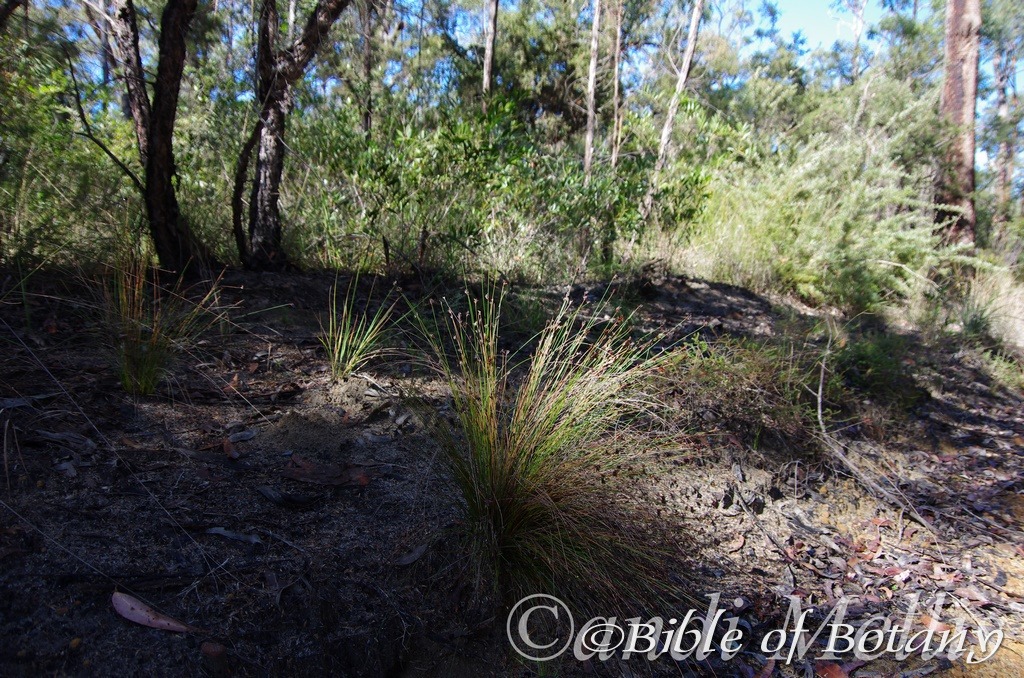
Banyabba National Park NSW

Banyabba National Park NSW

Banyabba National Park NSW
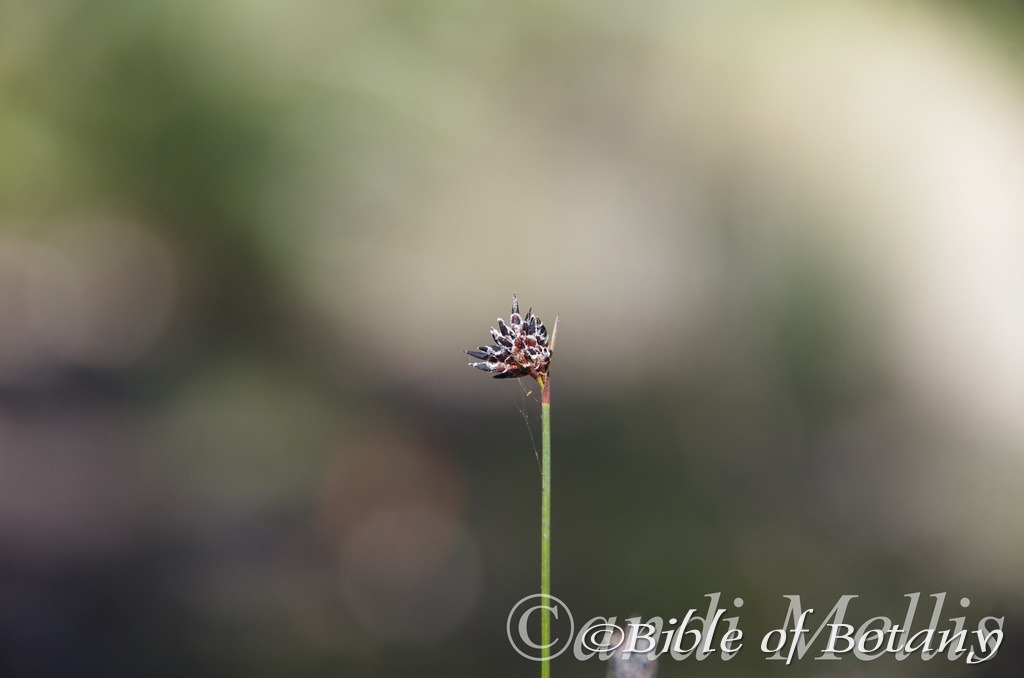
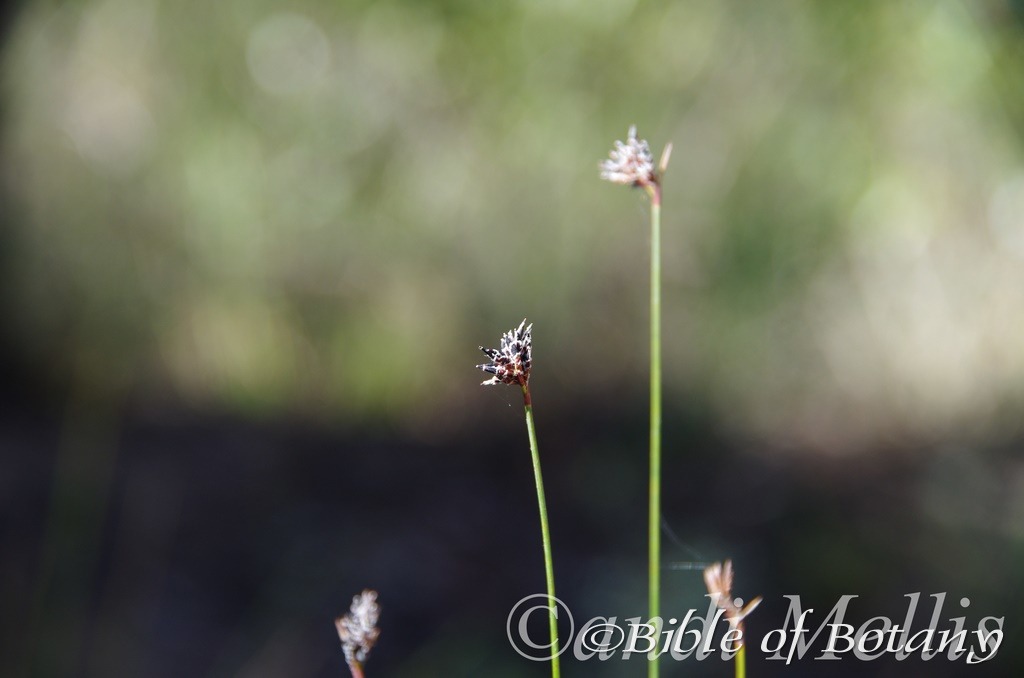
Banyabba National Park NSW

Banyabba National Park NSW
Bulbostylis barbata
Classification:
Unranked: Monocots
Unranked: Commelinids
Order: Poales
Family: Cyperaceae
Genus: From Bulbos, which is Ancient Greek for a bulb and stylis, which is Ancient Greek for a style. It refers to the style being somewhat bulb like.
Specie: From Barb?tum, which is Latin for a beard or a barbed hair. It refers to tufts of hairs being barbed.
Sub specie:
Common Name:
Distribution:
Bulbostylis barbata is a wide spread species found in the northern two thirds of mainland Australia west of a line from Northhampton and Kurrajong Rockhole in Western Australia to Docker River Settlement in the south east corner of the Northern Territory and east to the Sydney Basin in central coastal New South Wales. It is also found on most the off shore Islands north of these points.
There are some disjunct populations further south in South Australia bounded by Golf Bore to Roxby Downs and Mount Granite.
https://avh.ala.org.au/occurrences/search?taxa=Bulbostylis+barbata#tab_mapView
Habitat Aspect Climate:
Bulbostylis barbata prefer light dappled shade to full sun. It is usually found in dry open flat plains or gentle slopes. The altitude ranges from 8 meters below sea level to 850 meters ASL.
The temperatures range from minus 3 degrees in August to 44 degrees in January.
The rainfall ranges from lows of 50mm to 3000mm average per annum.
Soil Requirements:
Bulbostylis barbata prefer soils that are sandy loams to light clays. The soils are usually poor, skeletal or deep and porous. The soils are usually derived from decomposed sandstones, metashales and granites, deposited as alluviums or accumulated sands. The soils pH ranges from 5pH to 7pH. It does not tolerate water logged soils. Non saline soils to very saline soils and probably extremely saline soils are tolerated.
Height & Spread:
Wild Plants: 0.05m to 0.3m by 0.1m to 0.6m.
Characteristics:
Bulbostylis barbata is a slender densely tufted caespitose annual grass. The fine fawn to rusty-brown rhizomes are very short.
The terete culms are ascending and measure 50mm to 300mm in length by 0.25mm to 0.3mm diameter. The nodes are olive-green to mid-green, glabrous and smooth.
Leaves are mostly basal. The leaf sheaths of Bulbostylis barbata are glabrous except for a few long white hairs where the sheaths pare away from the culm. The linear leaves are much shorter than the culms and measure 3mm to 20mm in length by 0.2mm to 0.3mm in width. The concolourous laminas are grass-green, glabrous and have an acute apex. The margins are entire.
The inflorescences of Bulbostylis barbataare hemispherical heads with 3 to 20 spikelets. The heads measure 5mm to 15mm in diameter. The 1 to 3 involucral bracts are shorter than inflorescence and measure 5mm to 20mm in length.
The spikelets are ovoid to oblong with an acute apex and measure 3mm to 8mm in length by 1mm to 1.5mm in diameter.
The single glumes are similar, acute and measure 2.5mm to 3.8mm in length. The elliptical lower glumes’ surfaces are covered in long 3mm to 10mm white puberulent hairs. The lower glume is without a keel but has 7 to 9 nerves. The lanceolate, upper glume has a single keel with 3 nerves while the surface is asperulous.
The inflorescences have a single anther. The anthers measure 0.5mm to 0.7mm in length. The style is trifid. The flowers appear from late September to late February under ideal conditions.
The fruits of Bulbostylis barbata are broad ovoid triquetrous nuts. The nuts are smooth, finely reticulate and are off white to pale straw colour. The nuts measure 0.5mm to 0.8mm in length by 0.4mm to 0.6mm in diameter.
Wildlife:
Bulbostylis barbata do not appear to have any predators though the leaf blades are eaten by kangaroos, wallabies and stock however because of their small size and slow recovery rate is not considered a fodder crop.
The seeds are edible and the plants have preferred nutritional value for stock.
Cultivation:
Bulbostylis barbata is a small perennial tufted reed for small gardens and rockeries. In cultivation it will grow from 0.3 meter to 0.35 meters in height by 0.5 meter to 0.6 meters in diameter when grown in the open.
It grows exceptionally well on most soil types except for pure sand. 1 or 2 deep waterings during the growing season is far more beneficial than regular small amounts. It can cope with temperatures as low as minus 4 degrees and up to 40 degrees. It is drought tolerant once established while at the same time can cope with periodic flooding and wet feet.
It always look green and fresh especially where adequate ground moisture is retained whether they are grown in light shade or full sun. It is most suitable for use around semi shaded swimming pools, courtyards, besides pathways, shady rockeries, along sandy clay banks or along driveways or adjacent to natural bush gardens. Mass plantings of 5 or more plants even in small areas; really do the plants justification especially when they are in flower.
Medium fish or frog ponds will benefit from Bulbostylis barbata. If it is placed around a pool, courtyards or other confined spaces then plant them in small groups or scatter plant them for a more informal natural look against walls or small fences to help soften them. Using rocks and small boulders can make the pool or any water feature appear like an oasis. The leaves can make a great start for the larger heath or desert setting. When making a desert scene using Bulbostylis barbata use either medium rocks with few to many plants or in a sandy desert plant them sparingly with them becoming more densely planted adjacent to the water. Be careful not to over plant as they will look out of place and their natural beauty will be lost.
If companion plants are sought then the choice of plants to use either side is limited only by size of the area to be landscaped and the size of the other plants as they should be no more than 150mm in height to emphasize the Bulbostylis barbata or 300mm in height when using Bulbostylis barbata to highlight curves and bends in the rockery.
Beneath a mallee tree it can be mass planted for a natural bush setting. Here its small size and fine foliage will help contrast the upright growth of the other plants giving them more height.
It is great to break up horizontal lines along driveways. It can be used to great affect where a dry creek bed is the theme by using them to mark out the banks. It can be used to stabilize banks along creeks and streams. Plants with small pale green leaves would help highlight the leaves of Bulbostylis barbata. Use leaves that are divided as it will contrast exquisitely.
The use of annuals is a sure fire way to enhance the foliage and to draw attention when nothing else is in flower.
Japanese style gardens where just a pebbles or rocks are used can have the harshness removed with strategically placed grasses like Bulbostylis barbata planted here and there.
Unfortunately this is an annual grass so the need to propagate it on an annual basis is a reality of growing such a desirable grass.
Propagation:
Seeds: Seeds of Bulbostylis barbata ncan be collected from the panicles as the majority of the seeds ripen. Once the flowers have died and the first seeds have appeared remove the panicle and place it in a brown paper bag. Seeds will remain viable for several years if kept cool and dry.
Sow the seeds directly into a seed raising mix, keeping them moist. When the seedlings are 40mm to 50mm tall, prick them out and plant them into 50mm native tubes using a good organic mix.
Immediately fertilize using Seaweed, fish emulsion or organic chicken pellets soaked in water and apply the liquid on an alternate basis. Fertilize every month.
As the seedlings roots reach the bottom of the tubes plant them out into their permanent position. Do not delay as they will develop a large root system quickly and will be difficult to remove without some set back to the vigour or health of the plants.
Fertilize using Seaweed, fish emulsion or organic chicken pellets soaked in water on an alternate basis. Fertilize every two months until the plants are established then annually in early September or March to maintain health, vitality and better flowering.
Further Comments from Readers:
“Hi reader, it seems you use The Bible of Botany a lot. That’s great as we have great pleasure in bringing it to you! It’s a little awkward for us to ask, but our first aim is to purchase land approximately 1,600 hectares to link several parcels of N.P. into one at The Pinnacles NSW Australia, but we need your help. We’re not salespeople. We’re amateur botanists who have dedicated over 30 years to saving the environment in a practical way. We depend on donations to reach our goal. If you donate just $5, the price of your coffee this Sunday, We can help to keep the planet alive in a real way and continue to bring you regular updates and features on Australian plants all in one Botanical Bible. Any support is greatly appreciated. Thank you.”
In the spirit of reconciliation we acknowledge the Bundjalung, Gumbaynggirr and Yaegl and all aboriginal nations throughout Australia and their connections to land, sea and community. We pay our respect to their Elders past, present and future for the pleasures we have gained.
Bulbostylis densa
Classification:
Unranked: Monocots
Unranked: Commelinids
Order: Poales
Family: Cyperaceae
Genus: From Bulbos, which is Ancient Greek for a bulb and stylis, which is Ancient Greek for a style. It refers to the style being somewhat bulb like.
Specie: From Densus, which is Latin for packed close together. It refers to foliage or at times flowers, which bloom in profusion.
Sub specie:
Common Name:
Distribution:
Bulbostylis densa is a wide spread disjunct specie found along the east coast with the exception of an isolated population near the Anbangbang Shelter on the South Alligator River in the Northern Territory and another in the White Mountains National Park in far northern Queensland. It is found south from the Pascoe River on Cape York Peninsular in far North eastern Queensland to the Paluma Hidden Valley near Mount Zero in far North Queensland. It is then found south from the Sunshine Coast in southern Queensland to Mannering Park north of Sydney in New South Wales. It is found on, west and east of the Great Dividing Range.
There is also a population found on Lord Howe Island.
https://avh.ala.org.au/occurrences/search?taxa=Bulbostylis+densa#tab_mapView
Habitat Aspect Climate:
Bulbostylis densa prefer light dappled shade to full sun. It is usually found on dry rocky hillsides and the riparian zones of dry rocky streams and creeks. The altitude ranges from near sea level to 950 meters ASL.
The temperatures range from minus 5 degrees in August to 38 degrees in January.
The rainfall ranges from lows of 500mm to 3000mm average per annum.
Soil Requirements:
Bulbostylis densa prefer skeletal soils that are close to the parent rocks. The soils are sandy loams to medium clays and at times heavy clays. The soils can be fertile or poor, skeletal or deep and porous or cluggy. The soils are derived from decomposed brown basalt, black basalt, sandstones, shales, metashales and granites. The soils pH ranges from 5pH to 6.5pH. It does not tolerate water logged soils. Non saline soils to moderately saline soils are tolerated.
Height & Spread:
Wild Plants: 0.05m to 0.4m by 0.1m to 0.0.8m.
Characteristics:
Bulbostylis densa is a slender densely tufted caespitose annual grass. The fine fawn to rusty-brown rhizomes are very short.
The semi terete to compressed culms of Bulbostylis densa are ascending and measure 50mm to 380mm in length by 0.2mm to 0.4mm diameter. The culms are olive-green to mid-grass green, glabrous and smooth.
The leaf sheaths of Bulbostylis densa are glabrous except for a few long white hairs where the sheaths pare away from the culm. The linear leaves are much shorter than the culms and measure 3mm to 25mm in length by 0.2mm to 0.3mm in width. The concolourous laminas are grass-green, glabrous and have an acute apex. The margins are entire.
The inflorescences of Bulbostylis densa are simple or sub compound tightly packed head with 1 to 5 spikelets. The heads measure 10mm to 20mm in length. The involucral bracts are very short almost glume like and measure 1.5mm to 2.5mm in length or the lowest 1 or 2 are leaf like and measure 50mm to 70mm in length.
The solitary spikelets are oblong to ovoid with an acute apex and measure 3mm to 6mm in length by 1.7mm to 2mm in diameter.
The single glumes are similar, muticus, acute and measure 1.7mm to 2mm in length. The strongly keeled glumes are nerveless, are reddish-brown to deep red-brown and are glabrous or have white ciliate margins.
The inflorescences have two anthers. The anthers measure 0.2mm to 0.3mm in length. The style is trifid. The flowers appear from late September to late February under ideal conditions.
The fruits of Bulbostylis densa are obovoidea to broad obovoid triquetrous nuts. The nuts are verrucosus and are off white, pale grey or pale straw colour. The nuts measure 0.7mm to 0.9mm in length by 0.5mm to 0.8mm in diameter.
Wildlife:
Bulbostylis densa do not appear to have any predators though the leaf blades are eaten by kangaroos, wallabies and stock however because of their small size and slow recovery rate is not considered a fodder crop.
The seeds are edible and the plants have preferred nutritional value for stock.
Cultivation:
Bulbostylis densa is a small perennial tufted grass for small gardens and rockeries. In cultivation it will grow from 0.3 meter to 0.36 meters in height by 0.5 meter to 0.65 meters in diameter when grown in the open.
It grows exceptionally well on most soil types except for pure sand. 1 or 2 deep watering during the growing season is far more beneficial than regular small amounts. It can cope with temperatures as low as minus 4 degrees and up to 40 degrees. It is drought tolerant once established while at the same time can cope with short periodic flooding and wet feet.
It always look green and fresh especially where adequate ground moisture is retained whether they are grown in light shade or full sun. It is most suitable for use around semi shaded swimming pools, courtyards, besides pathways, shady rockeries, along sandy clay banks or along drive ways or adjacent to natural bush gardens. Mass plantings of 5 or more plants even in small areas; really do the plants justification especially when they are in flower.
Medium fish or frog ponds will benefit from Bulbostylis densa. If they are placed around a pool, courtyards or other confined spaces then plant them in small groups or scatter plant them for a more informal natural look against walls or small fences to help soften them. Using rocks and small boulders can make the pool or any water feature appear like an oasis. The leaves can make a great start for the larger heath or desert setting. When making a desert scene using Bulbostylis densa use either medium rocks with few to many plants or in a sandy desert plant them sparingly with them becoming more densely planted adjacent to the water. Be careful not to over plant as they will look out of place and their natural beauty will be lost.
If companion plants are sought then the choice of plants to use either side is limited only by size of the area to be landscaped and the size of the other plants as they should be no more than 150mm in height to emphasize the Bulbostylis densa or 300mm in height when using Bulbostylis densa to highlight curves and bends in the rockery.
Beneath a mallee tree it can be mass planted for a natural bush setting. Here their small size and fine foliage mixed with a pebble mulch; will certainly turn many heads, with the strong contrast between the tree grass and pebbles.
It can be used to great effect in break up horizontal lines along driveways. It can be used to great affect where a dry creek bed is the theme by using them to mark out the banks. It can be used to stabilize banks along creeks and streams. Plants with small pale green leaves would help highlight the leaves of Bulbostylis densa. Use leaves that are divided as they will contrast exquisitely.
The use of annuals is a sure fire way to enhance the foliage and to draw attention when nothing else is in flower.
Japanese style gardens where just a pebbles or rocks are used can have the harshness removed with strategically placed grasses like Bulbostylis densa planted here and there.
Unfortunately this is an annual grass so the need to propagate it on an annual basis is a reality of growing such a desirable grass.
Propagation:
Seeds: Seeds of Bulbostylis densa can be collected from the panicles as the majority of the seeds ripen. Once the flowers have died and the first seeds have appeared remove the heads and place them in a brown paper bag. Seeds will remain viable for several years if kept cool and dry.
Sow the seeds directly into a seed raising mix, keeping them moist. When the seedlings are 40mm to 50mm tall, prick them out and plant them into 50mm native tubes using a good organic mix.
Fertilize using Seaweed, fish emulsion or organic chicken pellets soaked in water on an alternate basis. Fertilize every two months until the plants are established then annually in early September or March to maintain health, vitality and better flowering.
As the seedlings roots reach the bottom of the tubes plant them out into their permanent position. Do not delay as they will develop a large root system quickly and will be difficult to remove without some set back to the vigour or health of the plants.
Further Comments from Readers:
“Hi reader, it seems you use The Bible of Botany a lot. That’s great as we have great pleasure in bringing it to you! It’s a little awkward for us to ask, but our first aim is to purchase land approximately 1,600 hectares to link several parcels of N.P. into one at The Pinnacles NSW Australia, but we need your help. We’re not salespeople. We’re amateur botanists who have dedicated over 30 years to saving the environment in a practical way. We depend on donations to reach our goal. If you donate just $5, the price of your coffee this Sunday, We can help to keep the planet alive in a real way and continue to bring you regular updates and features on Australian plants all in one Botanical Bible. Any support is greatly appreciated. Thank you.”
In the spirit of reconciliation we acknowledge the Bundjalung, Gumbaynggirr and Yaegl and all aboriginal nations throughout Australia and their connections to land, sea and community. We pay our respect to their Elders past, present and future for the pleasures we have gained.
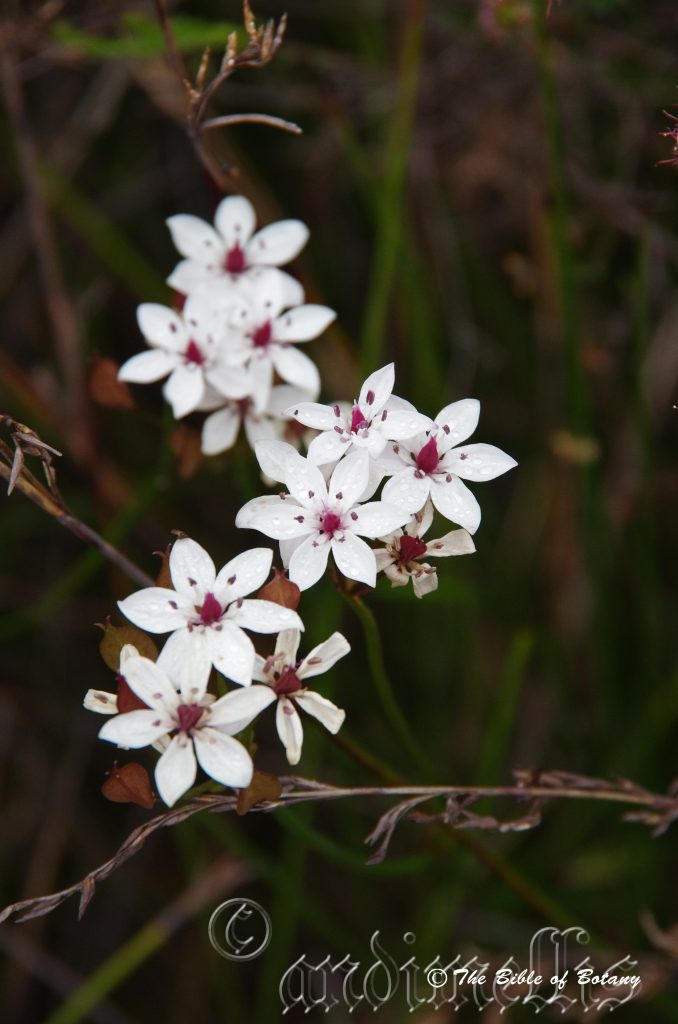
Innes Lake National Park NSW
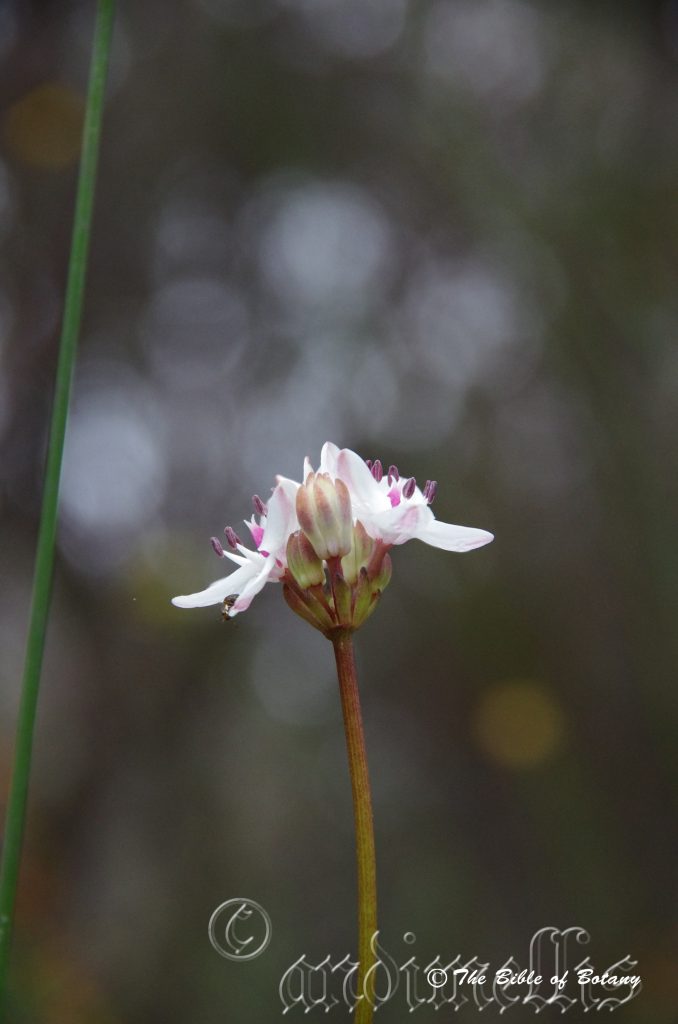
Innes Lake National Park NSW

The Pinnacles NSW
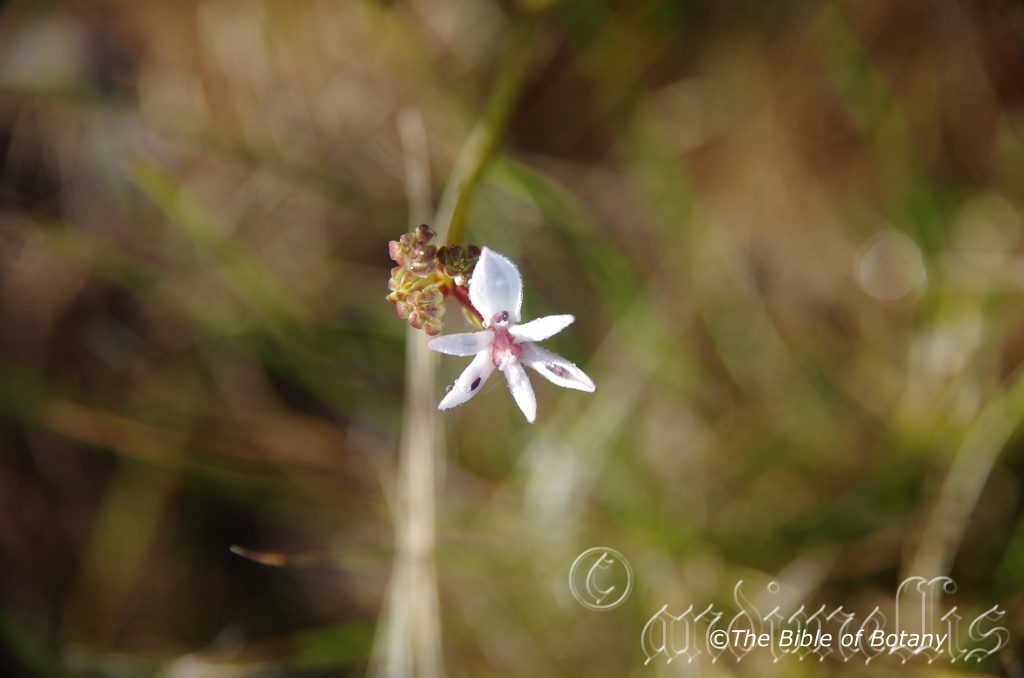
The Pinnacles NSW
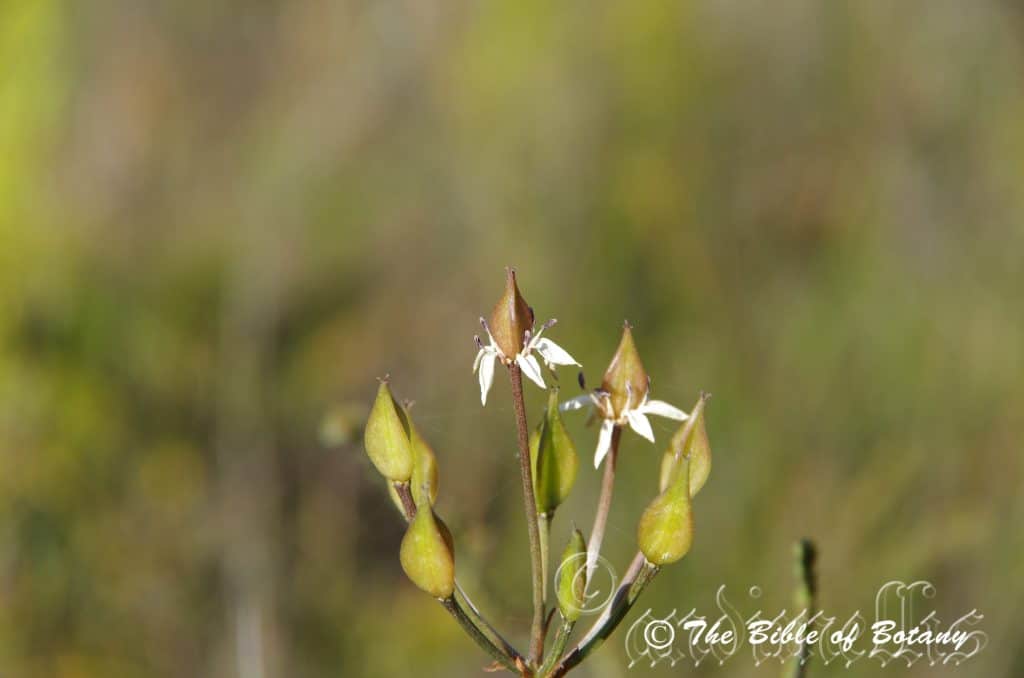
Innes Lake National Park NSW
Burchardia umbellata
Classification:
Class: Monocots
Order: Liliales
Family: Colochicaceae
Genus: Is named in honour of Johann Burchard; 1784-1817, who was a German Doctor who foreshadowed the plant sexual system of Karl Linnaeus.
Specie: From Umbella/Umbra, which is Latin for a parasol or umbrella. It refers to floral clusters of flowers, in which all the petioles branch from the same level on the stalk axis and terminate at the same level in loose umbels.
Sub specie:
Common Name: Milkmaids.
Distribution:
Burchardia umbellata is found in Western Australia in a triangle bounded by the Fitzgerald National Park in the east west to the coast and north to Kalbarri National Park.
It is a wide spread herb along the eastern side of the Great Dividing Range south from Fraser Island in southern Queensland to Mornington Peninsular in southern Victoria. It is found west of the Great Dividing Range along the Bogan River, Lachlan River and The Murrumbidgee Rivers south west to the Grampians through most of Victoria to Gawler, Point Lincoln and south of Lake Greenly in South Australia. There is an isolated population found along the Mackenzie River near Carnarvon Gorge in central Queensland.
It is found in the north and east of Tasmania from Burnie in a south easterly direction to Freycinet National Park.
https://avh.ala.org.au/occurrences/search?taxa=Burchardia+umbellata#tab_mapView
Habitat Aspect Climate:
Burchardia umbellata prefers full sun to dappled shade. It grows in open Eucalyptus forests, open woodlands in shallow depressions heaths and swamps. The altitude ranges from 5meters ASL to 400 meters ASL.
The temperatures range from minus 4 degrees in July to 33 degrees in January.
The rainfall ranges from lows of 300mm to 2000mm average per annum. The rainfall is not as important as the localities which always contain permanent ground water from capillary action or high tables.
Soil Requirements:
Burchardia umbellata prefers coarse peaty sands, fine sands, sandy loams, light gravelly clays to sandy clays. The soils are derived from decomposed sandstone or accumulated beach sands. The soils pH ranges from 4.5pH to 7pH. It is tolerant of water logged soils. Non saline soils to slightly saline soils are tolerated.
Height & Spread:
Wild Plants: 0.3m to 0.6m by 0.06m to 0.2m.
Characteristics:
Burchardia umbellata is a herb with 2 or 3 base leaves. The leaves of Burchardia umbellata are linear measure 230mm to 600mm in length by 1.5mm to 4mm in width. The base is clasping while the apex is tapering. The concolourous laminas are deep green to sea-green and glabrous. The leaf margins are entire. The mid vein is prominent on the lower lamina and is barely visible on the upper lamina.
The inflorescences of Burchardia umbellata are long filiform scapes. The umbels comprise of 3 to 9 individual flowers. The glabrous scapes are usually unbranched but on rare occasions are 1 branched. The scapes measure 100mm to 650mm in height. The lower bracts are similar to leaves and measure 200mm to 500mm in length while the upper bracts are much shorter and measure 12mm to 4 0mm in length. The involucral bracts measure 4mm to 12mm in length. The 6 white or rarely white tinged pink, slightly contorted tepals are elliptical to broadly lanceolate and measure 6mm to 9mm in length by 3mm to 4.5mm in width. The glabrous pedicels measure 10mm to 30mm in length.
The 6 white stout filaments measure 2mm to 3mm in length. The purple dorsifixed anthers are oblong and measure 1mm to 2mm in length by 0.6mm to 1mm in width. The pollen is white.
The long globose style is bright carmine-pink and is trigonous in cross section. The style measures 2.6mm to 4mm in length by 1.2mm to 1.8mm in width. The 3 lobed stigmas are translucent white. The flowers appear throughout the year under favourable conditions with a peak from September to November.
The fruit of Burchardia umbellata are flattened capsules. The capsules measure 10mm to 15mm length by 5mm to 7mm in width. The olive-green capsules, dry to deep grey almost black when ripe. They are glabrous and coriaceous. The capsules are well developed by the time the tepals and stamens fall. The smooth, black seeds are orbicular.
Wildlife:
Burchardia umbellata is the host to numerous native beetles, native pollen flies and bees when in flower.
Cultivation:
Burchardia umbellata is a magnificent small annual that should be more widely grown in moist sunny garden situations. A small herb that can easily be planted in mass to give an absolutely fantastic displays, throughout the year once established.
Burchardia umbellata would make an excellent contribution in a moist or wet sandy rocky terrain rock garden provided there is constant water available or the soil is continuously wet. Here it can be used as fill in plants, scattered in small groups throughout the rocks or mass planted. When you use them in an area that is strewn with large boulders it is important to have balance. Burchardia umbellata is well suited to such conditions so use contours to display the plants boulder country are almost always rising and falling in contour and have sharp rises. The idea is to achieve a feeling of expansive harshness.
Burchardia umbellata also makes an outstanding contribution to a moist open heath garden. When you design a flat heath garden which Burchardia umbellata is well suited don’t use contours to display the plants as heath lands are almost always flat or have a slight rise. Make the path narrow so you have to feel the plants as you walk through the garden bed. This gives an extra dimension which many people forget about when designing heath gardens. Plants must be planted close together and be short so you can see over the tallest ones with the exception of one or two plants at the most. These will be feature plants. The idea is to achieve a feeling of expansive flatness. This can be achieved with using the Burchardia umbellata vertical flower spikes contrasting with finer pale green or deep green coloured foliage. Use a lot of procumbent plants like Carpobrotus edulis, Hibertia species or Melaleuca pearsonii and mass plant them for best effect. Mix them with other smaller shrubs so none of them dominate the scene but blend in to give a mosaic of foliage colours that you oversee. Be careful not to overcrowd the scene or Burchardia umbellata will ultimately succumb to the competition.
Propagation:
Seeds: Sow seeds in autumn in the north or in early spring in the south into a seed raising mix covering them with 5mm of mix. Sow the seeds sparingly. About 80mm of seeds will be fertile this is normal. Keep the seed trays moist, in an airy space that receives plenty of sunlight as seedlings as they do not like dark conditions. 30mm shade cloth is ideal for stating the seedlings.
When the seedlings are 20mm to 40mm in height, prick them out and plant them into 50mm native tubes using a seed raising mix.
Fertilize using Seaweed, fish emulsion or organic chicken pellets soaked in water on an alternate basis. Fertilize every two months until the plants are established then annually in early September or March to maintain health, vitality and better flowering.
Once the seedlings reach 100mm in height plant them out into their permanent position. Mass plantings can be achieved with spacing of 100mm between plants.
Further Comments from Readers:
“Hi reader, it seems you use The Bible of Botany a lot. That’s great as we have great pleasure in bringing it to you! It’s a little awkward for us to ask, but our first aim is to purchase land approximately 1,600 hectares to link several parcels of N.P. into one at The Pinnacles NSW Australia, but we need your help. We’re not salespeople. We’re amateur botanists who have dedicated over 30 years to saving the environment in a practical way. We depend on donations to reach our goal. If you donate just $5, the price of your coffee this Sunday, We can help to keep the planet alive in a real way and continue to bring you regular updates and features on Australian plants all in one Botanical Bible. Any support is greatly appreciated. Thank you.” In the spirit of reconciliation we acknowledge the Bundjalung, Gumbaynggirr and Yaegl and all aboriginal nations throughout Australia and their connections to land, sea and community. We pay our respect to their Elders past, present and future for the pleasures we have gained.
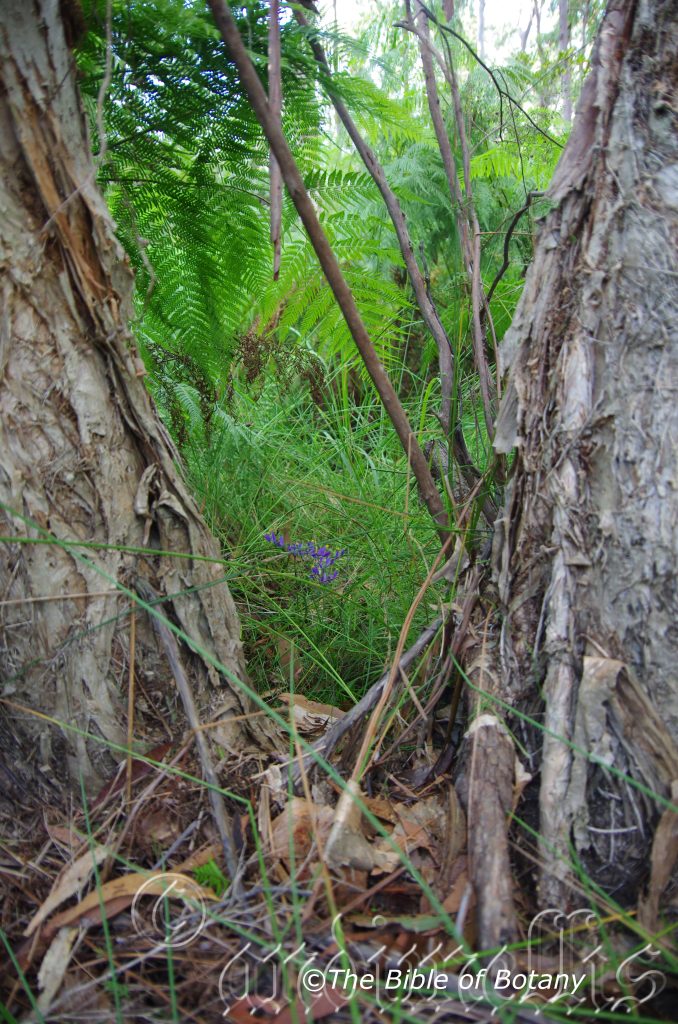
The Pinnacles NSW

The Pinnacles NSW
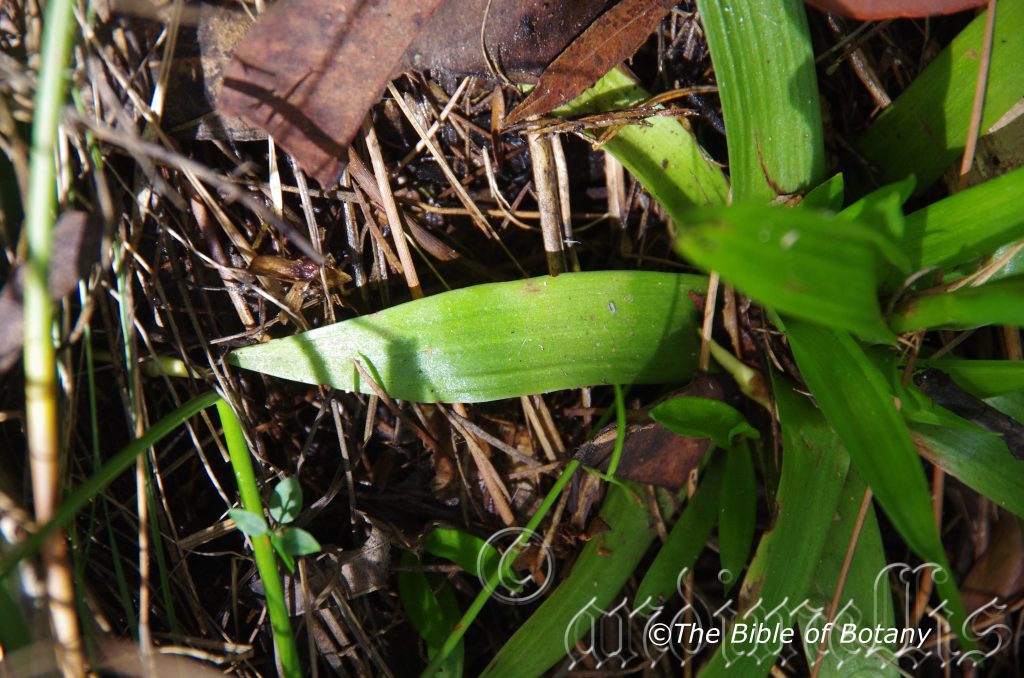
The Pinnacles NSW
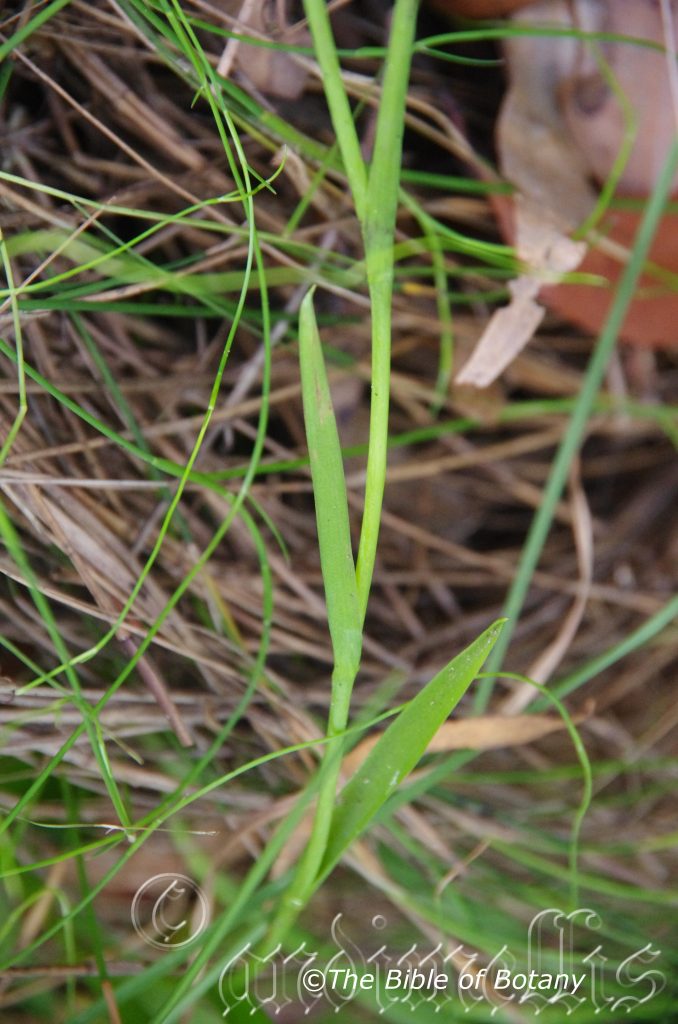
The Pinnacles NSW
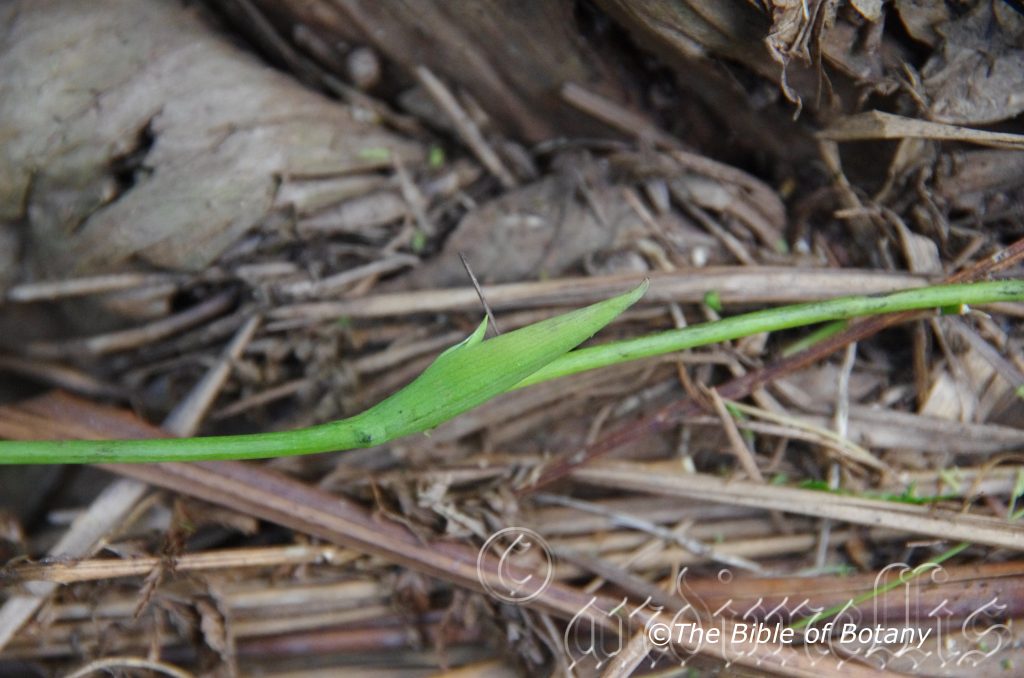
The Pinnacles NSW
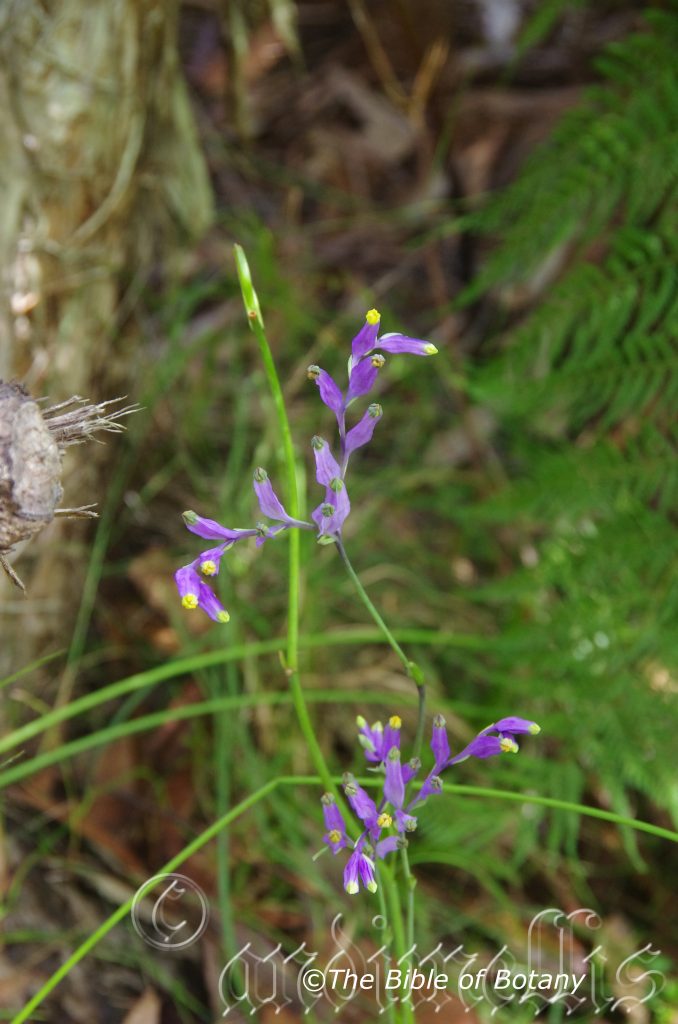
The Pinnacles NSW
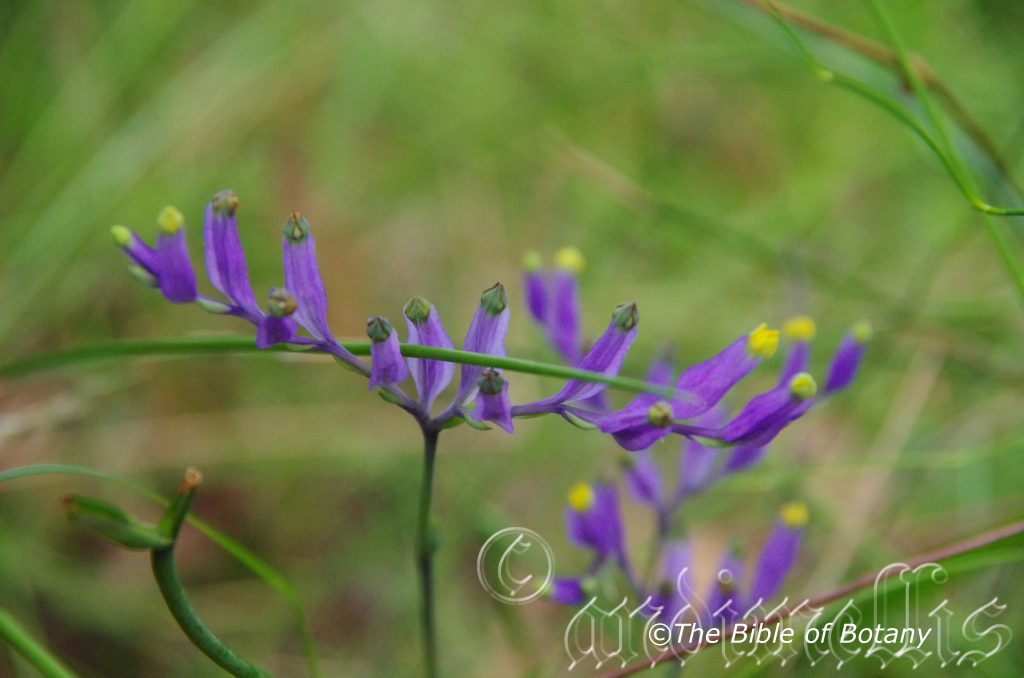
The Pinnacles NSW

The Pinnacles NSW
Burmannia disticha
Classification:
Class: Equisteopsida
Subclass: Magnoliiadeae
Superorder: Lilianae
Order: Dioscoreae
Family: Burmanniaceae
Genus: Is named in honour of Johannes Burman; 1706-1789, who was a Dutch Botanist and friend of Karl Linnaeus.
Specie: From Diploos, which is Ancient Greek for to have two parts or two forms and Stichos, which is Ancient Greek or Stichus, which is Latin for a row. It refers to the leaves, leaflets, flowers or fruits, which are on opposite sides of the stem and on the same plane that is they have a two rank.
Sub specie:
Common Name:
Distribution:
Burmannia disticha is a wide spread herb found several disjunct populations south from Fraser Island in central coastal Queensland to Gosford in central coastal New South Wales north to. It is also found in several isolated populations including Carnarvon Gorge, Byfield National Park near Rockhampton, on Cape York Peninsular near Weipa and north eastern Kakadu National Park in the Northern Territory.
https://avh.ala.org.au/occurrences/search?taxa=Burmannia+disticha#tab_mapView
Habitat Aspect Climate:
Burmannia disticha prefer dappled shade to half shade in swamps, wet lands, moist heaths, in moist depressions in open Eucalyptus forests or open woodlands. It is particularly common in wet grassland heaths. The altitude ranges from 5 meters ASL to 650 meters ASL.
The temperatures range from minus 4 degrees in July to 38 degrees in January.
The rainfall ranges from lows of 750mm to 1600mm average per annum. The rainfall is not as important as the localities which always contain permanent ground water from capillary action or high water tables.
Soil Requirements:
Burmannia disticha prefer peaty sands, sandy loams, light gravelly clays to medium sandy clays. The soils are derived from decomposed sandstone or accumulated beach sands. The soils pH ranges from 5pH to 7pH. It tolerates water logged soils. Non saline soils to slightly saline soils are tolerated.
Height & Spread:
Wild Plants: 0.3m to 0.7m by 0.2m to 0.3m.
Characteristics:
Burmannia disticha is an herb with 1 or 3 unbanked, glabrous, leafy peduncles.
The basal rosette leaves of Burmannia disticha are broad linear to linear-lance late or oblong-elliptical and measure 80mm to 170mm in length by 6mm to 17mm in width. The more erect carline leaves are broad linear to linear-lance late or oblong-elliptical and measure 10mm to 120mm in length by 3mm to 9mm in width. The bases are clasping while the apexes are acute to acuminate and glabrous or sparsely covered in glandular hairs. The concolourous laminas are deep green to sea-green and glabrous. The leaf margins are entire. The mid vein is not visible on the fleshy leaves.
The inflorescences of Burmannia disticha are long leafy scapes. The pair of monochasial cymes each comprises of 8 to 20 individual flowers. The glabrous scapes are usually unbranched but on rare occasions are 1 branched. The deep green to sea-green scapes measure 30mm to 90mm in height. The lanceolate bracts measure 0.5m to 24mm in length.
The lilac to mid-purple perianth measure 8mm to 30mm in length. The corolla tube measures 8–30 mm in length by 3mm to 8mm in diameter. The three lilac to mid-purple, wings on the corolla tube measure 8mm to 30mm in length by 3mm to 8mm in width. The 3 white to yellow outer tepals are triangular and measure 1.5mm to 4.5mm in length. The 3 white to pale yellow inner tepals are lanceolate and measure 1mm to 2mm in length.
The 6 sessile anthers have a basal spur. The pollen is white.
The ellipsoidal ovaries measure 7mm to 12mm in length. The flowers appear throughout the year under favourable conditions with a peak from October to November.
The fruit of Burmannia disticha are ellipsoidal to ovoidal 3 ridged capsules. The capsules measure 6mm to 20mm length by 3mm to 9mm in width. The olive-green capsules are papery brown when ripe. They are glabrous and. The capsules are well developed by the time the tepals and stamens fall. The ellipsoidal black seeds are smooth and glabrous.
Wildlife:
Burmannia disticha is the host to numerous native beetles, native pollen flies and bees when in flower.
Cultivation:
Burmannia disticha are magnificent herbs that should be more widely grown in moist to wet shady to partially shaded garden situations. A small herb that can easily be planted in mass to give absolutely fantastic displays, throughout the year once established.
Burmannia disticha would make an excellent contribution to a sandy or rocky terrain rock garden provided there is constant water available or the soil is continuously wet. Here it can be used as fill in plants, scattered in small groups throughout the rocks or mass planted. When you use them in an area that is strewn with large boulders it is important to have balance. Burmannia disticha is well suited to such conditions so use contours to display the plants boulder country are almost always rising and falling in contour and have sharp rises. The idea is to achieve a feeling of expansive harshness.
Burmannia disticha also make outstanding contribution to a moist heath gardens. When you design a flat heath garden which Burmannia disticha is well suited don’t use contours to display the plants as heath lands are almost always flat or have a slight rise. Make the path narrow so you have to feel the plants as you walk through the garden bed. This gives an extra dimension which many people forget about when designing heath gardens. Plants must be planted close together and be short so you can see over the tallest ones with the exception of one or two plants at the most. These will be feature plants. The idea is to achieve a feeling of expansive flatness. This can be achieved with using the Burmannia disticha’s vertical flower spikes contrasting with finer pale green or deep green coloured foliage. Use a lot of procumbent plants like Carpobrotus edulis, Hibertia species or Melaleuca pearsonii. Mix them with other smaller shrubs so none of them dominate the scene but blend in to give a mosaic of foliage colours that you oversee. Be careful not to overcrowd the scene or Burmannia disticha will ultimately succumb to the competition.
It could be mixed with Burmannia disticha to give outstanding displays of colour around a pool area or in a moist semi shaded rockery with just a spattering of red in the form of Leishenaulta formosa or for something more permanent Grevillea laurifolia. Another beautiful contrast would be Blandfordia nobilis or Blandfordia grandiflora if a totally vertical look is required and spectacular summer colour. The choice is yours and the colour is spectacular.
Propagation:
Seeds: Sow seeds in autumn in the north or in early spring in the south into a seed raising mix covering them with 5mm of mix. Sow the seeds sparingly. About 80mm of seeds will be fertile this is normal. Keep the seed trays moist, in an airy space that receives plenty of sunlight as seedlings as they do not like dark conditions. 30mm shade cloth is ideal for stating the seedlings.
When the seedlings are 20mm to 40mm in height, prick them out and plant them into 50mm native tubes using a seed raising mix.
Fertilize using Seaweed, fish emulsion or organic chicken pellets soaked in water on an alternate basis. Fertilize every two months until the plants are established then annually in early September or March to maintain health, vitality and better flowering.
Once the seedlings reach 100mm in height plant them out into their permanent position. Mass plantings can be achieved with spacing of 100mm between plants.
Further Comments from Readers:
“Hi reader, it seems you use The Bible of Botany a lot. That’s great as we have great pleasure in bringing it to you! It’s a little awkward for us to ask, but our first aim is to purchase land approximately 1,600 hectares to link several parcels of N.P. into one at The Pinnacles NSW Australia, but we need your help. We’re not salespeople. We’re amateur botanists who have dedicated over 30 years to saving the environment in a practical way. We depend on donations to reach our goal. If you donate just $5, the price of your coffee this Sunday, We can help to keep the planet alive in a real way and continue to bring you regular updates and features on Australian plants all in one Botanical Bible. Any support is greatly appreciated. Thank you.”
In the spirit of reconciliation we acknowledge the Bundjalung, Gumbaynggirr and Yaegl and all aboriginal nations throughout Australia and their connections to land, sea and community. We pay our respect to their Elders past, present and future for the pleasures we have gained.
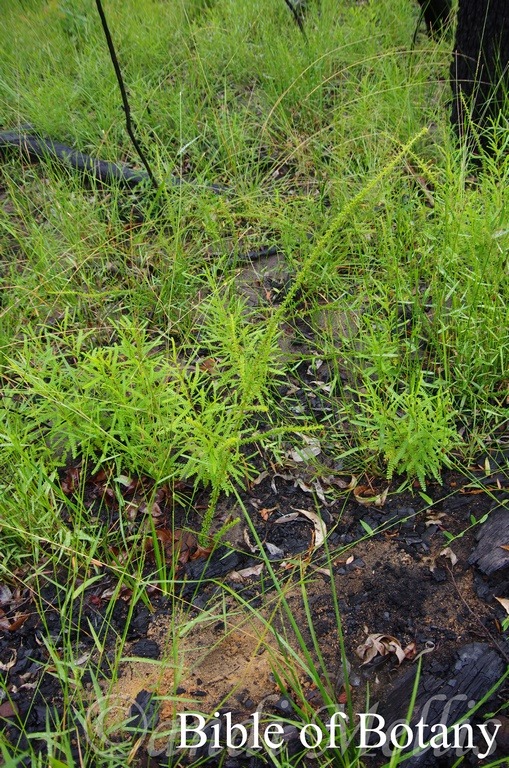
Wombat Creek Conservation Park NSW
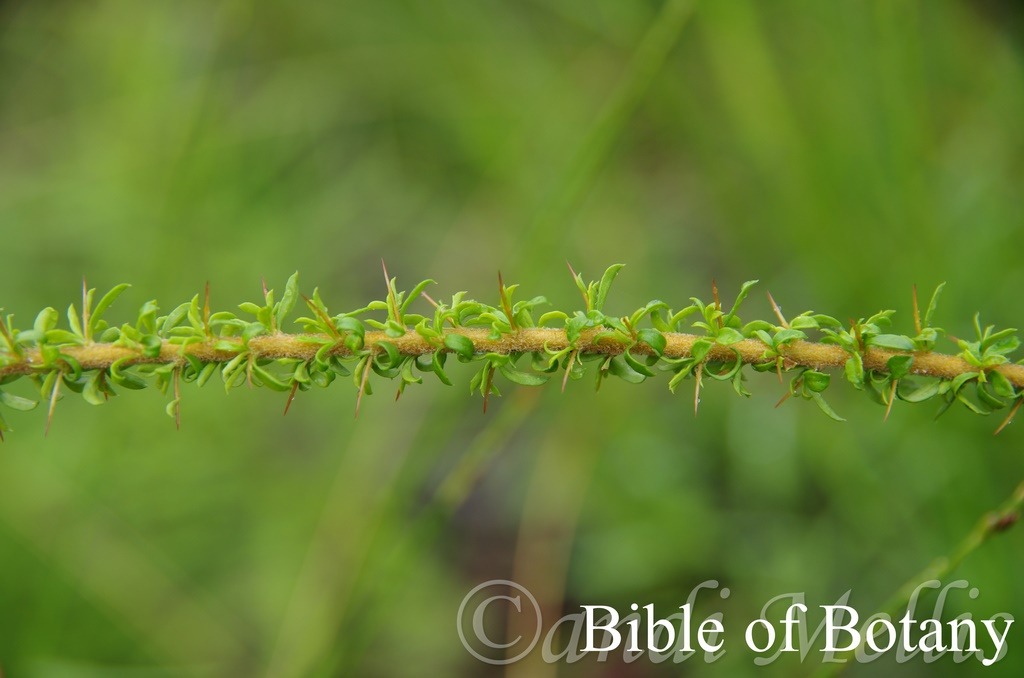
Wombat Creek Conservation Park NSW
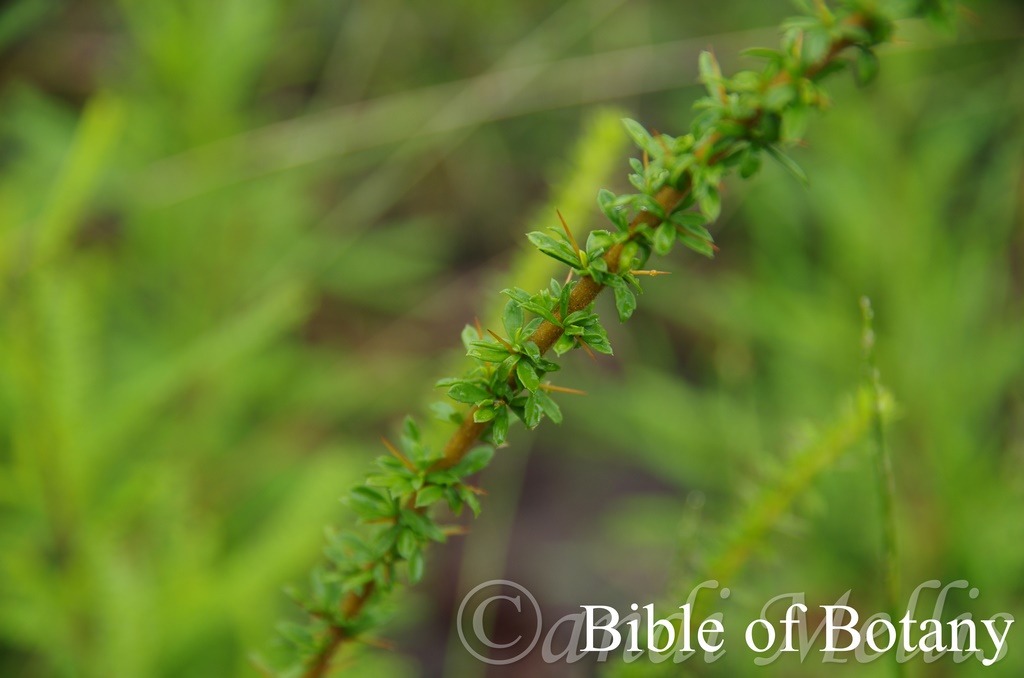
Wombat Creek Conservation Park NSW
Bursaria cayzerae
Classification:
Class: Asterides
Order: Apiales
Family: Pitosporaceae
Subfamily:
Genus: From Bursa which is Latin for a purse. It refers fruits, which resemble small purses.
Specie: Is named in honour of Lindy W. Cayzer; 1952-20.., who was an Australian botanist, who was awarded a Churchill Fellowship in 2016 which enabled her to visit herbaria in Europe and South-East Asia to study the taxonomic data held on the Australian plant family Pittosporaceae. Her later works include Gastrolobium and Daviesia.
Variety:
Common Name: Sweet Bursaria, Native Box or Mock Orange.
Distribution:
Bursaria cayzerae is restricted to a few scattered areas around Grafton New South Wales.
https://avh.ala.org.au/occurrences/search?taxa=Bursaria+cayzerae#tab_mapView
Habitat Aspect Climate:
Aspect / Climate:
Bursaria cayzerae prefers full sun to dappled shade. It grows adjacent to moist streams, open woodlands and subopen Eucalyptus forests. The altitude ranges from 50 meters ASL to 250 meters ASL.
The temperatures range from minus 2 degrees in July to 40 degrees in January.
The rainfall ranges from lows of 800mm to 1100mm average per annum. Non saline soils to low saline soils are preferred.
Soil Requirements:
Bursaria cayzerae prefers fine or coarse sandy loams derived from decomposed sandstone; often shallow to a few centermeters, over sandtone. The soils range from a PH of 5 to 6pH. It does not tolerant of water logged soils though short periods of inundation are often associated with riparian forests. Saline soils are not tolerated at all.
Height & Spread:
Wild Plants: 1.5m to 2m by 1m to 2m.
Characteristics:
Bursaria cayzerae is a sparsely branched shrub with the young stems being sparsely to moderately covered in white appressed tomentose hairs. Older stems and branches are grey-brown and glabrous.
The subsessile juvenile leaves are clustered around short spinescent axillary shoots to 10mm in length. The glabrous, narrow elliptic to narrow oblanceolate leaves measure 3mm to 9mm in length by 1mm to 2mm in width. The bases are taper to the stem, while the apex is obtuse with a short mucronate point.
The petiole on the mature leaves measure 1mm to 1.5mm in length and appear on spinescent shoots to 5mm in length. The glabrous, narrow elliptic to narrowly oblanceolate leaves measure 9.5mm to 18mm in length by 1.5 to 3mm in width.
The solitary inflorescence or at times short racemes of 2 to 5 flowers measure 12mm to 16mm in length with the pedicels measuring 1mm to 1.5mm in length, which elongate further on the ripe fruit. The 5 mid green, glabrous, lanceolate sepals measure 2.5mm to 3.5mm in length and have an acute apex. The 5 glabrous, narrow oblanceolate, white petals have an acute apex and measure 7mm to 9mm in length by 1mm to 2mm in width. The 5 inserted, white stamens are opposite the sepals and have elliptical, creamy yellow, basifixed anthers. The filaments measure 4.5mm to 5mm in length. The green, compressed ovoidal ovary compressed obovoid ovary is glabrous, is somewhat obtuse while it tapers to the style and measures 2.5 to 3mm in length by 1.2mm in width. The style measures 1.5mm in length.
The peduncles on immature capsules are covered in caduceus, white, appressed tomentose hairs and measure 7mm to 9mm in length. The compressed, ovate to broadly cordiform capsule, measures 8mm to 12mm in length by 6mm to 11mm in width, including the apical spine. The compressed, brown, semi glossy, ovate to sub orbicular seeds measure 3.5mm to 3.7mm in length by 2.5mm to 2.8mm in width.
Wildlife:
Bursaria cayzerae is the host to numerous native beetles, moths, butterflies flies and bees when in flower. A number of butterflies are totally reliant on Bursaria species including Etham copper (Paralucia pyrodiscus), the dull copper (Paralucia pyrodiscus suv sp. pyrodiscus) and the bright copper (paralucia aurifer). The shrubs are also a favoured nesting sites for the Double bar (Taeniopygia bichenovii), Red headed finch (Neochmia temporalis) and undoubtedly other small birds which use the shrubs as protective hideouts against larger birds of prey, mammals and the introduced rat and cat.
Cultivation:
This is a shrub of open habit that should be more widely grown in butterfly attracting gardens. It is a medium size shrub that offers a safe haven for small birds. In a bush garden it can be grown in small thickets where the flowers would be noticed at a time when few shrubs are in flower.
This is one of those plants that would probably adapt better to cultivation than in the wild. When cultivated the plants would probably be somewhat smaller, bushier, develop larger leaves and better flowering.
It could be tip pruned to ensure a more compact shrub and by growing it in small groups the branches would cross over giving a denser appearance.
It would also look good if it was intermingled with Melaleuca nesophila, Melaleuca pachyphylus, Melaleuca hypericifolia or other similar small plants with large red flowers that flower in late winter or late spring.
It also appears to be a good honey producer.
Propagation:
Seeds: Sow the fresh seeds of Bursaria cayzerae in autumn in the north or in early spring in the south into a seed raising mix covering them with 5mm of mix. Sow the seeds sparingly. About 40mm of seeds will be fertile this is normal. Keep the seed tray in an airy space that receives plenty of sunlight as seedlings are susceptible to root rot fungi like Rhyzoctonia. Rhyzoctonia are a group of fungi that thrive in moist humid areas and attack the roots of plants especially those that do not like water logging or have a preference for drier conditions.
When the seedlings are 20mm to 40mm tall, prick them out and plant them into 50mm native tubes using a seed raising mix.
Fertilize using Seaweed, fish emulsion or organic chicken pellets soaked in water on an alternate basis. Fertilize every two months until the plants are established then annually in early September or March to maintain health, vitality and better flowering.
Once the seedlings reach 100mm they can be tipped pruned to encourage a shrub effect or remove any side shoots to establish a tree.
Once they reach 150mm to 200mm in height plant them out into their permanent position. Mass plantings can be achieved by planting them with 2 meter centers.
Further Comments from Readers:
“Hi reader, it seems you use The Bible of Botany a lot. That’s great as we have great pleasure in bringing it to you! It’s a little awkward for us to ask, but our first aim is to purchase land approximately 1,600 hectares to link several parcels of N.P. into one at The Pinnacles NSW Australia, but we need your help. We’re not salespeople. We’re amateur botanists who have dedicated over 30 years to saving the environment in a practical way. We depend on donations to reach our goal. If you donate just $5, the price of your coffee this Sunday, We can help to keep the planet alive in a real way and continue to bring you regular updates and features on Australian plants all in one Botanical Bible. Any support is greatly appreciated. Thank you.”
In the spirit of reconciliation we acknowledge the Bundjalung, Gumbaynggirr and Yaegl and all aboriginal nations throughout Australia and their connections to land, sea and community. We pay our respect to their Elders past, present and future for the pleasures we have gained.
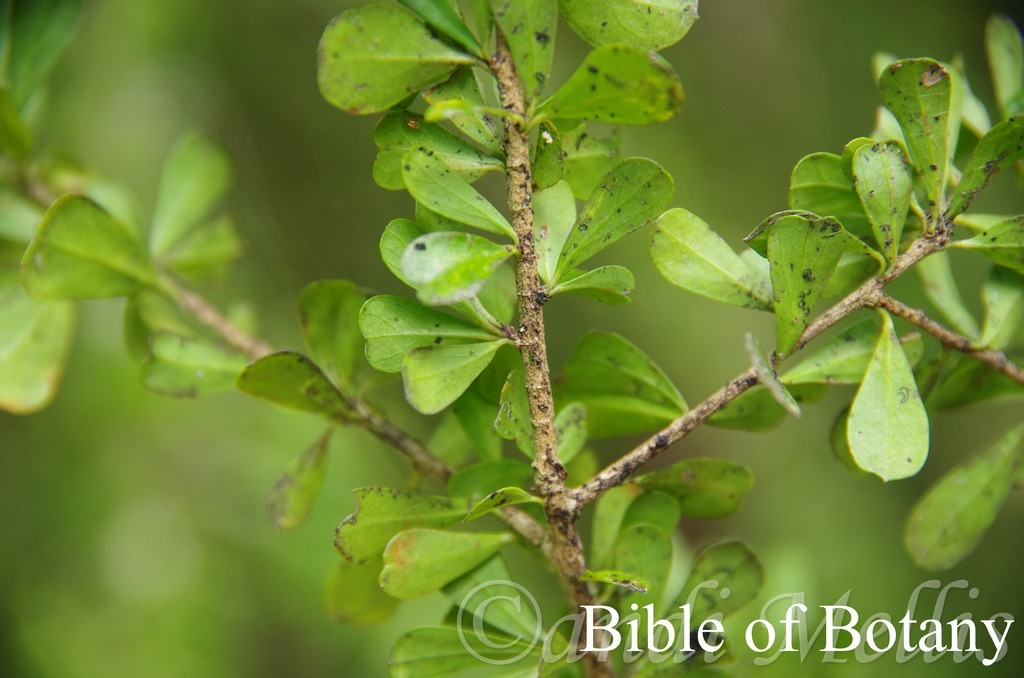
Lismore Botanic Gardens NSW

Lismore Botanic Gardens NSW
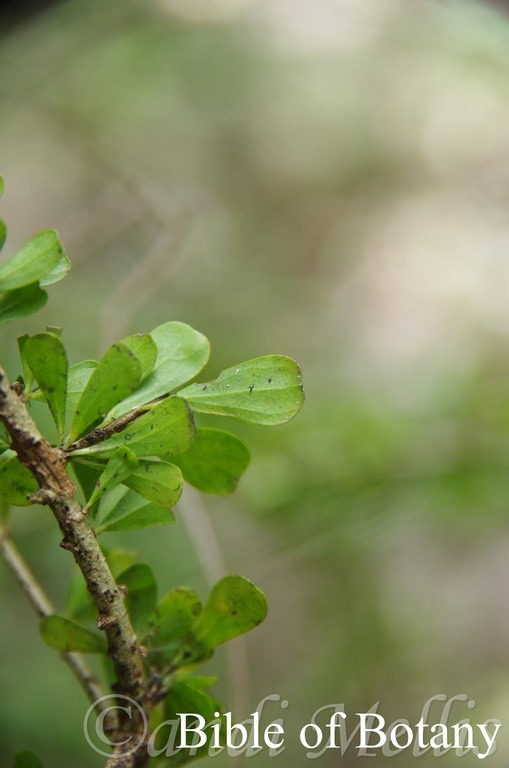
Lismore Botanic Gardens NSW
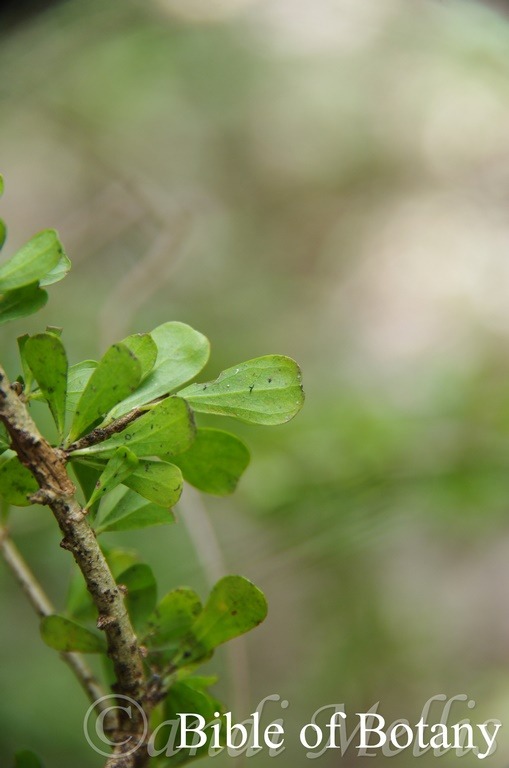
Lismore Botanic Gardens NSW

Ebor NSW
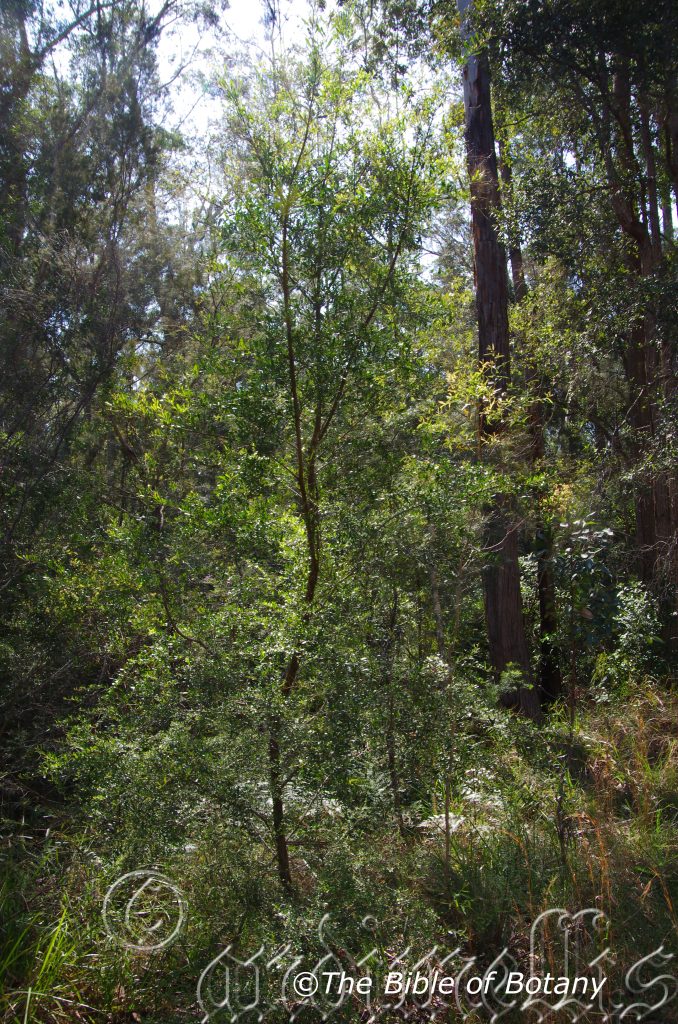
Yuraygir National Park NSW
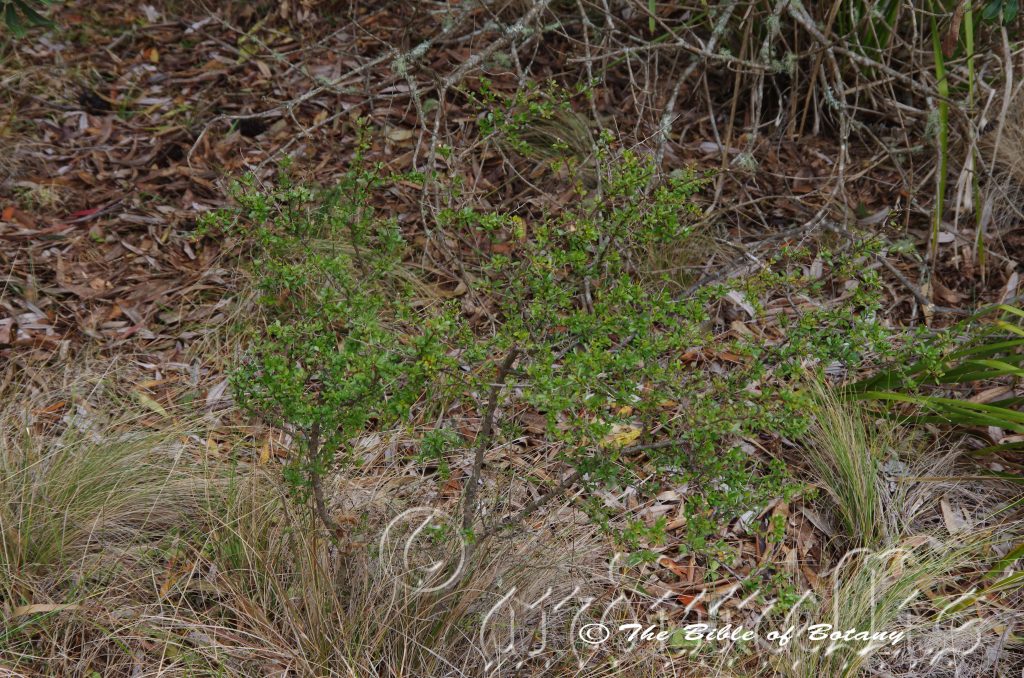
Ebor NSW
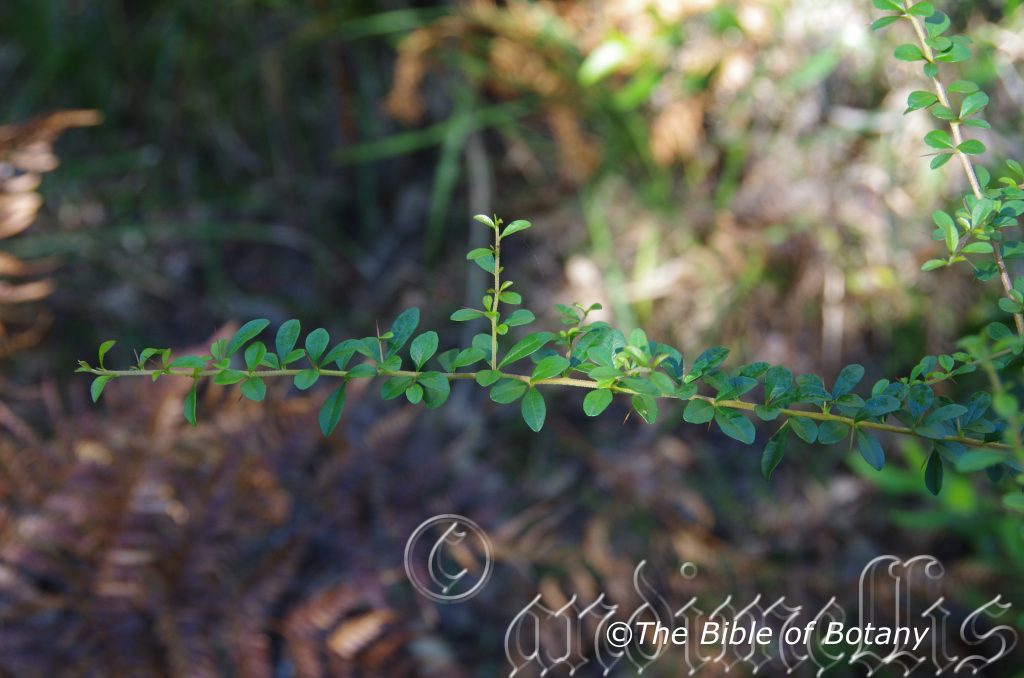
Fortis Creek National Park NSW
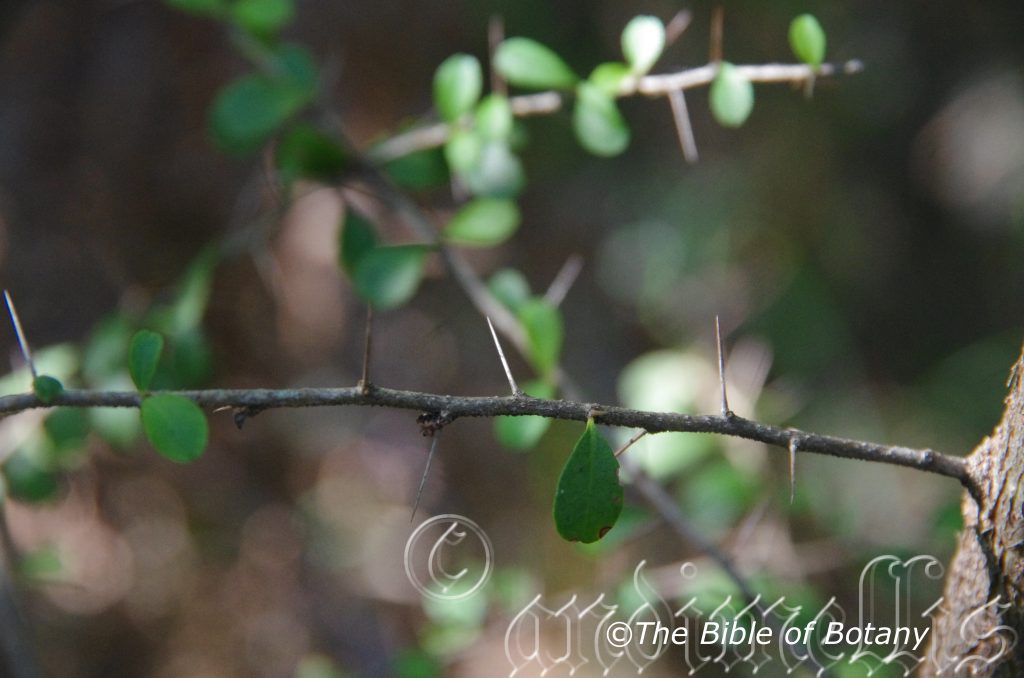
Fortis Creek National Park NSW

Fortis Creek National Park NSW

Yuraygir National Park NSW
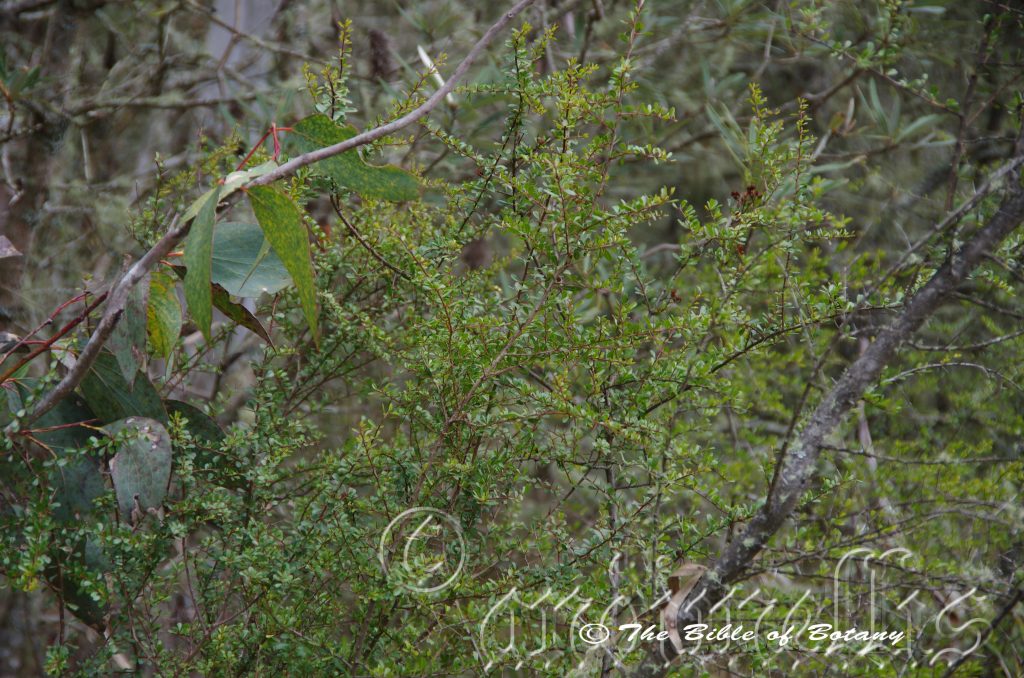
Ebor NSW
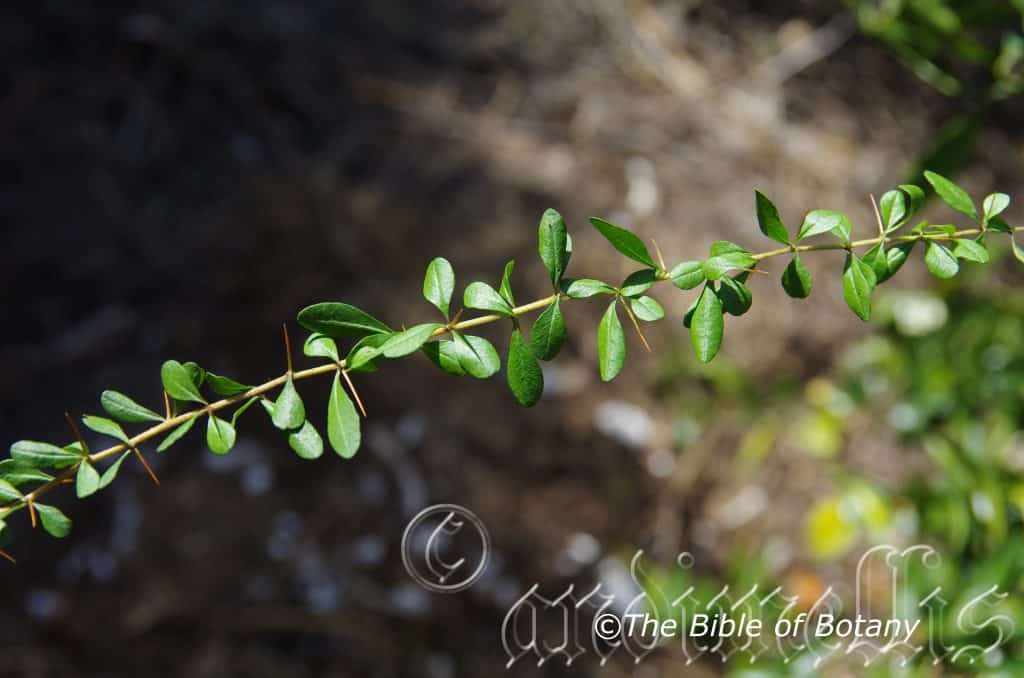
The Pinnacles NSW
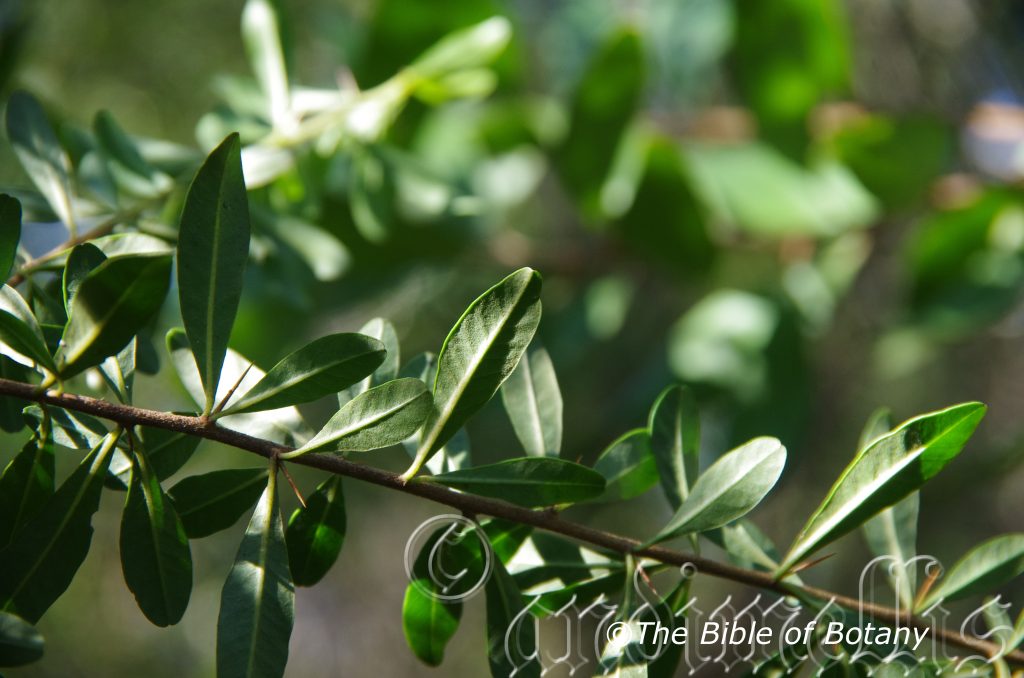
Fortis Creek National Park NSW

Fortis Creek National Park NSW
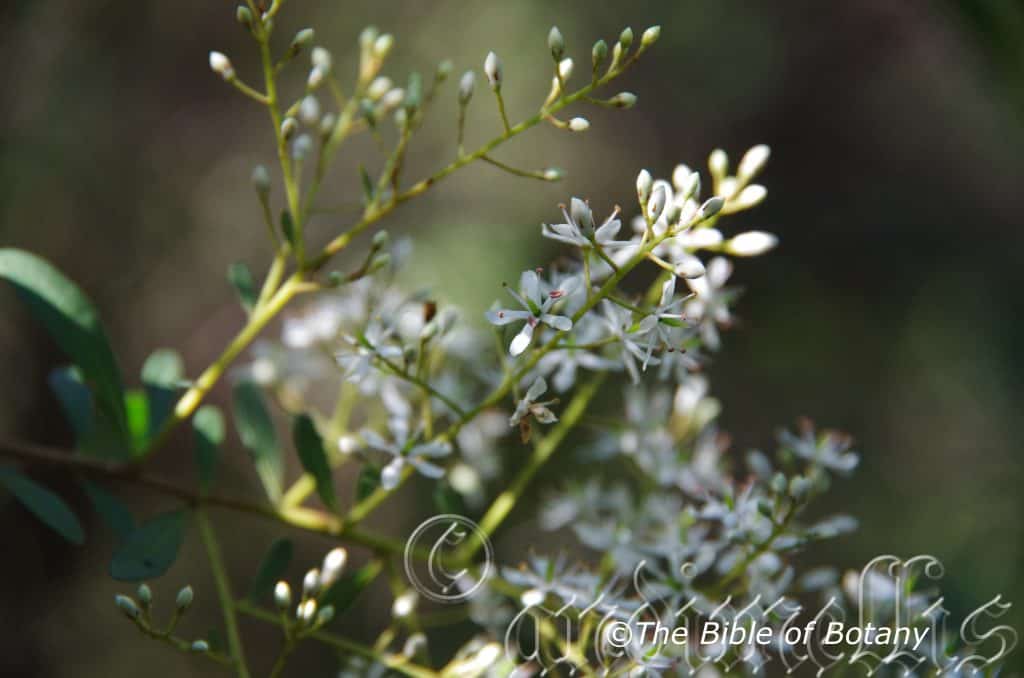
Fortis Creek National Park NSW

Fortis Creek National Park NSW

Yuraygir National Park NSW

Beenleigh Qld.
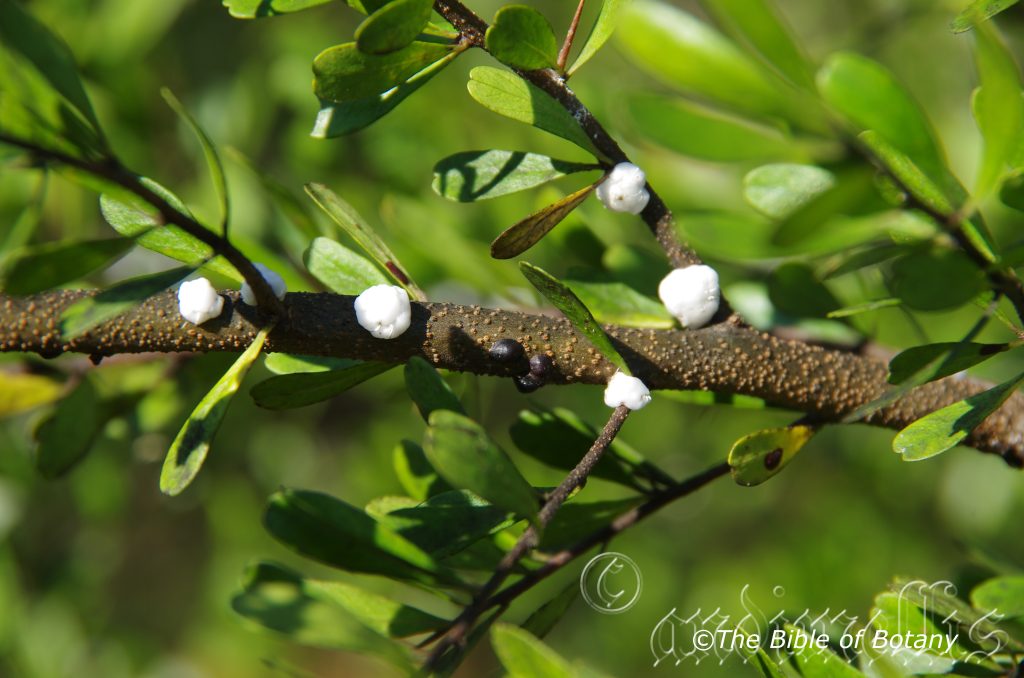
Beenleigh Qld.
Bursaria incana
Classification:
Class: Asterides
Order: Apiales
Family: Pitosporaceae
Subfamily:
Genus: From Bursa which is Latin for a purse. It refers to fruits, which resemble small purses.
Specie: From Canescent, which is Latin for to grow grey. It refers to organs usually the leaves or stems, which are covered in soft grey hairs.
Variety:
Common Name: Prickly Pine.
Distribution:
Bursaria incana in the Northern Territory is restricted to an area north of a line between Port Keats and near Numburindi.
In Queensland it is found east of line south from Normanton to Bungungya Woodlands then east to Mount Barney. It is found west of the Great Dividing Range, on and east of the Great Dividing Range, to the coast.
https://avh.ala.org.au/occurrences/search?taxa=Bursaria+incana#tab_mapView
Habitat Aspect Climate:
Aspect / Climate:
Bursaria incana prefers full sun to light dappled shade. It grows in
open woodlands, semi arid areas, dry rainforests or moist schlerophyll forests. The altitude ranges from 5 meters ASL to 1300 meters ASL.
The temperatures range from minus 2 degrees in July to 46 degrees in January.
The rainfall ranges from lows of 300mm to 2400mm average per annum and as a result affects the size shape and leaf structure of individual plants. Those found in drier areas are almost always associated with soaks along rivers and creeks, depressions, where as those plants growing in high rain fall areas tend to grow in more open areas further away from permanent water.
Soil Requirements:
Bursaria incana prefers sandy loams to light gravelly clays to medium clays. It is also common on decomposed basalts and decomposed shale. The soils range from a PH of 5to 7.5.It does not tolerant of water logged soils though short periods of inundation are often associated with riparian forests. Saline soils are not tolerated at all.
Height & Spread:
Wild Plants: 3m to 7m by 2m to 4m.
Characteristics:
Many scientists consider it to be a variety or sub species of Bursaria sinosa.
Bursaria incana usually grows as a tall shrub or a small tree. Plants are often rhizomatous meaning they sucker up so it is often difficult to know whether you are looking at one plant or several when it is greater than 3 meters in diameter. The trunk is grey, rough, while the branches and stems are pale grey and glabrous. The upper trunk and branches are sparsely covered in short white hairs.
Bursaria incana has oblong sometimes oblong-cordate, glabrous leaves which measure 50mm to 80mm in length by 10mm to 30mm in width. The base is cuneate while the apex is truncate or with a small tip. Young leaves are sparsely covered in short white hairs. The leaf margins are entire while the mid vein is prominent with one or two parallel veins on the lower lamina and is barely visible on the upper lamina.
The sweetly scented inflorescences are borne in large, dense terminal panicles. There are 20 to several hundred individual flowers. The 5 white sepals are densely covered in short white hirsute hairs. They measure 1.2mm to 1.5mm in length. Individual peduncles are 4mm to 6mm long. Stamens measure 4mm to 5mm in length, white with bright yellow anthers while the creamy yellow style is 3.5mm long and lanceolate in shape. The flowers occur from February to April.
The capsules of Bursaria incanus are flattened purse like. The capsules measure 8mm to 10mm in length by 8mm to 10mm in width and contain 1, 2 or 3 brown seeds in each locule. (2 to 6 seeds in a capsule.) The green capsules dry to black when ripe. They are glabrous and coriaceous when ripe.
Wildlife:
Bursaria incana is the host to numerous native beetles, moths, butterflies, flies and bees when in flower. A number of butterflies are totally reliant on Bursaria including Etham copper (Paralucia pyrodiscus), the dull copper (Paralucia pyrodiscus suv sp. pyrodiscus) and the bright copper (paralucia aurifer). The shrubs are also a favoured nesting sites for the Double bar (Taeniopygia bichenovii), Red headed finch (Neochmia temporalis) and undoubtedly other small birds which use the shrubs as protective hideouts against larger birds of prey, mammals and the introduced rat and cat.
Cultivation:
This is a shrub of open habit that should be more widely grown in butterfly attracting gardens. It is a relatively bushy size shrub that offers a safe haven for small birds. In a bush garden it can be grown in small thickets where the flowers would be noticed at a time when few shrubs are in flower. It probably supports many butterflies as well.
This is one of those plants that would adapt better to cultivation than in the wild. When cultivated the plants would probably be smaller, bushier, develop larger leaves and better flowering. Pruning annually in the early years will encourage a denser growth habit.
It would also look good if it was intermingled with Melaleuca nesophila, Melaleuca pachyphylus, Melaleuca hypericifolia or other similar small plants with large red flowers that flower in late winter or late spring.
I believe there is a spot in every garden for Bursaria whether it is for bird attraction, colour, butterflies and the scent from the flowers or the making of corridors. Only your imagination can limit its uses.
Aesculin is produced from the leaves. Aesculin is used for the detection of Enterococcus faecium and Strepococcus bovis bacteria on food and in the preparation of some serums. Apriasts also welcome the plant for its mid-amber good quality coloured honey.
Propagation:
Seeds: Sow seeds in autumn in the north or in early spring in the south into a seed raising mix covering them with 5mm of mix. Sow the seeds sparingly. About 40% of seeds will be fertile this is normal. Keep the seed tray in an airy space that receives plenty of sunlight as seedlings are susceptible to root rot fungi like Rhyzoctonia. Rhyzoctonia are a group of fungi that thrive in moist humid areas and attack the roots of plants especially those that do not like water logging or have a preference for drier conditions.
When the seedlings are 20mm to 40mm tall, prick them out and plant them into 50mm native tubes using a seed raising mix.
Fertilize using Seaweed, fish emulsion or organic chicken pellets soaked in water on an alternate basis. Fertilize every two months until the plants are established then annually in early September or March to maintain health, vitality and better flowering.
Once the seedlings reach 100mm they can be tipped pruned to encourage a shrub effect or remove any side shoots to establish a tree.
Once they reach 150mm to 200mm in height plant them out into their permanent position. Mass plantings can be achieved by planting them with 2 meter centers.
Further Comments from Readers:
“Hi reader, it seems you use The Bible of Botany a lot. That’s great as we have great pleasure in bringing it to you! It’s a little awkward for us to ask, but our first aim is to purchase land approximately 1,600 hectares to link several parcels of N.P. into one at The Pinnacles NSW Australia, but we need your help. We’re not salespeople. We’re amateur botanists who have dedicated over 30 years to saving the environment in a practical way. We depend on donations to reach our goal. If you donate just $5, the price of your coffee this Sunday, We can help to keep the planet alive in a real way and continue to bring you regular updates and features on Australian plants all in one Botanical Bible. Any support is greatly appreciated. Thank you.”
In the spirit of reconciliation we acknowledge the Bundjalung, Gumbaynggirr and Yaegl and all aboriginal nations throughout Australia and their connections to land, sea and community. We pay our respect to their Elders past, present and future for the pleasures we have gained.
Bursaria spinosa
Classification:
Class: Asterides
Order: Apiales
Family: Pitosporaceae
Subfamily:
Genus: From Bursa which is Latin for a purse. It refers fruits, which resemble small purses.
Specie: From Sp?n?sus, which is Latin for a thorn or backbone. It refers to the modified leaves, phyllodes, petioles, midvein or stipules. The leaves have turned into or are reduced to spines. They are seen at the node where a leaf is expected or are an extension to the leaf’s apex.
Variety: Bursaria spinosa var. spinosa. From Sp?n?sus, which is Latin for a thorn or backbone. It refers to the modified leaves, phyllodes, petioles, midvein or stipules. The leaves have turned into or are reduced to spines. They are seen at the node where a leaf is expected or are an extension to the leaf’s apex.
Variety: Bursaria spinosa var. lasiophylla. From Lasios, which is Ancient Greek for soft and woolly and Phullon/Phýllon, which is Ancient Greek for a leaf. It refers to leaves or phyllodes, which are covered in soft, woolly hairs.
Common Name: Sweet Bursaria, Native Box or Mock Orange.
Distribution:
Bursaria spinosa is a wide spread shrub along the eastern side of the Great Dividing Range in Queensland. It is found on the Western Plains, Western Slopes on and east of the Great Dividing Range to the coast in New South Wales.
It is found over most of Victoria and Tasmania with the exception for the south eastern Highlands.
In South Australia it is found along the Murray River Basin and the south east quarter of the state.
https://avh.ala.org.au/occurrences/search?taxa=Bursaria+spinosa#tab_mapView
Habitat Aspect Climate:
Aspect / Climate:
Bursaria spinosa prefers full sun to dappled shade. It grows adjacent to moist cool tropical rainforests, warm subtropical rainforests, in moist Eucalyptus forests, moist schlerophyll forests, monsoonal forests, open woodlands and sub alpine woodlands. The altitude ranges from 50 meters ASL to 1150 meters ASL. Bursaria spinosa var. lasiophylla grows at higher altitude levels compared to Bursaria spinosa var. spinosa.
The temperatures range from minus 5 degrees in July to 40 degrees in January.
The rainfall ranges from lows of 300mm to 2600mm average per annum and as a result affects the size shape and leaf structure of individual plants. Those found in drier areas are almost always associated with soaks along rivers and creeks where as those plants growing in high rain fall areas tend to grow in more open areas further away from permanent water.
Soil Requirements:
Bursaria spinosa prefers sandy loams to light gravelly clays to medium clays. It is also common on decomposed basalts and decomposed shale. The soils range from a PH of 5to 7.5.It does not tolerant of water logged soils though short periods of inundation are often associated with riparian forests. Saline soils are not tolerated at all.
Bursaria spinosa var. lasiophyla grows on heavier clay soils and rockier ridges compared to Bursaria spinosa subsp. spinulosa.
Height & Spread:
Wild Plants: 5m to 10m by 3m to 5m.
Characteristics:
Bursaria spinosa var. spinulosa usually grows as a single trunked small tree to 10 meters by 3 meters or a bushy shrub to 5 meters by 5 meters. Plants are often rhizomatous meaning they sucker up so it is often difficult to know whether you are looking at one plant or several when they are greater than 3 meters in diameter. The trunk is grey with longitudinal furrows near the base while the branches and stems are pale grey and glabrous. The upper trunk and branches are glabrous and sparsely covered in lenticels. Juvenile shoots are densely covered in white hirtellous hairs.
Bursaria spinosa var. lasiophyla usually grows as a multi stemmed shrub. The main stems are grey with fine longitudinal furrows near the base while the branches and stems are pale grey glabrous and sparsely covered in lenticels. Juvenile shoots are densely covered in white appressed hirsute hairs.
Bursaria spinosa var. spinuosa has lanceolate to oval sometimes cordate and glabrous leaves which measure 23mm to 45mm in length by 5mm to 9mm in width. The base is cuneate while the apex is obtuse or emarginate.
Bursaria spinosa var. lasiophyla has lanceolate to oval sometimes obcordate, glabrous leaves which measure 20mm to 35mm long by 7mm to 12mm wide. The base is cuneate while the apex is obtuse or more often cordate. The upper lamina is abaxial to the stem while the lower lamina is densely covered in white hirtellous hairs.
All sub sp. have concolourous laminas that are mid green and semi glossy to glossy. The leaf margins are entire while young leaves are bronze and glossy. The margins are entire or with small lobes close to the apex. The mid vein is prominent on the lower lamina and is barely visible on the upper lamina.
Inflorescences are densely globular cymes. They comprise of 20 to several hundred individual flowers. The 5 white sepals are densely covered in short white hirsute hairs. They measure 1.5mm to 1.7mm in length. Individual peduncles are 4mm to 6mm long. Stamens are 4mm to 5mm in length, white with bright yellow anthers while the creamy yellow style is 3.5mm long and lanceolate in shape. The honey scented flowers occur in October and November.
Bursaria spinosa var. spinuosa’s 5 white petals are oblong to spathulate and measure 4mm to 6mm in length by 2mm to 2.5mm in width.
Bursaria spinosa var. lasiophyla’s 5 white petals are broad oblong to spathulate and measure 3mm to 4mm in length by 2.5mm to 3mm in width.
The capsules of Bursaria spinosa are flattened purses. The capsules measure 5mm to 7mm long by 7mm to 9mm wide and contain 1, 2 or 3 seeds in each locule. (2 to 6 seeds in a capsule. ) The green capsules dry to black when ripe. They are glabrous and coriaceous when ripe. The flat winged seeds measure 5mm in length including the wing. They ripen in January to February and in good seasons the plants look black with the huge amounts of seeds produced.
Wildlife:
Bursaria spinosa is the host to numerous native beetles, moths, butterflies flies and bees when in flower. A number of butterflies are totally reliant on Bursaria including Etham copper (Paralucia pyrodiscus), the dull copper (Paralucia pyrodiscus suv sp. pyrodiscus) and the bright copper (paralucia aurifer). The shrubs are also a favoured nesting sites for the Double bar (Taeniopygia bichenovii), Red headed finch (Neochmia temporalis) and undoubtedly other small birds which use the shrubs as protective hideouts against larger birds of prey, mammals and the introduced rat and cat.
Cultivation:
This is a shrub of open habit that should be more widely grown in butterfly attracting gardens. It is a medium size shrub that offers a safe haven for small birds. In a bush garden it can be grown in small thickets where the flowers would be noticed at a time when few shrubs are in flower.
This is one of those plants that would probably adapt better to cultivation than in the wild. When cultivated the plants would probably be smaller, bushier, develop larger leaves and better flowering.
It could be tip pruned to ensure a more compact shrub and by growing it in small groups the branches would cross over giving a denser look.
It would also look good if it was intermingled with Melaleuca nesophila, Melaleuca pachyphylus, Melaleuca hypericifolia or other similar small plants with large red flowers that flower in late winter or late spring.
I believe there is a spot in every garden for Bursaria whether it is for bird attraction, colour, butterflies and the scent from the flowers or the making of corridors. Only your imagination can limit its uses.
Aesculin is produced from the leaves. Aesculin is used for the detection of Enterococcus faecium and Strepococcus bovis bacteria on food and in the preparation of some serums. It is being grown commercially. Apriasts also welcome the plant for its mid-amber good quality coloured honey.
Propagation:
Seeds: Sow seeds in autumn in the north or in early spring in the south into a seed raising mix covering them with 5mm of mix. Sow the seeds sparingly. About 40mm of seeds will be fertile this is normal. Keep the seed tray in an airy space that receives plenty of sunlight as seedlings are susceptible to root rot fungi like Rhyzoctonia. Rhyzoctonia are a group of fungi that thrive in moist humid areas and attack the roots of plants especially those that do not like water logging or have a preference for drier conditions.
When the seedlings are 20mm to 40mm tall, prick them out and plant them into 50mm native tubes using a seed raising mix.
Fertilize using Seaweed, fish emulsion or organic chicken pellets soaked in water on an alternate basis. Fertilize every two months until the plants are established then annually in early September or March to maintain health, vitality and better flowering.
Once the seedlings reach 100mm they can be tipped pruned to encourage a shrub effect or remove any side shoots to establish a tree.
Once they reach 150mm to 200mm in height plant them out into their permanent position. Mass plantings can be achieved by planting them with 2 meter centers.
Further Comments from Readers:
“Hi reader, it seems you use The Bible of Botany a lot. That’s great as we have great pleasure in bringing it to you! It’s a little awkward for us to ask, but our first aim is to purchase land approximately 1,600 hectares to link several parcels of N.P. into one at The Pinnacles NSW Australia, but we need your help. We’re not salespeople. We’re amateur botanists who have dedicated over 30 years to saving the environment in a practical way. We depend on donations to reach our goal. If you donate just $5, the price of your coffee this Sunday, We can help to keep the planet alive in a real way and continue to bring you regular updates and features on Australian plants all in one Botanical Bible. Any support is greatly appreciated. Thank you.”
In the spirit of reconciliation we acknowledge the Bundjalung, Gumbaynggirr and Yaegl and all aboriginal nations throughout Australia and their connections to land, sea and community. We pay our respect to their Elders past, present and future for the pleasures we have gained.
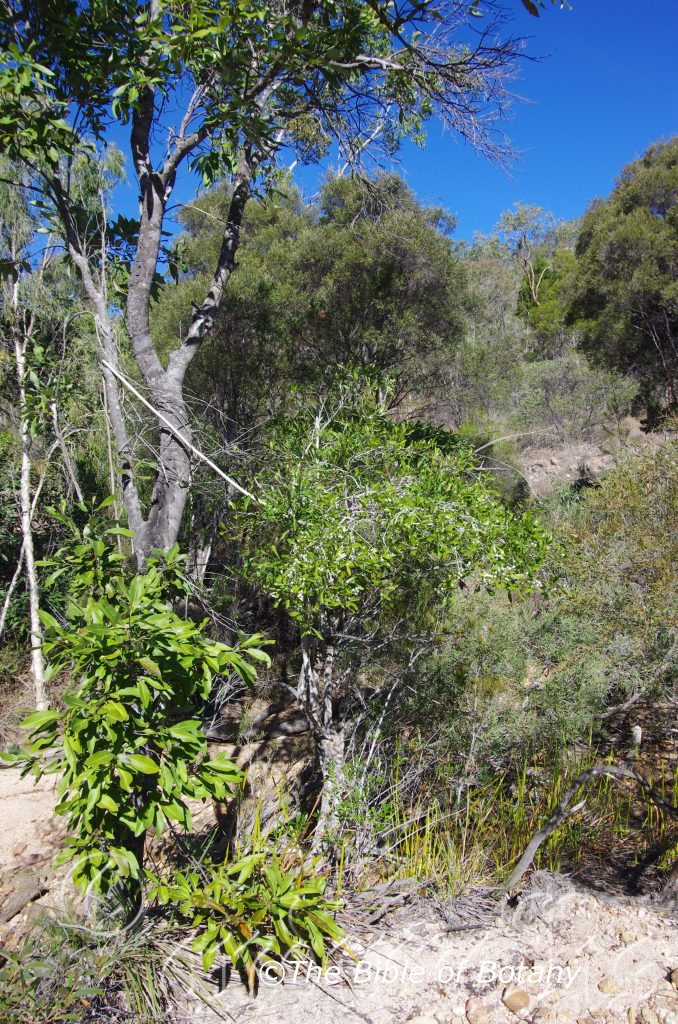
Paluma Range National Park Qld.

Paluma Range National Park Qld.

Paluma Range National Park Qld.

Paluma Range National Park Qld.

Paluma Range National Park Qld.
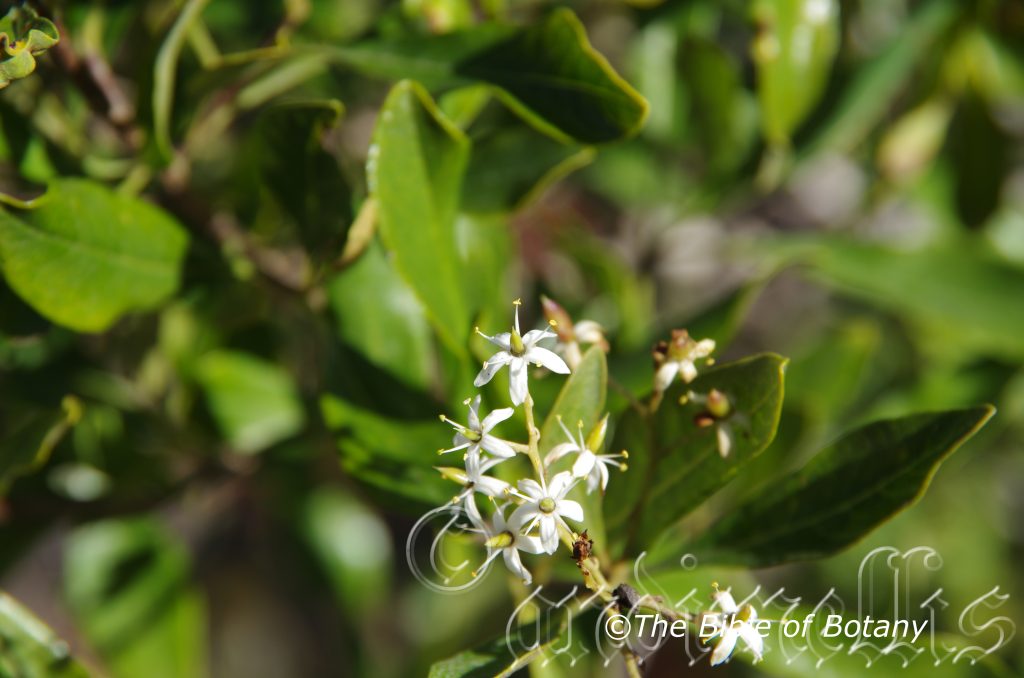
Paluma Range National Park Qld.
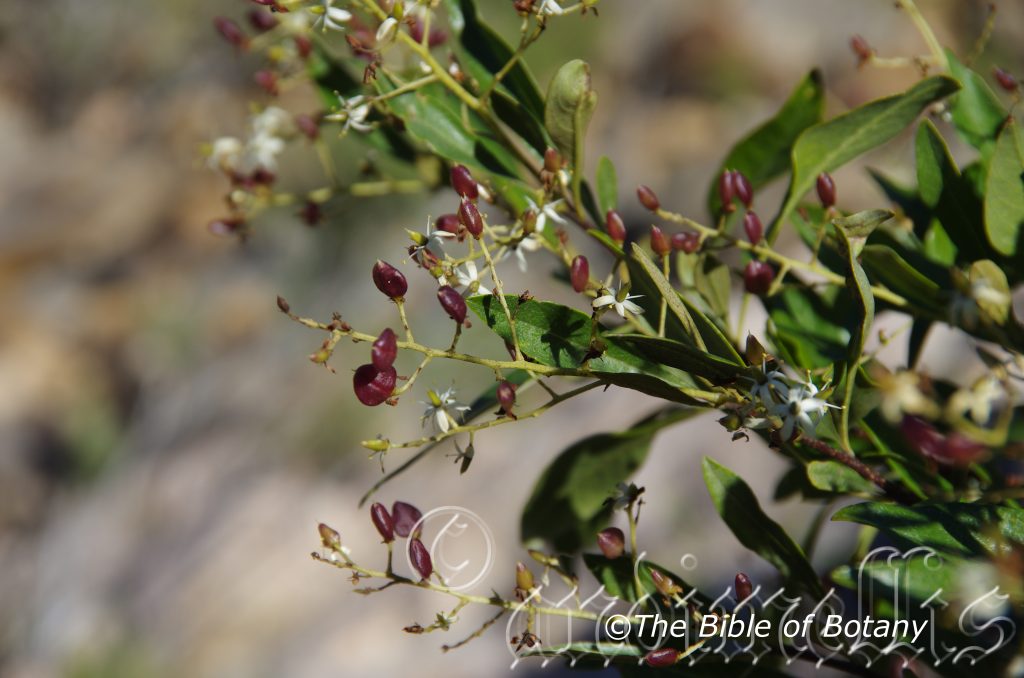
Paluma Range National Park Qld.
Bursaria tenuifolia
Classification:
Class: Asterides
Order: Apiales
Family: Pitosporaceae
Subfamily:
Genus: From Bursa which is Latin for a purse. It refers fruits, which resemble small purses.
Specie: From Tenuis, which is Latin for thin or narrow and Folia, which is Latin for foliage. It refers to plants, which have rather narrow leaves especially when compared to other species in the genus.
Variety:
Common Name: Sweet Bursaria, Native Box or Mock Orange.
Distribution:
Bursaria tenuifolia is found south from central Cape York Peninsular to Neilsons Creek in central coastal Queensland. It is found on and east of the Great Dividing Range to the coast. There are a few isolated populations at Terrace Plains and the Burdekin River catchment.
https://avh.ala.org.au/occurrences/search?taxa=Bursaria+tenuifolia#tab_mapView
Habitat Aspect Climate:
Aspect / Climate:
Bursaria tenuifolia prefers full sun to dappled shade. It grows in a variety of habitats associated with stream banks, in open scrubland and open woodland. The altitude ranges from 50 meters ASL to 1000 meters ASL.
The temperatures range from 5 degrees in July to 40 degrees in January.
The rainfall ranges from lows of 700mm to 3200mm average per annum.
Soil Requirements:
Bursaria tenuifolia prefers sandy creeks, loams to light gravelly clays. The soils are derived from decomposed sandstone and granite. The soils range from a PH of 5 to 7.5. It does not tolerate water logged soils though short periods of inundation are often associated with riparian scrubs. Saline soils to low saline soils are tolerated.
Height & Spread:
Wild Plants: 3m to 10m by 2m to 4m.
Characteristics:
Bursaria tenuifolia is a large shrub or small tree with a smooth grey, bumpy trunk. The branchlets are rusty-brown to maroon-brown and glabrous while the younger stems are yellow-green and moderately to densely covered in brown pubescent hairs.
The petioles are moderately to densely covered in brown pubescent hairs and measure 8mm to 16mm in length. The discolourous, narrow spatulate leaves are mid grass green on the upper lamina and much paler on the lower lamina and are at first, moderately to densely covered in brown pubescent hairs. They measure 35mm to 95mm in length by 9mm to 25mm in width. The bases are tapering while the apexes are accuminate-obtuse. The mid vein and lateral veins are prominent on the lower lamina and are not clearly visible on the upper lamina.
The pedicels and calyxes are glabrous to very sparsely covered in brown pubescent hairs and measure 5mm to 8mm in length. The white, narrow lanceolate petals measure 4mm to 6mm in length by 1.6mm to 1.8mm in width. The petals have an acute to mucronate apex. The white filaments measure 4mm to 4.5mm in length, while the pale yellow, conical anthers are basifixed and measure 0.6mm in diameter. The pale yellow-green style is cylindrical with a tapered stigma and measures 3.5mm to 4mm in length by 1mm in diameter.
The green capsules turn deep maroon when ripening before drying, splitting and turning brown. They are a flat capsule that measures 7mm to 8mm in length. The flat seeds have a very narrow membranous wing and measure 3mm to 4mm by 3mm to 5mm.
Wildlife:
Bursaria tenuifolia is unknown to the author however is probably similar to the souther Bursaria in that they attract native bees and butterflies when in flower.
Cultivation:
This is a magnificent shrub that should be more widely grown in garden situations. A medium size shrub that looks great in the garden as a flowering feature plant in the center of a raised bed. Placed along fence lines to give small fauna a continuous and safe corridor when travelling from one place to another, or in the center of a bush garden where the flowers again can be taken in.
This is one of those plants that adapts better to cultivation than in the wild. When cultivated the plants are smaller develop larger leaves and better flowering.
It can be pruned to ensure a small compact shrub or trained to grow into a small tree. One beautiful setting I did at Nana Glen was to place one plant in the center as a tree surrounded by 4 plants pruned as shrubs. These in return were surrounded by Callistemon pearsonii which gave a fantastic Christmas display.
It would also look great if intermingles with Melaleuca nesophila, Melaleuca pachyphylus, Melaleuca hypericifolia or other similar small plants with large red flowers.
I believe there is a spot in every garden for Bursaria whether it is for bird attraction, colour, butterflies and the scent from the flowers or the making of corridors. Only your imagination can limit its uses.
Aesculin is produced from the leaves. Aesculin is used for the detection of Enterococcus faecium and Strepococcus bovis bacteria on food and in the preparation of some serums. It is being grown commercially. Apriasts also welcome the plant for its mid-amber good quality coloured honey.
Propagation:
Seeds: Sow seeds of Bursaria tenuifolia in autumn in the north or in early spring in the south into a seed raising mix covering them with 5mm of mix. Sow the seeds sparingly. About 40mm of seeds will be fertile this is normal. Keep the seed tray in an airy space that receives plenty of sunlight as seedlings are susceptible to root rot fungi like Rhyzoctonia. Rhyzoctonia are a group of fungi that thrive in moist humid areas and attack the roots of plants especially those that do not like water logging or have a preference for drier conditions.
When the seedlings are 20mm to 40mm tall, prick them out and plant them into 50mm native tubes using a seed raising mix.
Fertilize using Seaweed, fish emulsion or organic chicken pellets soaked in water on an alternate basis. Fertilize every two months until the plants are established then annually in early September or March to maintain health, vitality and better flowering.
Once the seedlings reach 100mm they can be tipped pruned to encourage a shrub effect or remove any side shoots to establish a tree.
Once they reach 150mm to 200mm in height plant them out into their permanent position. Mass plantings can be achieved by planting them with 2 meter centers.
Further Comments from Readers:
“Hi reader, it seems you use The Bible of Botany a lot. That’s great as we have great pleasure in bringing it to you! It’s a little awkward for us to ask, but our first aim is to purchase land approximately 1,600 hectares to link several parcels of N.P. into one at The Pinnacles NSW Australia, but we need your help. We’re not salespeople. We’re amateur botanists who have dedicated over 30 years to saving the environment in a practical way. We depend on donations to reach our goal. If you donate just $5, the price of your coffee this Sunday, We can help to keep the planet alive in a real way and continue to bring you regular updates and features on Australian plants all in one Botanical Bible. Any support is greatly appreciated. Thank you.”
In the spirit of reconciliation we acknowledge the Bundjalung, Gumbaynggirr and Yaegl and all aboriginal nations throughout Australia and their connections to land, sea and community. We pay our respect to their Elders past, present and future for the pleasures we have gained.
Byblis filifolia
Classification:
Unranked: Eudicots
Unranked: Asterids
Order: Lamiales
Family: Byblidaceae
Genus: From Byblis, which is Ancient Greek for the beautiful mythical daughter of Miletus who was turned into a fountain. It refers to the deadly but glistening glandular secretions which resemble a fountain.
Specie: From Filum, which is Latin for a thread or a thin cord and Folium, which is Latin for foliage. It refers to a leaves, which are thread like.
Sub specie:
Common Name: Rainbow Sundew.
Distribution:
Byblis filifolia is from the southern Kimberley Range in north western, Western Australia across the top end to far north eastern Queensland and the Torres Strait Islands. The New Guinea specie/s of Byblis are under review so the northern plants may be renamed in the near future with the Australian species.
https://avh.ala.org.au/occurrences/search?taxa=Byblis+filifolia#tab_mapView
Habitat Aspect Climate:
Byblis filifolia prefer full sun to light dappled shade. It grows behind the frontal dunes in coastal wallums to peaty marshes further inland. It is found along creeks, wallums, and seepages, near water falls, drainage lines and other poorly drained areas. The plants are found in seasonal swamps which usually dry out in the warmer summer months. The altitude ranges from 10 meters ASL to 800 meters ASL.
The temperatures range from 15 degrees in July to 39 degrees in January.
The rainfall ranges from lows of 600mm to 3200mm average per annum.
Soil Requirements:
Byblis filifolia prefers course sands, fine sands to sandy loams with high peat content. The soils are derived from decomposed sandstones or accumulated beach sands. The soils range from a PH of 4.5 to 6.It is tolerant of water logging as all the terrains are poor water logged sands or sands with a high water table. Saline soils are not tolerated at all.
Height & Spread:
Wild Plants:150mm to 600mm by 50mm to 100mm.
Characteristics:
Byblis filifolia grows as a small weakly branched annual swamp plant. Rarely do you find a single plant or a couple together as they colonize large areas.
Byblis filifolia pale green, leaves are not divided. The acicular linear leaves measure 200mm to 300mm in length by 4mm to 6.5mm in width. The bases are sessile. The leaves are covered in special stiff glandular hairs which produce a small droplet of a viscous sweet liquid which will entrap unsuspecting insects. Once trapped the leaves do not curl around the insect but exude a solution which slowly dissolves the insect’s body fluids.
Byblis filifolia are born singularly from the leaf nodes. The flowers are a deep violet, purple, pink or rarely white. The pedicels are 90mm to 120mm in length supporting buds which open skyward and away from the sticky leaves. The 5 triangular linear calyxes are deeply divided and measure 25mm to 35mm in length by 4mm to 6mm in width near the base. The calyx is covered in short pale green to purple hairs which exude a sweet sticky viscous fluid. The 5 symmetrical oval petals are 20mm to 30mm in length by 20mm to 30mm in width. The contorted petals are reflexed towards the apexes and have a number of darker lines radiating from the base. The petals form a strong and vivid pattern using ultra violet photography. The stamens and style are asymmetrical curving in the opposite directions from the ovary. The style eventually lies with gravity pointing towards the ground from the ovary while the stamens curve over the ovary on one side in a formation advantageous for insect pollination. The 3 stamens have thick white 1mm to 2mm long filaments with yellow anthers. The basifixed anthers measure 6mm to 8mm in length by 3mm to 4mm in width near the base.
The stamens of Byblis filifolia do not open by dehiscing but instead have conical openings near the apexes. Pollen is released by a method known as buzz pollination. With these methods bees and some wasp’s vibrations or buzzing causes’ pollen to shake loose. Large quantities of pollen loosely become attached to the bee or wasp. Further buzzing will cause the pollen to fall towards the ground and stick to the stigma. This method while very affective finds large quantities of pollen being dropped around its own stigma which can lead to self-pollination.
The two lobed stigma bends slightly upwards to take advantage of pollen collection and is covered in short stiff hairs. The style is 8mm to 10mm in length.
Byblis filifolia flowers further depict strong insect activity as shown in the ultra violet photograph which shows very strong patterns leading to the nectaries. The stamens are designed for buzz pollination, meaning the pollen will only be released when a specific bee or pollen fly approaches the nectary to obtain a feed. The flowers appear from late September to January.
Byblis filifolia fruits are ellipsoidal capsules. They measure 8mm to 12mm in length by 6mm to 8mm in width. The style is persistent on the fruit. The green capsules turn grey before ripening and dehiscing. There are 3 to 20 black orbicular, strongly rugose seeds in each capsule. The strongly ribbed seeds measure 2mm by 4mm in diameter.
Wildlife:
Byblis filifolia supports it nitrogen deficient soils by trapping small flying insects on their sticky leaves, which in turn dissolves the insect’s body. Constant struggling by the insects causes the sticky fluid to increase and cover the insects.
Cultivation:
Byblis filifolia is an annual or perennial plant that is best treated as an annual. It is an unusual addition for the keen gardener who is looking for something different yet still easy to grow provided a wet bog area can be maintained. It is ideal in settings near ponds in courtyards or the rockery. It needs strong sun light to very light shade to grow at its best and warm to hot summers. It is best suited to outdoor gardens where temperatures do not drop below 8 degrees.
To make a bog garden, extend the pond or to make an artificial marshland on sand all you need is a sheet of black plastic and some rocks. Dig the soil out and lay two or three layers of black plastic on the shallow depression. Fill the plastic to the original level with sand and peat mixed at a ratio of 4 to 1. Make sure the sand is free of salt. If it isn’t wash the sand several times to make sure the salt is completely removed. Fill the depression with water until it is within 50mm of the surface. Place the rocks around the perimeter so that it looks natural. Make a depression with your arm in the corner on the low side so excess water can drain away when it rains.
I like to use some of the small Juncus species or dwarf forms of Lomandra as a base and back drops when growing carnivorous plants as most are small and they look more natural when planted around or amongst grass like foliage. Some of the wallum Hibbertia species, like Hibbertia obtusifolia or Hibbertia vestita will give a strong contrast when in flower. The yellows, pinks and violets contrast strongly with each other. Another feature can be to use small to medium rocks as barriers and shelves to separate the plants.
Remove the plants and carefully plant them into their wallum. Place the plants in a higher position towards the back if possible as it is a lot taller than most of the other carnivorous plants. Place it so that it can dry out over the winter or in an area that can be easily drained. Do not fertilize.
The best thing about the carnivorous plants is you can grow a large number in a small area. It often reaches its full potential in just 1 year and flower in their first year. If the water level is kept topped up it is really very easy to grow and maintain. Byblis filifolia is one of the easiest to grow and most spectacular when mass planted. There are a number of hybrids and cultivars on the market to add even more interest and diversity in colour of the flowers.
Propagation:
Seeds: Byblis filifolia seeds require some treatment before sowing. Use only fresh seed from the current years flowering as seed appears to have short viability. Make a small cold fire with grass. 300mm by 500 in diameter is adequate. Place the seeds in a small brown paper bag and light the fire. Collect the ash and seeds and sow fresh seeds into a seed raising mix and cover with 1mm of fine sand. Place the tray in a saucer of water in a warm place. When the seedlings are 10mm to 20mm tall, prick them out and plant them into their permanent position in the bog garden or directly into 175mm squat pots.
Fertilize using Seaweed or fish emulsion two weeks before planting out. This is all the plants will need for a life time of happiness. Mass plantings can be achieved with spacing of 250mm centers.
Further Comments from Readers:
“Hi reader, it seems you use The Bible of Botany a lot. That’s great as we have great pleasure in bringing it to you! It’s a little awkward for us to ask, but our first aim is to purchase land approximately 1,600 hectares to link several parcels of N.P. into one at The Pinnacles NSW Australia, but we need your help. We’re not salespeople. We’re amateur botanists who have dedicated over 30 years to saving the environment in a practical way. We depend on donations to reach our goal. If you donate just $5, the price of your coffee this Sunday, We can help to keep the planet alive in a real way and continue to bring you regular updates and features on Australian plants all in one Botanical Bible. Any support is greatly appreciated. Thank you.”
In the spirit of reconciliation we acknowledge the Bundjalung, Gumbaynggirr and Yaegl and all aboriginal nations throughout Australia and their connections to land, sea and community. We pay our respect to their Elders past, present and future for the pleasures we have gained.
Byblis gigantea
Classification:
Unranked: Eudicots
Unranked: Asterids
Order: Lamiales
Family: Byblidaceae
Subfamily:
Genus: From Byblis, which is Ancient Greek for the beautiful mythical daughter of Miletus who was turned into a fountain. It refers to the deadly but glistening glandular secretions which resemble a fountain.
Specie: From Giganteus, which is Latin for enormous or very large. It refers to plant, structures or organs, which is exceptionally large compared to other species in the genus.
Sub specie:
Common Name: Giant Rainbow Sundew.
Distribution:
Byblis gigantea is found south from southern Western Australia in two disjunct populations one on the Swan River Plains, and the other north of Perth.
https://avh.ala.org.au/occurrences/search?taxa=Byblis+gigantea#tab_mapView
Habitat Aspect Climate:
Byblis gigantea prefer full sun to light dappled shade and will be found growing from sea level behind the frontal dunes in coastal wallums to peaty marshes further inland. It is found along creeks, wallums, seepages, near waterfalls and other poorly drained areas. The plants are found in seasonal swamps which usually dry out in the warmer summer months. The altitude ranges from sea level to 70 meters ASL.
The temperatures range from minus 2 degrees in July to 36 degrees in January.
The rainfall ranges from lows of 600mm to 1200mm average per annum.
Soil Requirements:
Byblis gigantea prefers coarse sands, fine sands to sandy loams. The soils are usually derived from accumulated peaty beach sands. The soils pH ranges from 4.5pH to 5.5pH. It tolerates water logged soils especially those with high water tables. Only non-saline soils are tolerated.
Height & Spread:
Wild Plants: 250mm to 450mm by 50mm to 120mm.
Characteristics:
Byblis gigantea grows as a small weakly branched perennial swamp plant. Rarely do you find a single plant or a couple together as they colonize large areas.
Byblis gigantea pale green tinged red or purple, leaves are not divided. The acicular linear leaves measure 200mm to 300mm in length by 4mm to 6.5mm in width. The base is sessile with or without a pulvinus while the apex is spathulate and measures up to 8mm in diameter at the widest point. The leaves are densely covered in glandular hairs which produce a small droplet of a viscous sweet liquid which will attract and entrap unsuspecting insects. Once trapped the leaves do not curl around the insect but exude a solution which slowly dissolves the insect’s body fluids.
Byblis gigantea inflorescences are born singularly from the leaf nodes. The flowers are a deep violet, purple, pink or rarely white. The pedicels are 90mm to 120mm in length supporting buds which open skyward and away from the sticky leaves. The 5 triangular linear calyxes are deeply divided and measure 25mm to 35mm in length by 4mm to 6mm in width near the base. The calyx is covered in short pale green to purple hairs which exude a sweet sticky viscous fluid. The 5 symmetrical oval petals are 20mm to 30mm in length by 20mm to 30mm in width. The contorted petals are reflexed towards the apexes and have a number of darker lines radiating from the base. The petals form a strong and vivid pattern using ultra violet photography. The stamens and style are asymmetrical curving in the opposite directions from the ovary. The style eventually lies with gravity pointing towards the ground from the ovary while the stamens curve over the ovary on one side in a formation advantageous for insect pollination. The 3 stamens have thick white 1mm to 2mm long filaments with yellow anthers. The basifixed anthers measure 6mm to 8mm in length by 3mm to 4mm in width near the base.
The stamens of Byblis giganteado not open by dehiscing but instead have conical openings near the apexes. Pollen is released by a method known as buzz pollination. With these methods bees and some wasp’s vibrations or buzzing causes’ pollen to shake loose. Large quantities of pollen loosely become attached to the bee or wasp. Further buzzing will cause the pollen to fall towards the ground and stick to the stigma. This method while very affective finds large quantities of pollen being dropped around its own stigma which can lead to self-pollination.
The two lobed stigma bends slightly upwards to take advantage of pollen collection and is covered in short stiff hairs. The style is 8mm to 10mm in length.
Byblis gigantea flowers further depict strong insect activity as shown in the ultra violet photograph which shows very strong patterns leading to the nectaries. The stamens are designed for buzz pollination, meaning the pollen will only be released when a specific bee or pollen fly approaches the nectary to obtain a feed. The flowers appear from late September to January.
Byblis gigantea fruits are ellipsoidal capsules. They measure 8mm to 12mm in length by 6mm to 8mm in width. The style is persistent on the fruit. The green capsules turn grey before ripening and dehiscing. There are 3 to 20 black orbicular, strongly rugose seeds in each capsule. The strongly ribbed seeds measure 2mm by 4mm in diameter.
Wildlife:
Byblis gigantea supports it nitrogen deficient soils by trapping small flying insects on their sticky leaves, which in turn dissolves the insect’s body. Constant struggling by the insects causes the sticky fluid to increase and cover the insects.
Cultivation:
Byblis gigantea is an annual or perennial plant that is best treated as an annual. It is an unusual addition to the keen gardener who is looking for something different yet still easy to grow provided a wet area can be maintained at all times. It is ideal in settings near ponds in courtyards or the rockery. It needs strong sun light to very light shade to grow at their best.
To make a bog garden, extend the pond or to make an artificial marshland on sand all you need is a sheet of black plastic and some rocks. Dig the soil out and lay two or three layers of black plastic on the shallow depression. Fill the plastic to the original level with sand and peat mixed at a ratio of 4 to 1. Make sure the sand is free of salt. If it isn’t wash the sand several times to make sure the salt is completely removed. Fill the depression with water until it is within 50mm of the surface. Place the rocks around the perimeter so that it looks natural. Make a depression with your arm in the corner on the low side so excess water can drain away when it rains.
I like to use some of the small Juncus species or dwarf forms of Lomandra as a base and back drops when growing carnivorous plants as most are small and they look more natural when planted around or amongst grass like foliage. Some of the wallum Hibertia species like Hibertia linearis will give a strong contrast when in flower. The yellows and pinks and violets contrast strongly with each other. Another feature can be made by using small to medium rocks as barriers and shelves between the plants.
Remove the plants and carefully plant them into their wallum. Place the plants in a higher position towards the back if possible as they are a lot taller than most of the other carnivorous plants. Place them so that they can dry out over the summer or in an area that can be easily drained. Do not fertilize.
The best thing about the carnivorous plants is you can grow a large number in a small area. It often reach its full potential in just 1 year and flower in their first year. If the water level is kept topped up they are really very easy to grow and maintain. Byblis gigantea is one of the easiest to grow and most spectacular when mass planted. There are a number of hybrids and cultivars on the market to add even more interest and diversity in colour of the flowers.
Propagation:
Seeds: Byblis gigantea seeds require some treatment before sowing. Use only fresh seed from the current years flowering as seed appears to have short viability. Make a small cold fire with grass. 300mm by 500 in diameter is adequate. Place the seeds in a small brown paper bag and light the fire. Collect the ash and seeds and sow fresh seeds into a seed raising mix and cover with 1mm of fine sand. Place the tray in a saucer of water in a warm place. When the seedlings are 10mm to 20mm tall, prick them out and plant them into their permanent position in the bog garden or directly into 175mm squat pots.
Fertilize using Seaweed or fish emulsion two weeks before planting out. This is all the plants will need for a life time of happiness. Mass plantings can be achieved with planting the plants at 300mm centers.
Further Comments from Readers:
“Hi reader, it seems you use The Bible of Botany a lot. That’s great as we have great pleasure in bringing it to you! It’s a little awkward for us to ask, but our first aim is to purchase land approximately 1,600 hectares to link several parcels of N.P. into one at The Pinnacles NSW Australia, but we need your help. We’re not salespeople. We’re amateur botanists who have dedicated over 30 years to saving the environment in a practical way. We depend on donations to reach our goal. If you donate just $5, the price of your coffee this Sunday, We can help to keep the planet alive in a real way and continue to bring you regular updates and features on Australian plants all in one Botanical Bible. Any support is greatly appreciated. Thank you.”
In the spirit of reconciliation we acknowledge the Bundjalung, Gumbaynggirr and Yaegl and all aboriginal nations throughout Australia and their connections to land, sea and community. We pay our respect to their Elders past, present and future for the pleasures we have gained.